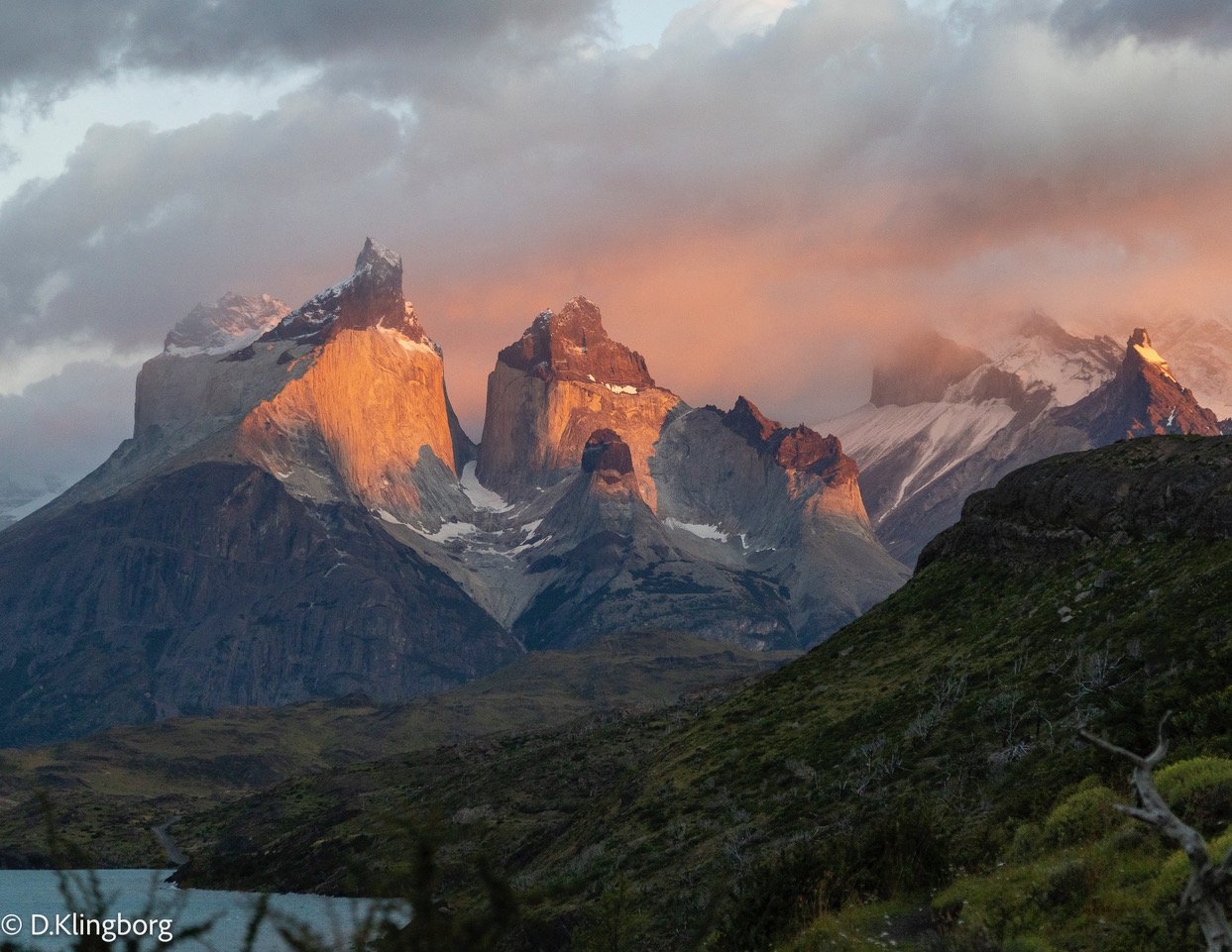

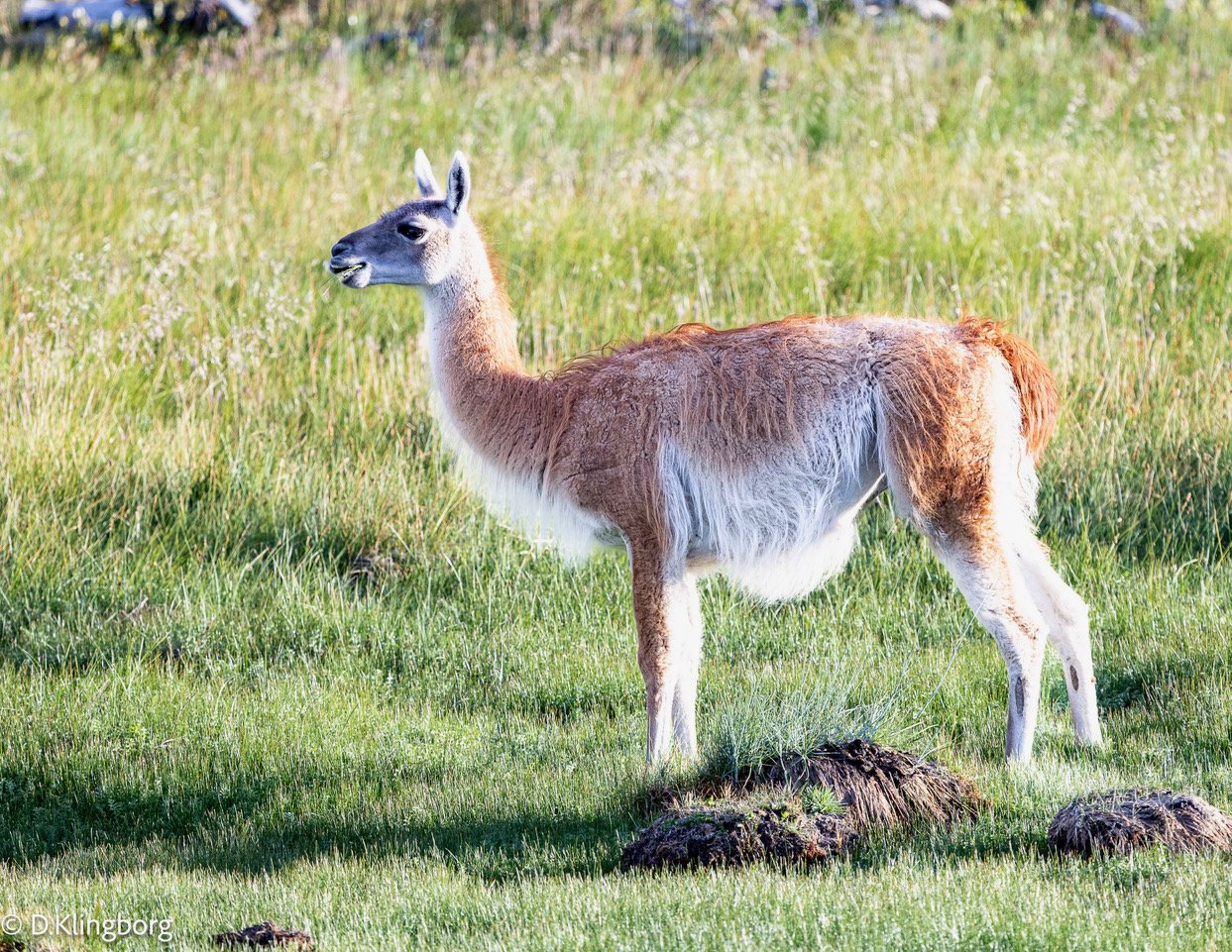
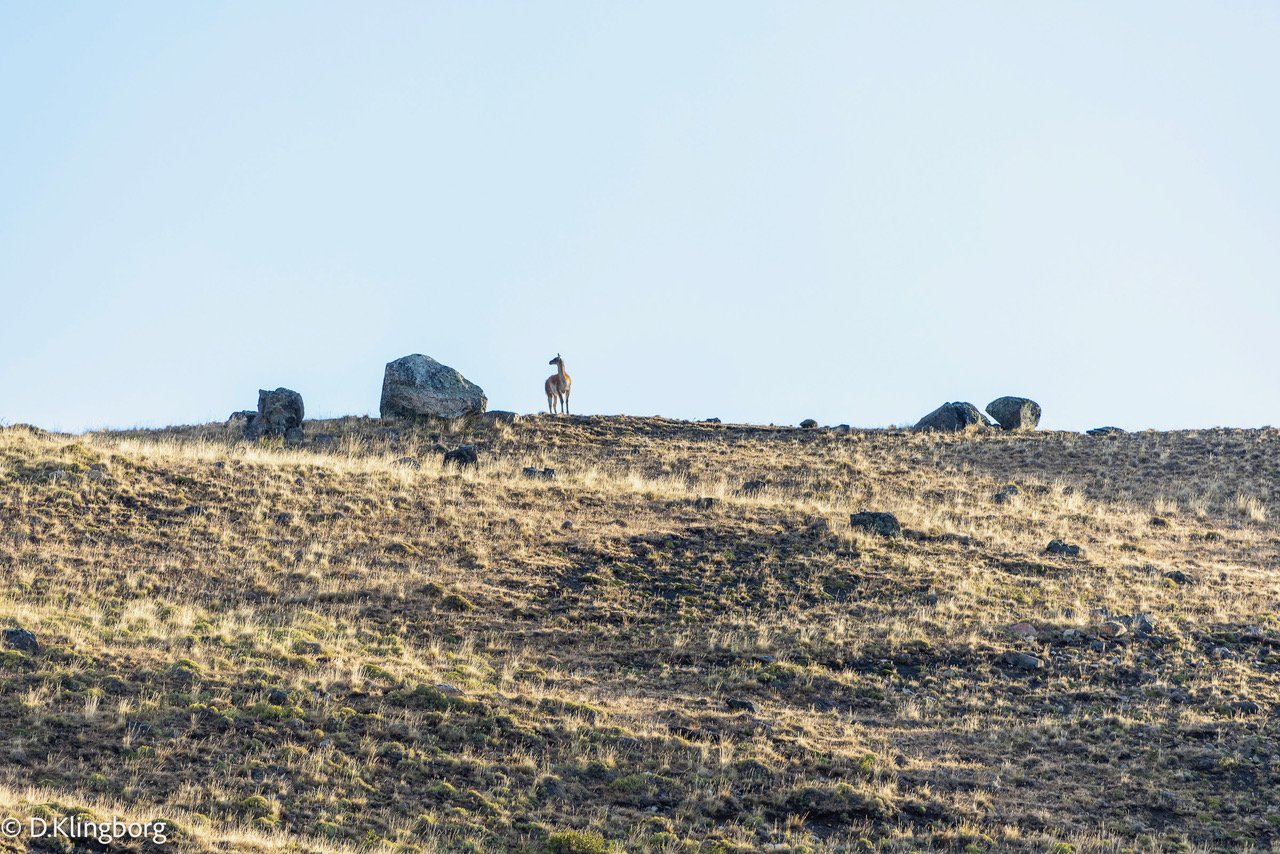
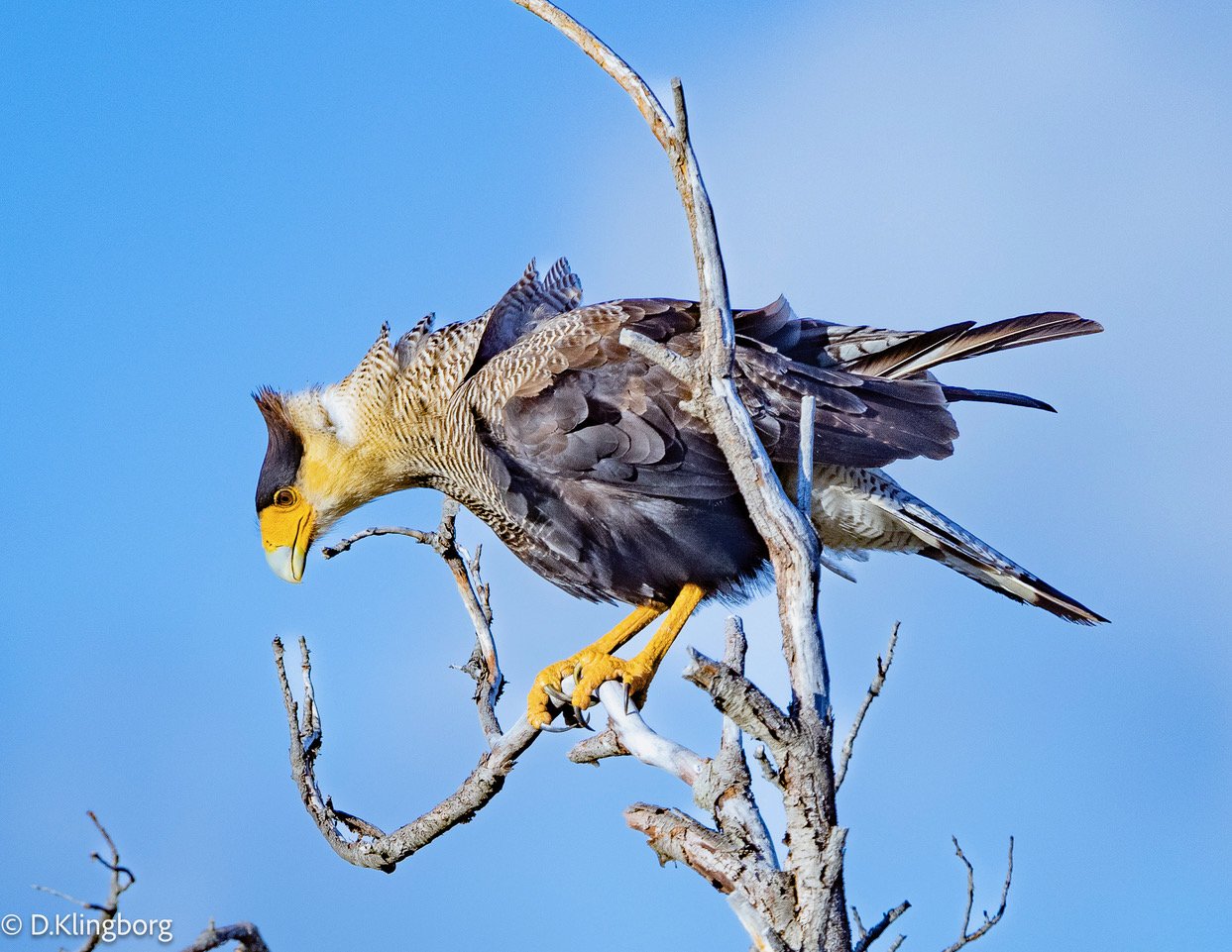
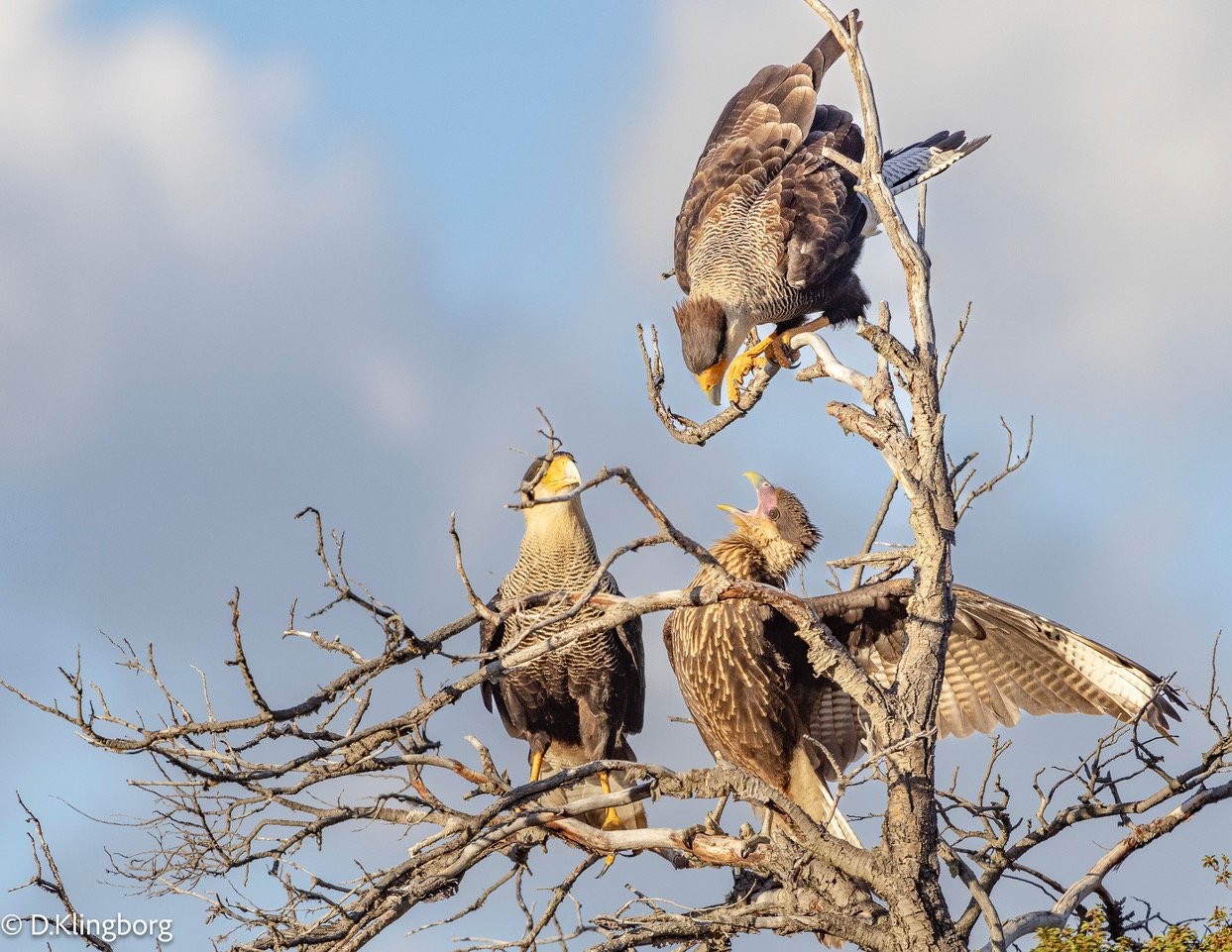
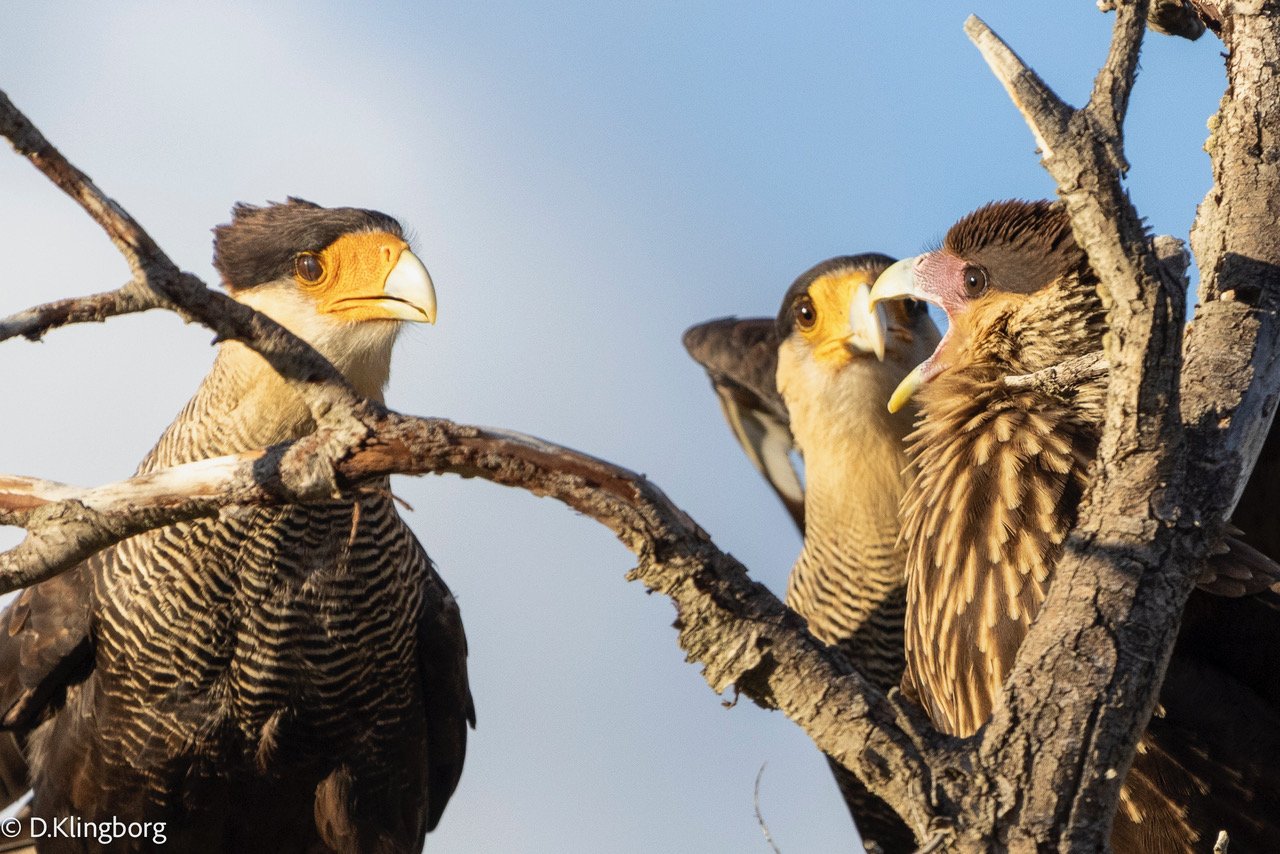
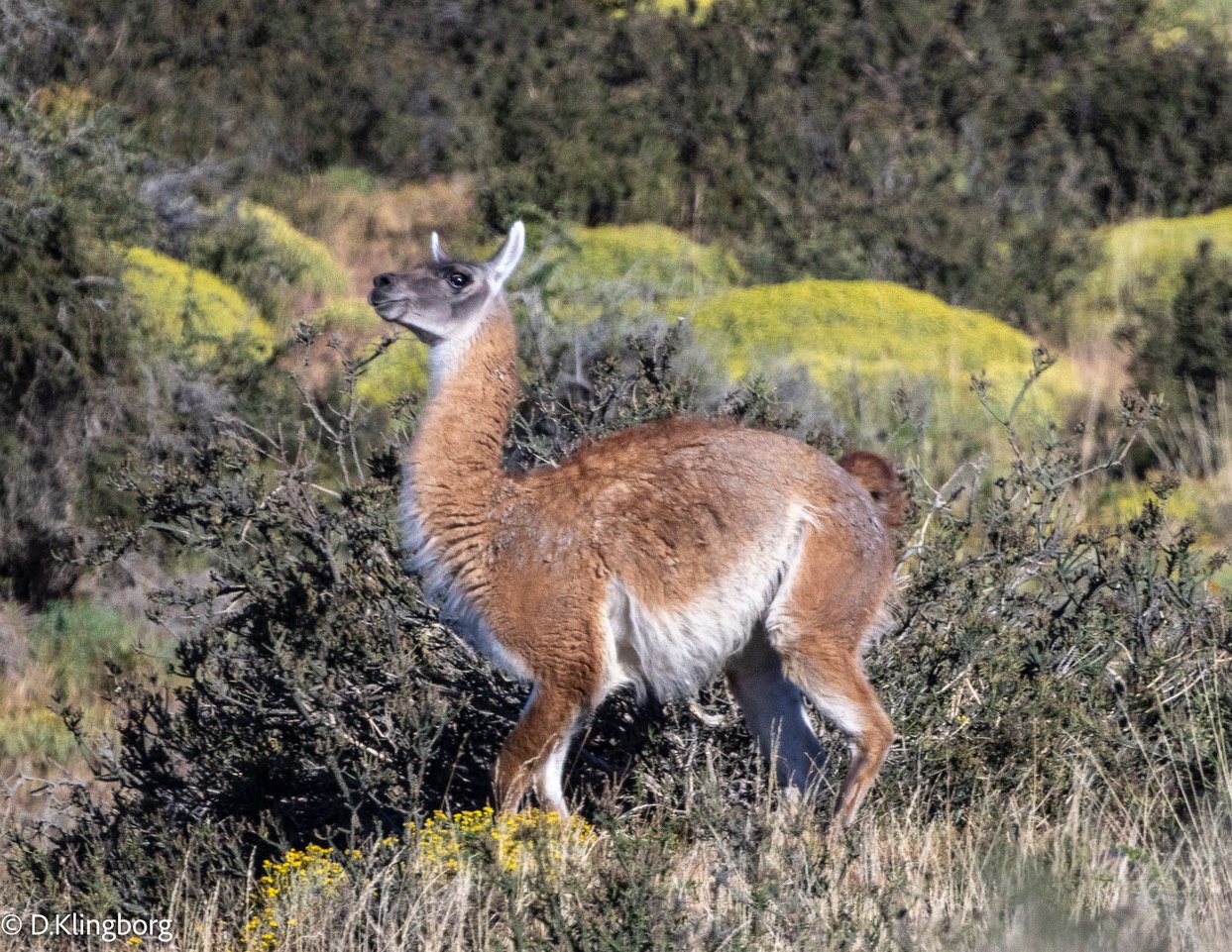
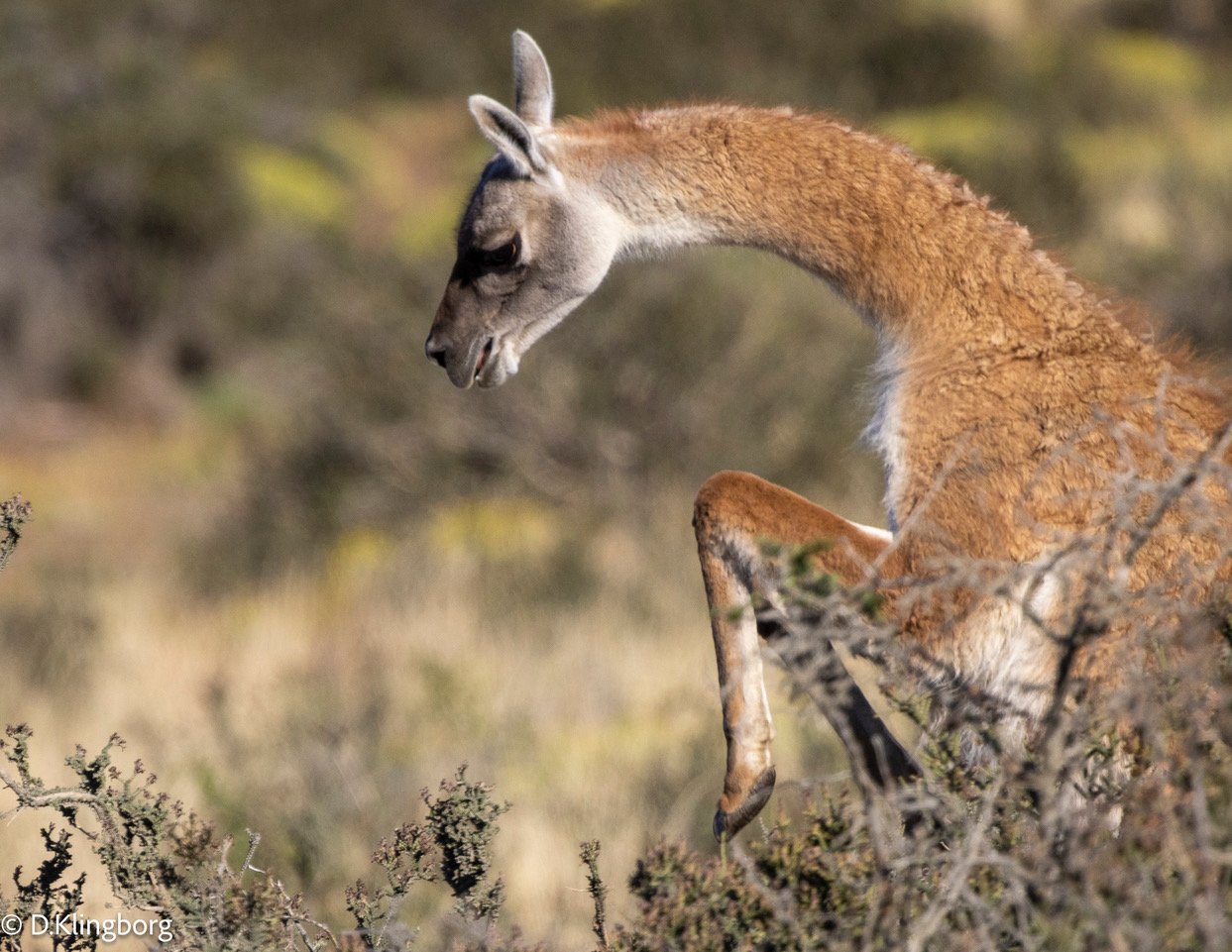
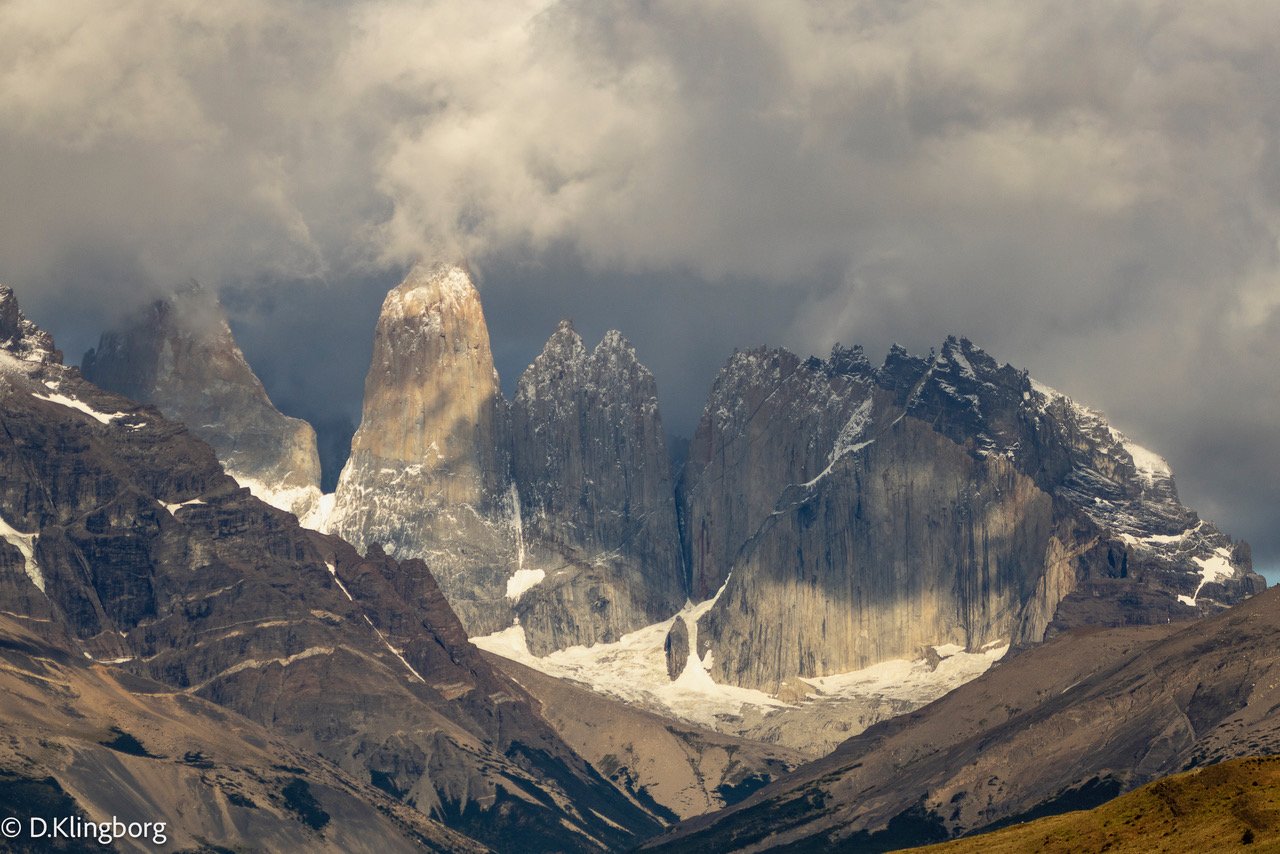
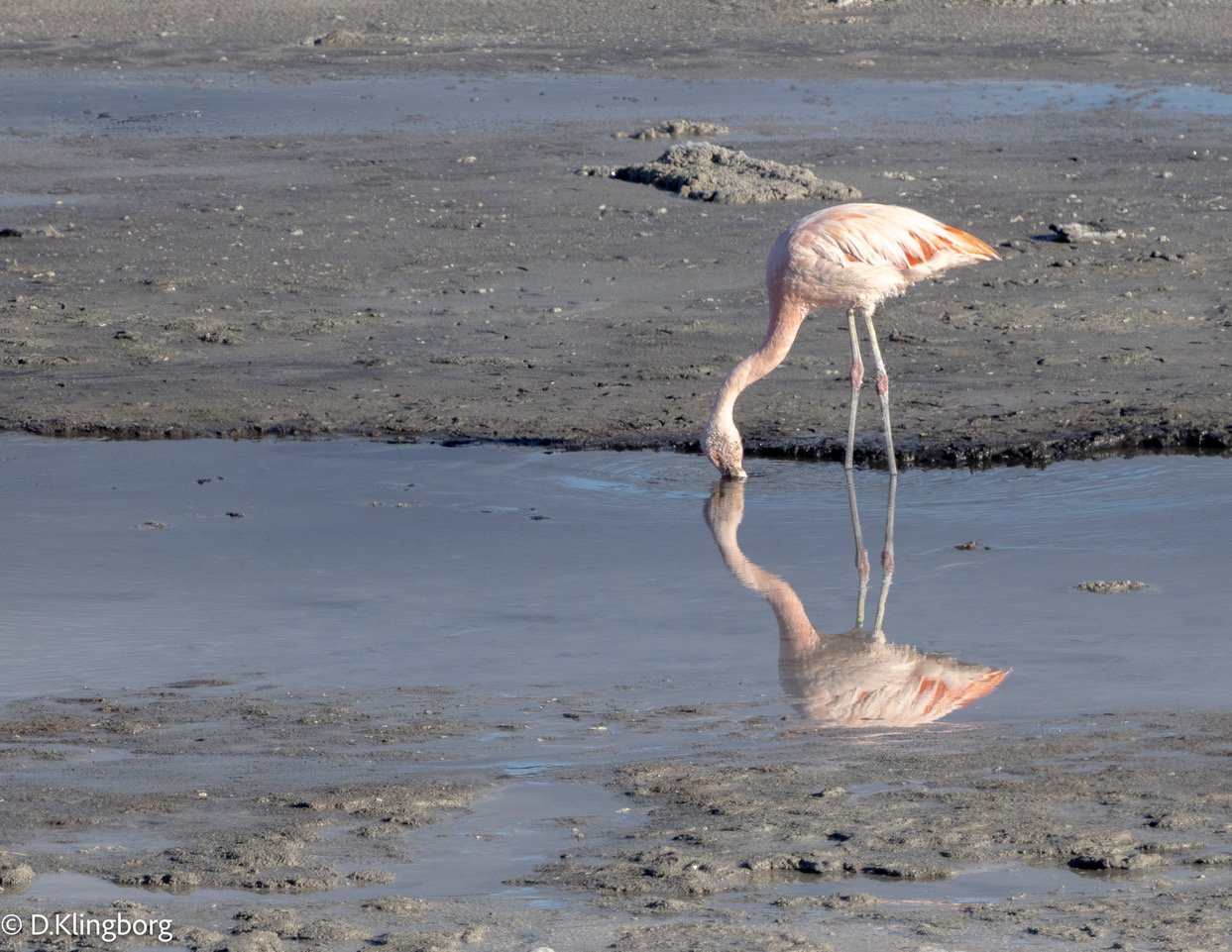
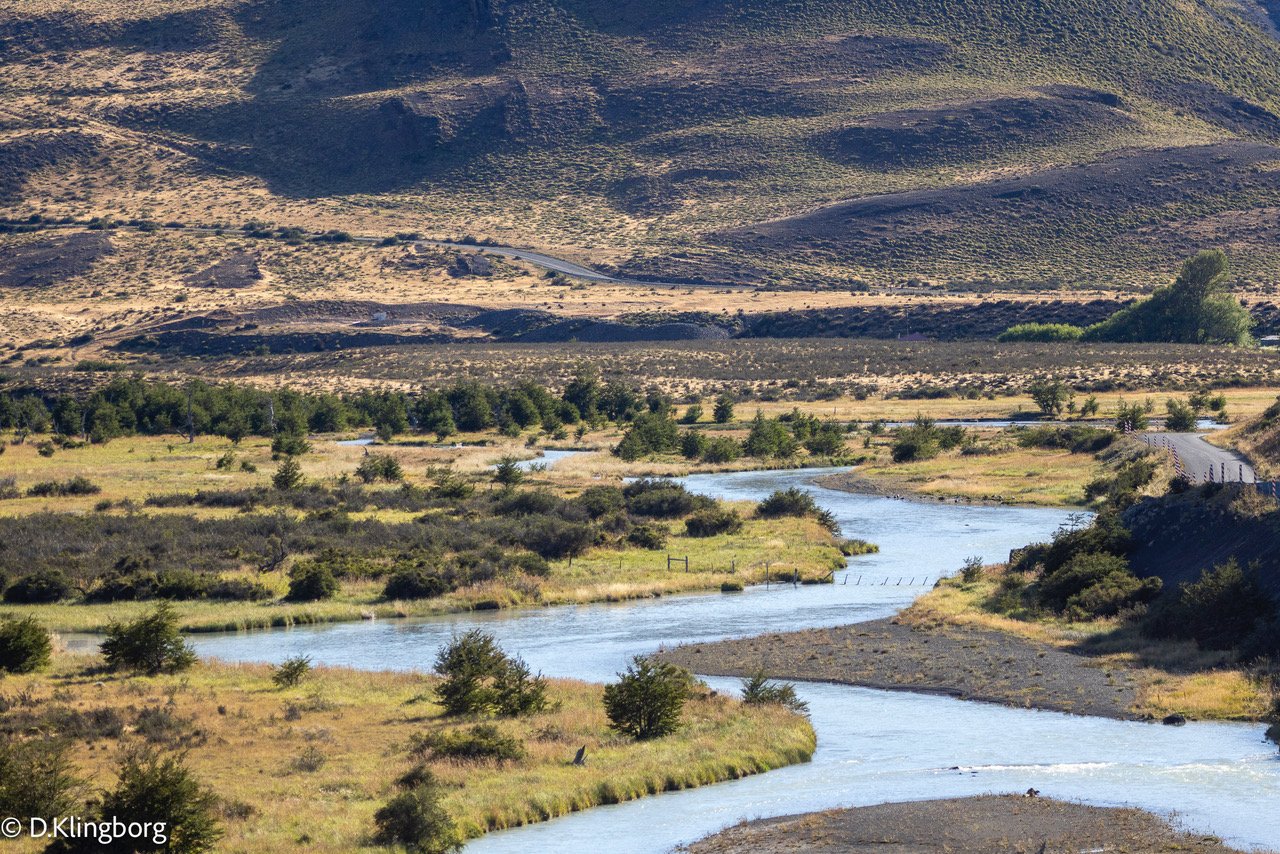
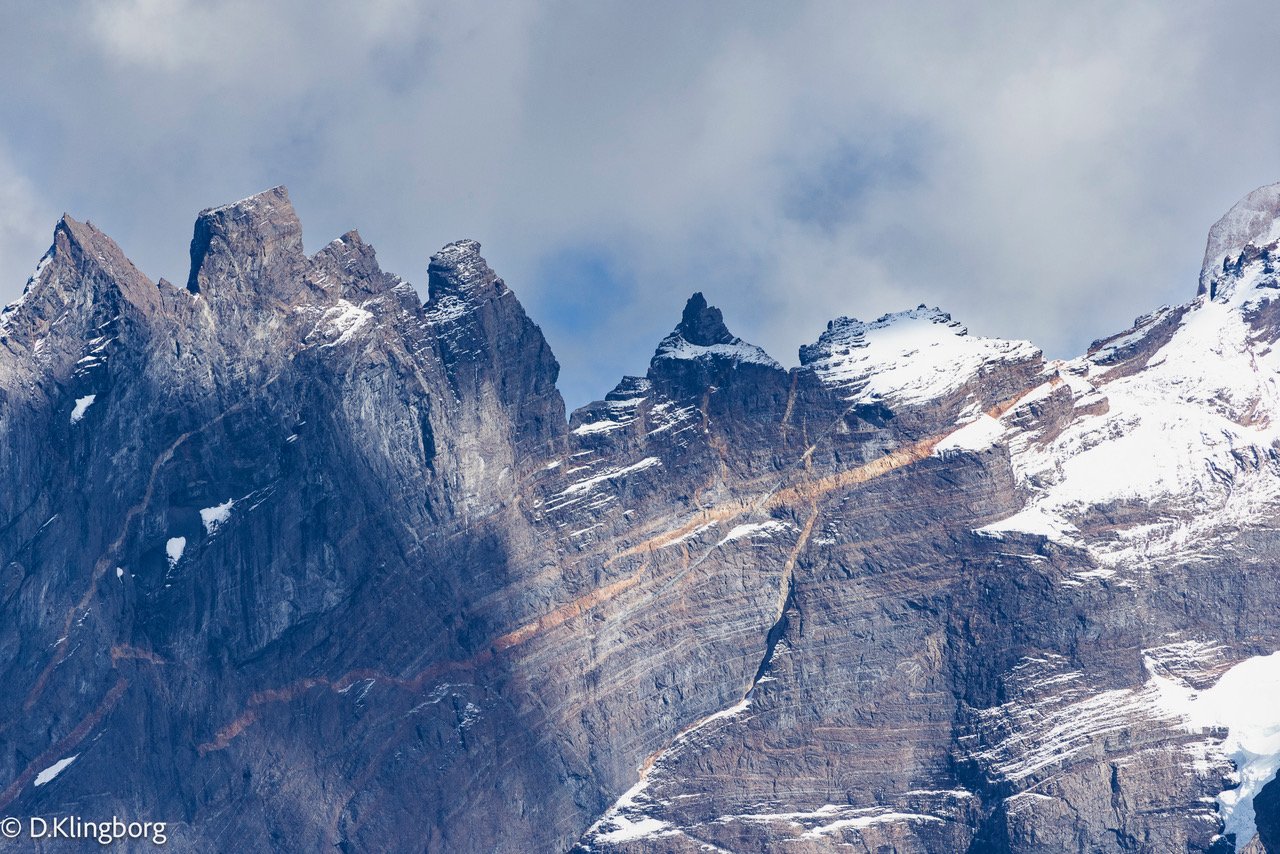
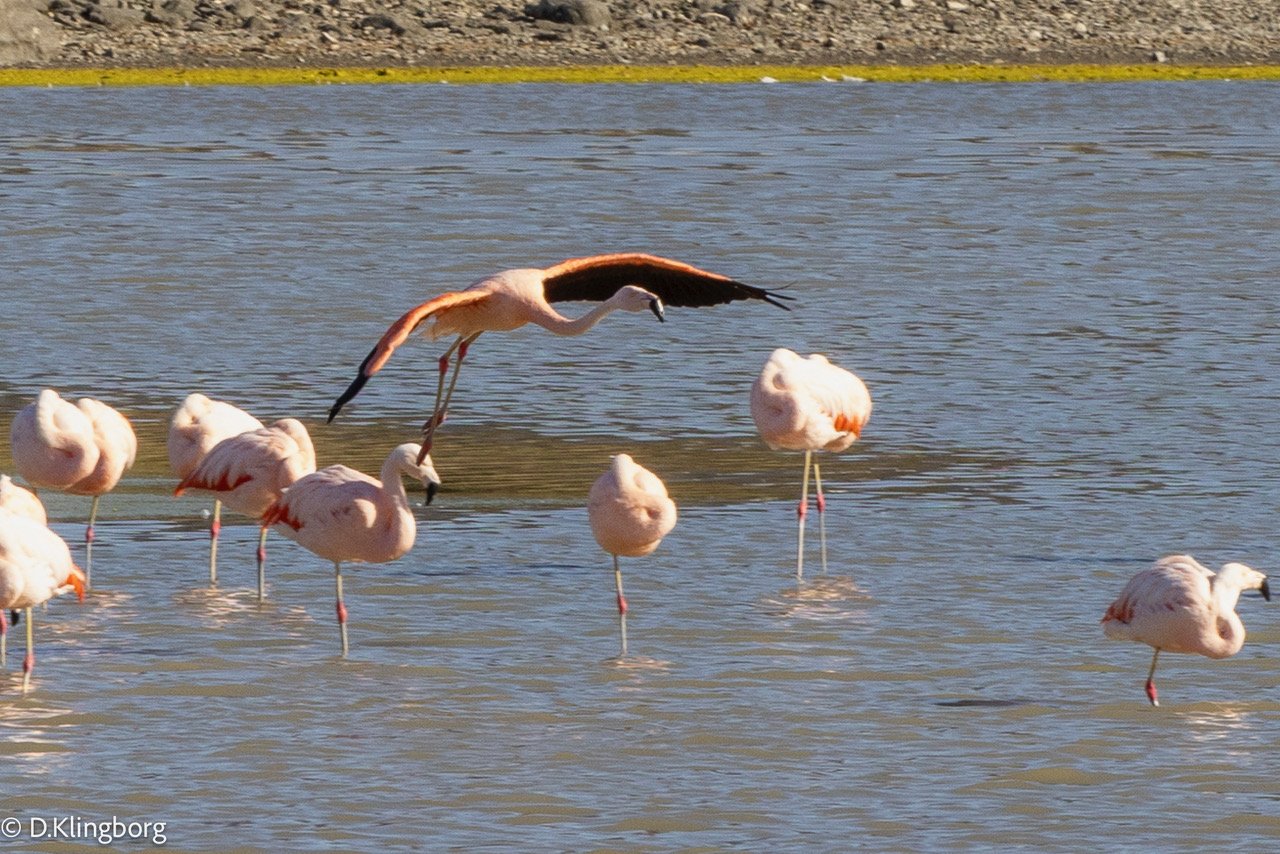
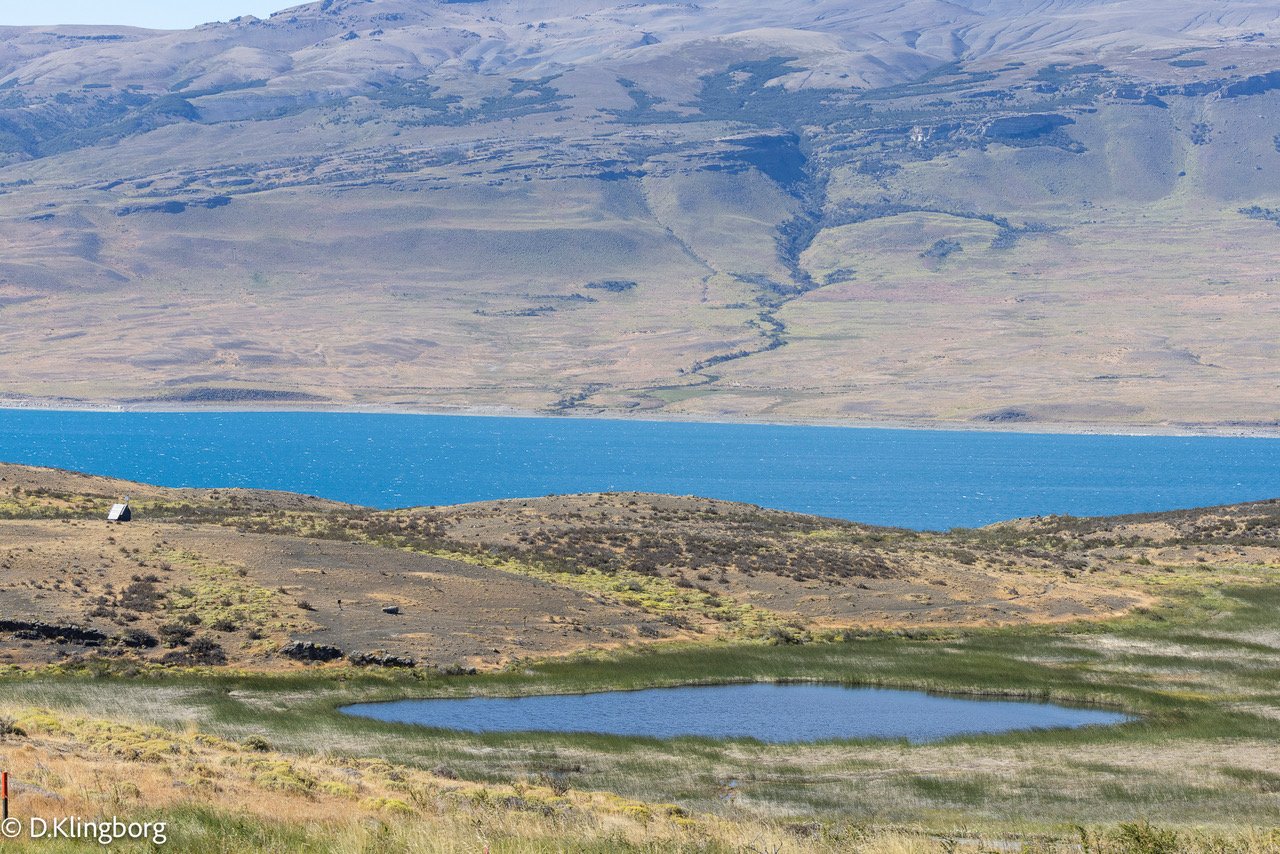
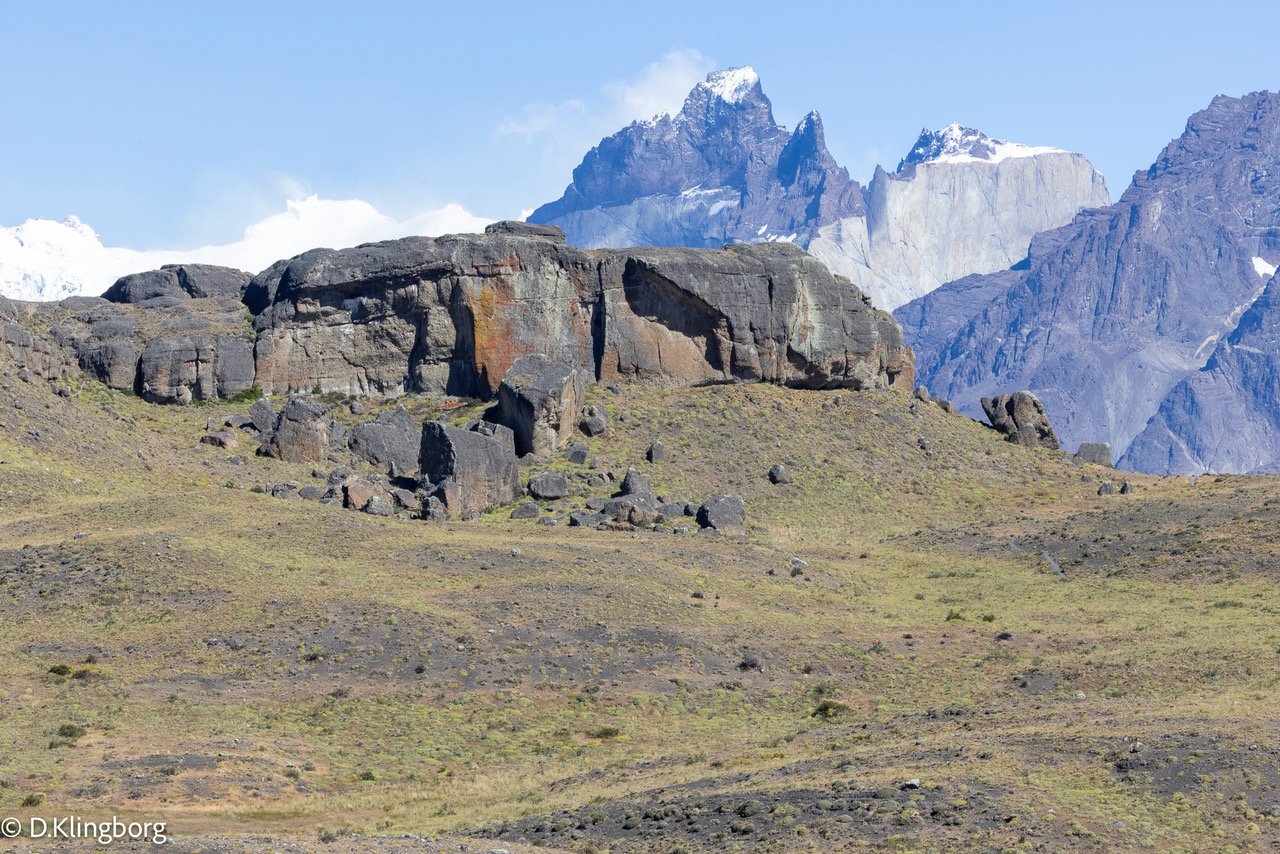
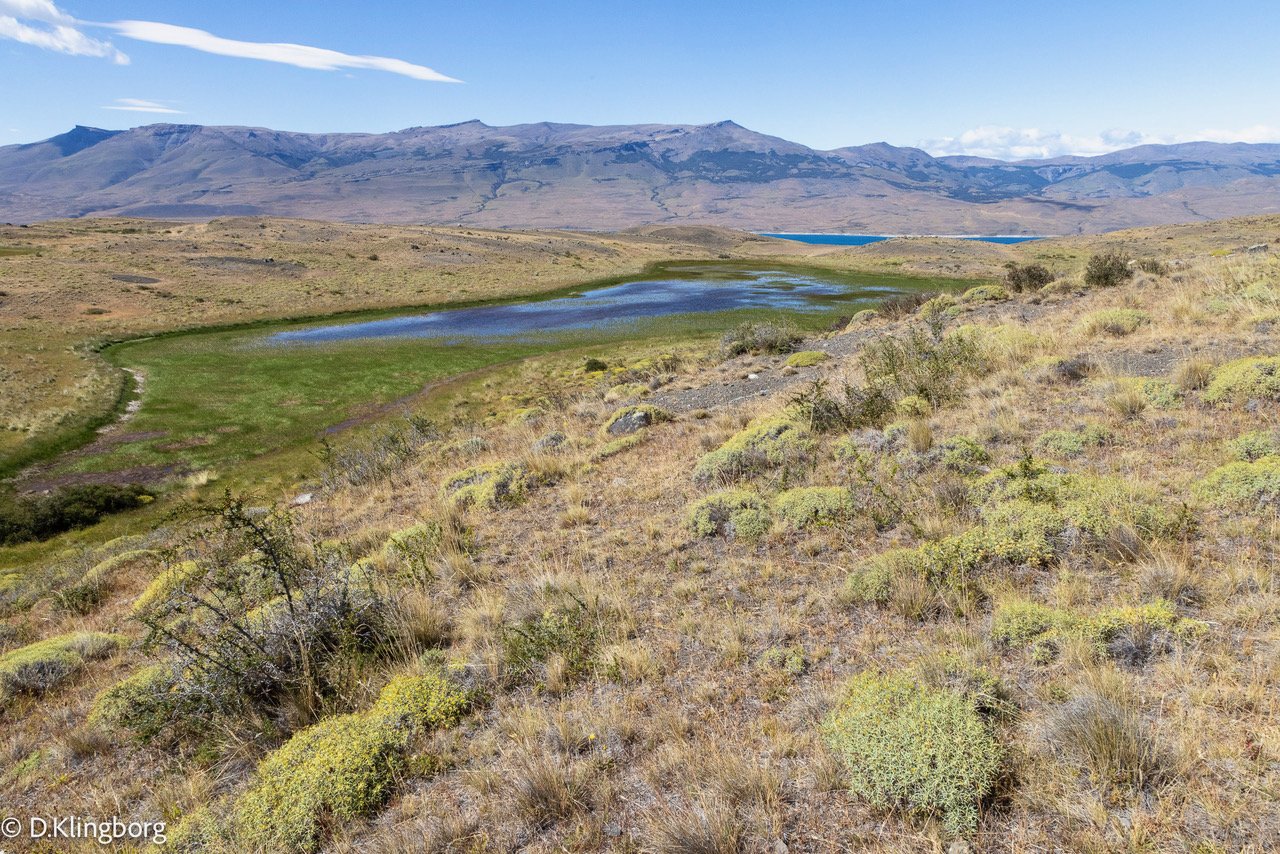
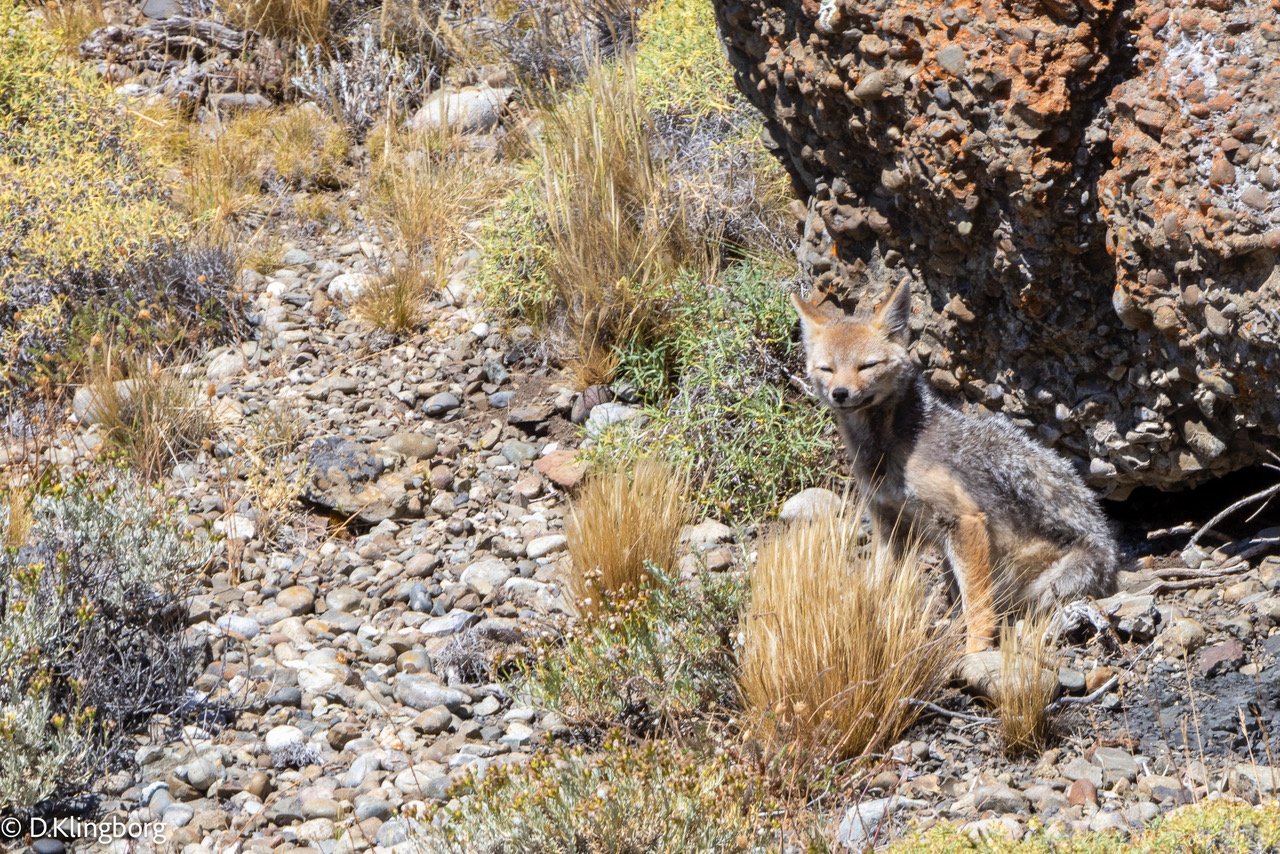
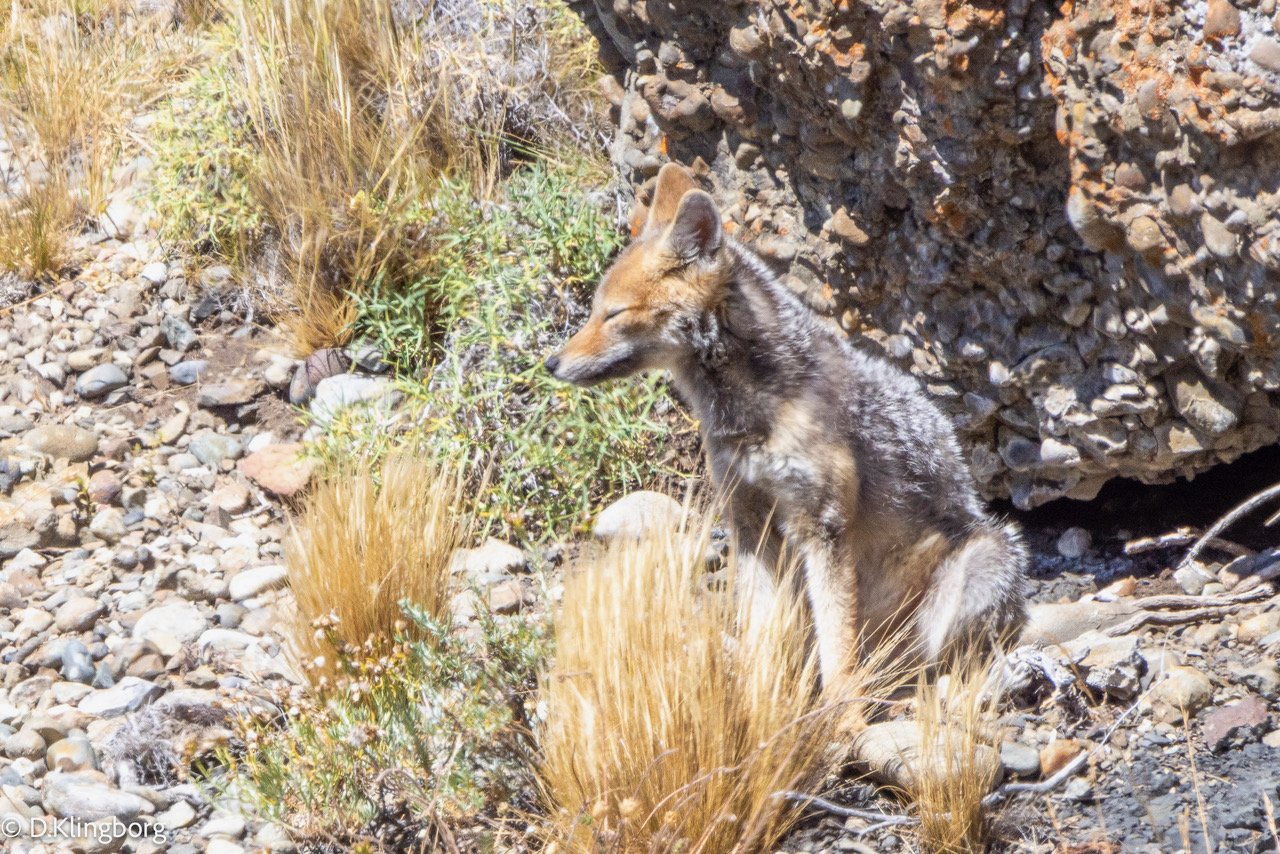
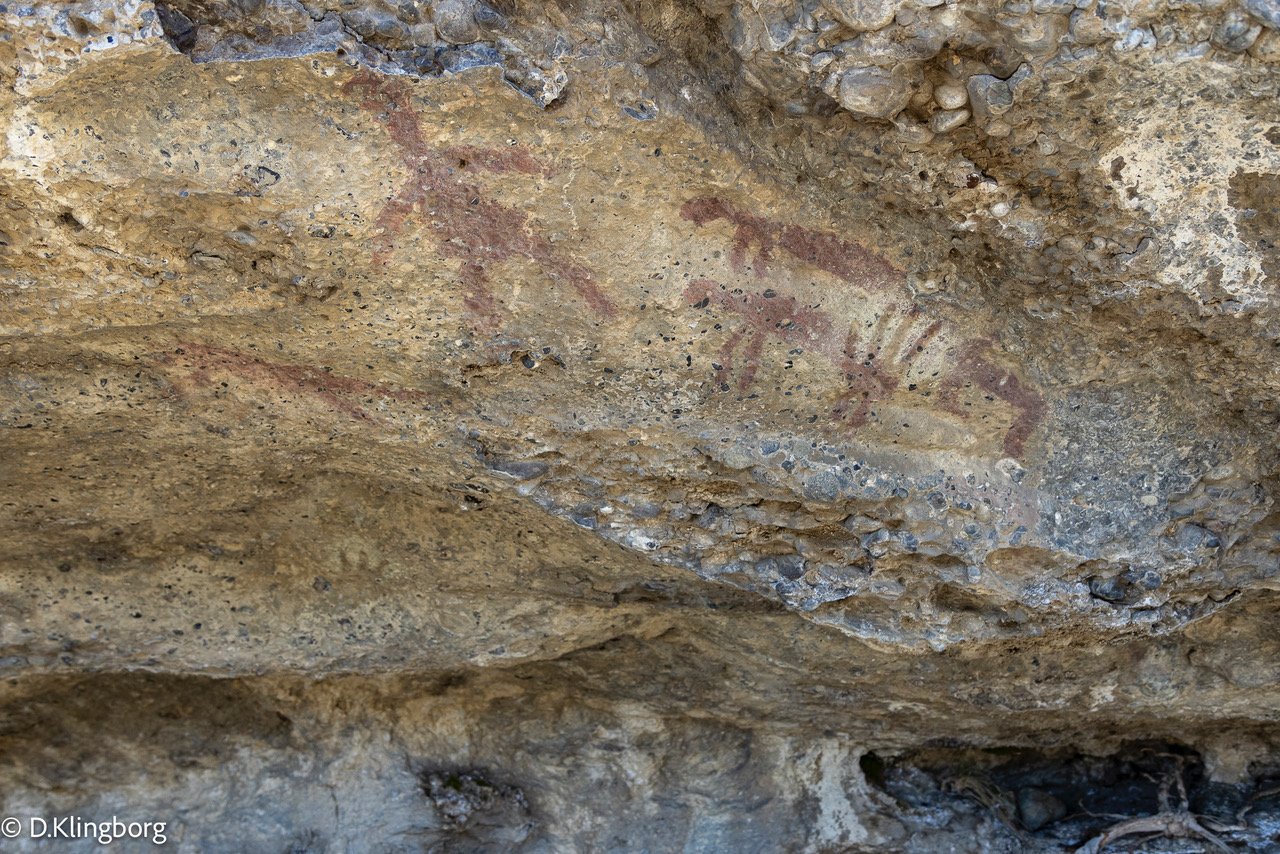

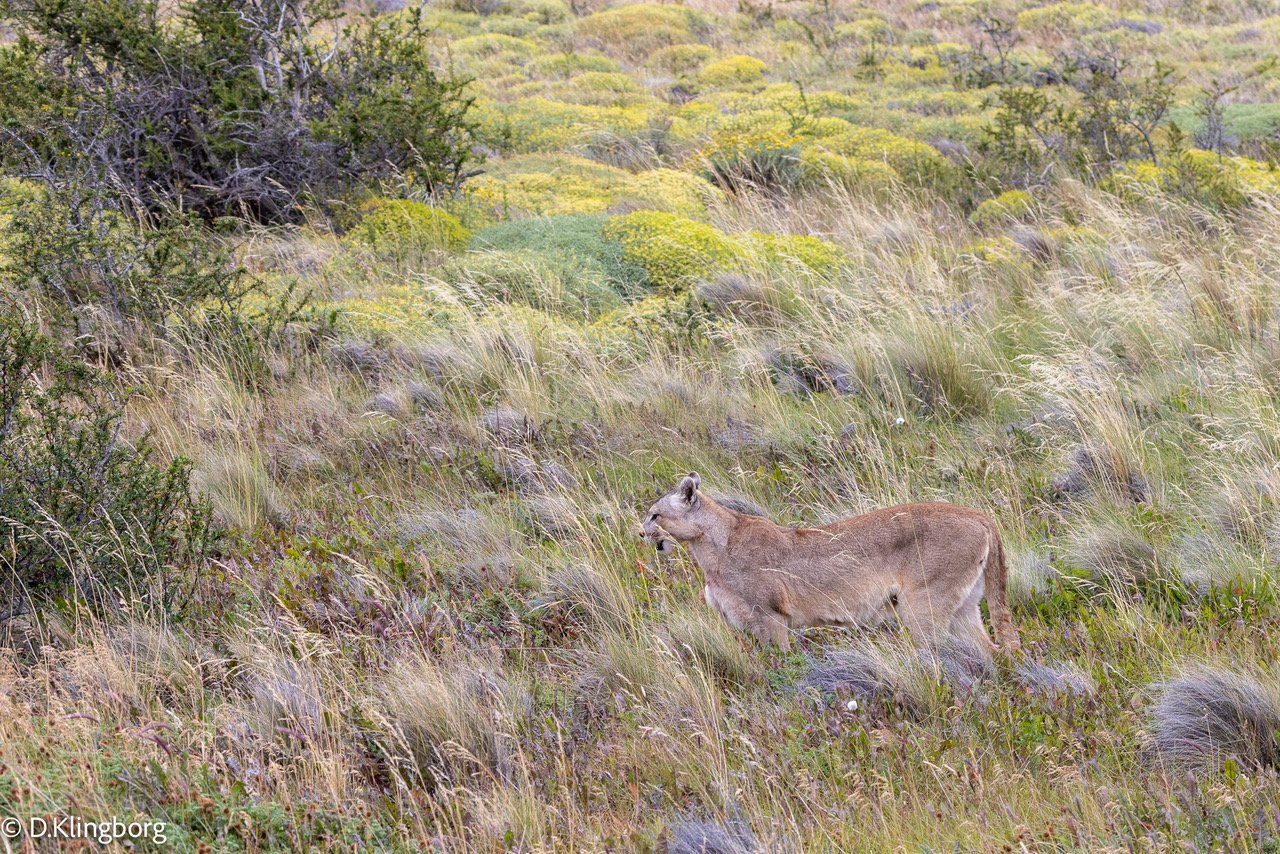

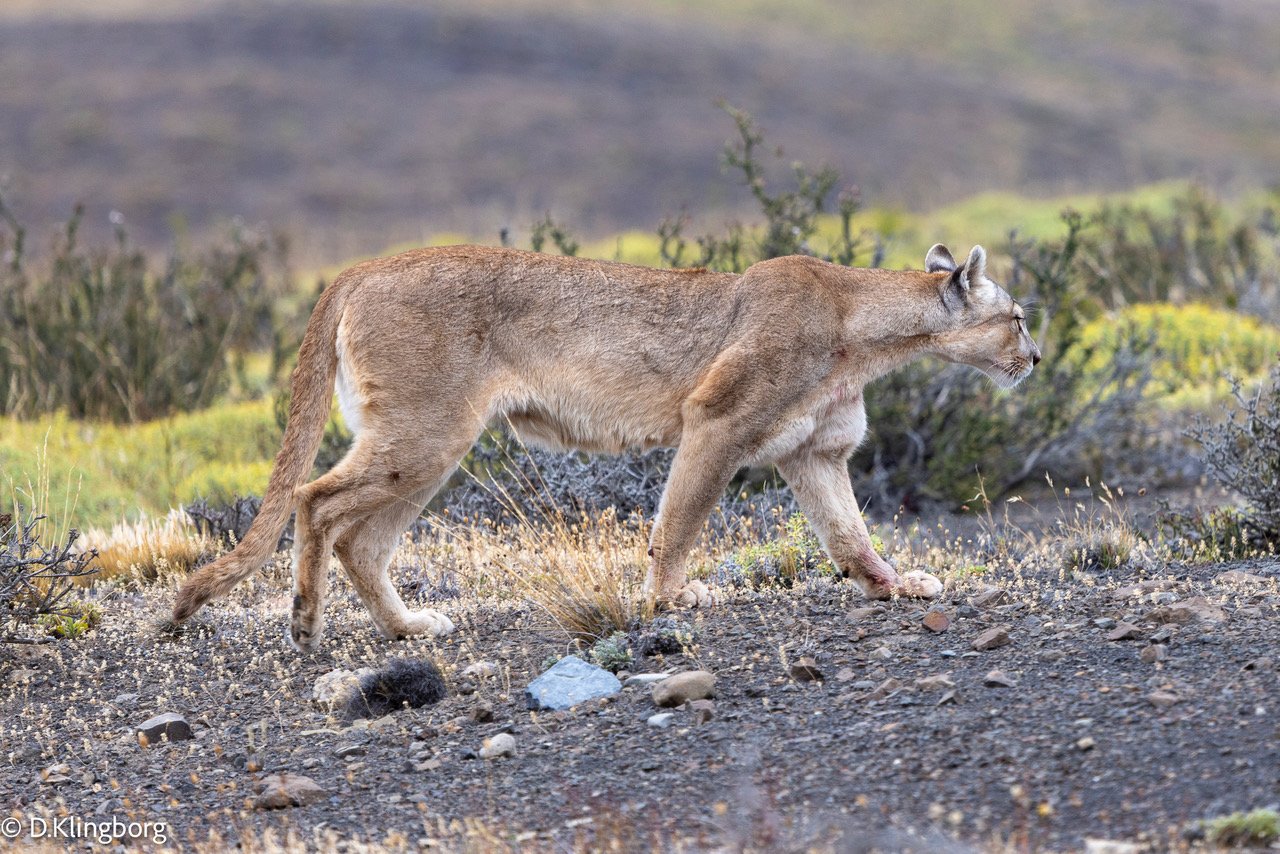
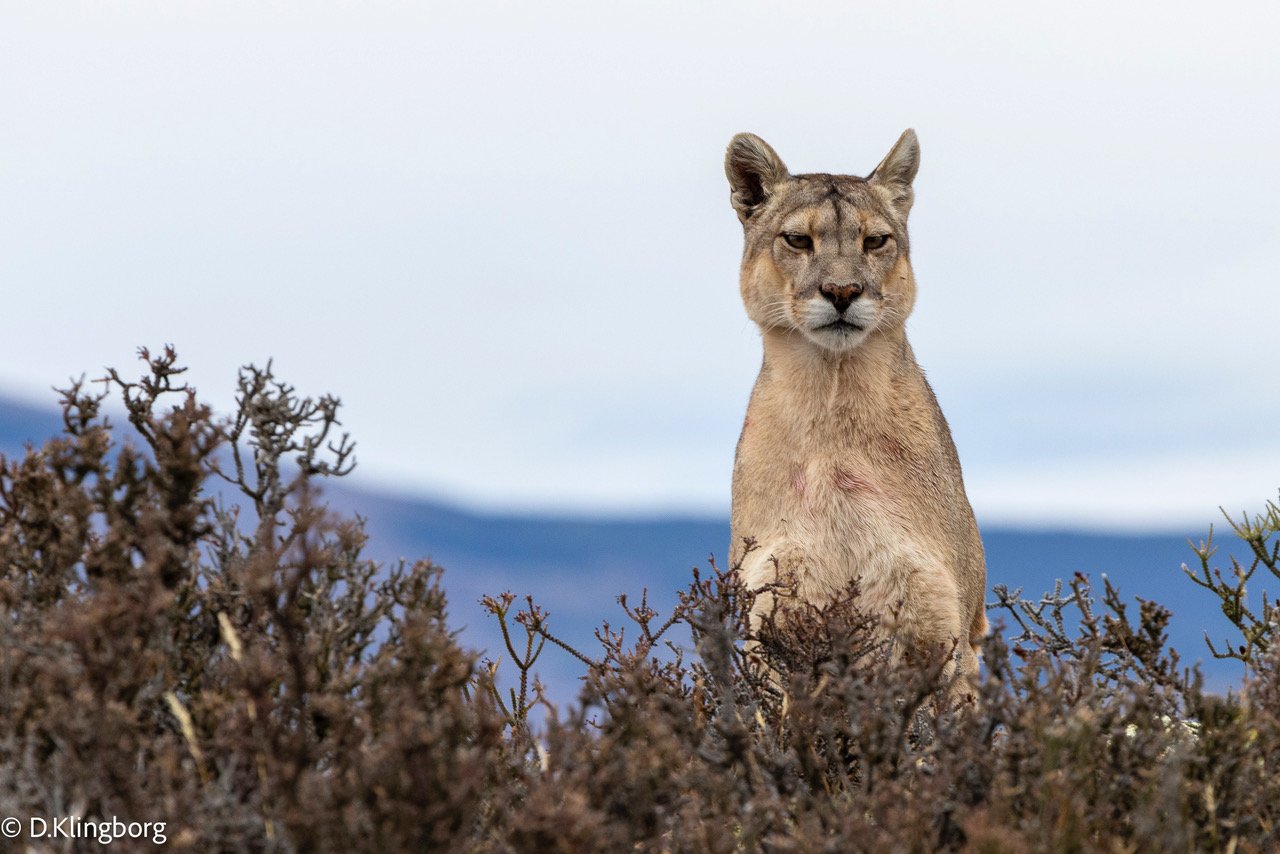

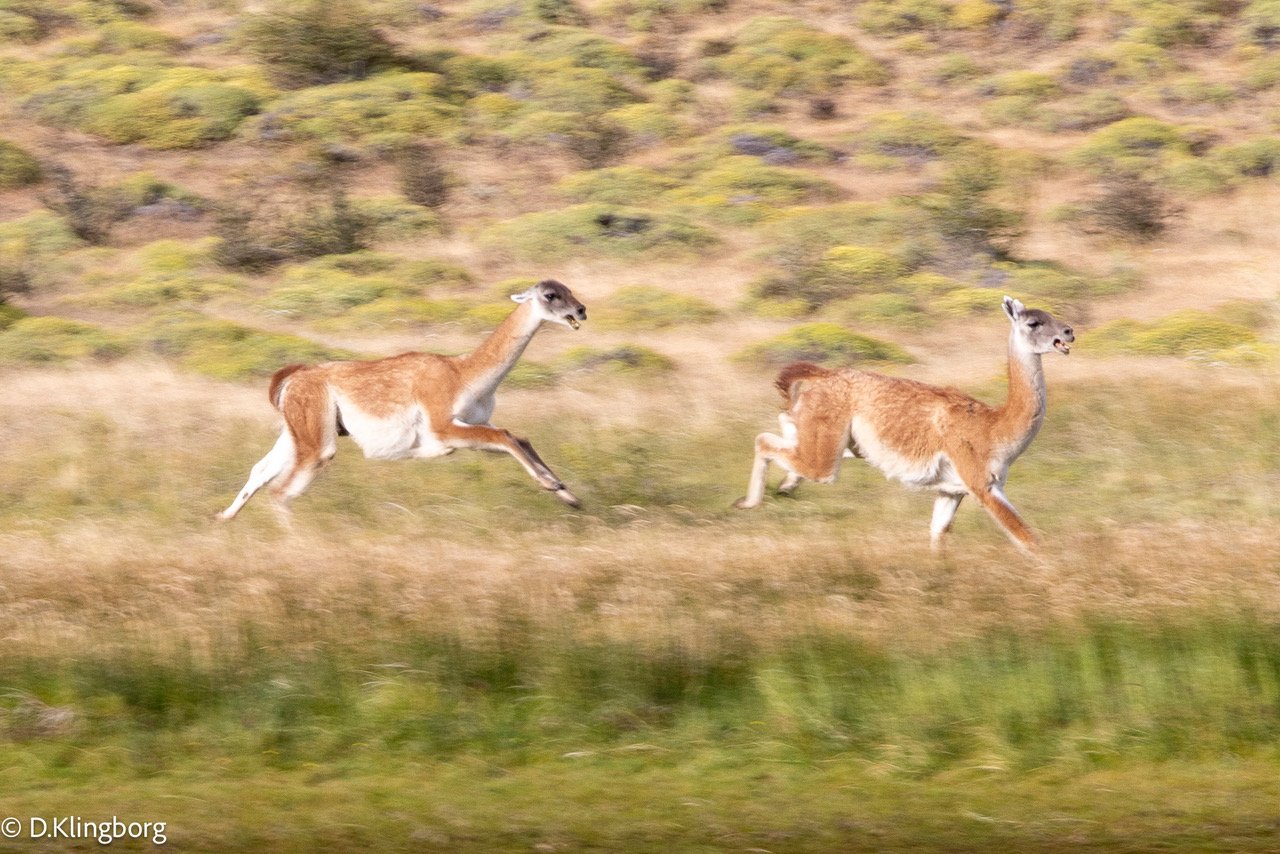
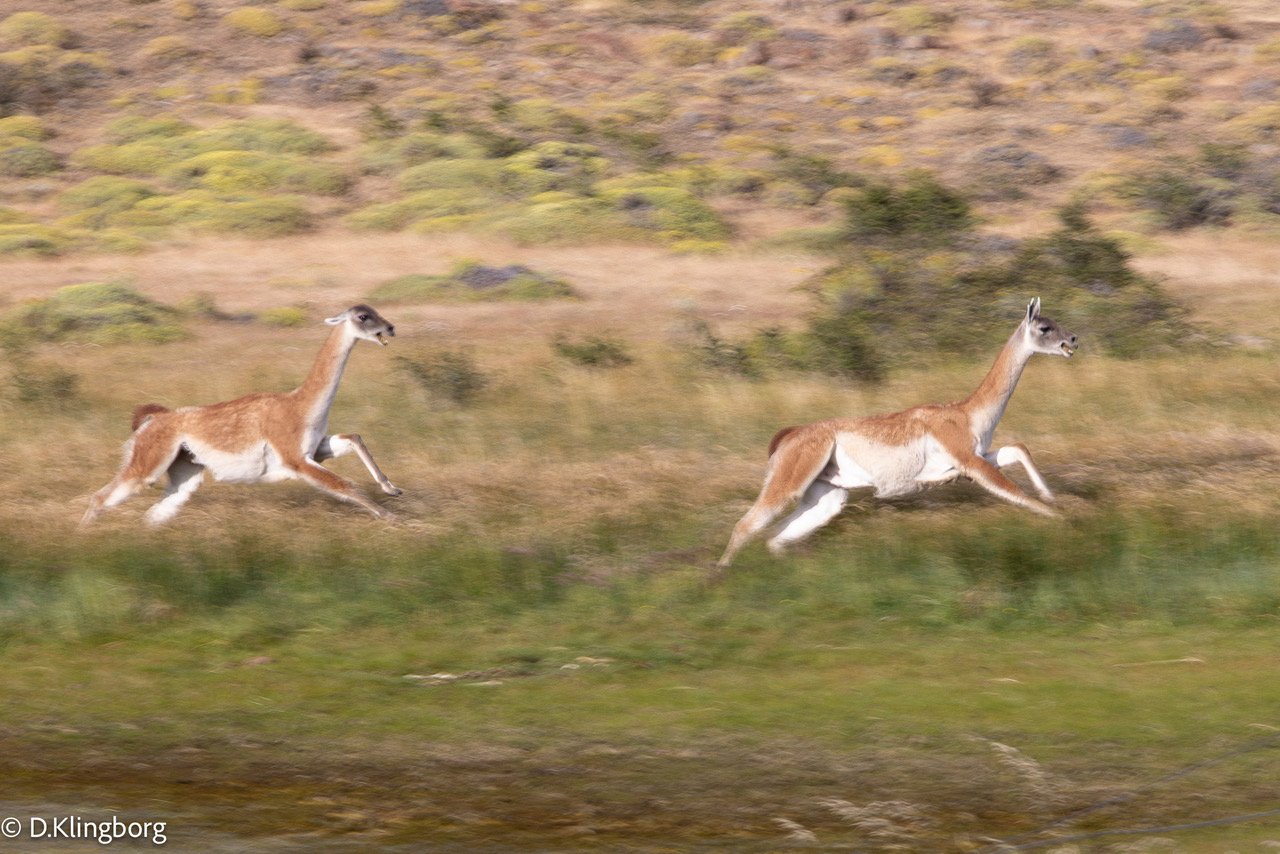

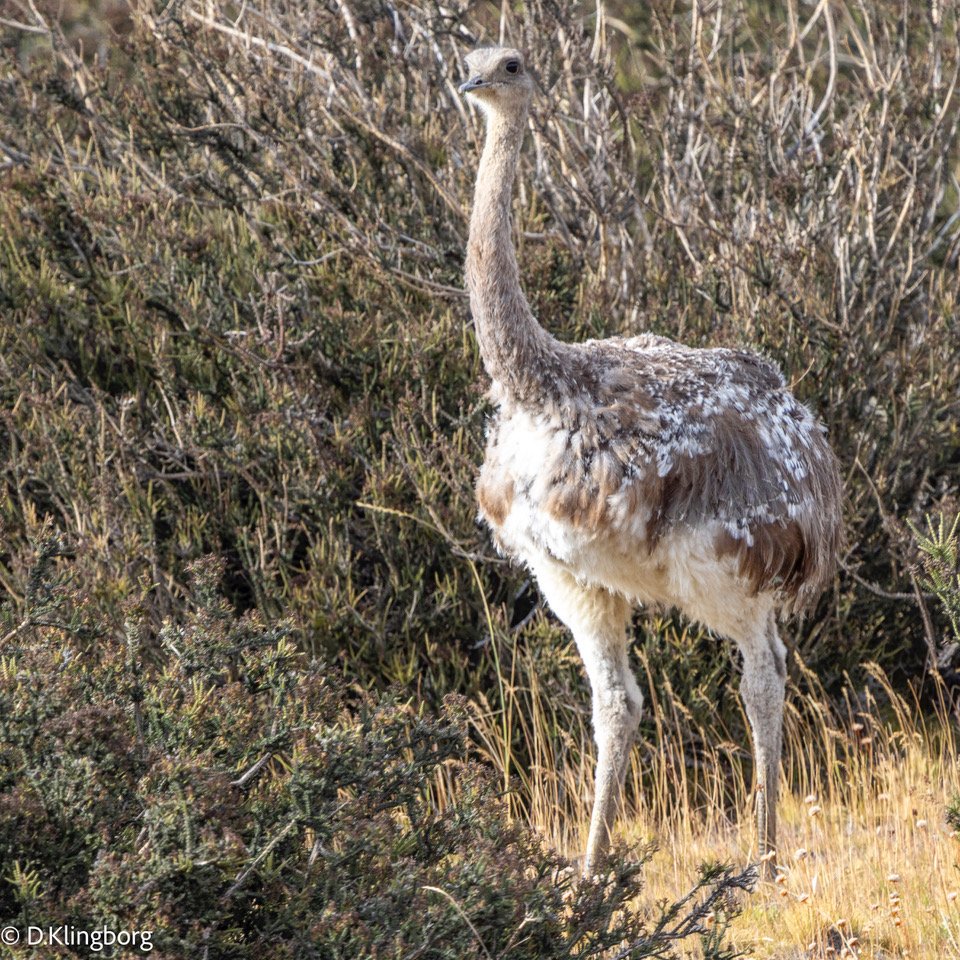
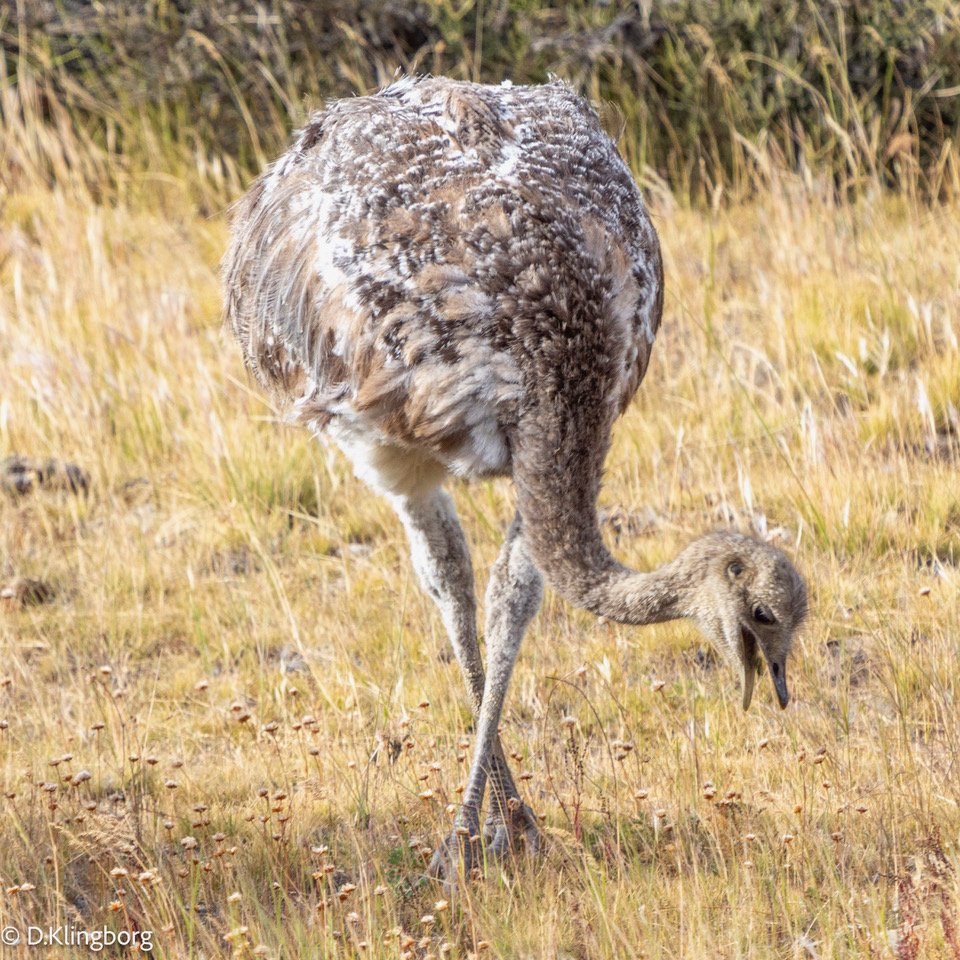
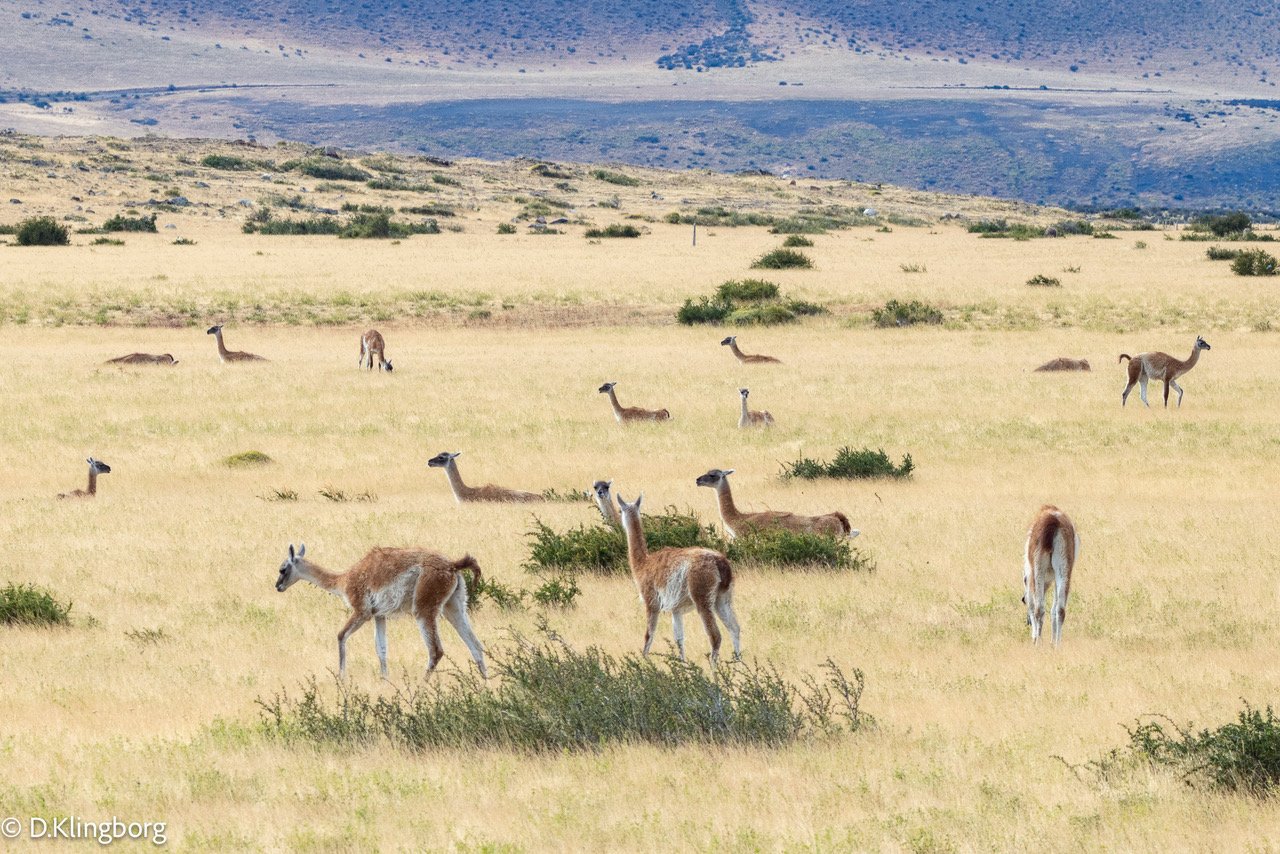
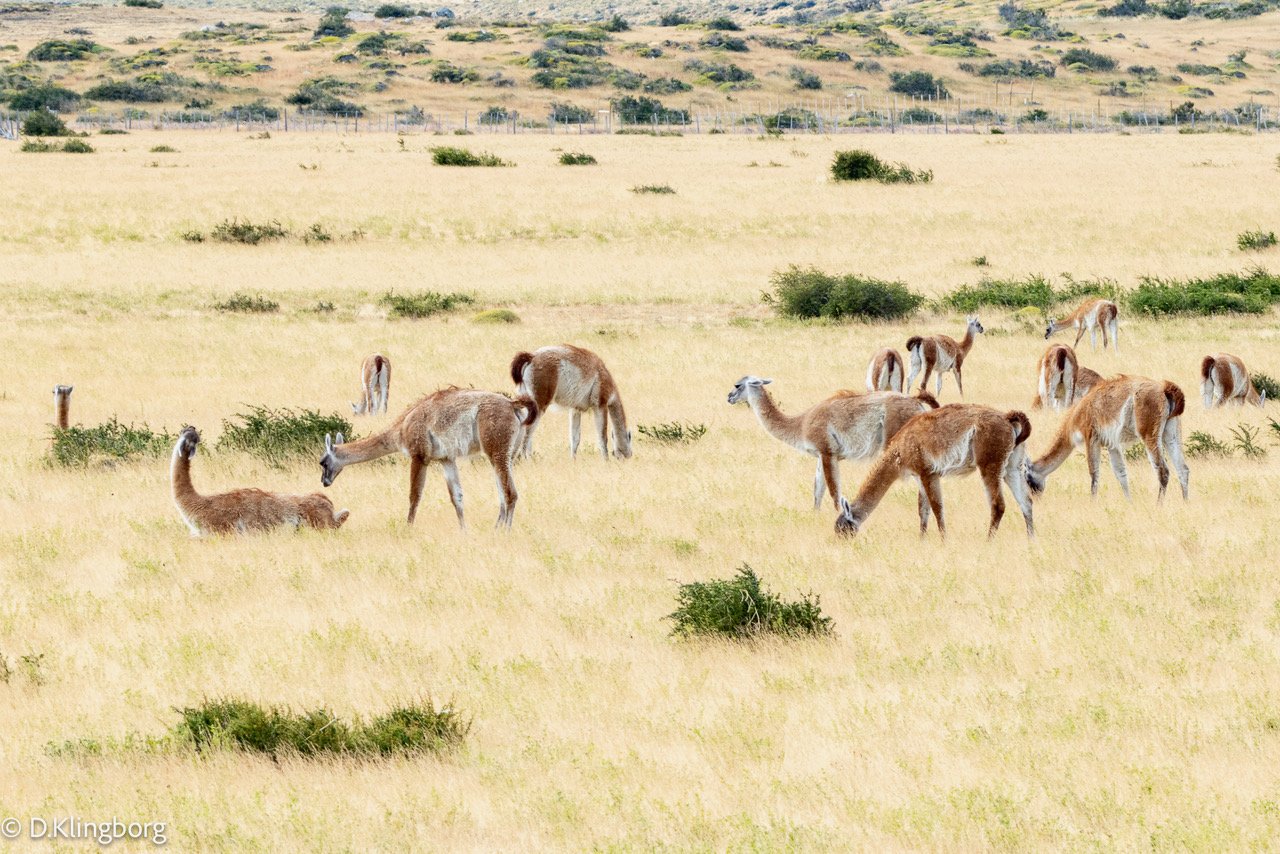
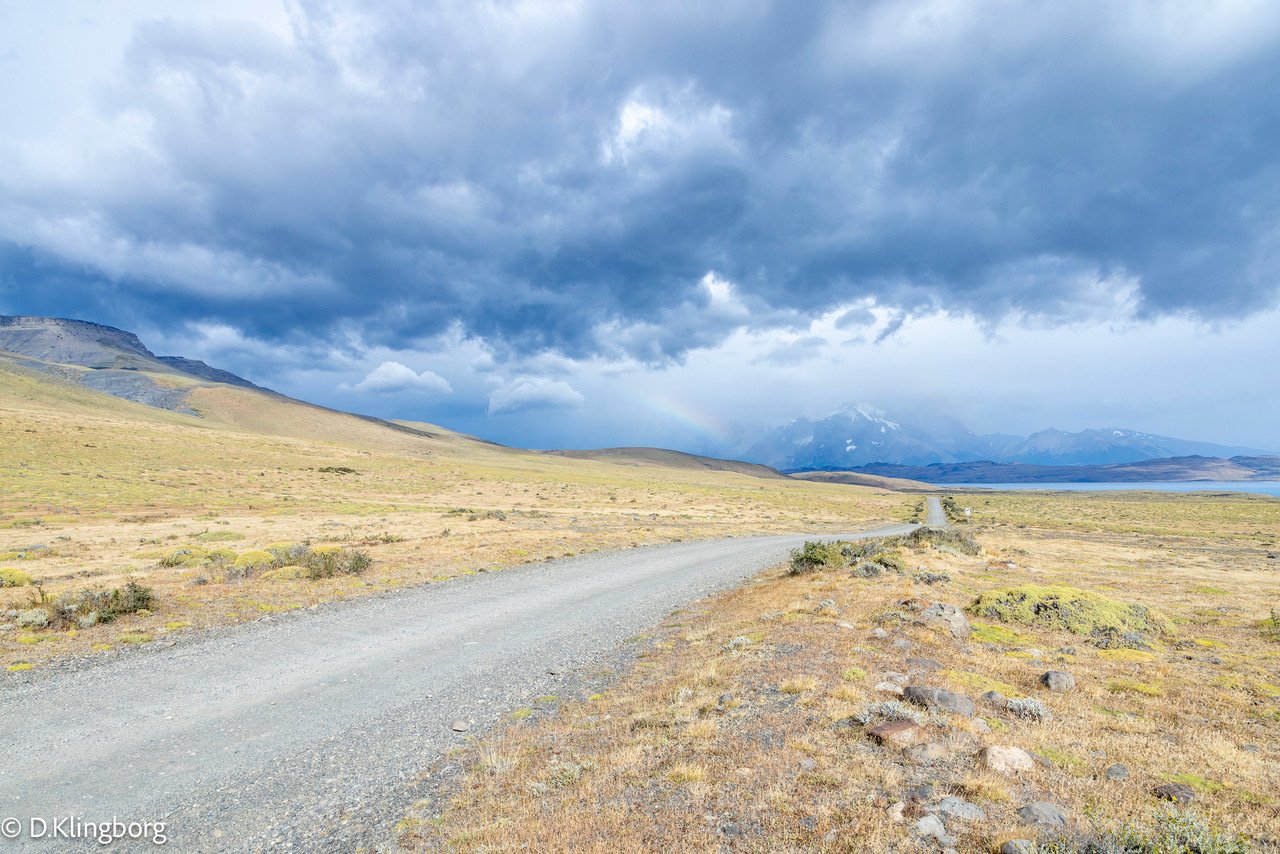
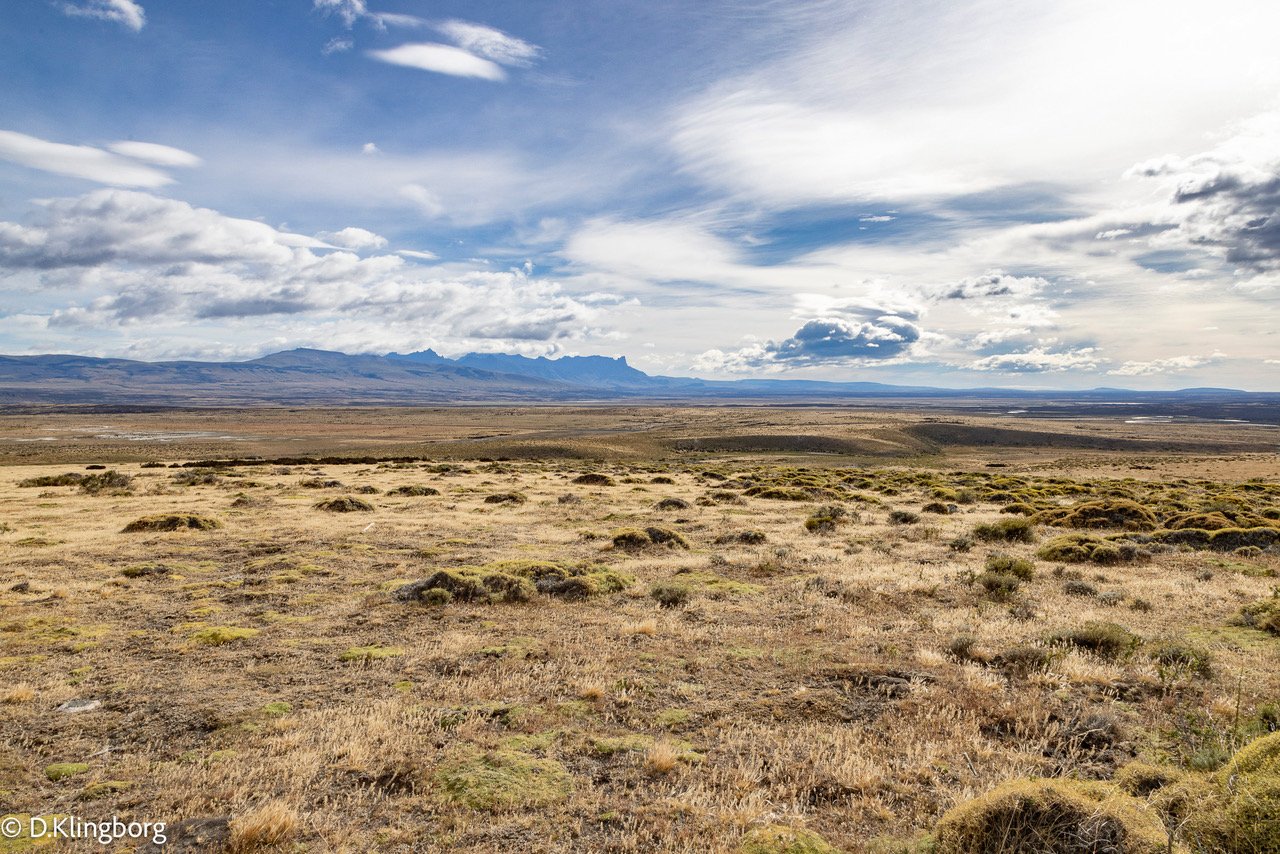
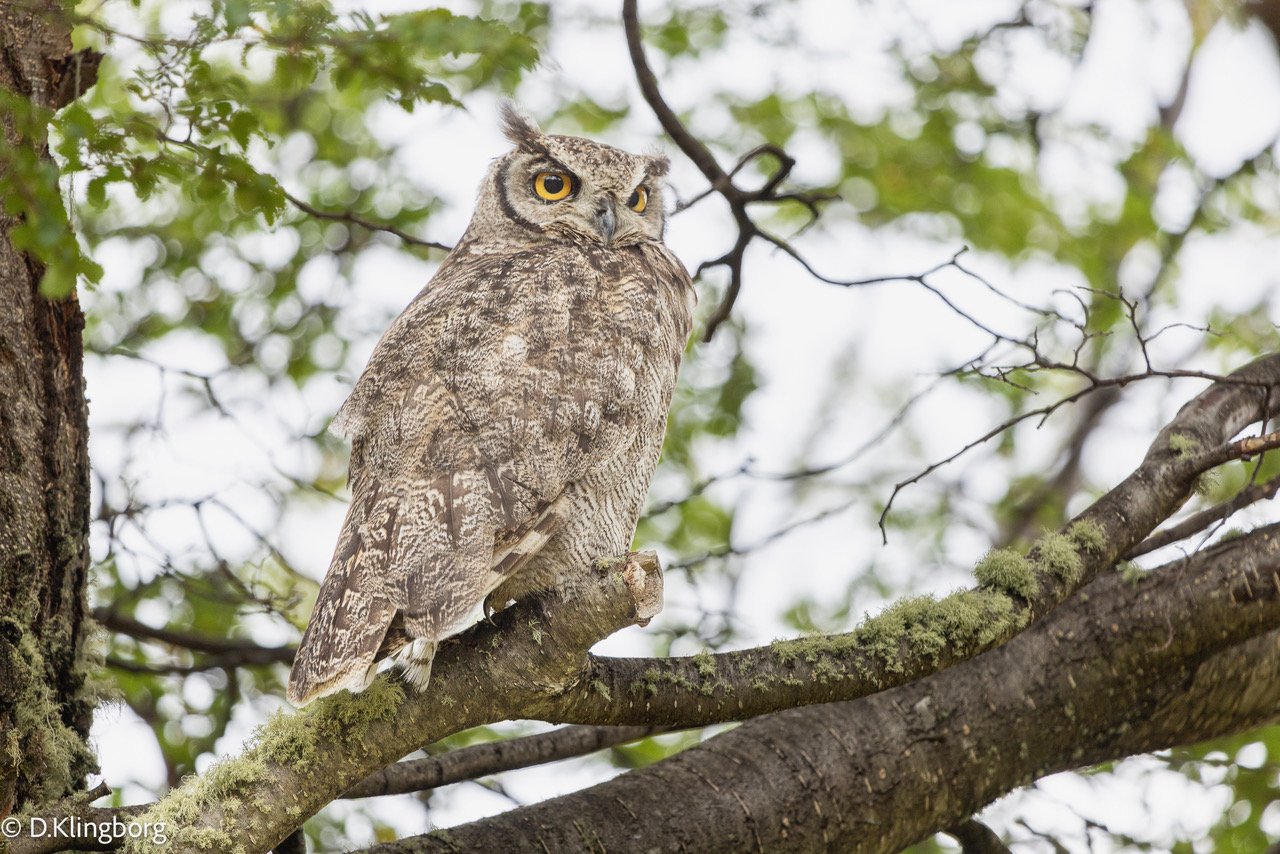
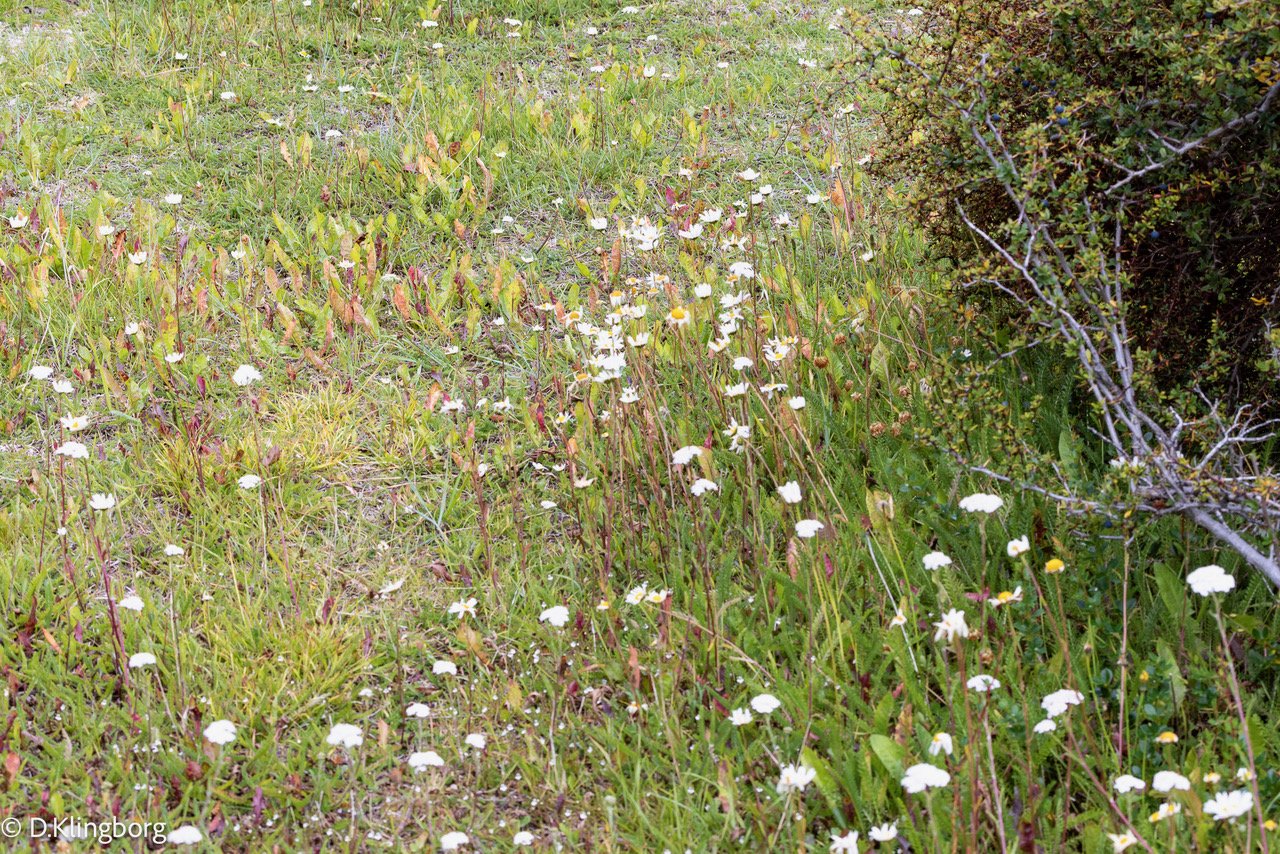

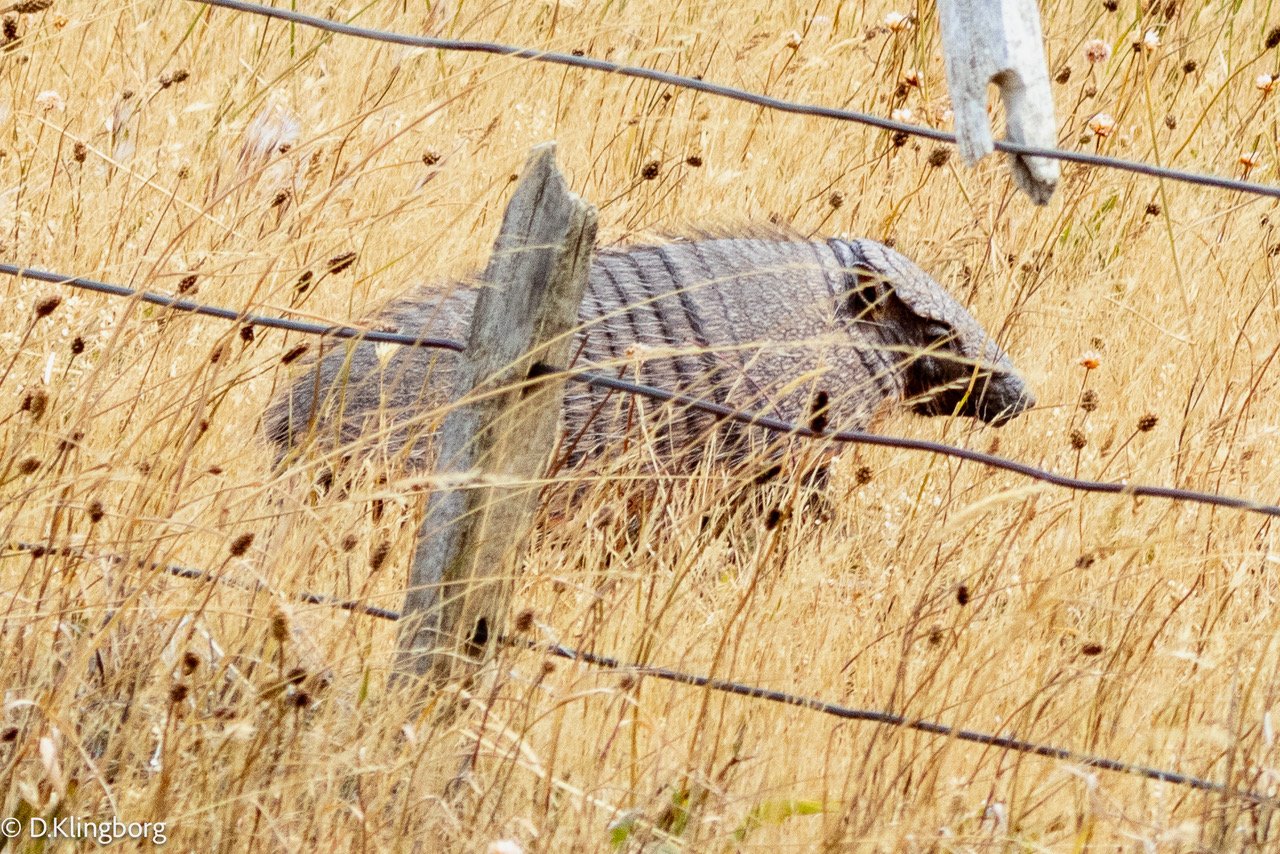
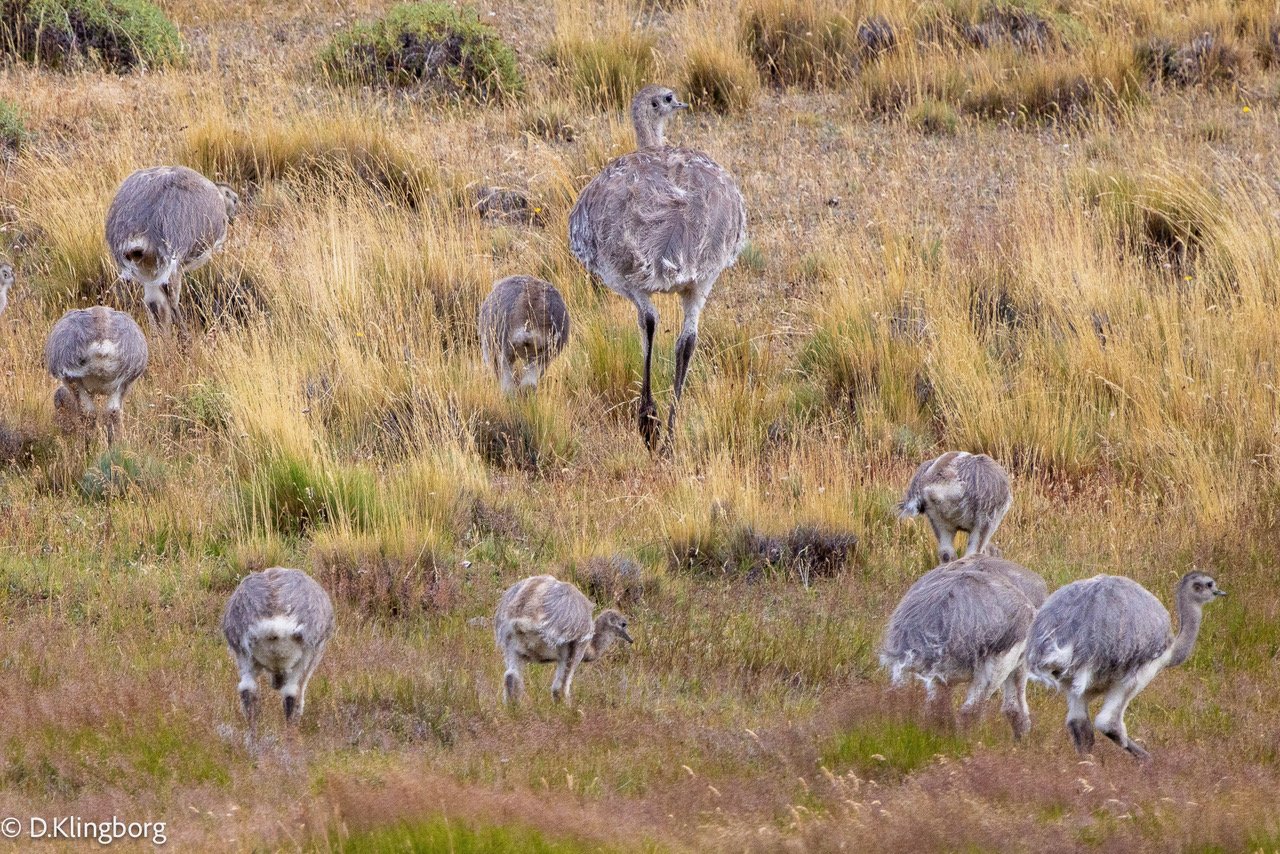

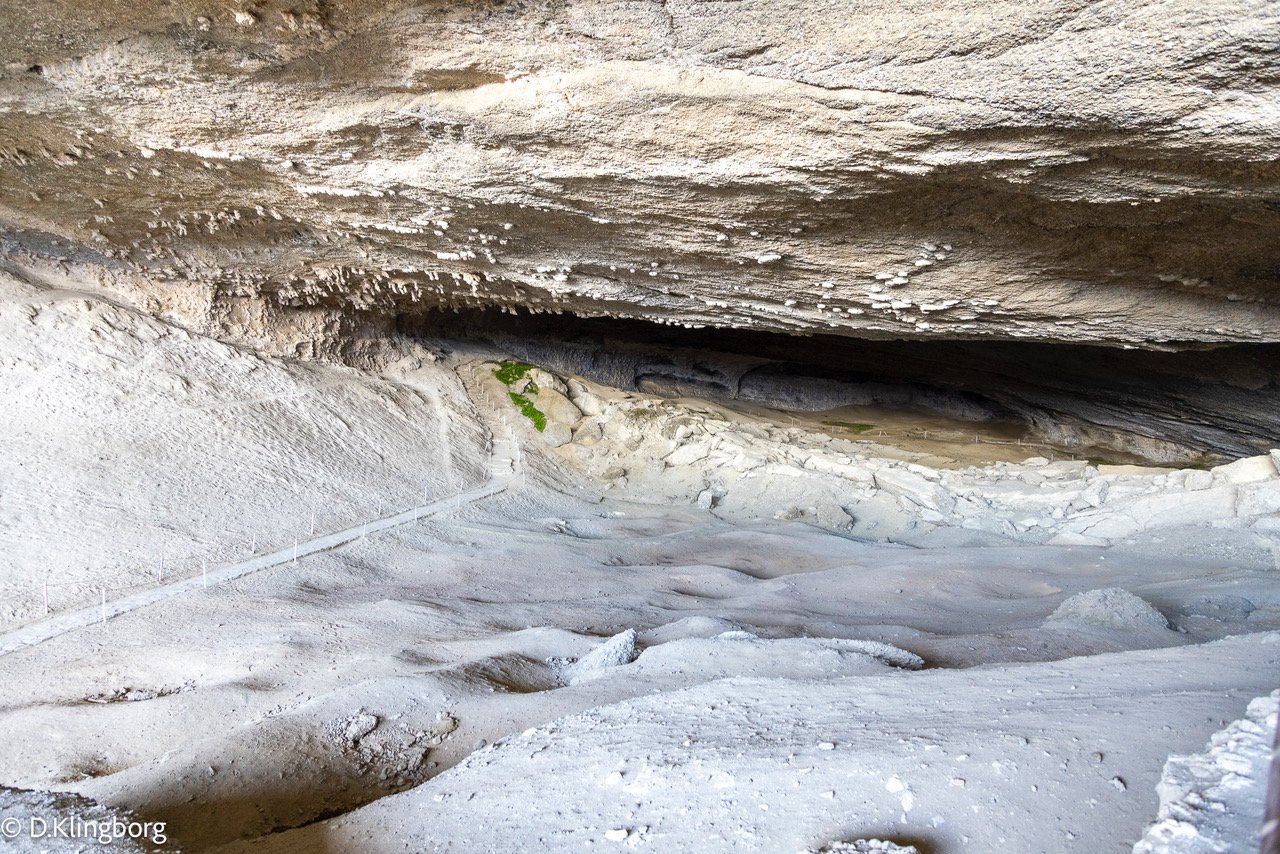
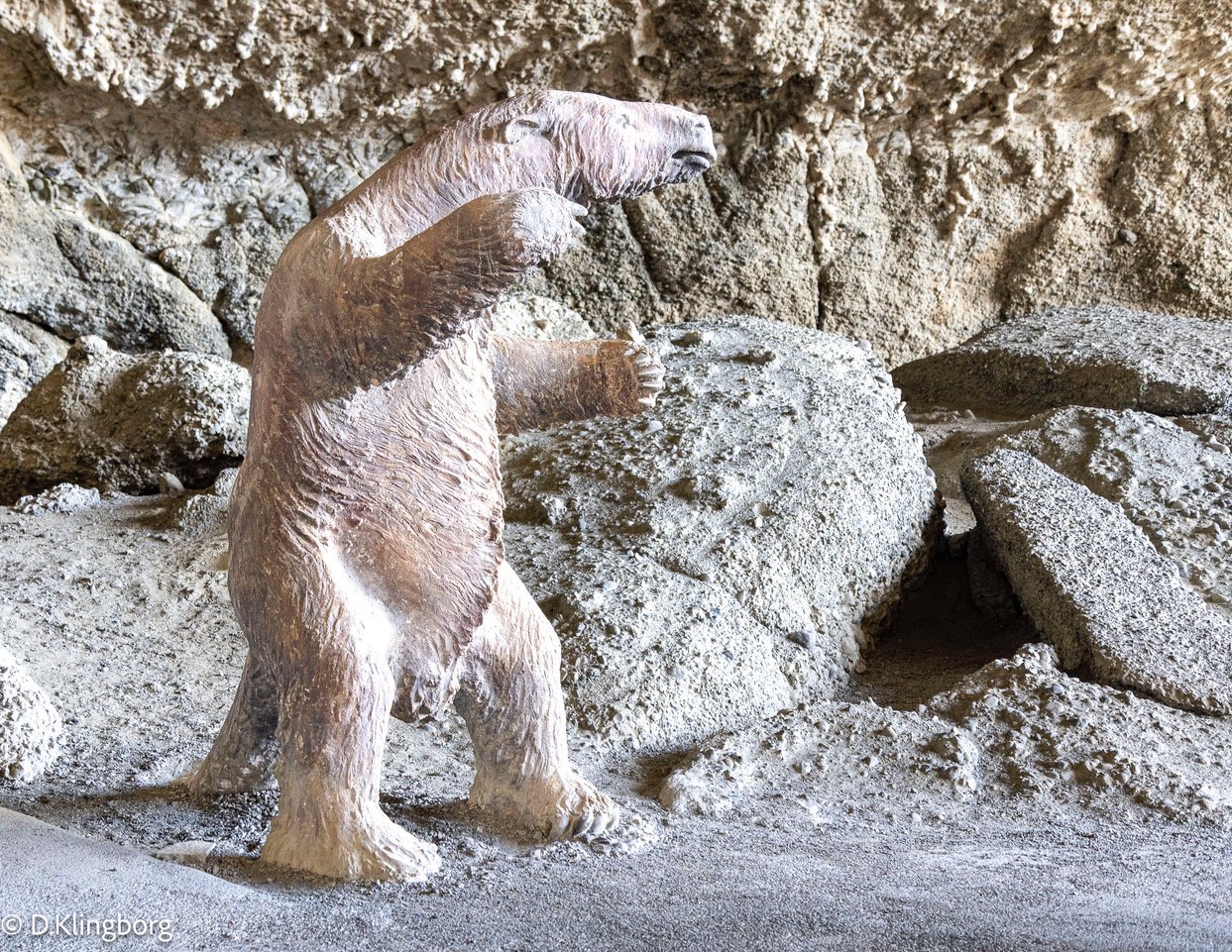
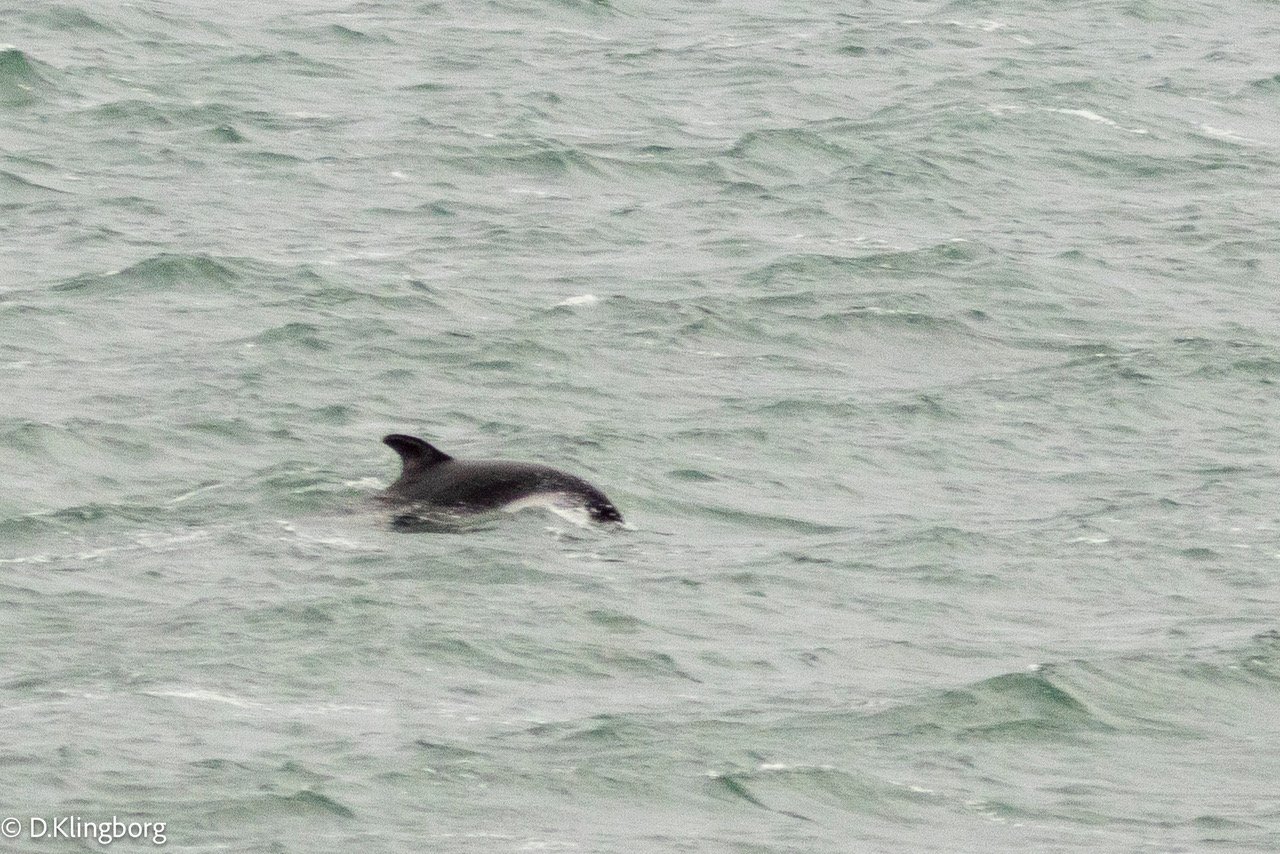
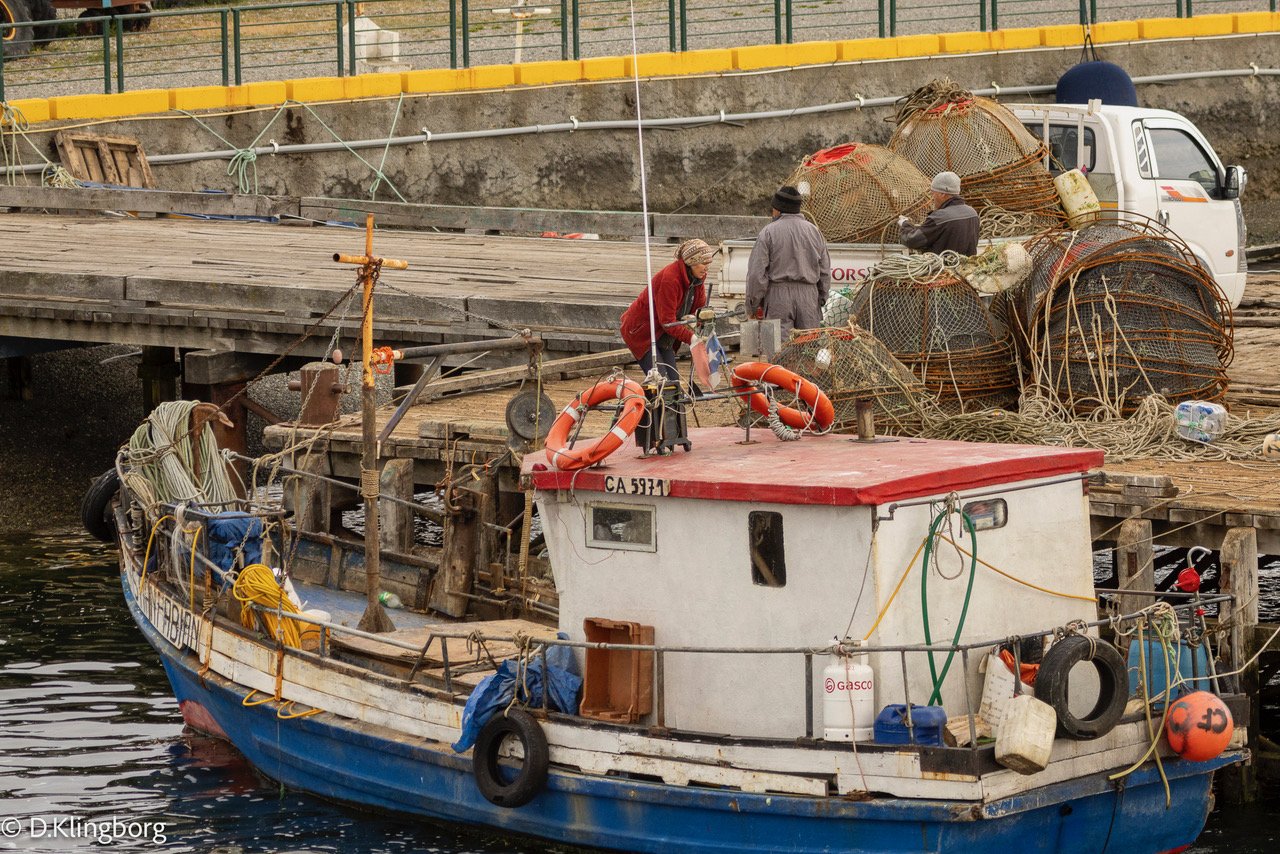

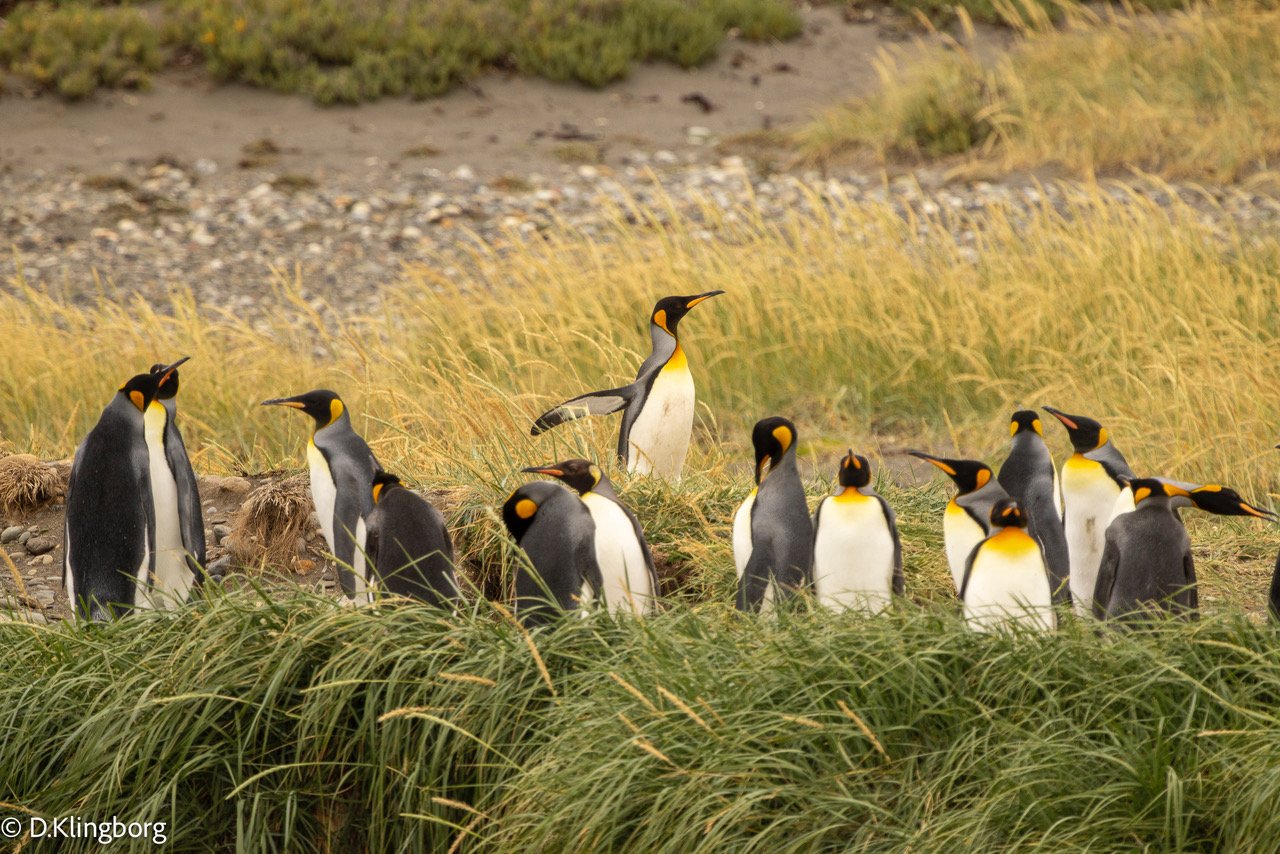

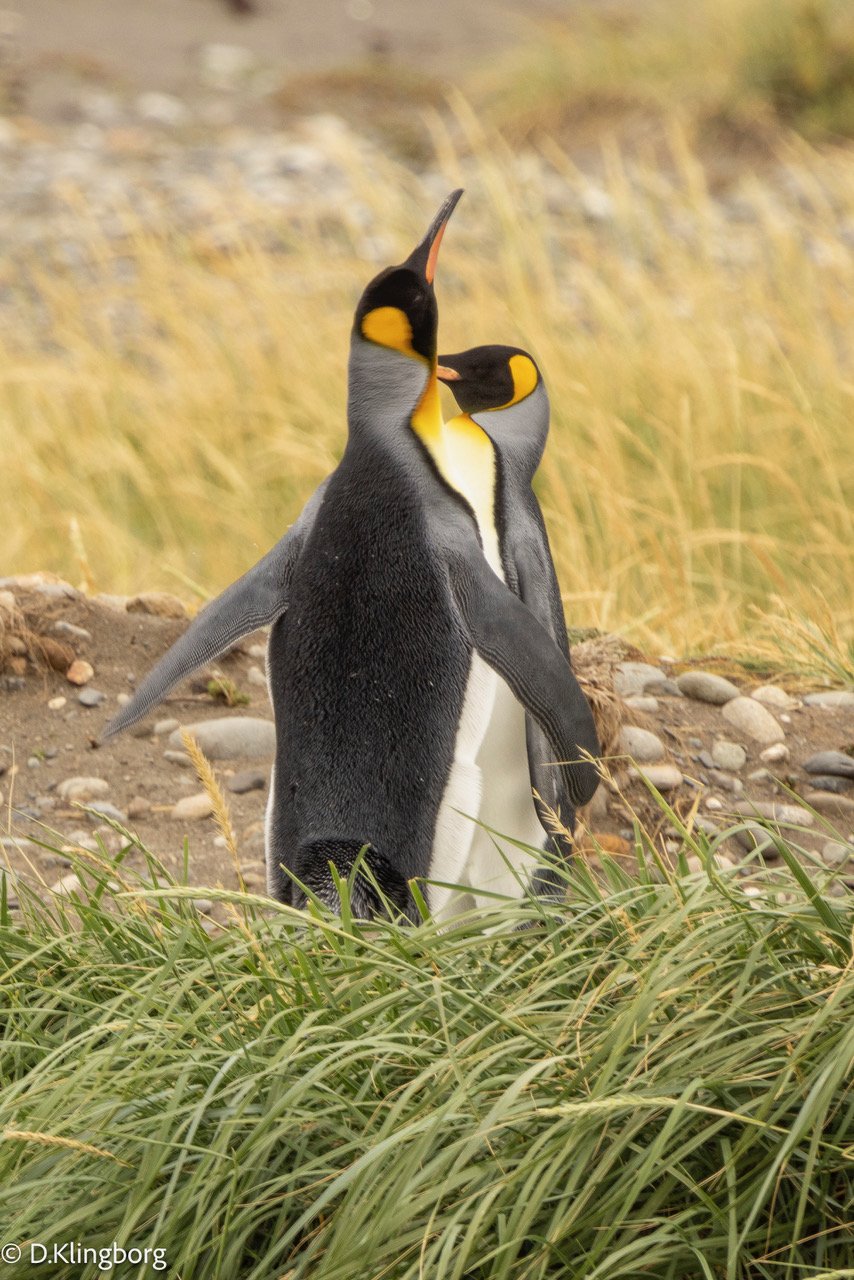
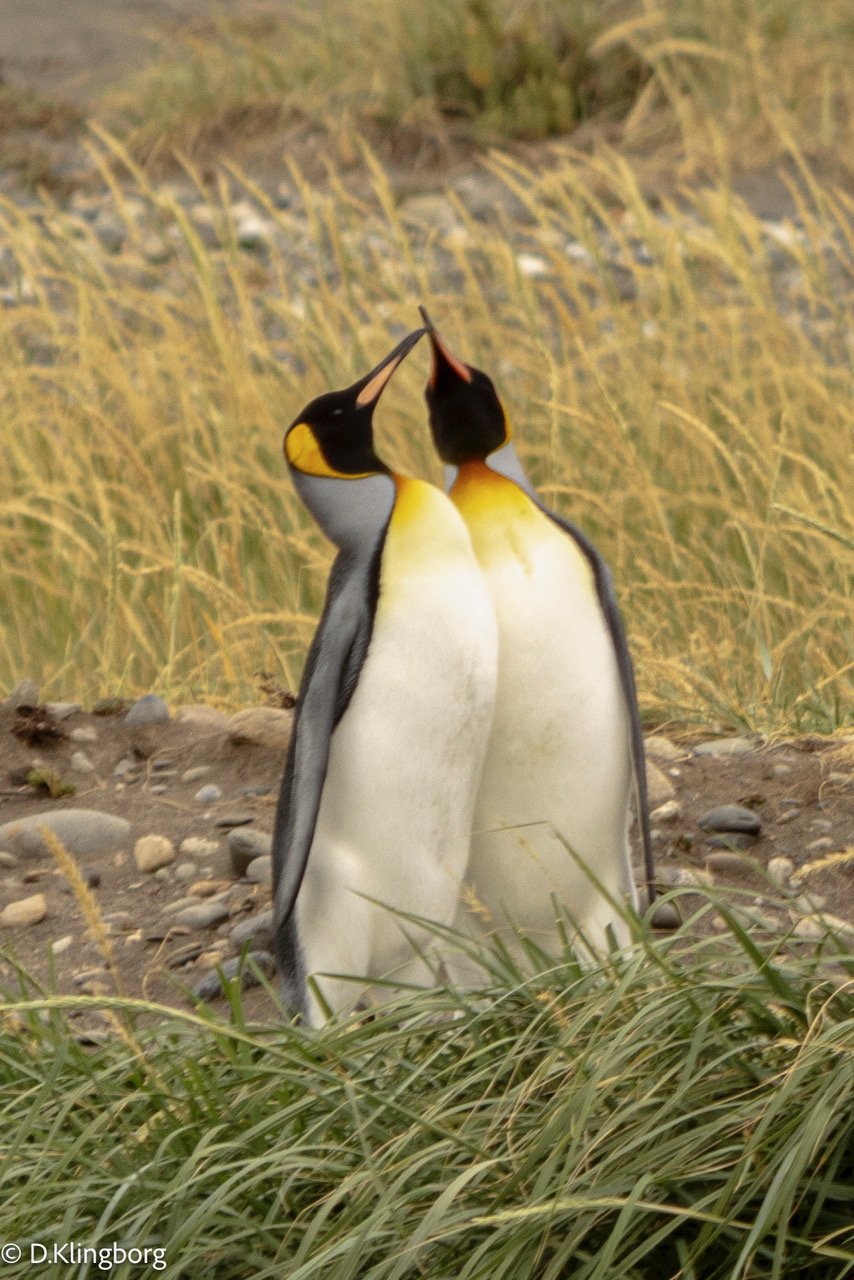
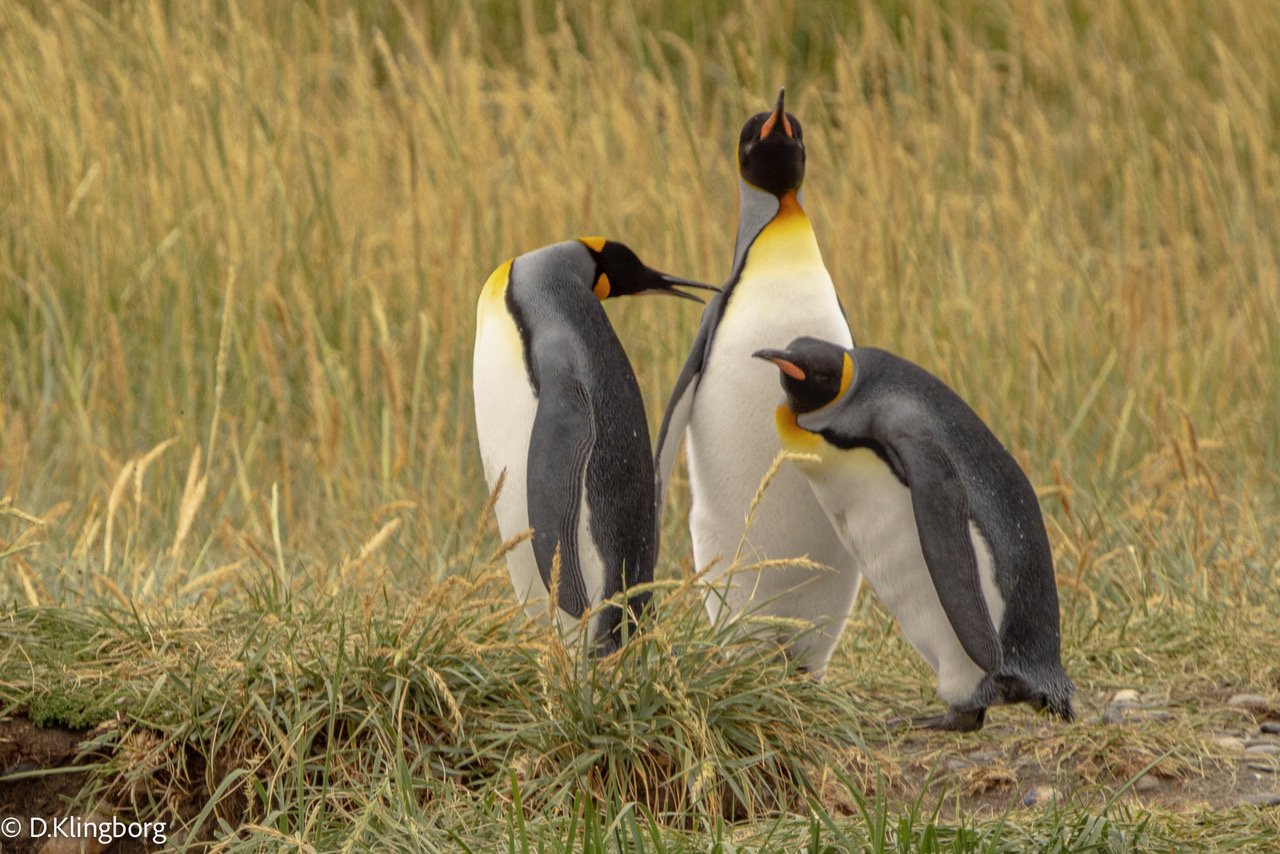
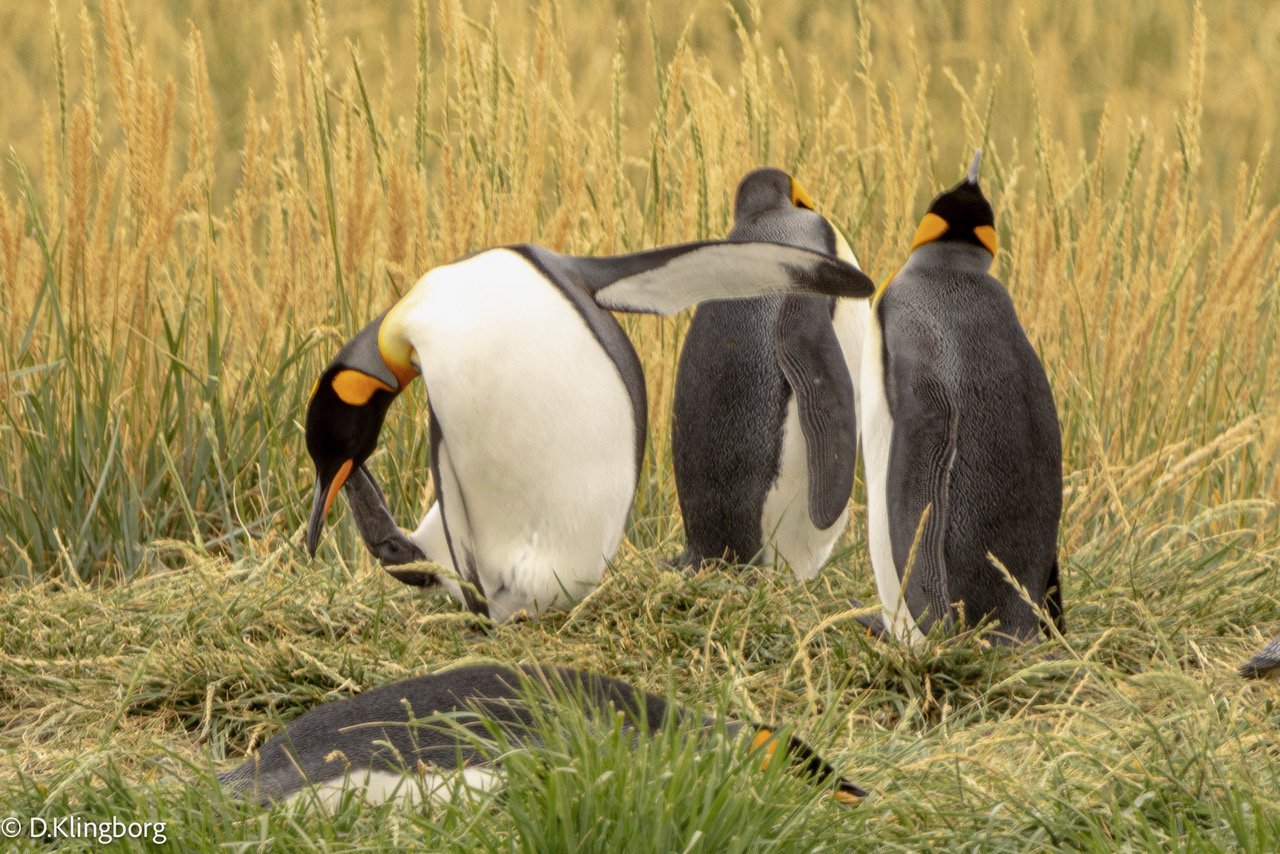
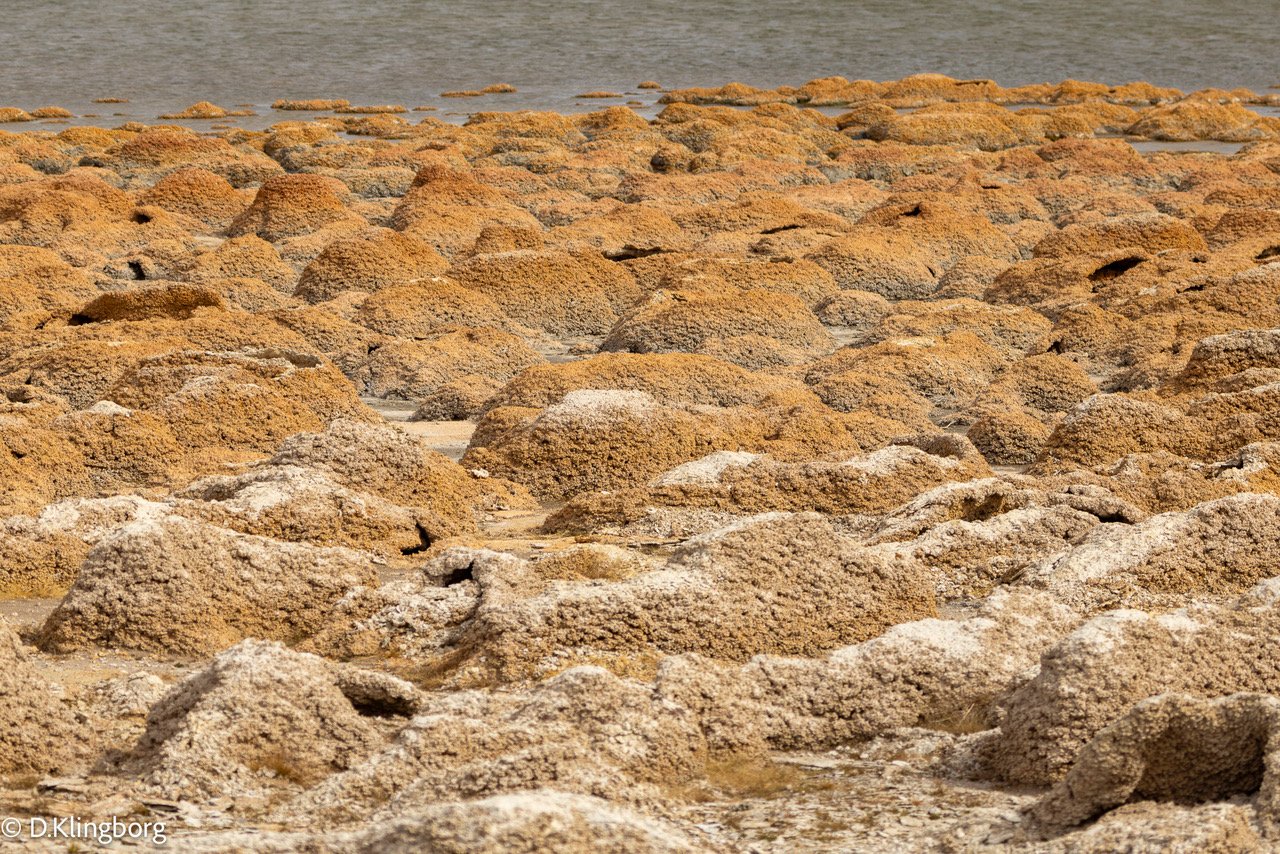
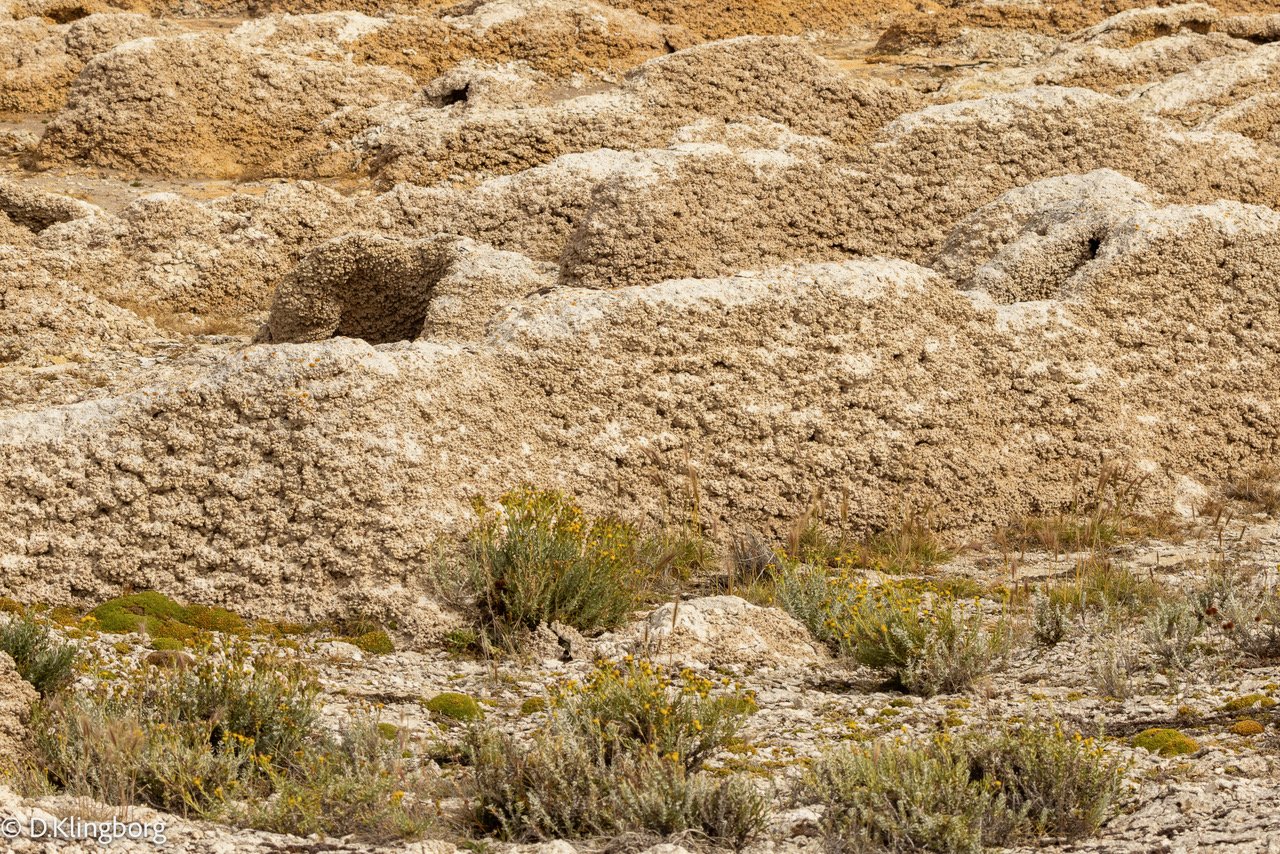
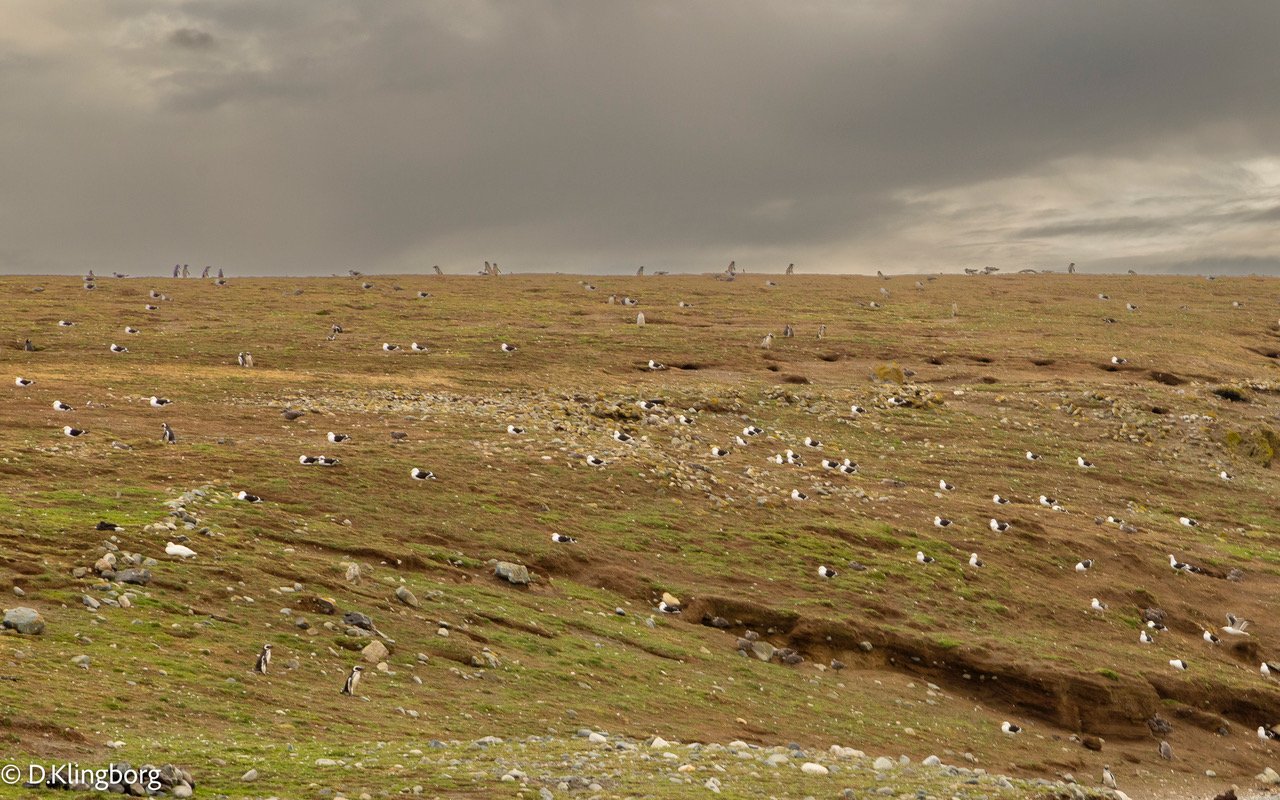
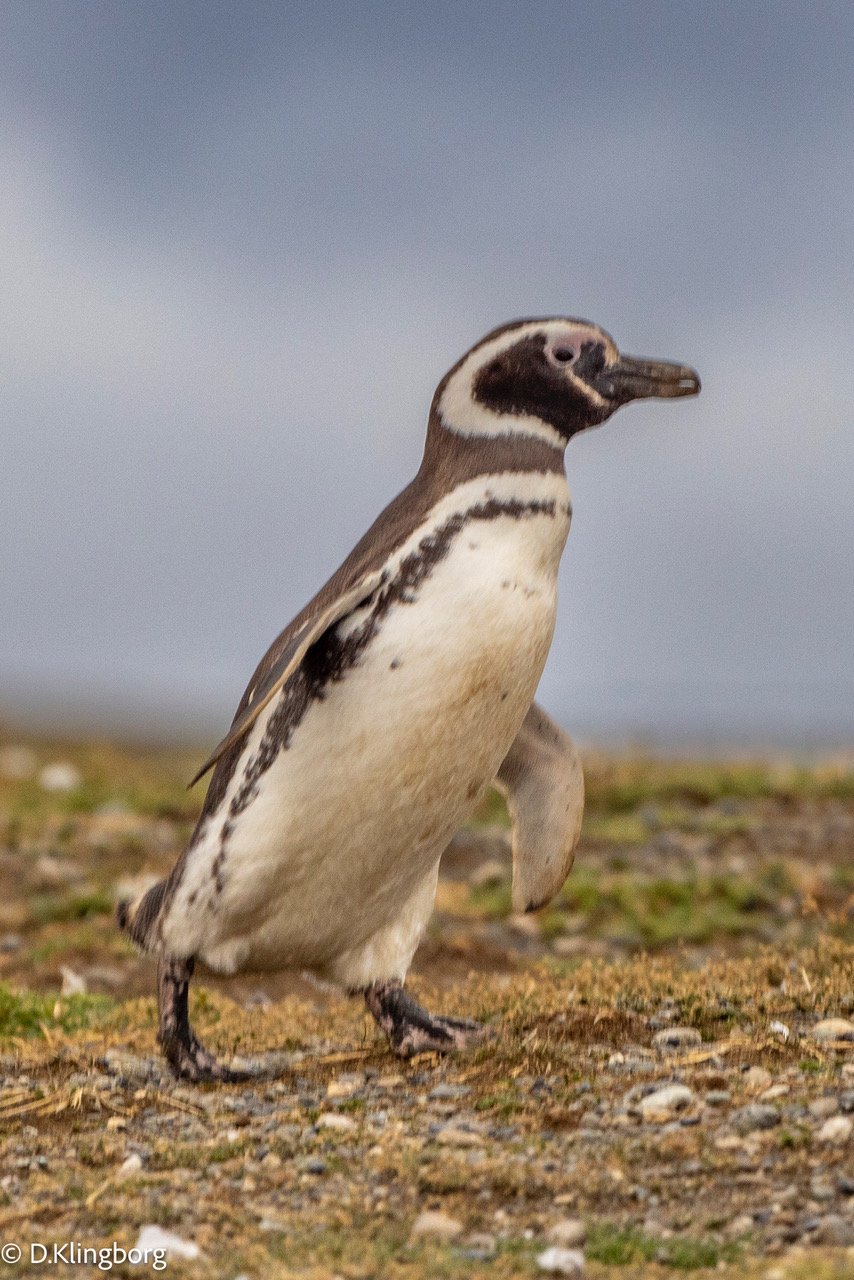
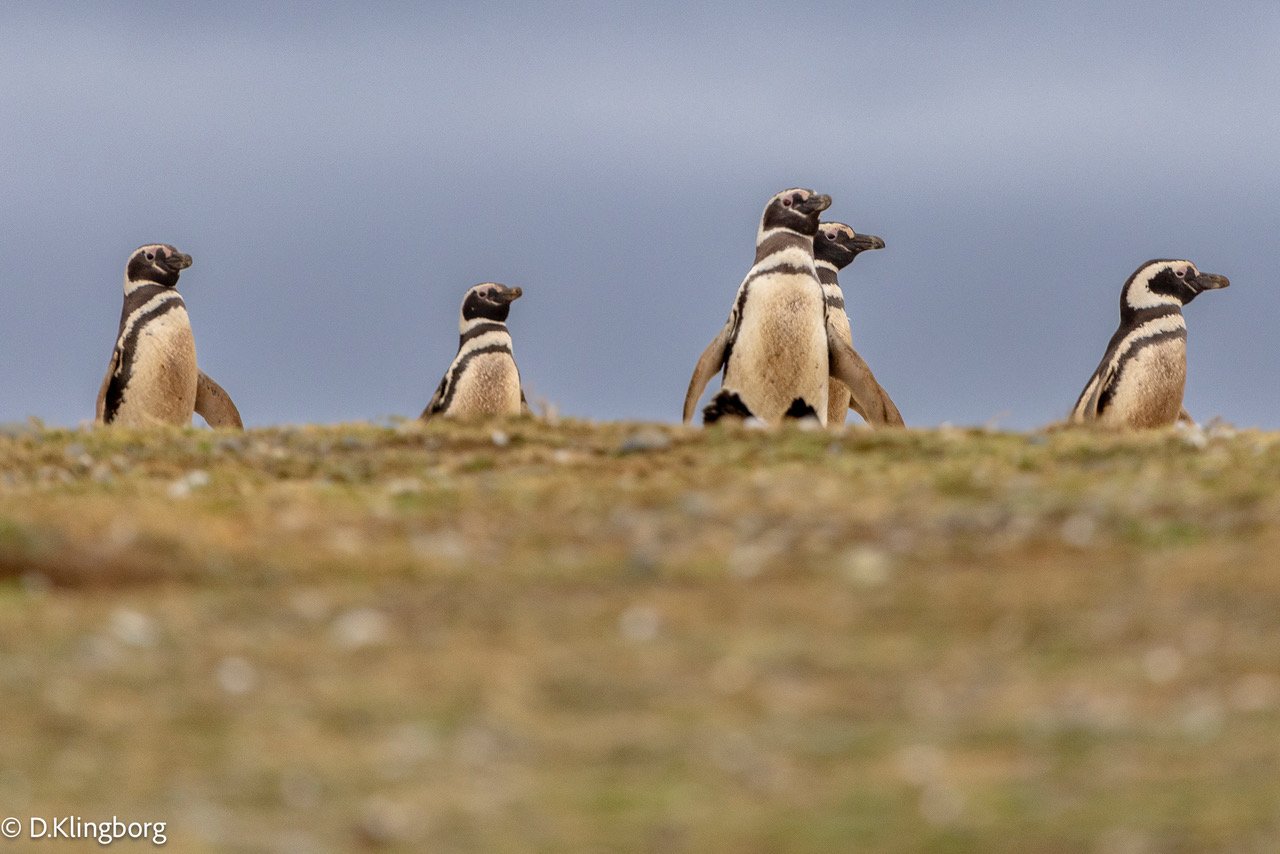
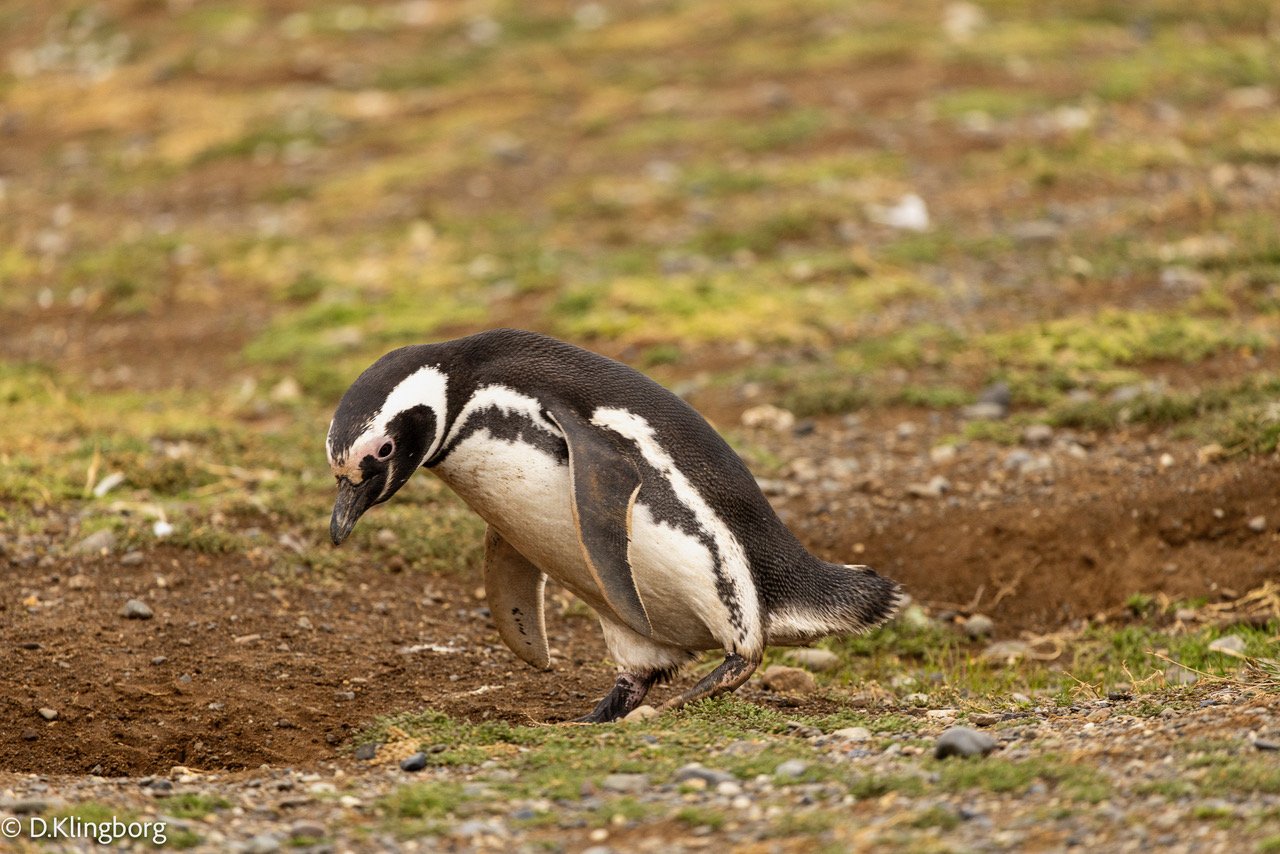

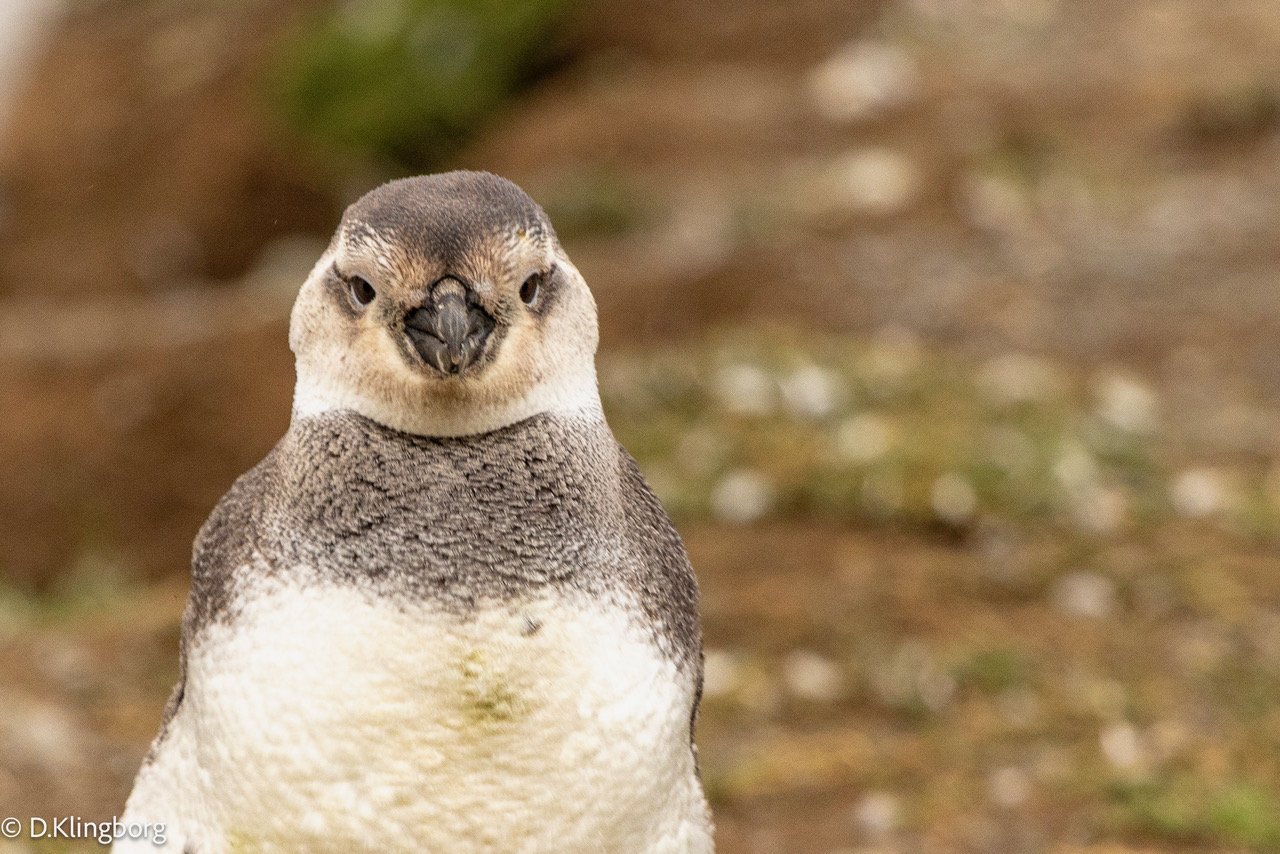
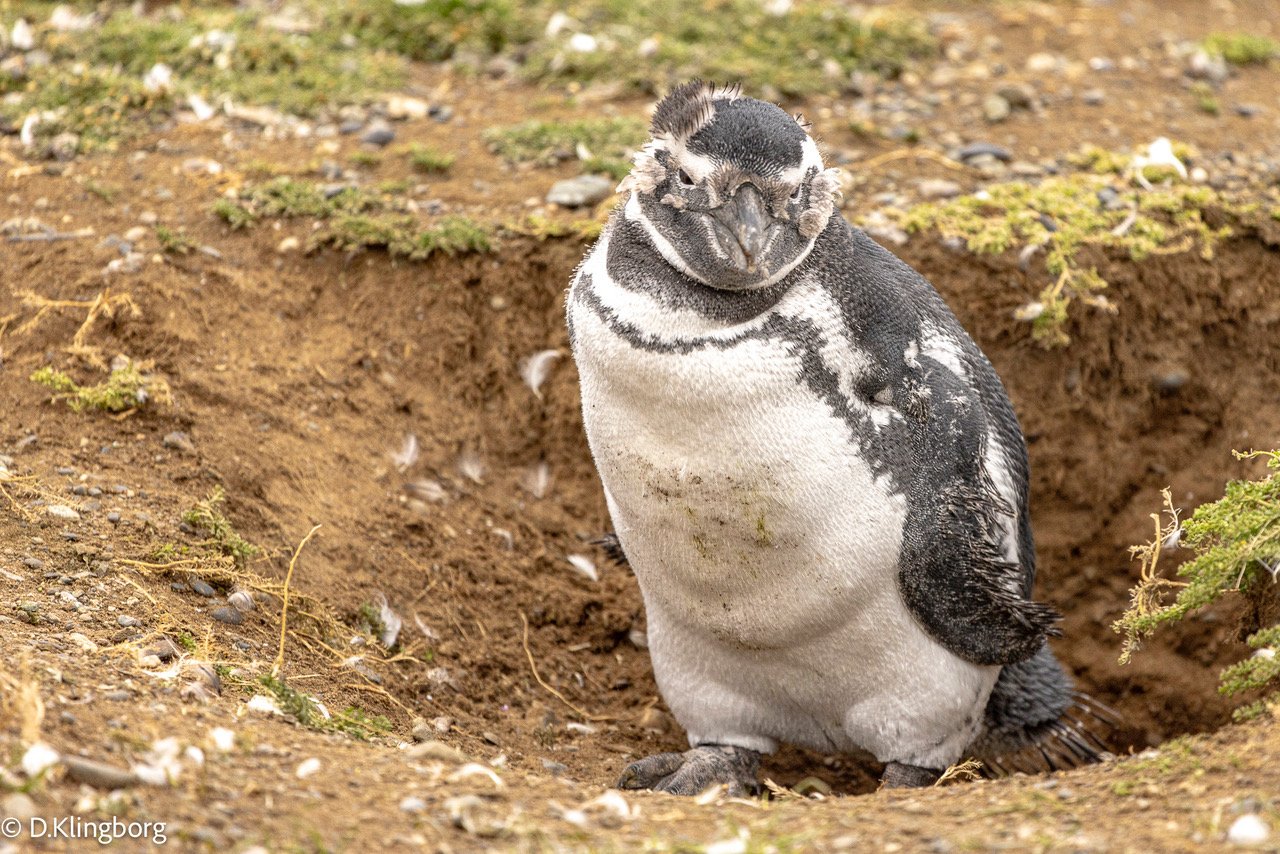
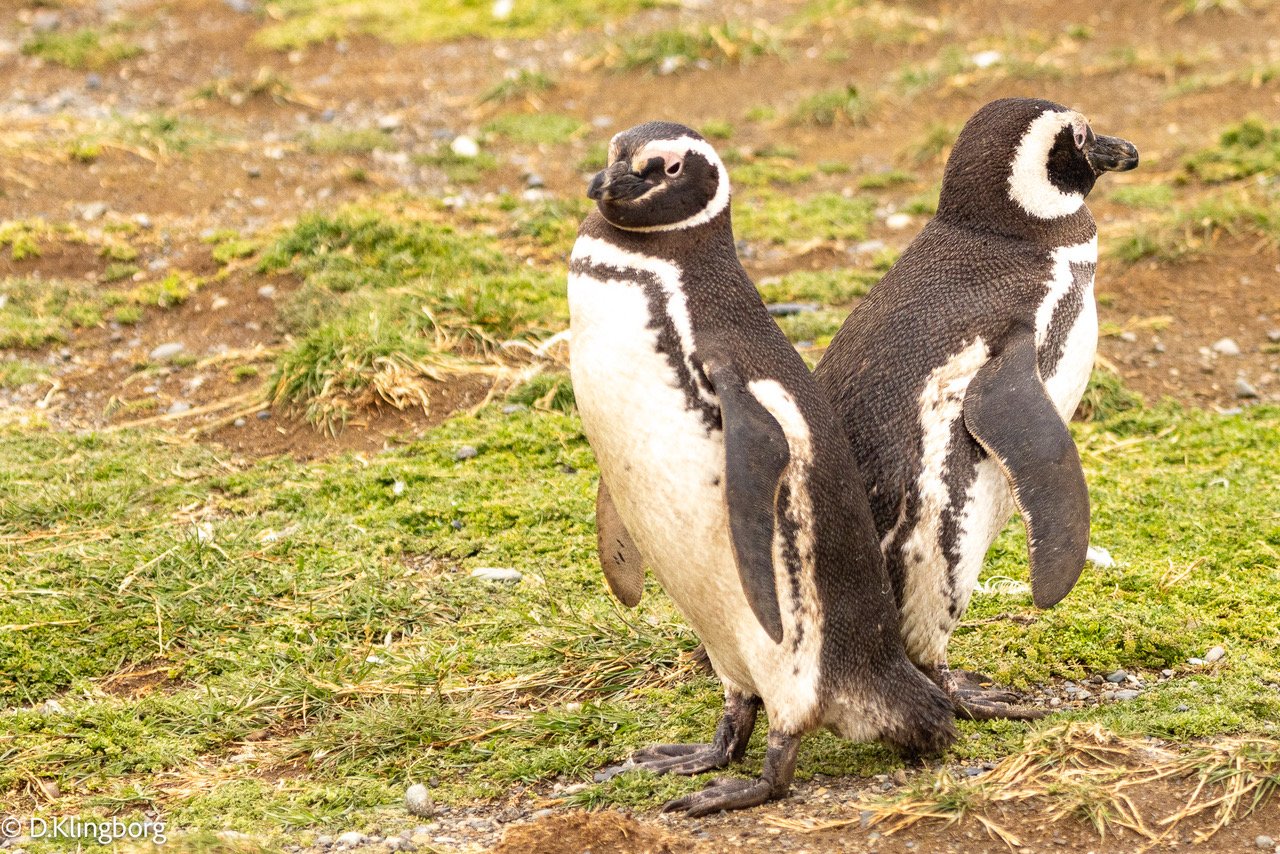
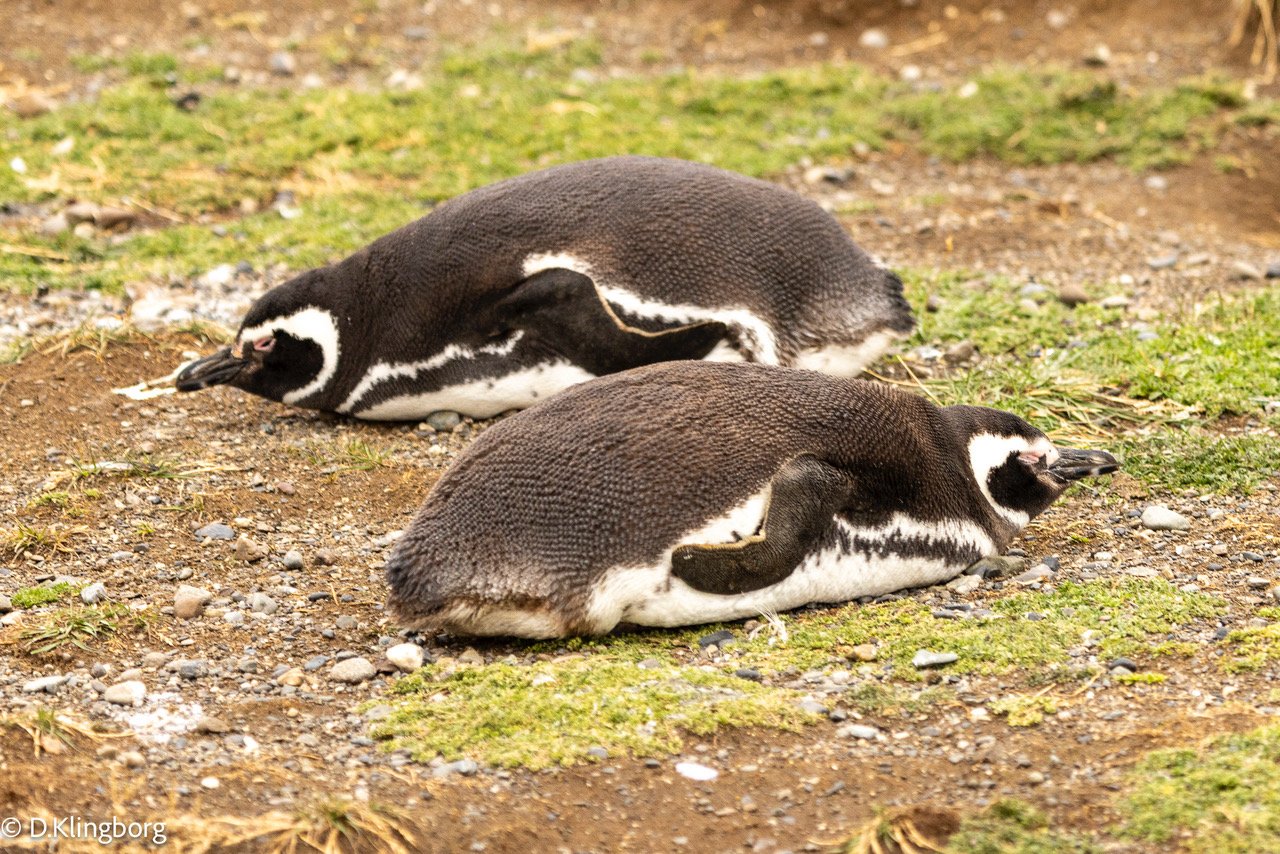
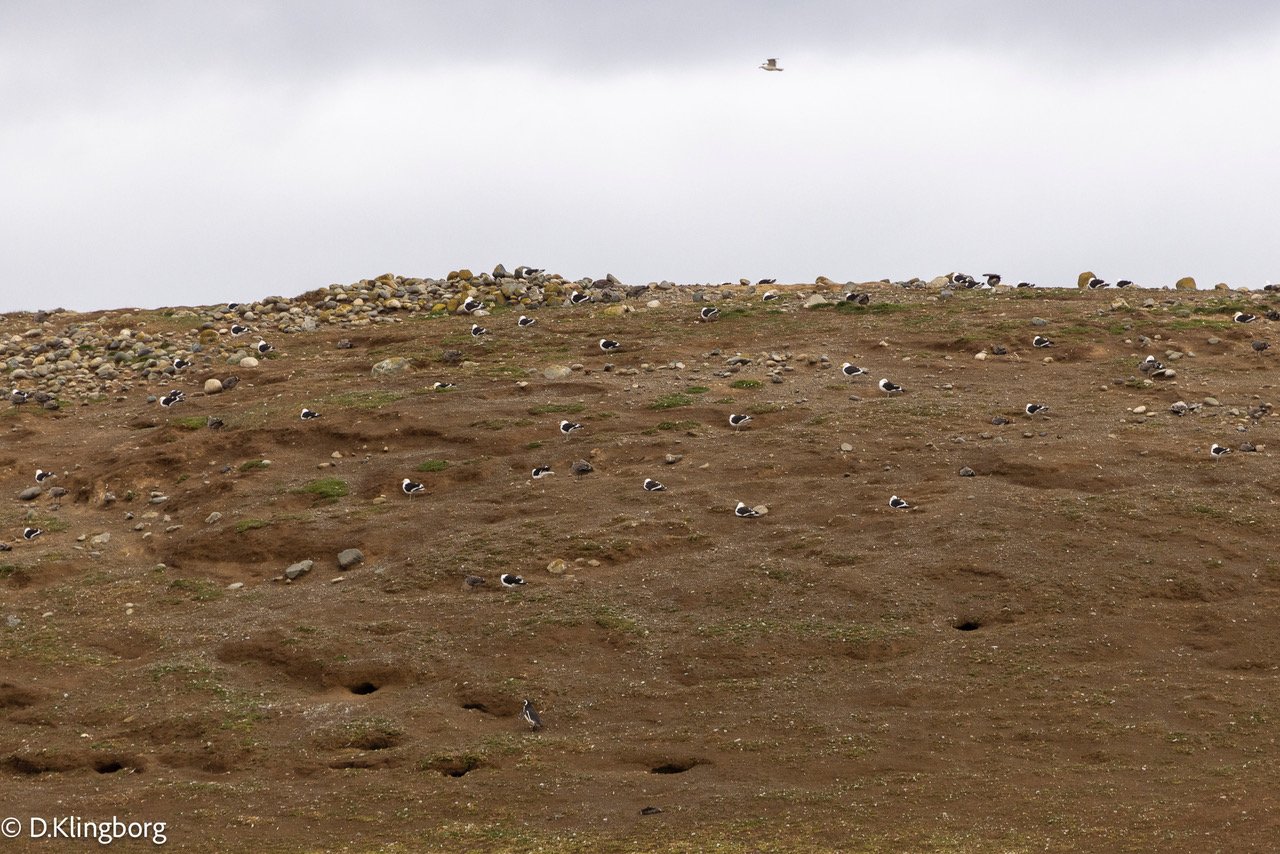

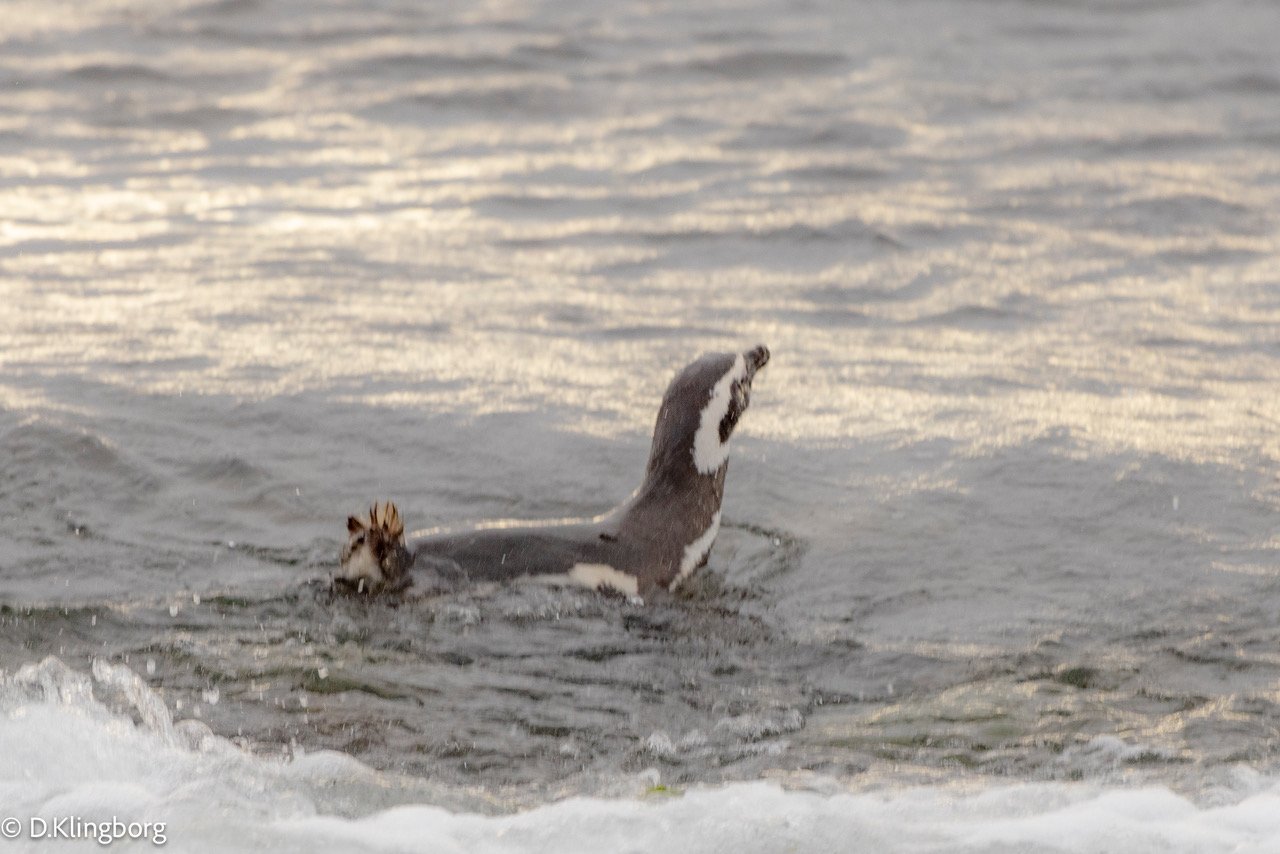
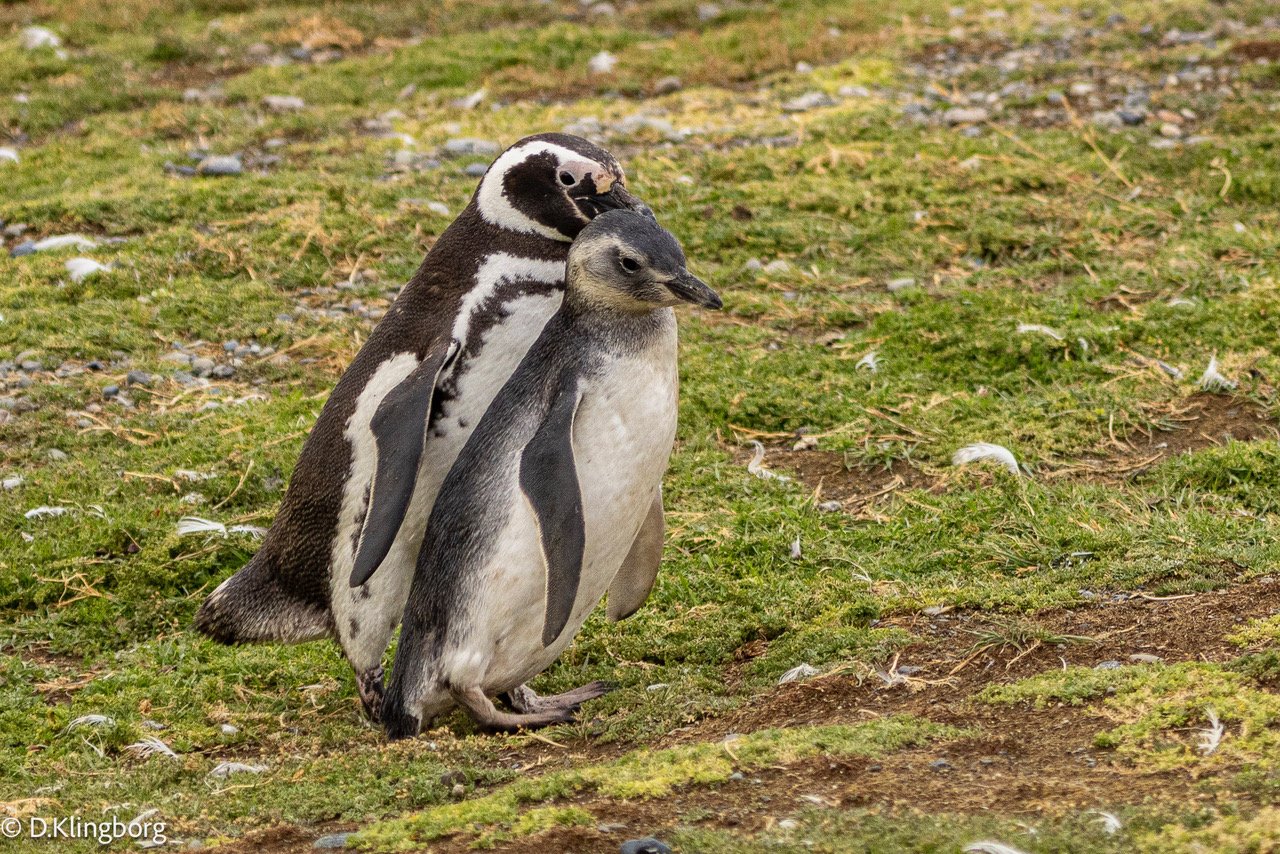
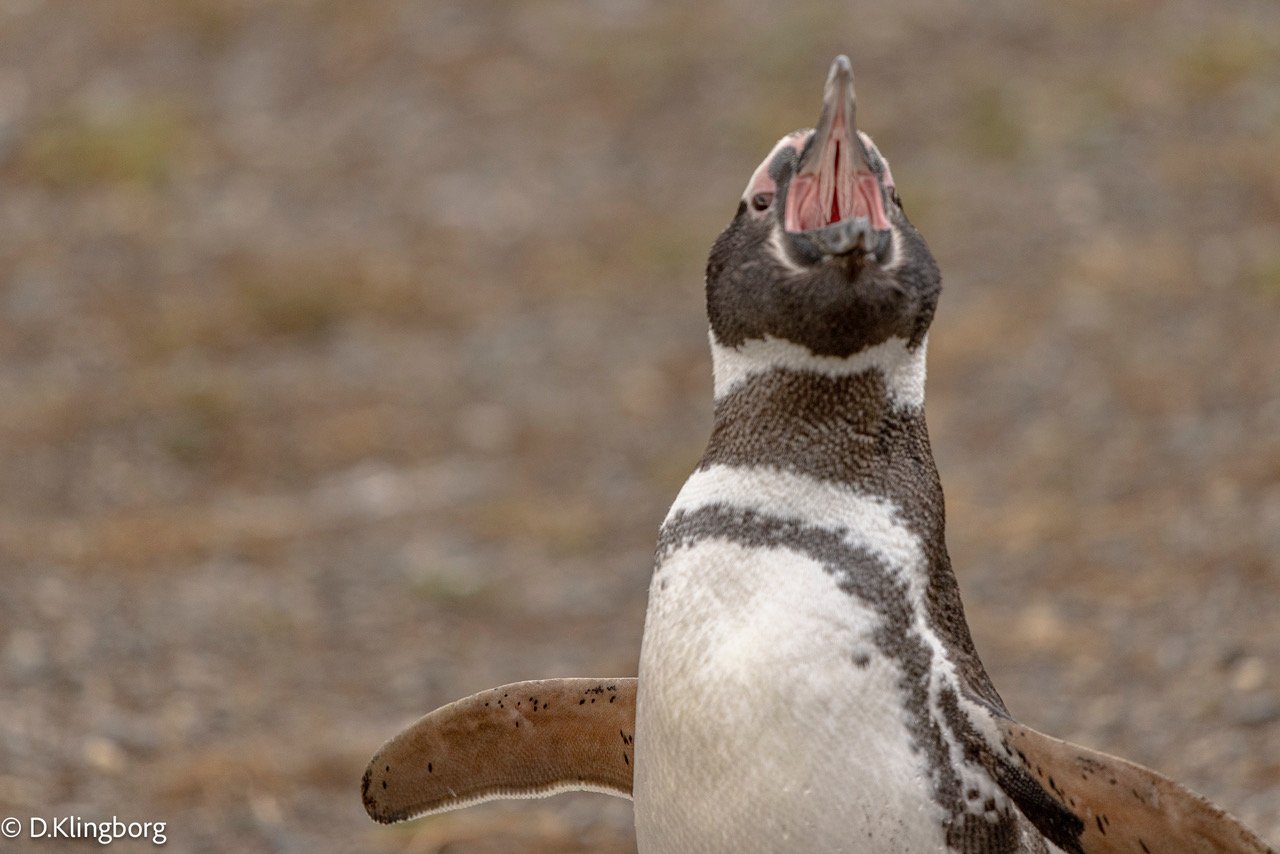
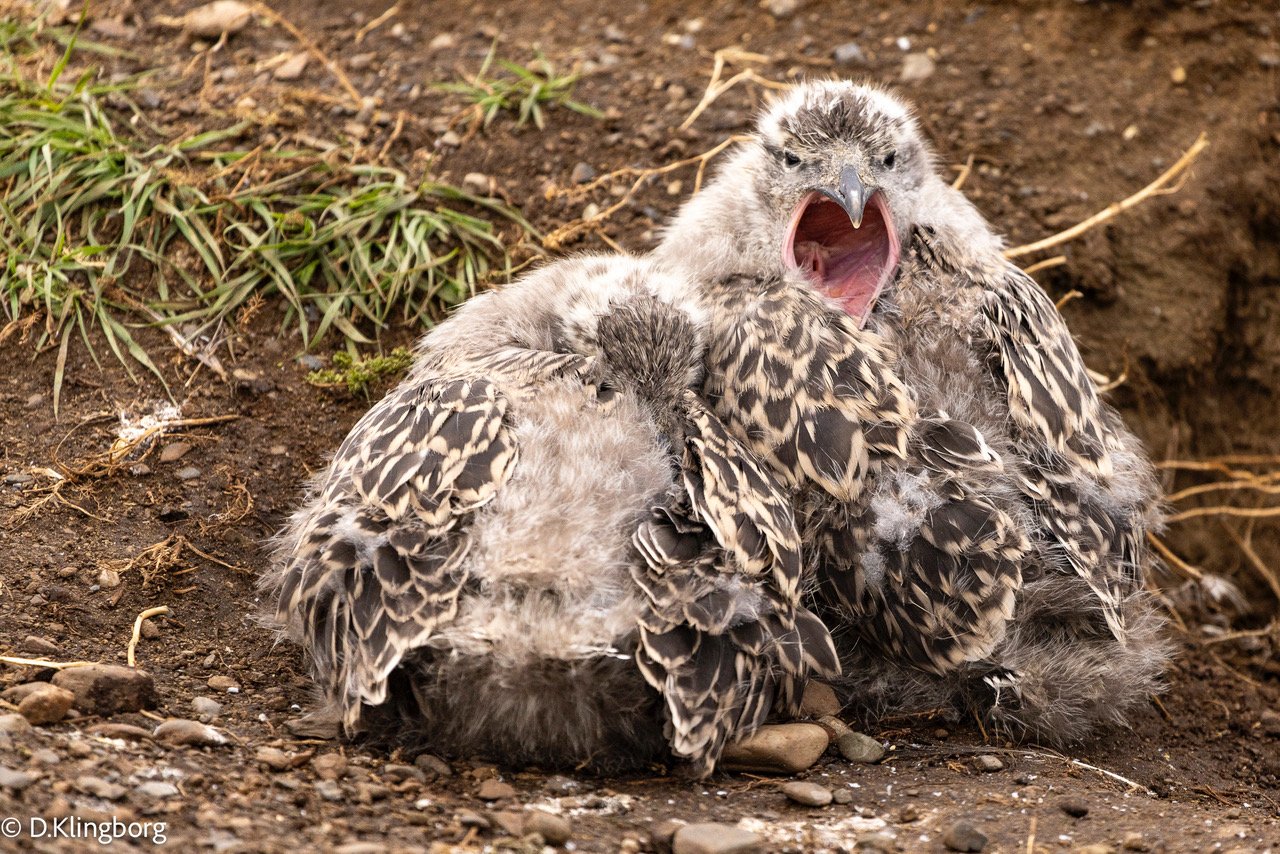
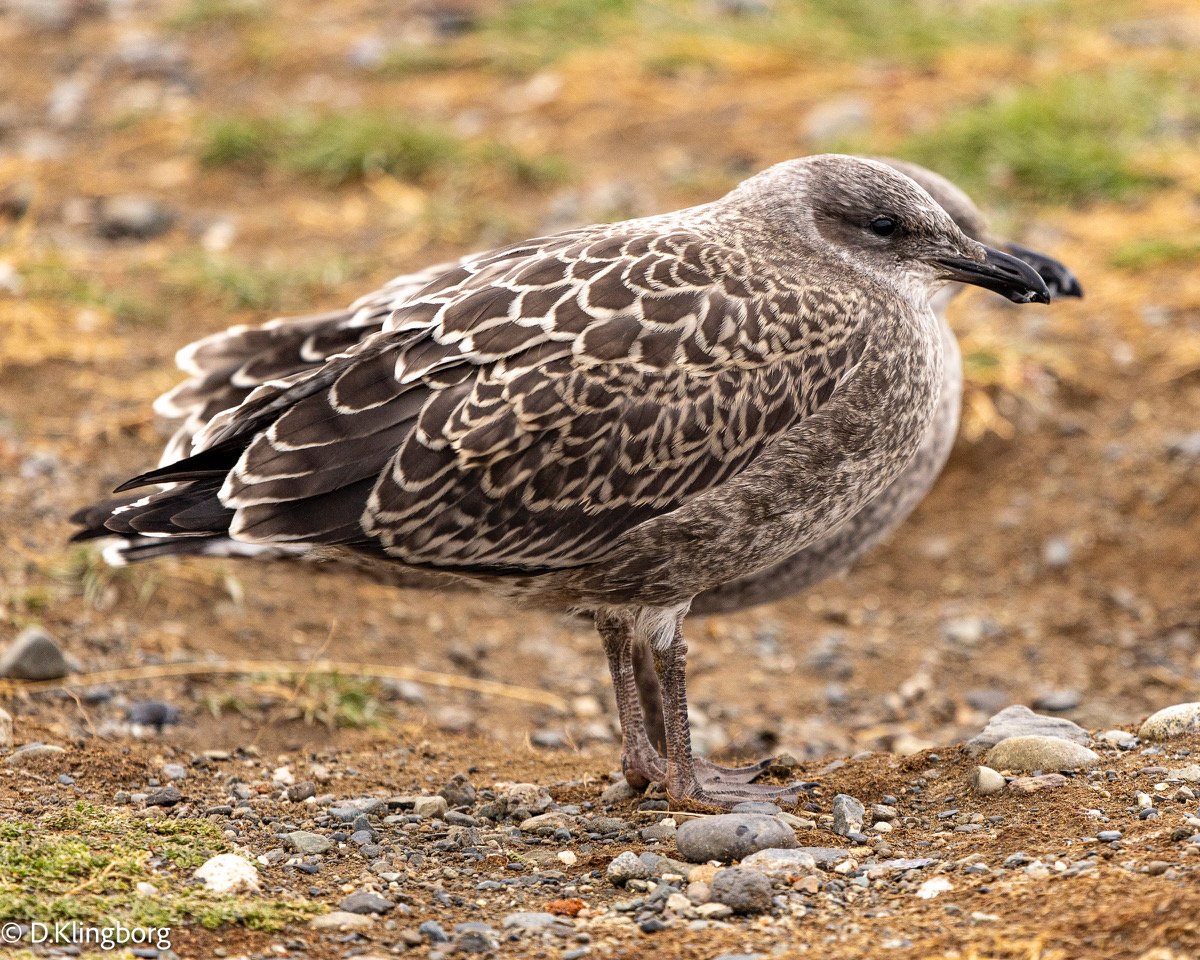
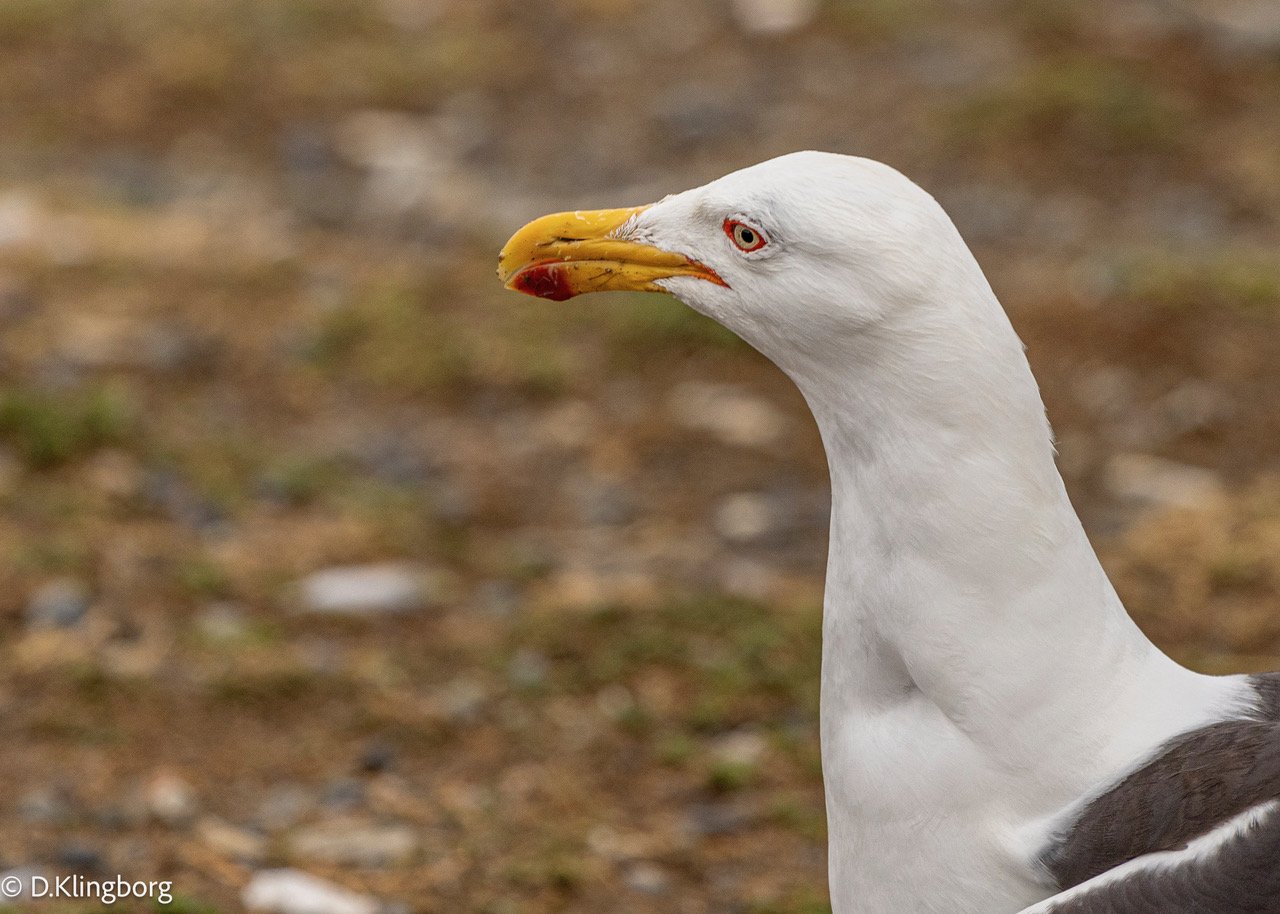
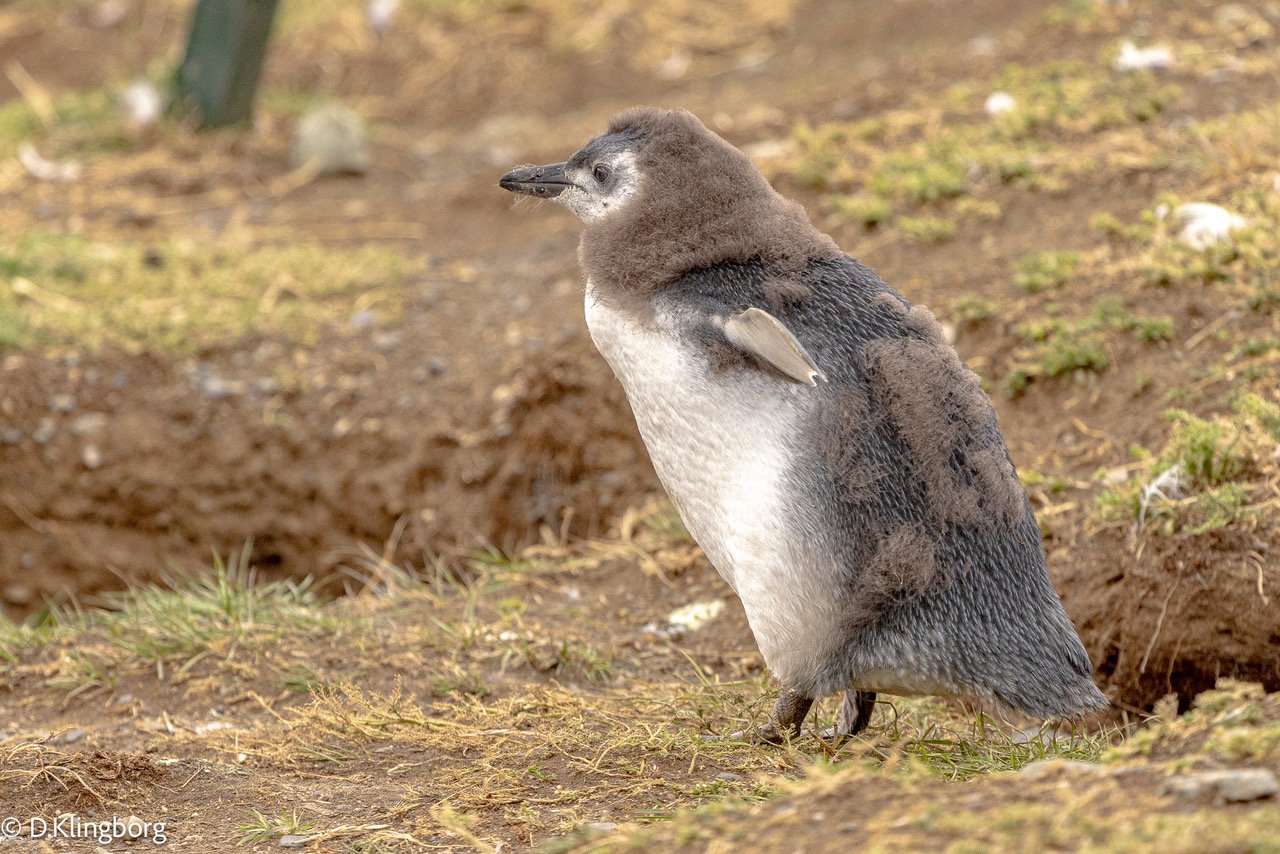
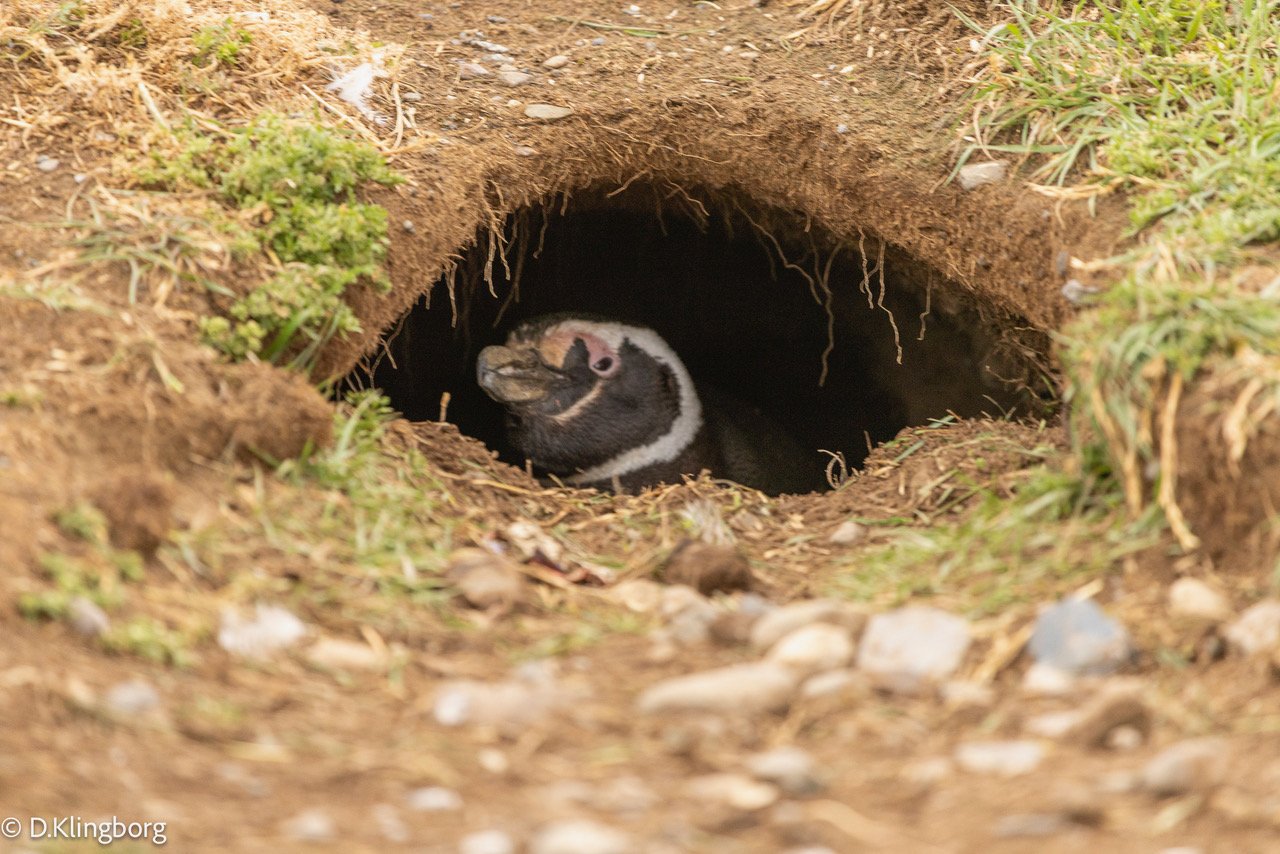
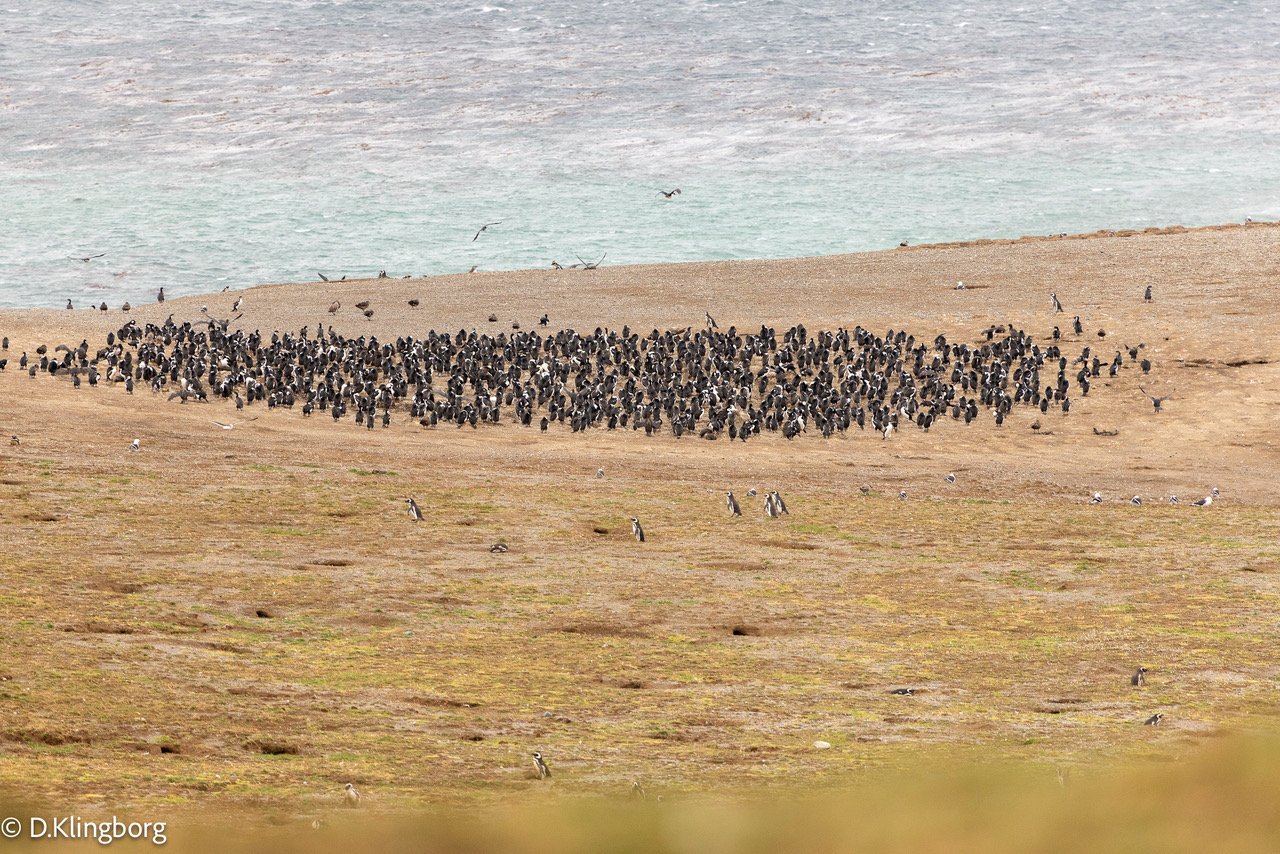
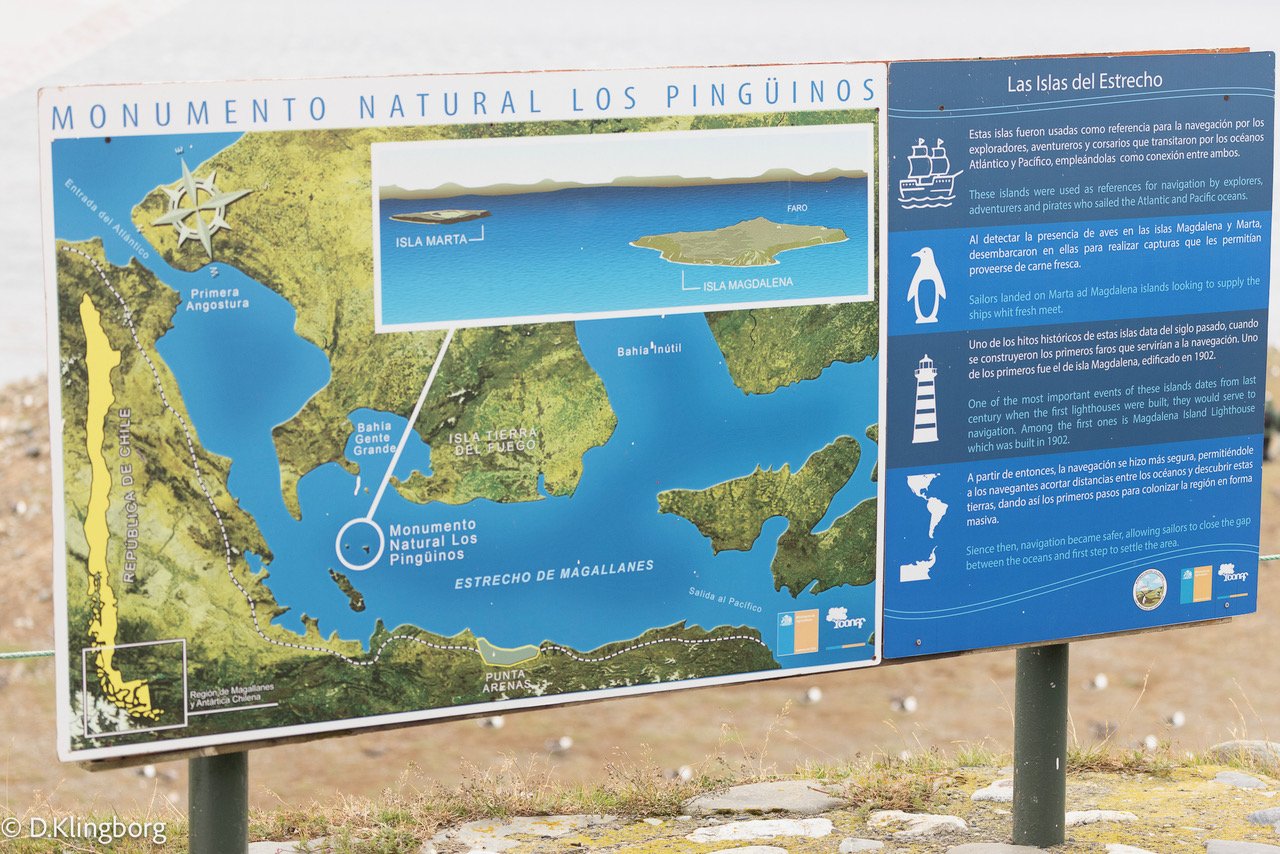
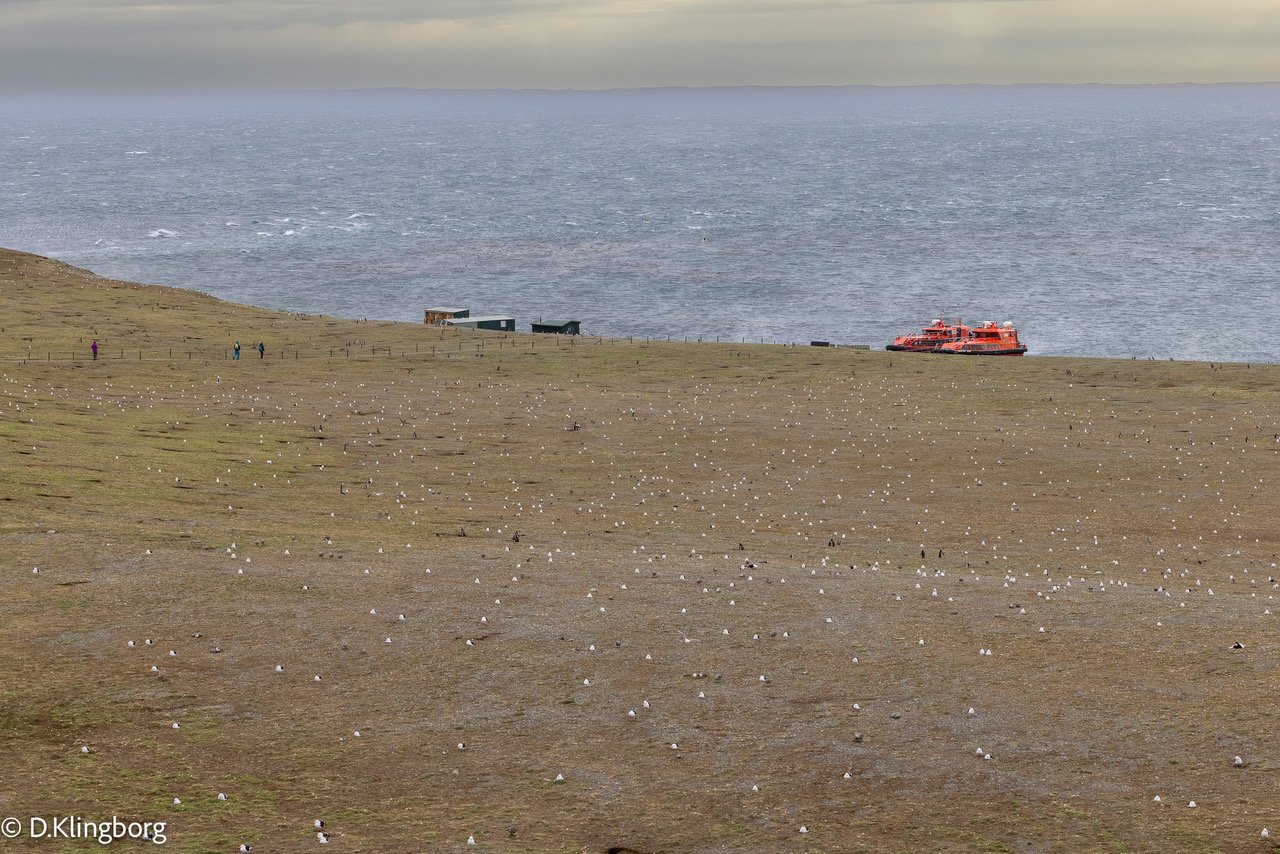
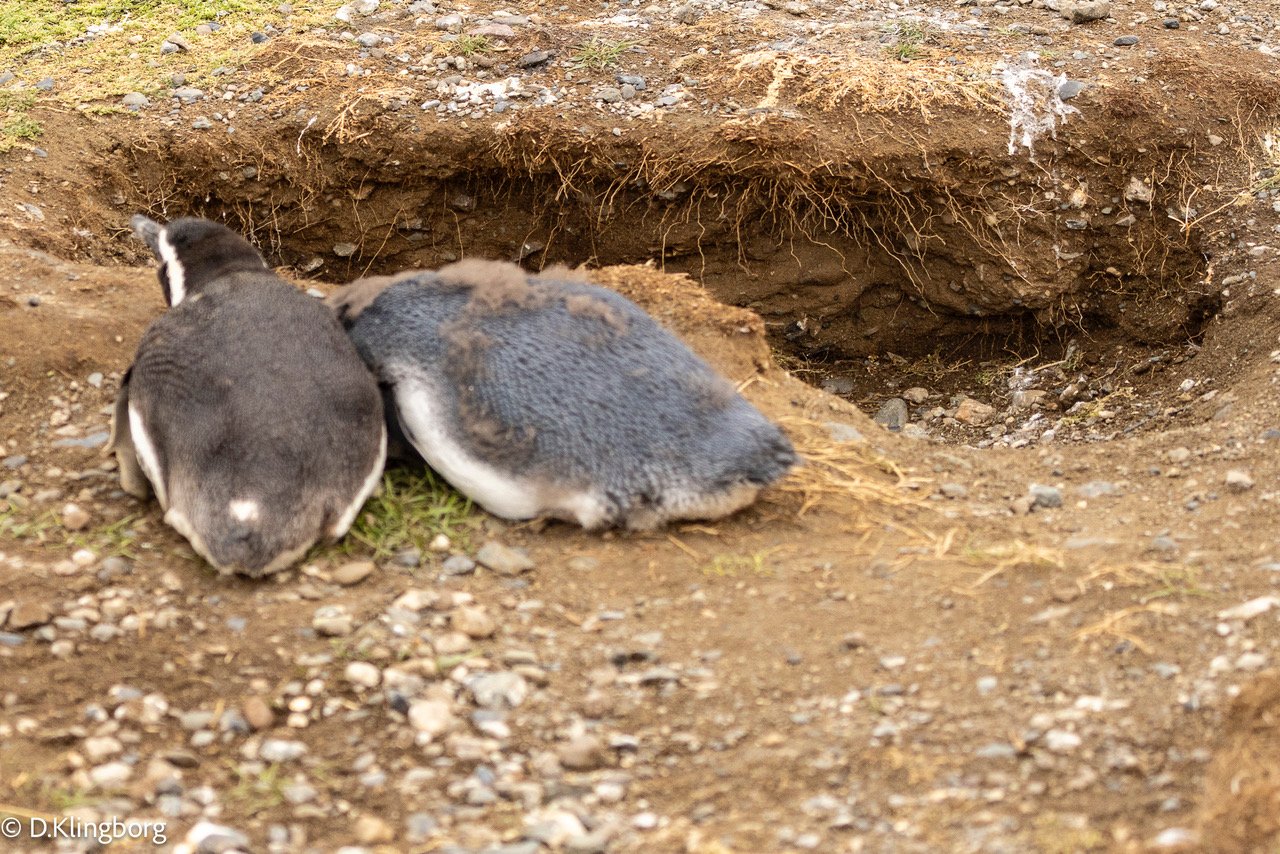
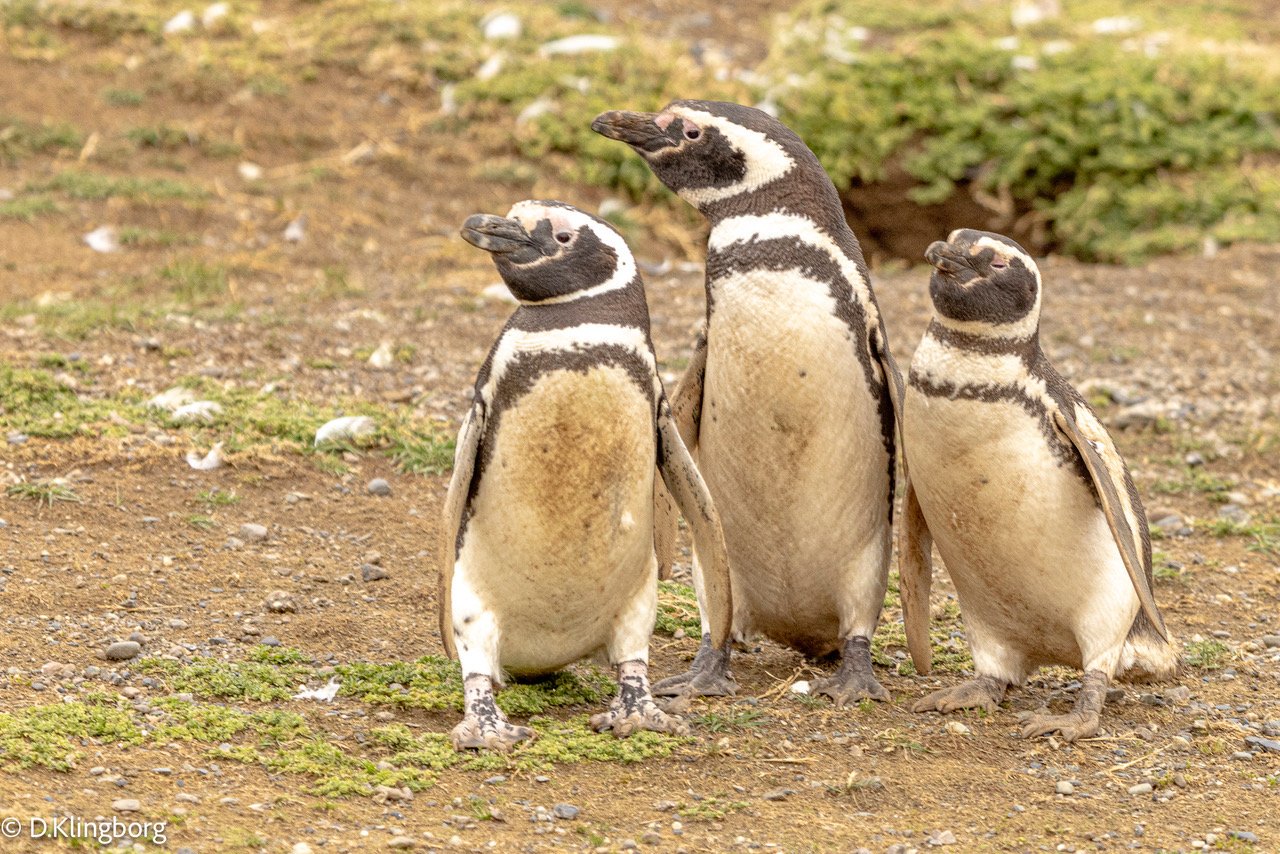
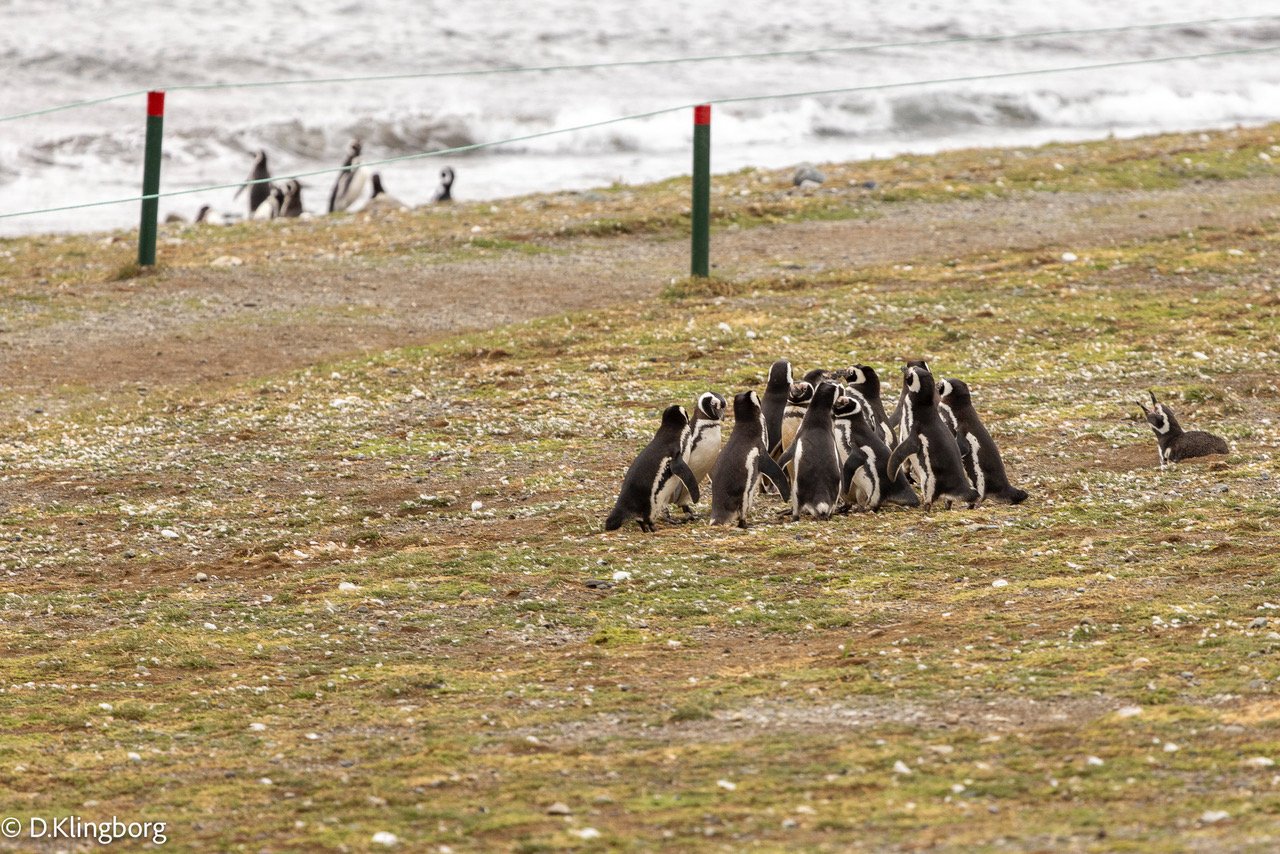

These pictures were taken during the VETS Site Visit to Torres del Paine, Isla Magdalena (Magellanic Penguins) and Tierra del Fuego Island (King Penguins)
The VETS Travel Blog

(pronounced ‘gwuh-KNOCK-oh’ . . . or if you’re really authentic, the “G” is silent and you will say ‘hwuh-KNOCK-oh’)

There’s not actually a Rhea in this picture, but we did see lots of rainbows!


This shot was done through a telescope at the facility— carefully lining up my iPhone to capture the image.

Statler and Waldorf watching “The Penguin Show”

The Crested Cara Cara was very vocal and active!

The beginning of the hike to Condor Viewpoint. Still in the flat lands!

The Sailors are cleaning up after hauling in their King Crab catch!



Hi! This is Dr. Klingborg.
I’ve been performing orthopedic and soft tissue surgery for my entire veterinary 31+ years as a veterinarian!

The TPLO involves rotating the top of the tibia to create a flat surface— this provides stability to the knee!
Over a year ago, we began to offer the TPLO (Tibial Plateau Leveling Osteotomy) surgery for dogs who have ruptured their Anterior (or Cranial) Cruciate Ligament in a back leg. I LOVE this surgery.
There are two ‘most common’ techniques for repairing a ruptured ACL— the Extracapsular Technique and the TPLO.

The ‘Extracapsular Technique’ is better for small dogs and cats of all sizes
We have found dogs that weigh below 50 pounds do well with the Extracapsular technique (~$2500 at my clinic) and over 50 pounds are better suited to the TPLO (~$4200 + medication.)
Cats also can rupture their ACL and the Extracapsular technique works well for them, too!
What I love about the TPLO is that dogs return very quickly to function and many are weight bearing on the surgery leg one week after the procedure. It is important to keep them from running, jumping or stair climbing for 1 - 2 months post surgery. If owners (and their dogs ) follow the rules, the healing and comfort level of these surgical patients is great!

Maggie— one month post TPLO. 11/15/2023

Lateral of Maggie at 1 month post TPLO. Fully weight bearing and happy!
ACL disease most commonly affects middle-aged, large- and giant-breed dogs, but it occurs somewhat frequently in smaller dogs and occasionally in cats. The disease usually occurs in one leg, but rupture of the ACL in the other leg is common within 6-12 months following the first ligament tear.
We’ve recently added another fun surgery to our skill set, and that’s the Elongated Soft Palate surgery. As dogs with short snouts become more and more popular (such as the French Bulldog and the English Bulldog), we are seeing more respiratory issues and heat intolerance.
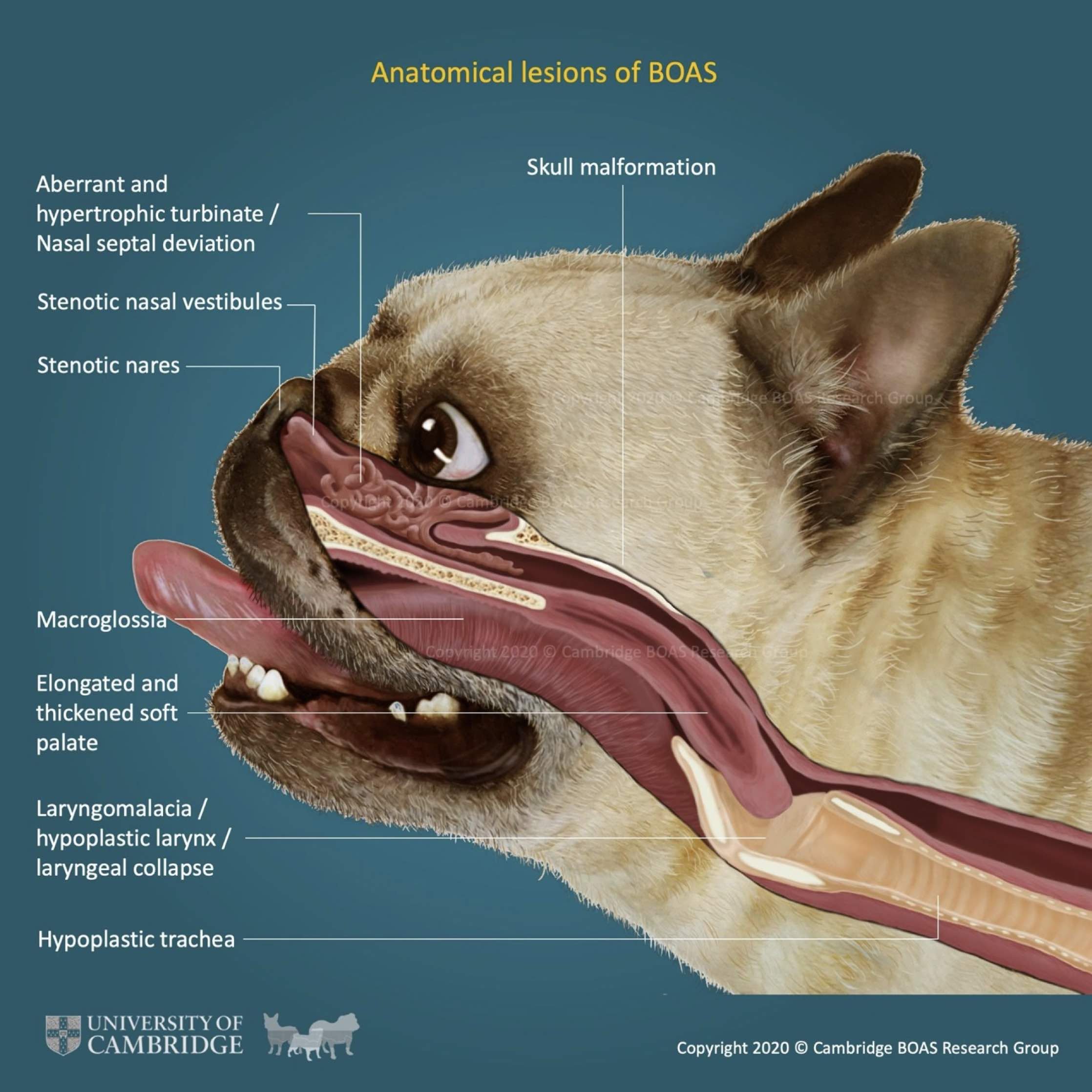
Removing some of the extra tissue from the back of the throat helps give dogs a nice respiratory passage and they seem to have far fewer Respiratory and Digestive problems later in life. We also recommend opening up the nostrils (called ‘stenotic nares’) surgically. This helps to improve the ease of breathing by up to 30%!!!
I can’t do these surgeries by myself— I have a great team of Receptionists, Patient Care Nurses and Surgical Nurses to assist me. Yes, I am the one doing these surgeries, but it takes a Team to have a great outcome and I have an excellent Team at Valley Animal Hospital of Merced.
VAH of Merced takes great pride in our work and service to pets and their owners! We have been able to help pet owners from all over Northern California. You’ll find us at 209.384.7387. You are welcome to email me at vahmerced58@gmail.com and I’ll respond as soon as I can!


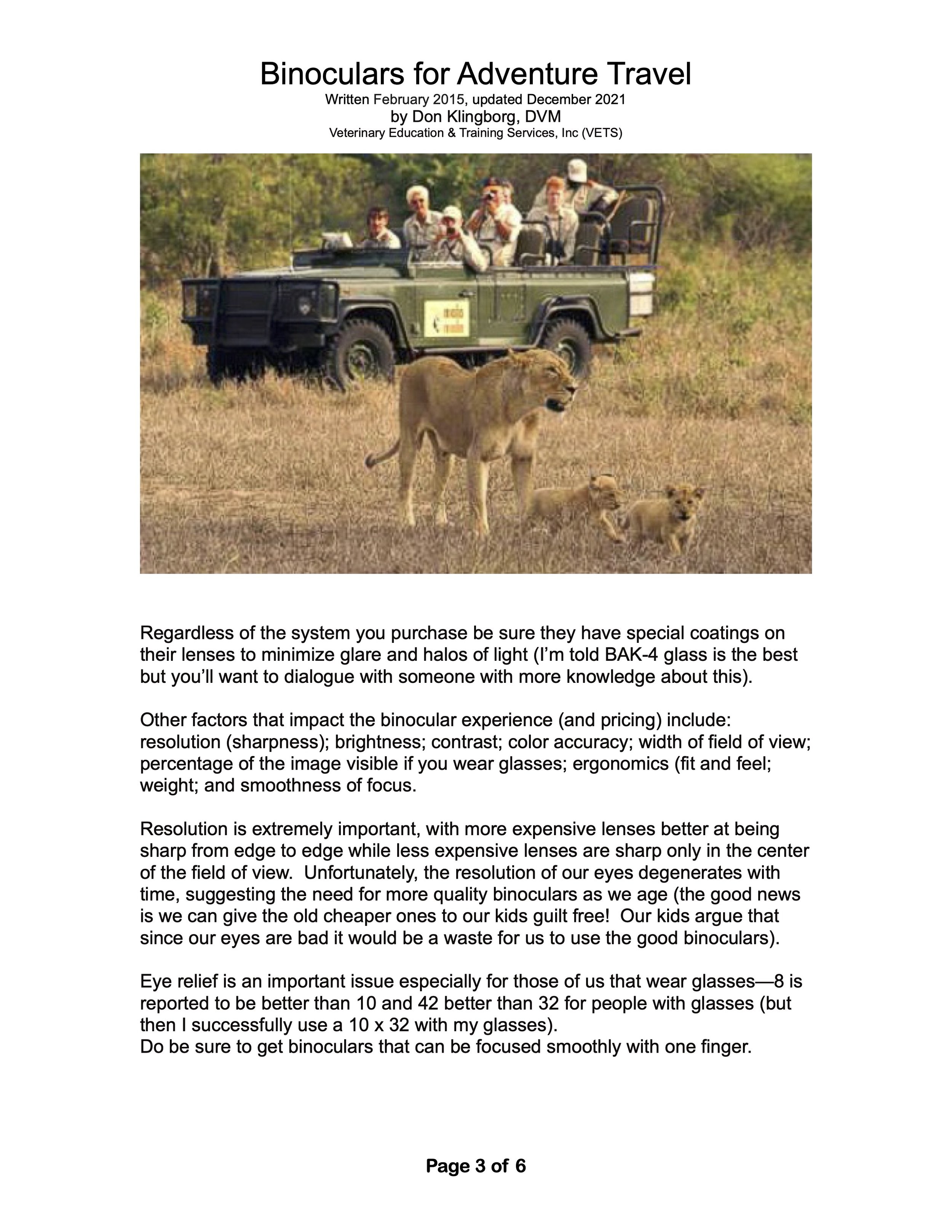



















Many people have heard the term "due diligence" in the context of a business transaction but what, exactly, does it mean? Some treat due diligence like afterthought, but savvy buyers and sellers of veterinary practices leverage the due diligence process to maximize their financial results. In this 90-minute session, our speaker will:
• Demystify the due diligence process.
• For Sellers,explain what buyers want to see during due diligence.
• For Buyers, explain issues with veterinary practices that deserve close inspection.
• For all parties, give tips and tricks to make the due diligence process as smooth and efficient as possible. This makes it easier to close a good deal at the best price ... or to avoid a bad deal altogether!
This session is the second part of a three-part series. In 2021, the first installment of the series described the deal terms that are negotiated in legal documents when buying or selling a veterinary practice. In 2022, the second installment of the series will cover the due diligence process as outlined above. In 2023, the third installment of the series will address the overall road map to buying or selling a veterinary practice.
About the Speaker:
Patrick Klingborg, Attorney, San Diego, CA

Patrick Klingborg, Attorney, San Diego, CA
About the Speaker: Mr. Klingborg is an attorney at the Solomon Ward law firm and he represents owners of veterinary practices when selling their practices. His representation includes helping his clients negotiate the amount of the purchase price, the timing of the payment of the purchase price, the post-closing earnout structure, employment agreements between the selling practice owner and the buyer, real estate leases for the practice location and the allocation of risk for liabilities that may arise after the sale of the practice is complete. Patrick has handled the sale of many types of business, in deals ranging anywhere from a few hundred thousand dollars all the way up to a billion-dollar merger for a publicly traded company.
Patrick is an associate attorney at Solomon Ward and he can be reached at pklingborg@swsslaw.com or 619-238-4882.

WAIKOLOA VILLAGE, HI – Business attorney Patrick Klingborg presented a lecture titled “Negotiating the Sale of Your Practice: What’s on the Table?” on the Big Island of Hawaii last month. The lecture was offered as the business program supplement to The 36th Muller – Ihrke Veterinary Dermatology Seminar & The 22nd Veterinary M-E-D Seminar.

Klingborg addressed the state of the mergers & acquisitions (“M&A”) market. M&A is a term that broadly refers to the industry of buying and selling businesses. Klingborg described the M&A market – including as it relates specifically to the veterinary services industry – as favorable to those interested in selling a business because there is strong demand from buyers. In particular, buyers are attracted to the reliable year-over-year growth in revenue and/or Earnings Before Interest, Depreciation and Amortization (“EBITDA”) that veterinary practices often enjoy.
When it comes to the sale of a veterinary practice, Klingborg explained several of the major deal points that sellers can expect to negotiate – and where sellers can push for more favorable terms – including the importance of a good term sheet (also known as a letter of intent), the different options for structuring the transaction, the type of consideration a seller may receive (i.e., cash, stock or a mix of both), the range of payment schedules, the scope of assets and liabilities transferred to the buyer and the employment package for the selling practice owner.
Potential sellers can seek to maximize their return in several ways. Strategies include strengthening the EBITDA of a practice (such as by updating pricing, increasing marketing, offering new products or services and decreasing expenses), organizing financial statements and contracts in advance so that it is easy for a potential buyer to quickly review them and highlighting any advantages unique to a practice due to its location, market share or client base.
For more information, contact Patrick Klingborg at pklingborg@swsslaw.com or 619-238-4882.
Patrick A. Klingborg | Attorney
Solomon Ward Seidenwurm & Smith LLP
401 B Street Suite 1200 | San Diego, CA 92101
o 619.231.0303 | d 619.238.4882 | v-card
pklingborg@swsslaw.com | www.swsslaw.com
Please read the legal disclaimer that governs this email and any attachments
Patrick Klingborg is a transactional attorney who has represented owners of medical practices in selling their practices to various large "corporate" buyers. In doing so, he helps his clients negotiate the amount of the purchase price, the timing of the payment of the purchase price, the post-closing earnout structure, employment agreements between the selling practice owner and the new corporate buyer, real estate leases for the practice location and the allocation of risk for liabilities that may arise after the sale of the practice is complete. One of Patrick's strengths is the fact that he has a broad background from which to draw during negotiations. With experience at both a mid-size regional law firm and a large international law firm, he has worked on business sales ranging anywhere from a few hundred thousand dollars all the way up to a billion dollar merger for a publicly traded company.
Patrick is an associate attorney at Solomon Ward and he can be reached at pklingborg@swsslaw.com or 619-238-4882.
Registration NOW OPEN for VETS Adventure Travel to Ireland & Scotland, July 2020
Join VETS for an adventure focused on touring Ireland and Scotland. Our itinerary will allow you to see some of the “Best Of” these two amazing nations while experiencing the unique History, People and Places. You will be earning up to 12 units of RACE-approved continuing education credit (see the very bottom of this page) while traveling with fellow veterinarians, their families and friends. This itinerary may be modified slightly during our trip in order to pursue opportunities that could enhance our experience!
Many pubs have nightly entertainment from local talent!
Depart from North America on July 1st, arriving in Dublin, Ireland on July 2nd!
Morning arrival from North America to Dublin, a busy city founded in the 9th century on the River Liffy. At the most recent census, about 2 million of Ireland’s total population of 4.7 million live in the immediate area of Dublin.
You’ll be met at the airport and transferred to The Green Hotel, a luxury hotel in the center of Dublin and easy walking distance to the most interesting areas (e.g. one idea of where to go . . . there are > 1,000 pubs in Dublin!)
A light lunch will be provided at the hotel, afternoon on your own.
Afternoon Check-in.
Late Afternoon: Depart for Book of Kells & Trinity College.
This evening you’ll be our guest at Trinity College (founded in 1592) for a visit to the Book of Kells, their historical library known as The Long Room and a Welcome Banquet in ‘Great Hall.’
Historic Trinity College
The Illuminated Manuscript of The Book of Kells
After Dinner, we’ll provide transportation back to The Green Hotel.
Breakfast at the hotel.
Morning departure for University College Dublin (the home of the Ireland’s national veterinary college.) We will participate in two RACE approved lectures, the first on “How Diseases are Transmitted” (think measles, Foot and Mouth Disease, African Swine Fever, etc) and a second on “How Medieval Folk Remedies Evolve to Become Modern Pharmaceuticals.”
Lunch provided after the CE Event.
Afternoon: Dublin city tour to the Old Jameson’s Distillery, St. Patrick’s Cathedral and the Guinness Storehouse.
The Guinness Storehouse.
Evening on your own or sign up for an optional guided Literary Pub Crawl and dinner. $120 per person includes Tour, Dinner & Drinks.
Overnight at the Green Hotel.
Breakfast at hotel.
Morning: Bus to Boyne Valley about 2 hours north of Dublin. Visit a historical area called Newgrange built before the pyramids in Egypt. Lunch will provided as part of the Newgrange trip.
We will also visit a Trim Castle.
Trim Castle, the largest Anglo-Norman castle in Ireland, was constructed over a thirty-year period by Hugh de Lacy and his son Walter. Hugh de Lacy was granted the Liberty of Meath by King Henry II in 1172 in an attempt to curb the expansionist policies of Richard de Clare, (Strongbow). Construction of the massive three storied Keep, the central stronghold of the castle, was begun c. 1176 on the site of an earlier wooden fortress. This massive twenty-sided tower, which is cruciform in shape, was protected by a ditch, curtain wall and moat.
Return to Dublin.
Evening at leisure.
Overnight at the Green Hotel.
Breakfast at hotel
Morning: Depart to bus to County Clare, with a visit to Bunratty Castle and Folk Park, a residential castle built ~1425 as a defensive fortress for a family (there are other castles such as Dublin Castle that were built to protect governments/kings/etc.). The Folk Park is part of the castle grounds and has reconstructed typical housing with period furniture representing how the Irish lived.
Lunch provided.
We’ll drive to the Cliffs of Moher, famous sea cliffs that are as high as 700 feet above the Atlantic Ocean and look out over the Aran Islands and Galway Bay.
Next we’ll drive through The Burren, about 200 square miles of land dominated by limestone formations and what was home to many early civilizations. This area was hit especially hard by the Great Famine and Black Death in the early 1300’s.
Limestone formations of The Burren
We’ll continue to the Inn at Dromoland, our hotel adjacent to Dromoland castle and on the original castle grounds.
This evening we’ll host a dinner at Durty Nellys, an authentic pub close to Bunratty Castle and enjoy some fine pub food as well as Irish entertainment.
Overnight at the Inn at Dromoland Castle.
Breakfast at the Inn at Dromoland.
Morning: We’ll depart for the Connemara peninsula and visit Kylemore Abbey. This is one of the most photographed abbey’s in the world and we’ll take a tour!
Lunch provided.
Return to our hotel at The Inn at Dromoland.
Afternoon at leisure.
Evening at leisure with bus service to the little town of Ennis, that we fell in love with on our last trip. It’s not too far away and plan on heading there to walk around, visit an ancient Friary, and eat in at local pub (hopefully with music).
Dinner on your own in Ennis or it will also available at the Inn or make reservations at Dromoland Castle (5 star restaurant-we recommend you make dinner reservations before you leave to go to Ireland).
Breakfast at the Inn at Dromoland.
The region of Kenmare is part of the “Mini-Ring of Kerry”
Morning: We’ll continue our adventure by heading south, crossing from County Clare to County Kerry by ferry boat, and head to the small city of Kenmare as part of “The Mini Ring of Kerry.” We’ll enjoy lunch in Kenmare, then continue up through Moll’s Gap and Ladies View with a stop at Muckross house (a 2018 “Traveler’s Choice on TripAdvisor), a restored home and gardens just east of Killarney.
The Muckross house
We’ll head to our hotel, Europe Hotel.
The Europe Hotel with views of the Lakes of Killarney
Killarney is so popular because of its location but also because the town itself is so stereotypically Irish. Plan to walk through downtown to see the storefronts.
We will host a Dinner Banquet with Entertainment at the Europe Hotel.
Overnight at the Europe Hotel.
Breakfast at The Europe Hotel
Your free day to do what you want to do!
Options include: (You Choose ONE, please)
1) Experience a jaunting cart with a pony ride up and over the Gap of Dunloe, then have some refreshments at Lord Byron’s historical cottage on the lake, just across an ancient stone bridge from where the cart will let you off. After some refreshment you’ll get on a boat with about 10 people and make your way through three connecting lakes to Ross Fort. You’ll be picked up there and returned to the hotel. Dinner on your own. This tour costs $195 per person.
The Gap of Dunloe
or
2) Choose the incredibly beautiful tour of the Dingle Peninsula. Lunch in the town of Dingle. Dinner on your own. This tour costs $130 per person.
The Dingle Peninsula
or
3) Golf at the Killarney Golf Club. You’ll be transported there and picked up. Reservations a must before arriving in Ireland and we’ll need the information to coordinate your transport! Lunch on your own. Dinner on your own. Golf fees are $290 per person.
The Killarney Golf & Fishing Club
or
4) Choose to make use of the AMAZING Spa at The Europe Hotel. Beautiful facilities in a beautiful location. Lunch on your own. Dinner on your own.
The Spa at the Europe Hotel, Killarney
or
5) Relax, walk around Killarney town, and enjoy the Europe Hotel’s grounds. Lunch on your own. Dinner on your own.
The Europe Hotel Grounds, with Breathtaking Views
Killarney— a great place to walk & shop
Breakfast at The Europe Hotel.
Early morning: Transfer to Shannon Airport (~2 hours) to catch our late morning ~90 minute flight to Edinburgh, Scotland. Flight leaves at 10:55 am and arrives at 12:30 pm.
12:30 pm: Arrive in Edinburgh. Panoramic orientation to Edinburgh.
Afternoon: Lunch at restaurant Otro.
Late Afternoon: Check into the Kimpton Charlotte Square Hotel, perfectly positioned for our exploration.
Afternoon at leisure.
Group dinner at Howies Waterloo within walking distance from hotel.
Overnight Kimpton Charlotte Square Hotel.
Breakfast at the Kimpton Charlotte Square Hotel.
Morning: Depart hotel and arrive in time for a VIP pre-opening admission and Private Tour of Edinburgh Castle.
Late Morning: Guided tour of the Royal Mile and Old Town. Lunch on your own.
Afternoon: Visit to Holyrood House, the ceremonial home of Queen Elizabeth II. According to medieval legend, the Abbey was founded around 900 years ago in 1128 by David I of Scotland. While out hunting, the king had a vision of a stag with a glowing cross between its antlers. Seeing this as a message from God, he had an abbey built on the very same spot. 'Holy Rood', the name of the Abbey, and subsequently the Palace, means ‘Holy Cross’.
Late Afternoon: Afternoon at leisure.
Evening: Dinner and evening at Ghillie Dhu Burly Ceilidh. (Walking distance from hotel.)
Overnight Kimpton Charlotte Square Hotel
Breakfast at the Kimpton Charlotte Square Hotel
Morning: Check out and travel toward Inverness
Late Morning: Blair Castle has been the home of the Atholl family for over seven centuries. The castle has had a diverse history, witnessing both turbulent and peaceful times, enlarged and adapted over 700 years to suit the needs of the family and style of the day. Home to politicians, soldiers, agriculturalists and entrepreneurs, the family history is brought to life against a backdrop of fine 18th century interiors and Scottish baronial architecture, in 30 rooms.
Afternoon: Lunch at Blair Castle.
Inverness Castle and the River Ness
Late Afternoon: Panoramic Orientation to Inverness. Inverness is regarded as the capital of the Highlands. Inverness lies near two important battle sites: the 11th-century battle of Blàr nam Fèinne against Norway which took place on the Aird and the 18th century Battle of Culloden which took place on Culloden Moor.
Late Afternoon: Check into the Kingsmills Hotel.
Cocktails and appetizers on a Loch Ness cruise (“Here Nessie, Nessie, Nessie.”)
Dinner on your own.
Overnight at the Kingsmills Hotel.
Breakfast at the Kingsmills Hotel.
Visit the Culloden battlefield. The Culloden Battlefield is the historic site of the last battle to take place on British soil in 1746. This battle is frequently referred to as one of the most important for Scotland, as it marked the end of the clan system in the highlands.
Lunch and Afternoon at Leisure.
Group dinner Finale at Achnagairn Castle, a five star resort with stunning views. Embrace your inner Scot and dress the part for our final banquet— Kilt Rental for Men is $175 , Sash & Brooch Rental for Women is $50.
Overnight at the Kingsmills Hotel.
Breakfast at the Palace Hotel.
Depart for Inverness airport to start your journey home.
Flights to London Heathrow or Amsterdam Schiphol International Airports to connect with flights home.
You will earn up to 12 units of RACE approved CE credit for veterinarians attending the Essence of Ireland/Scotland trip (based on lectures, case studies and passing an open-book quiz) and have more fun than a litter of kittens.

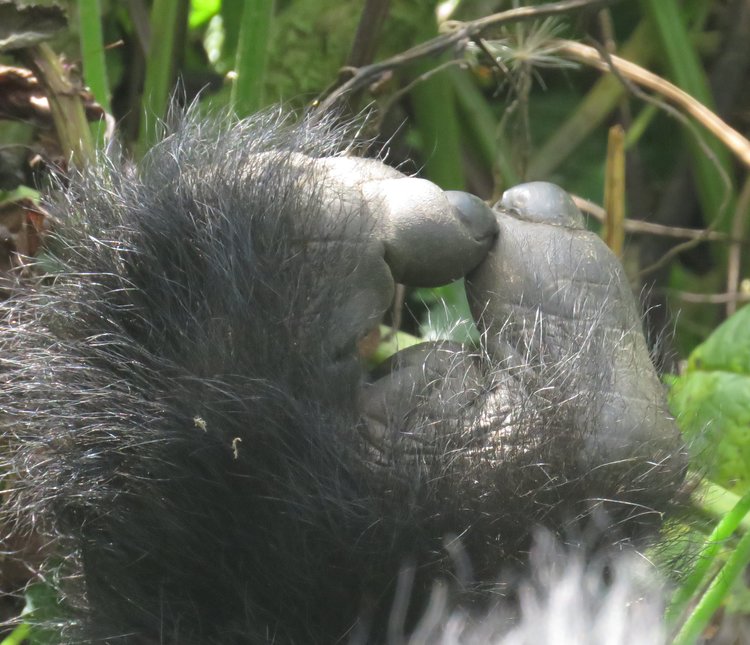


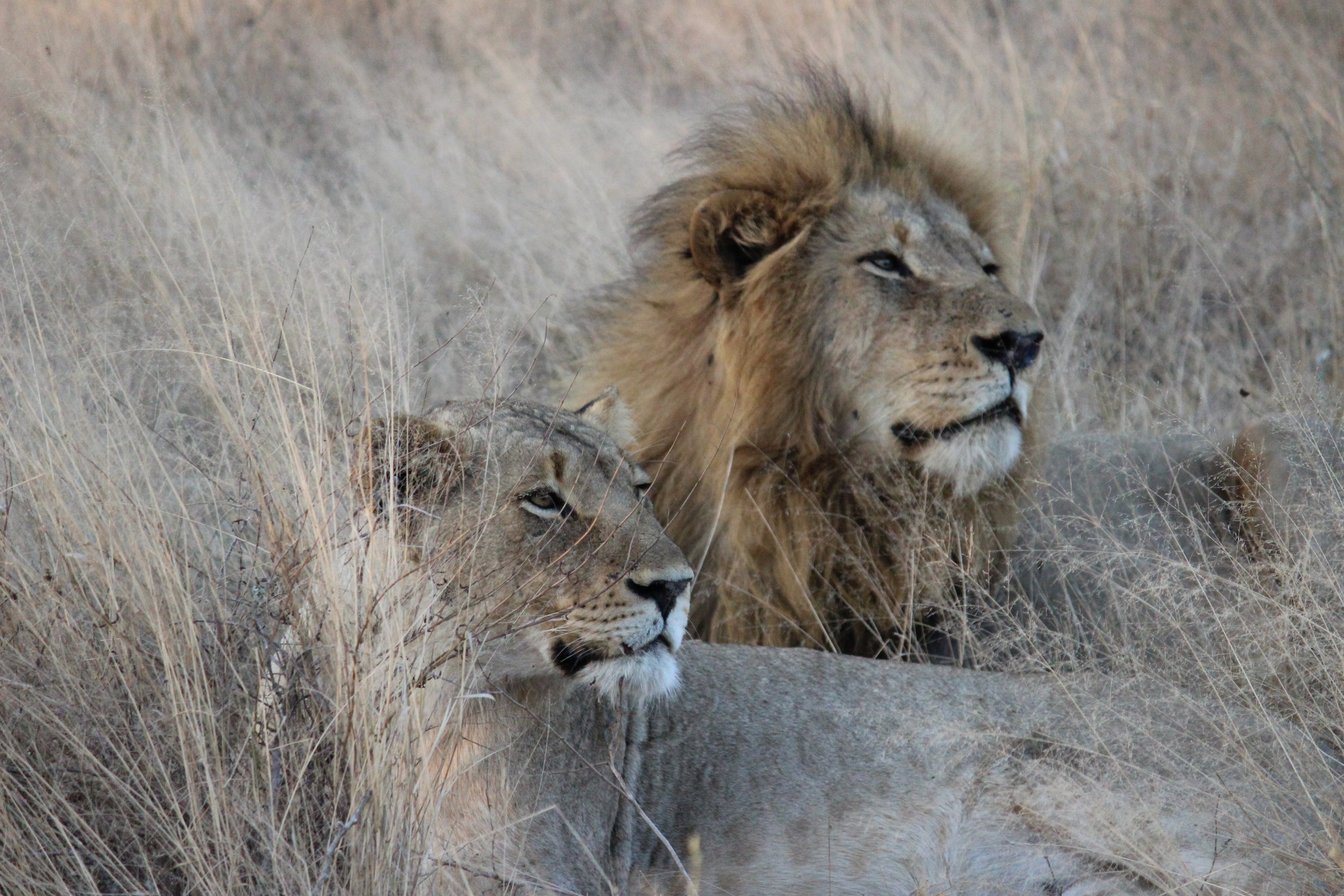
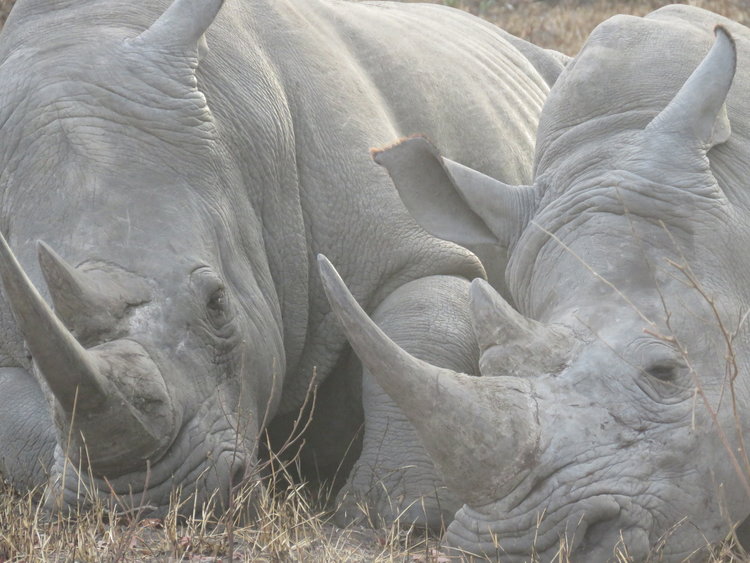

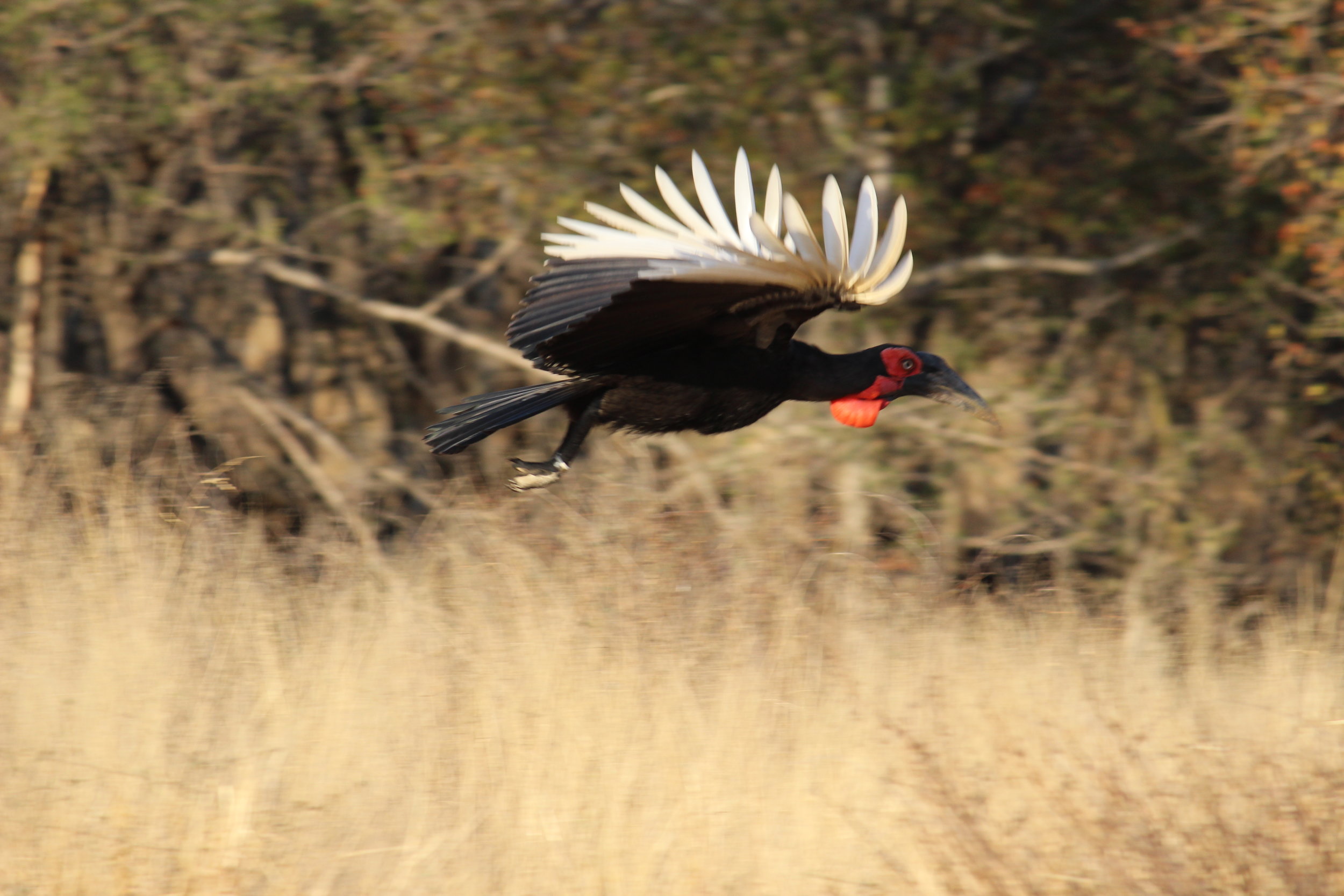
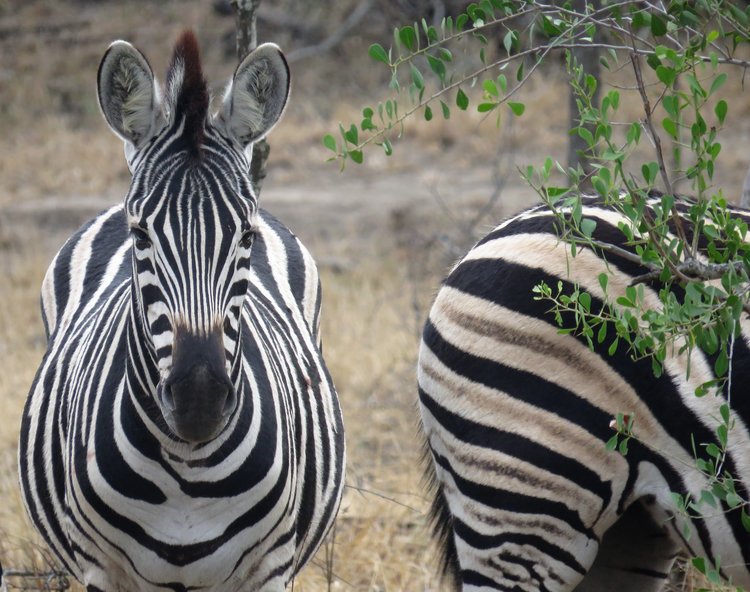

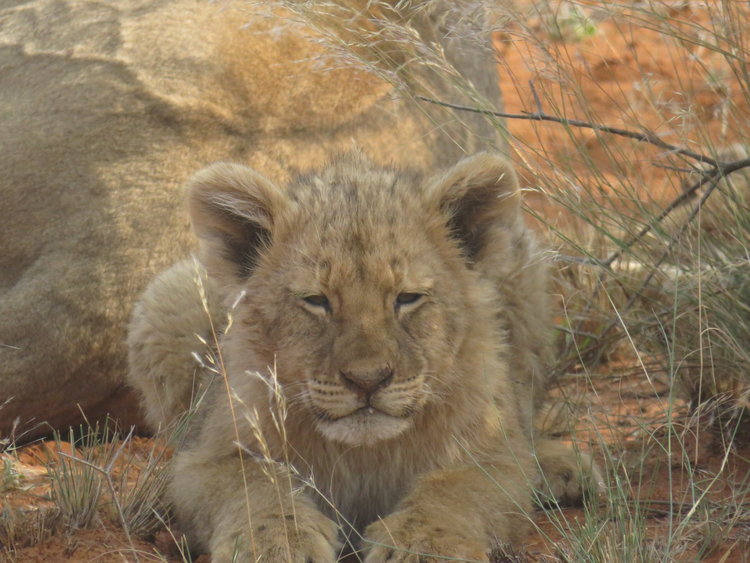

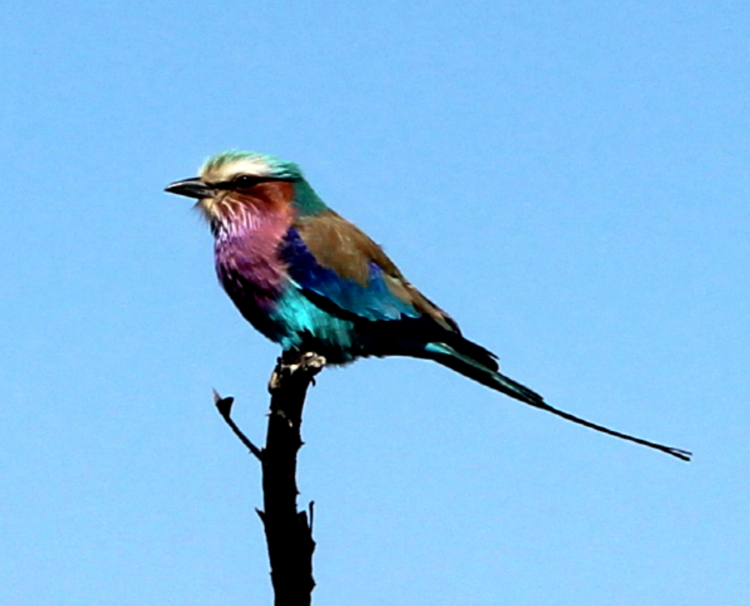
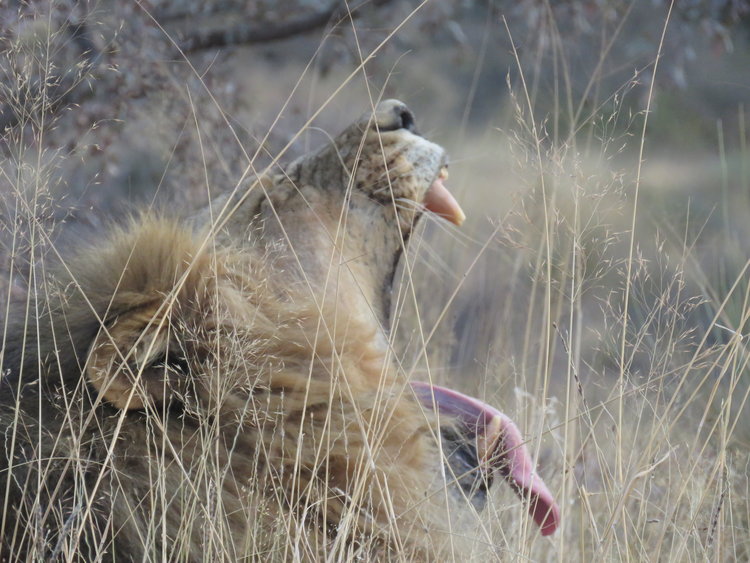
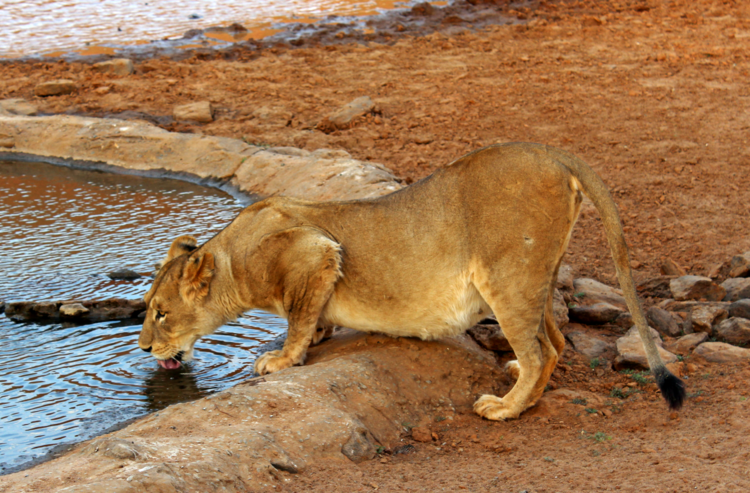
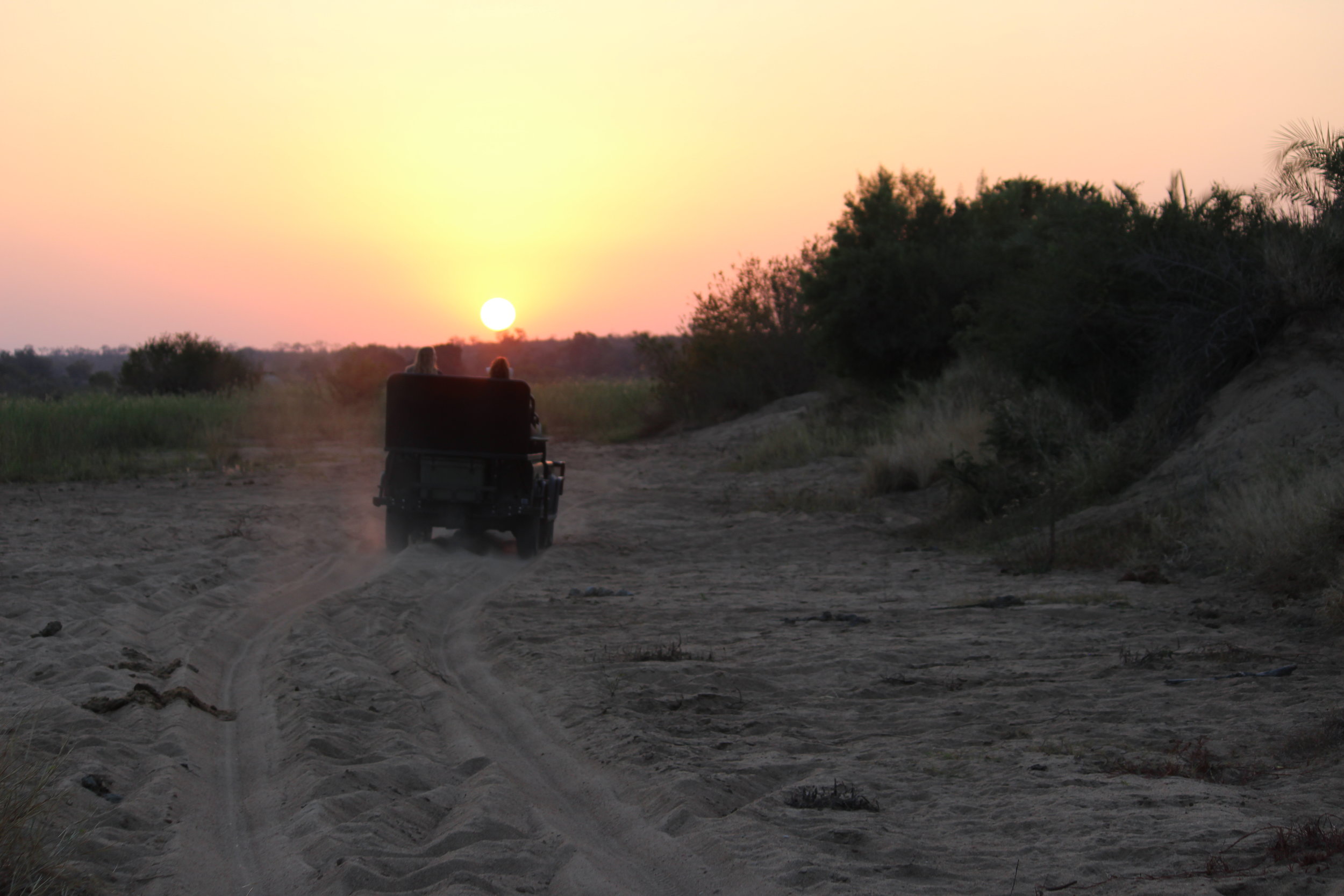
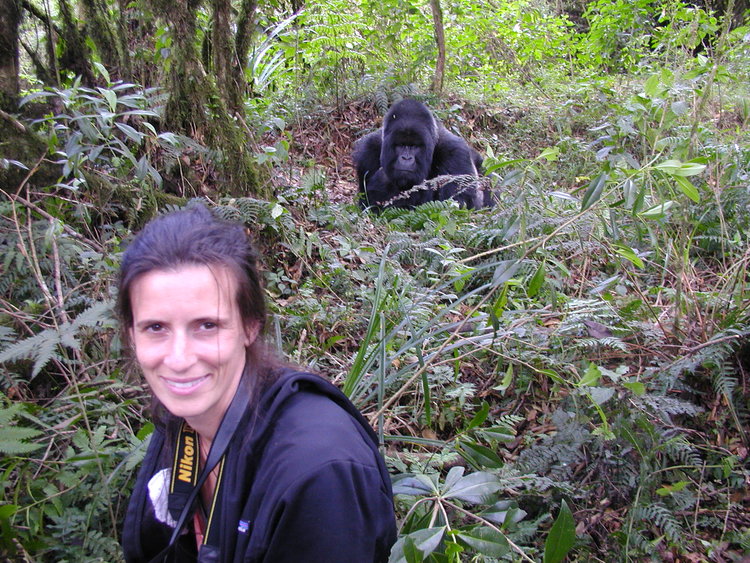
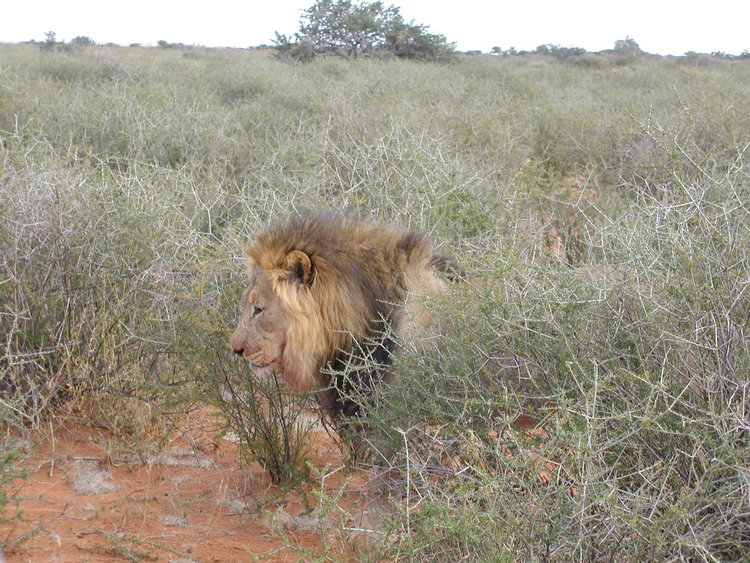
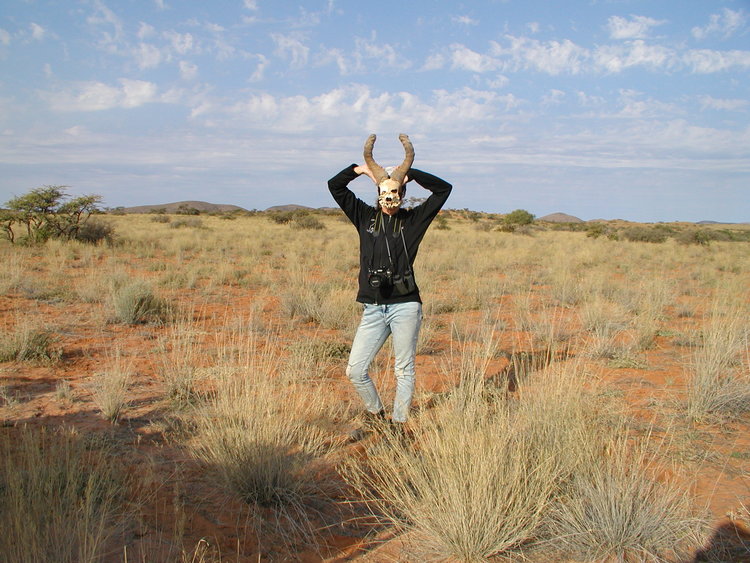
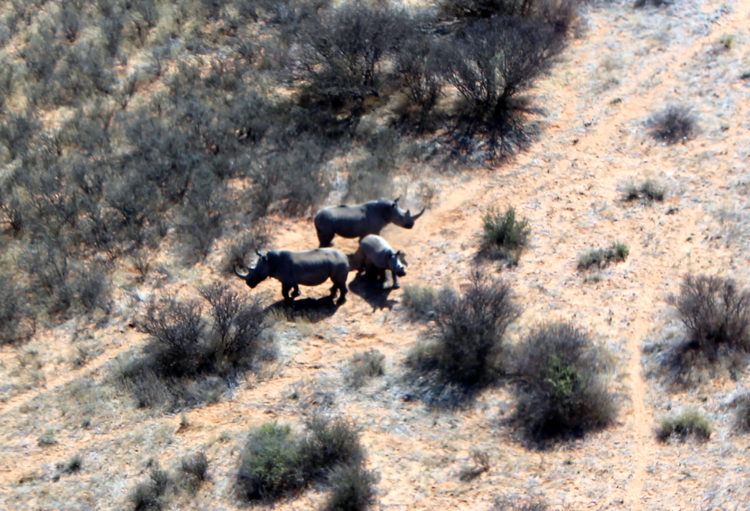
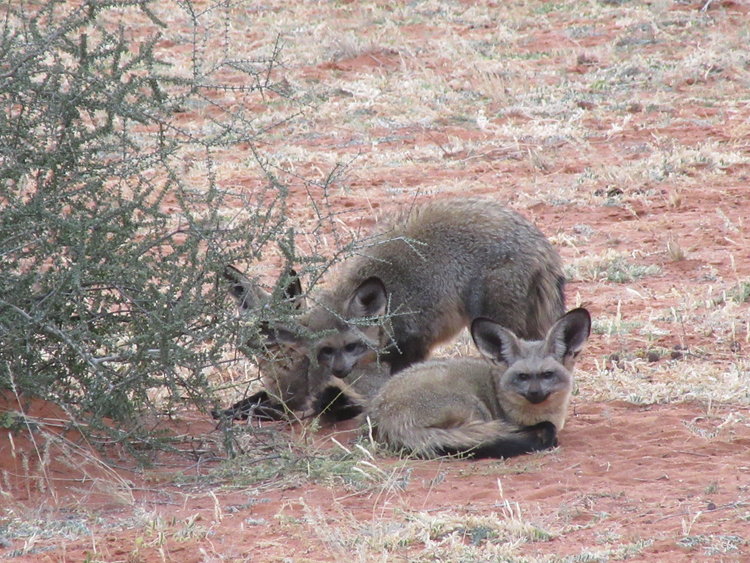



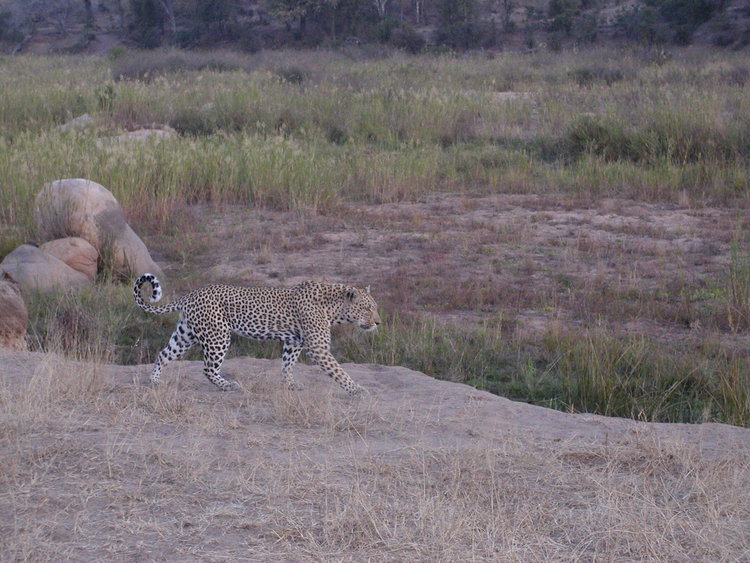

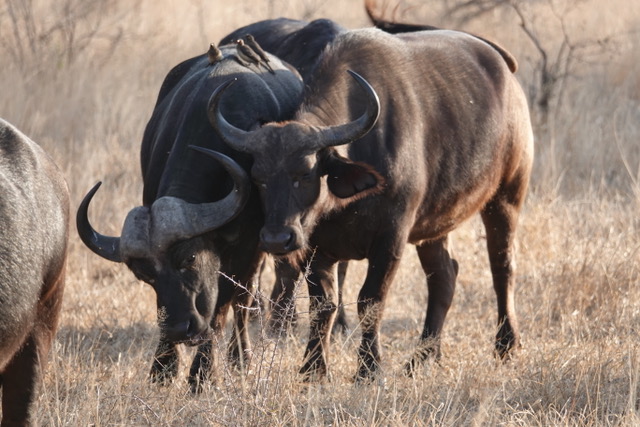
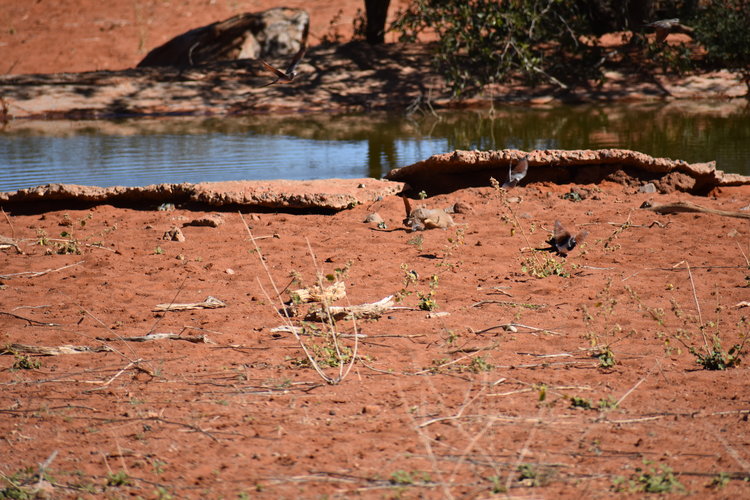

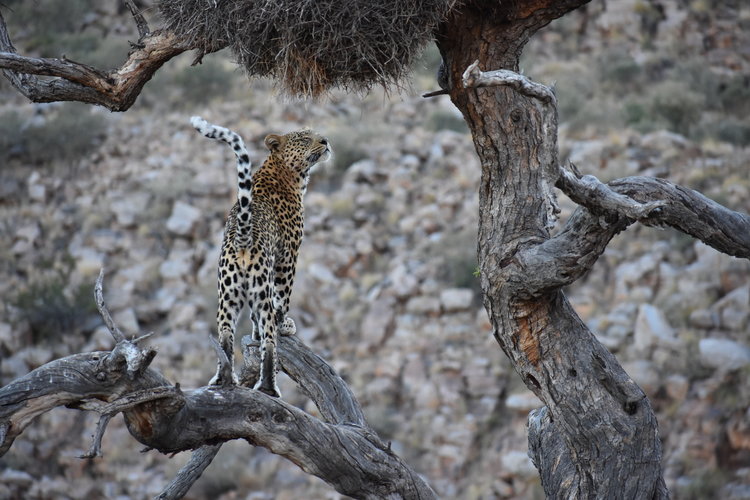
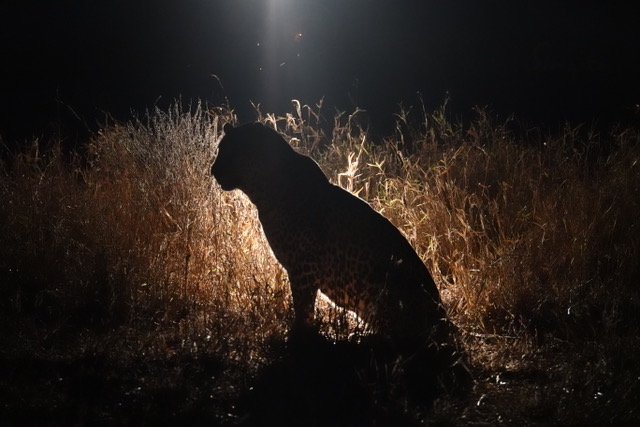
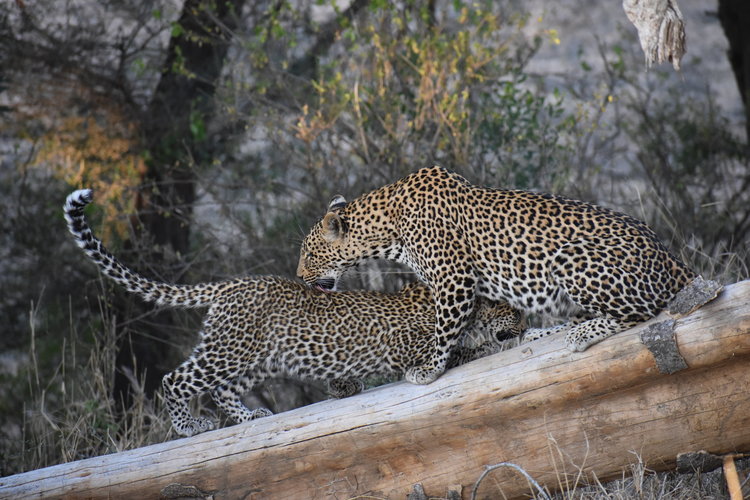
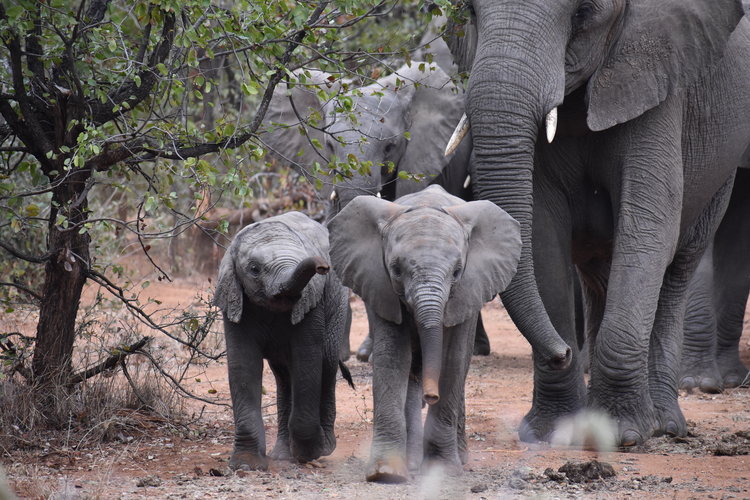
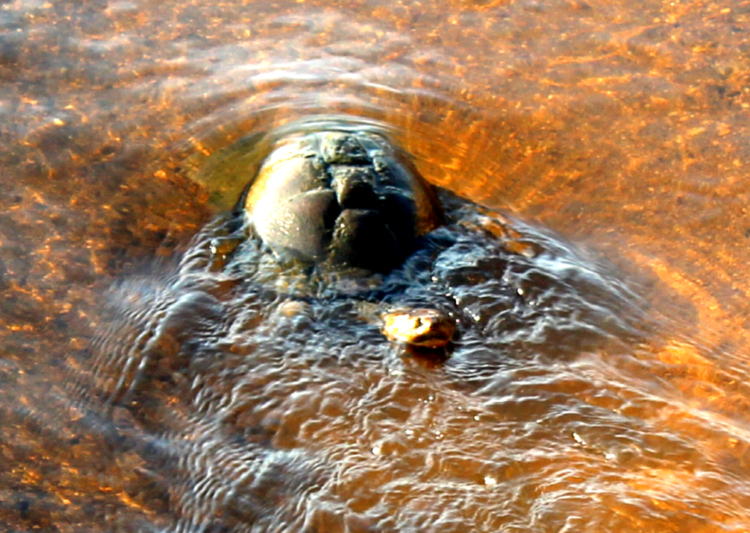
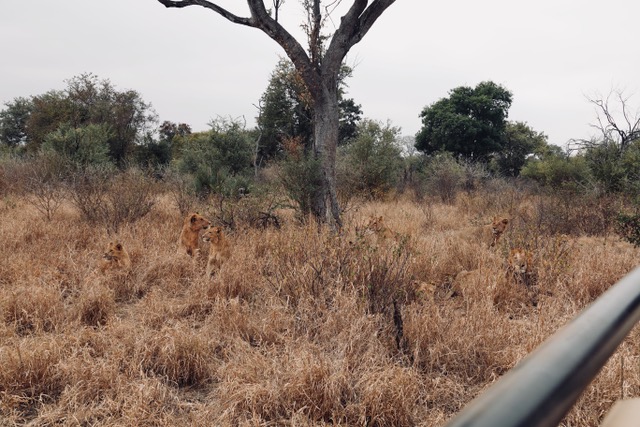
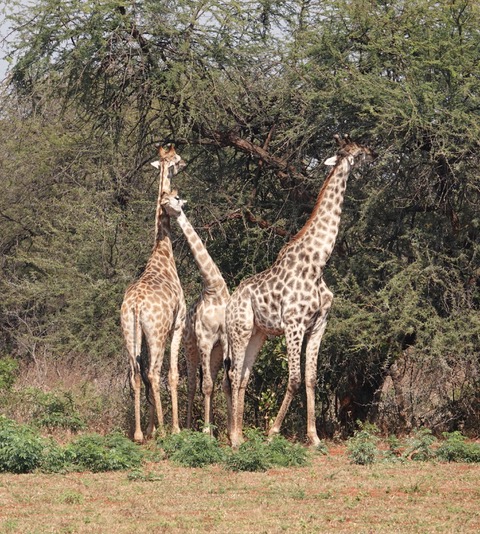
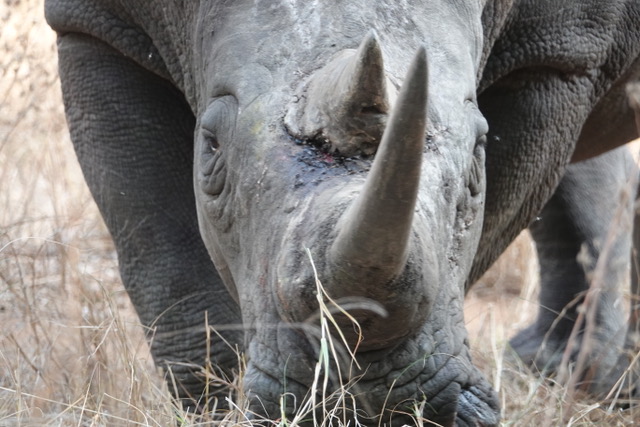

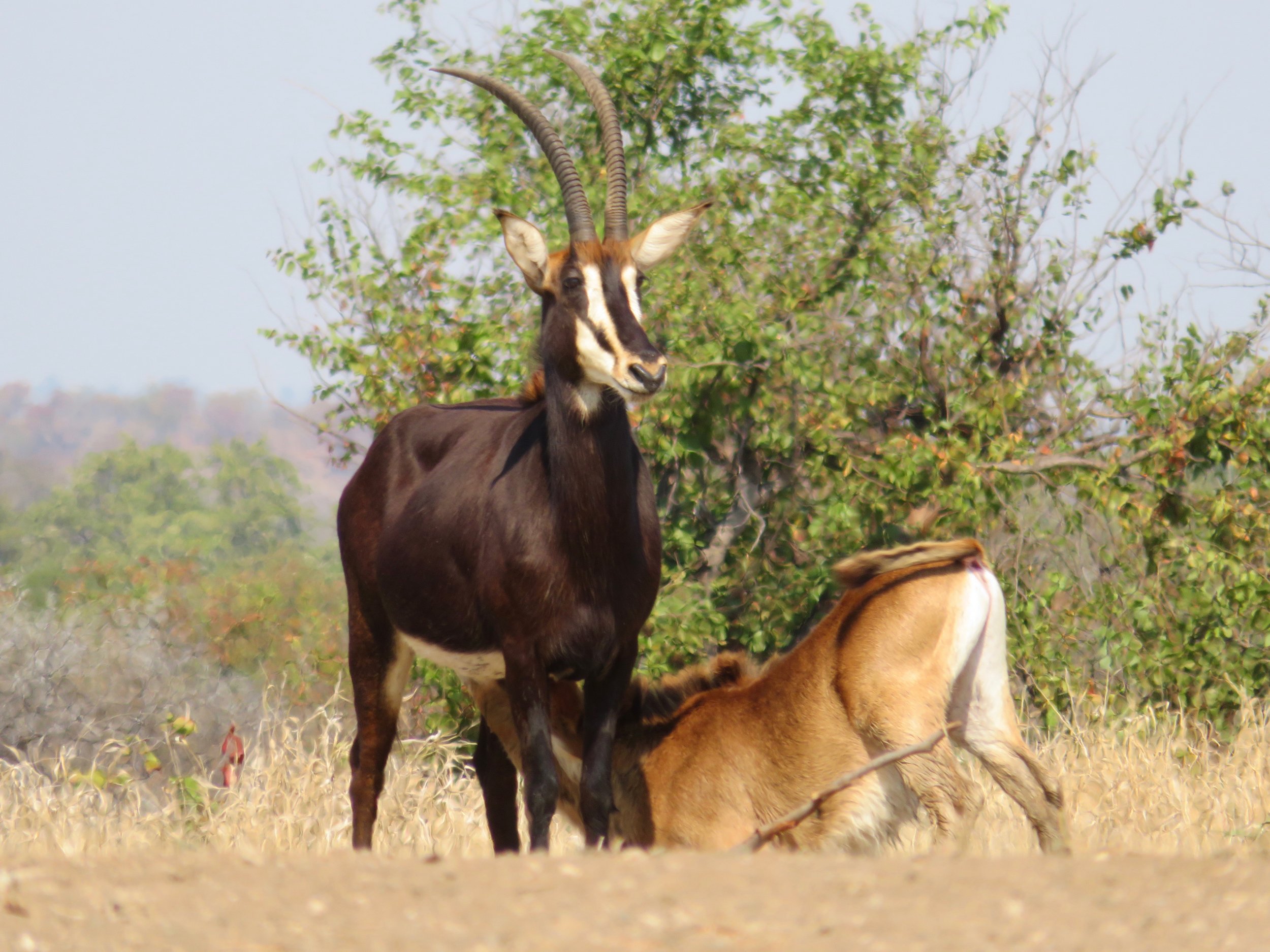


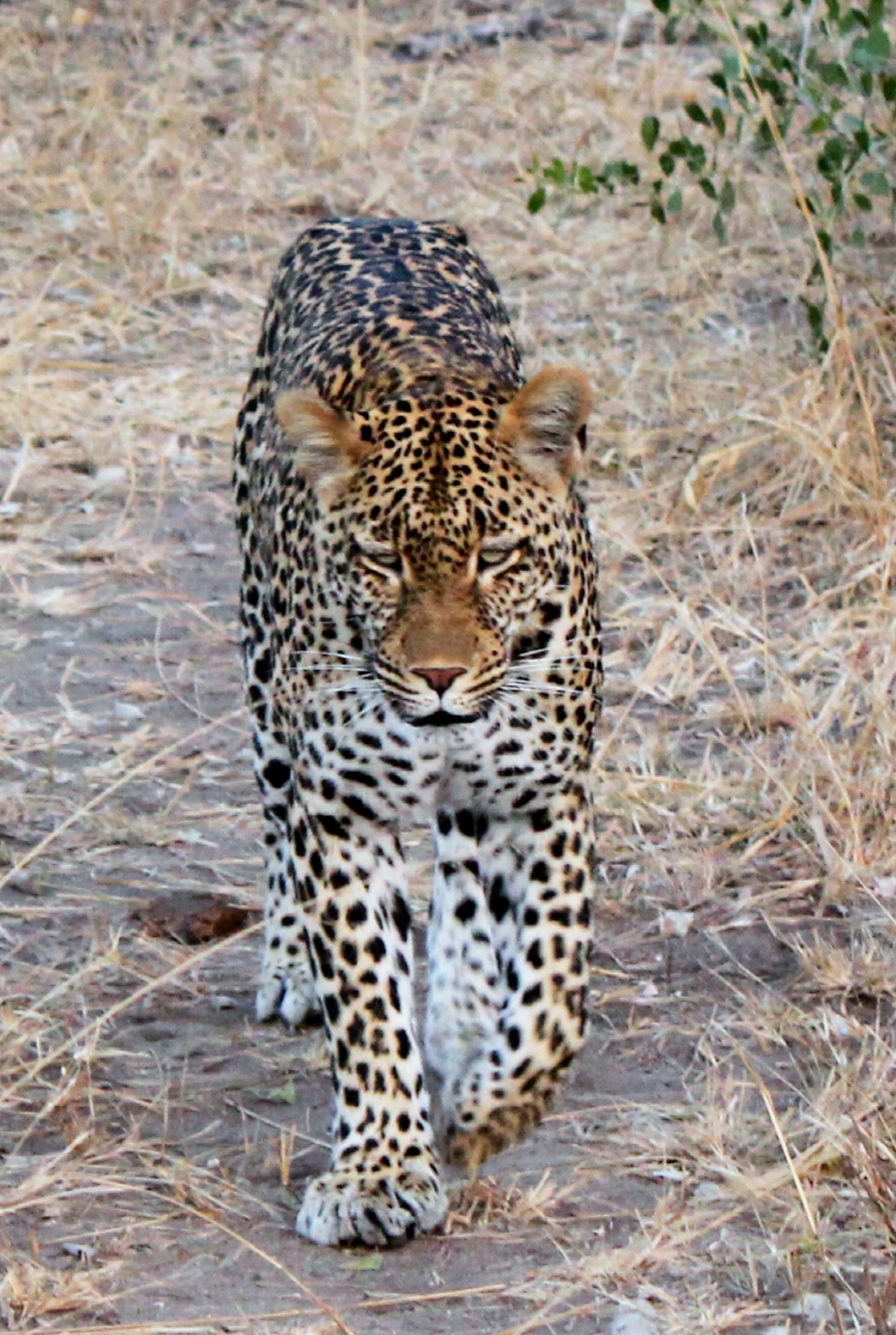











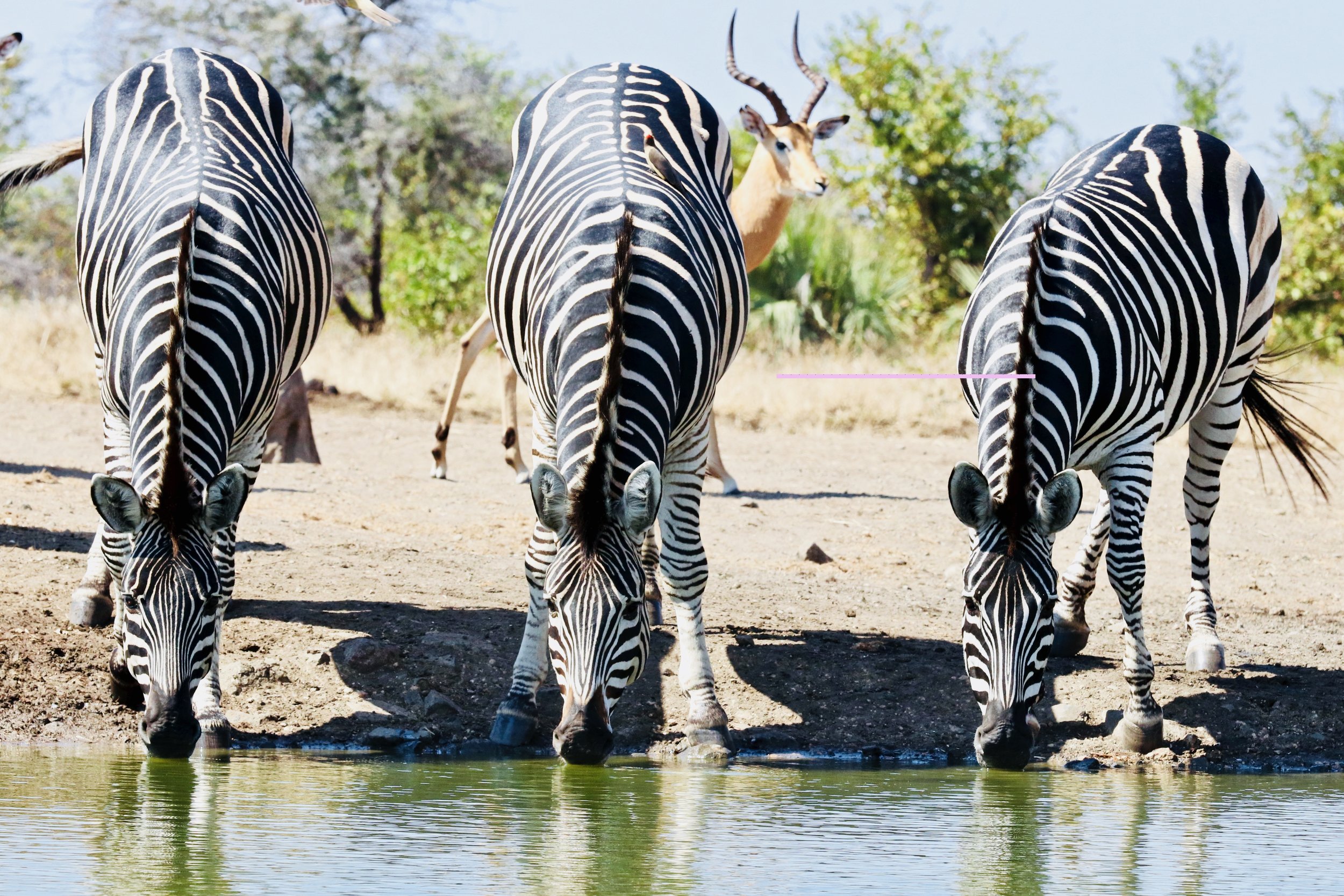
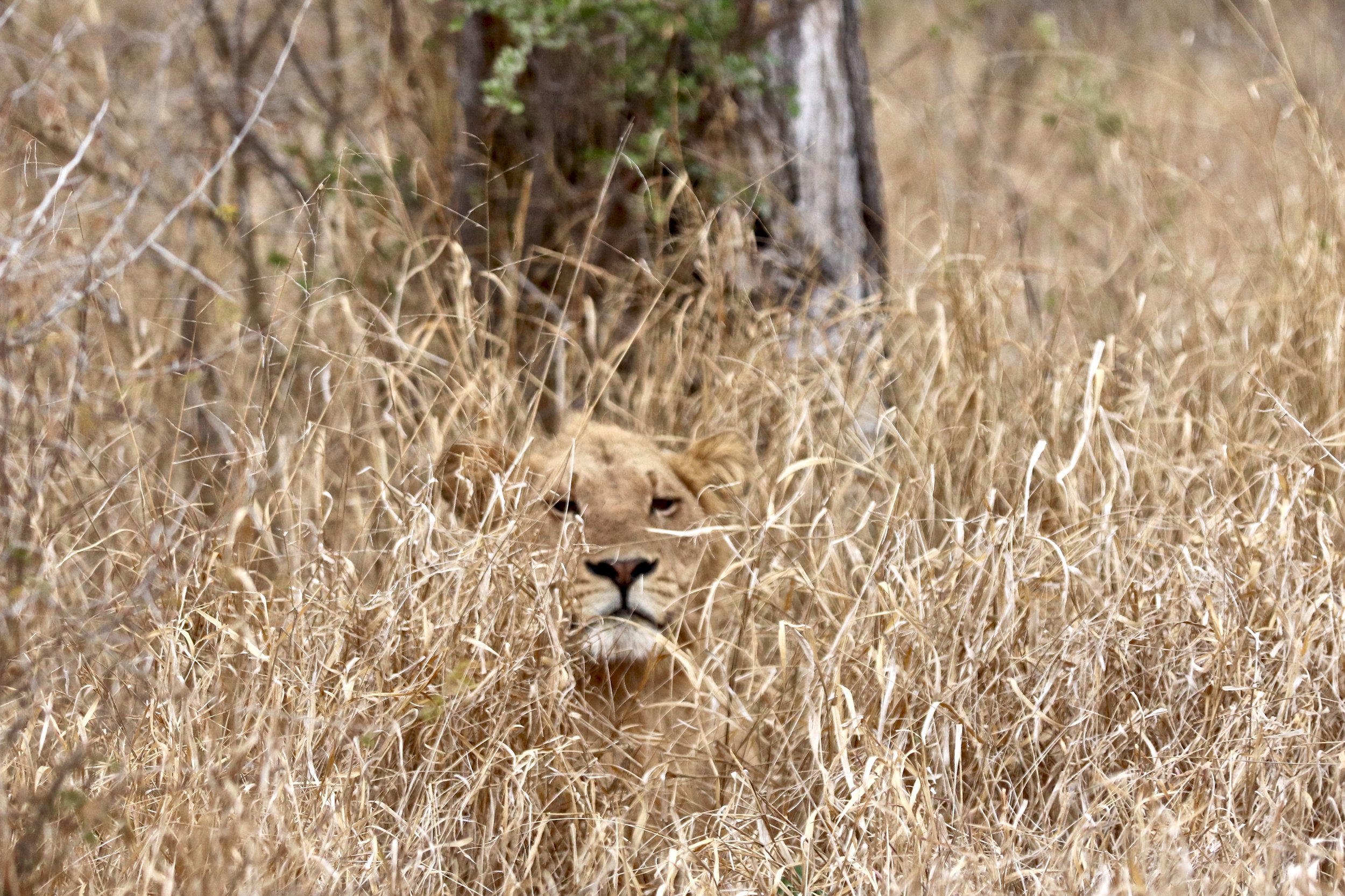
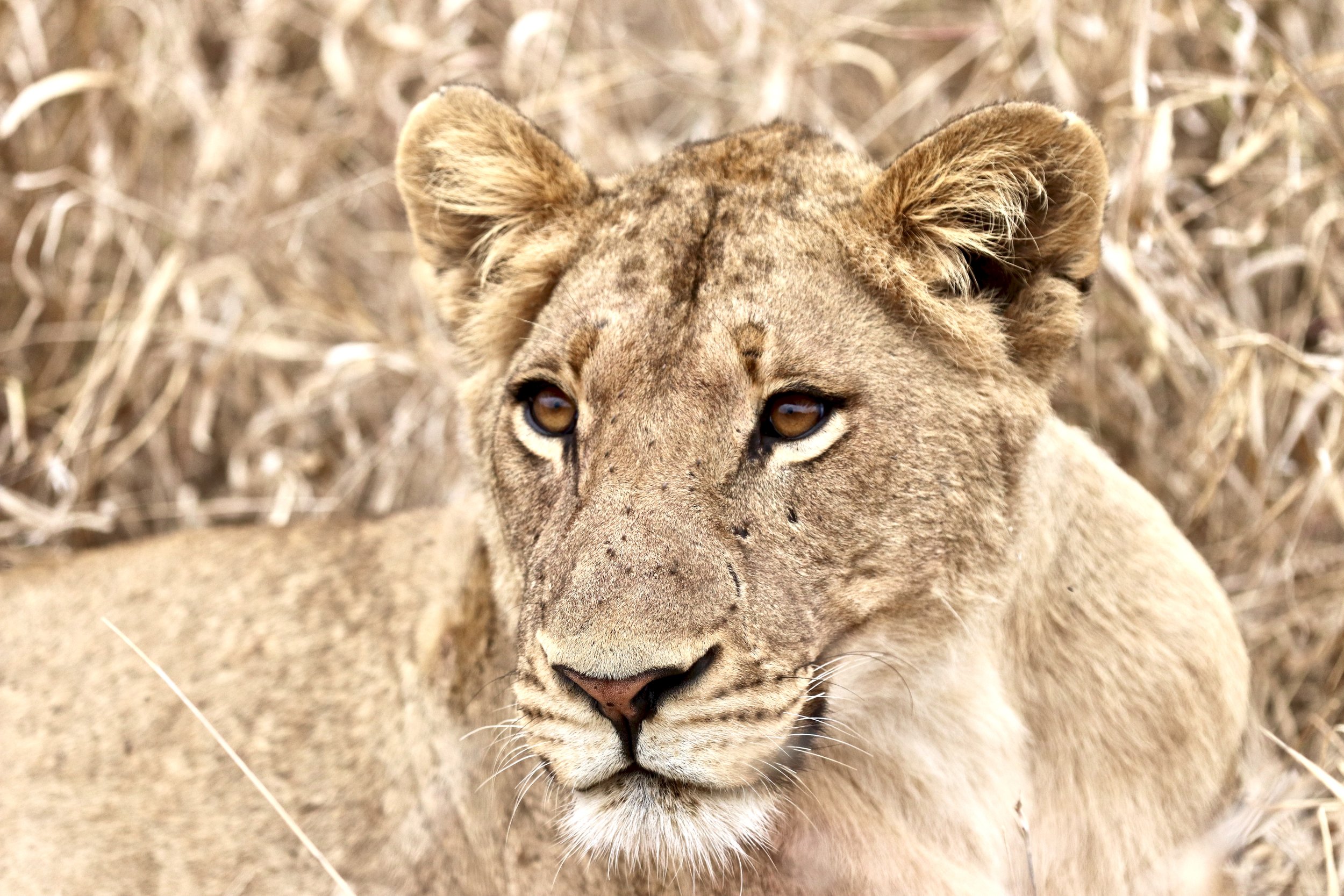
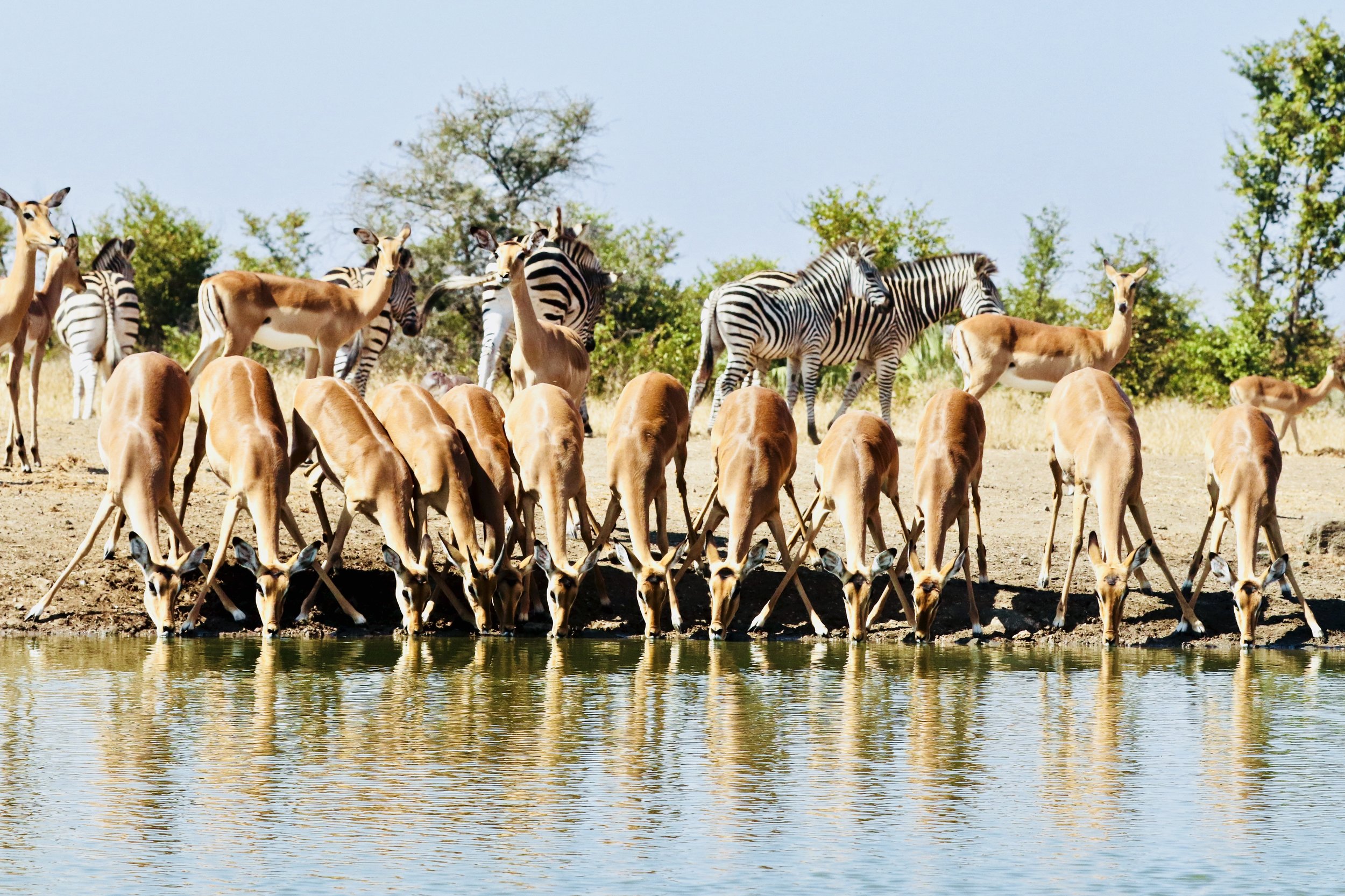
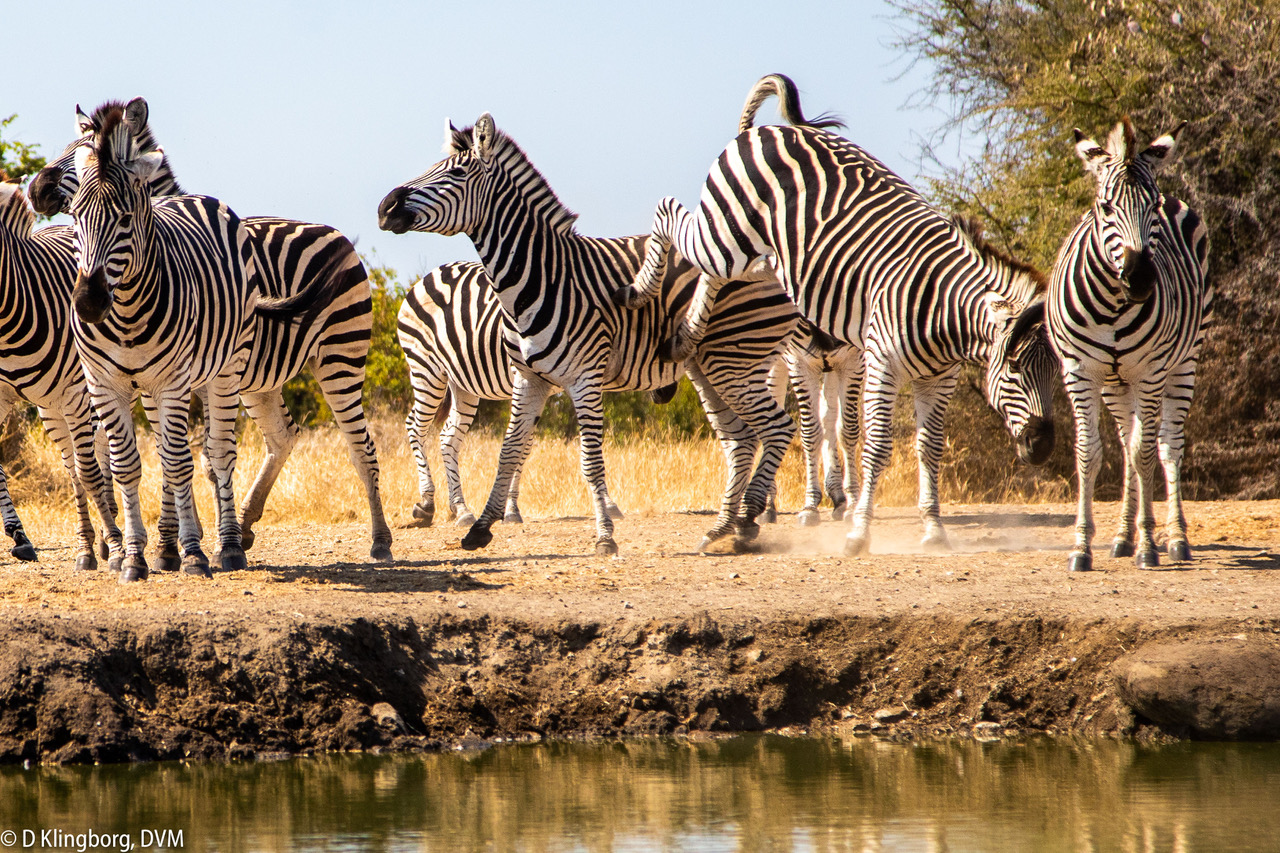
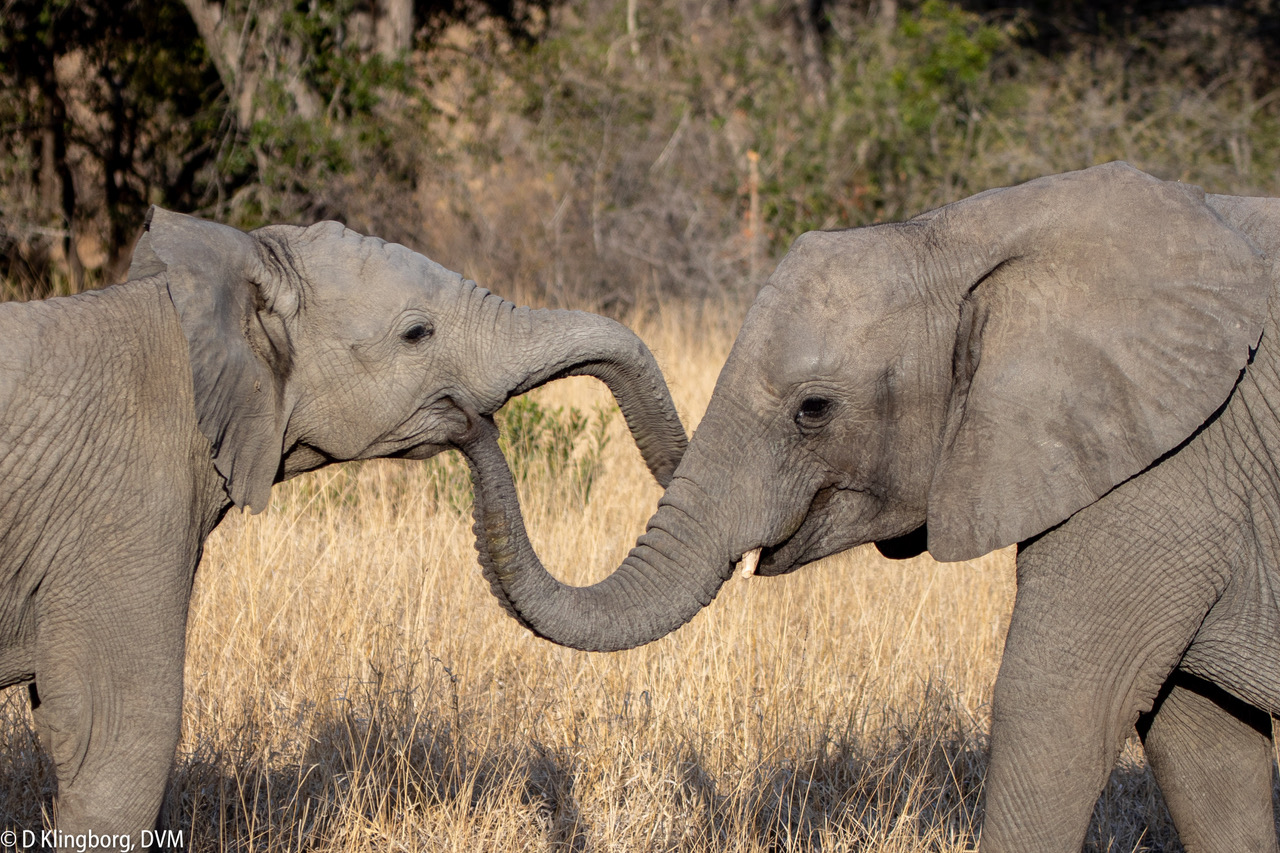
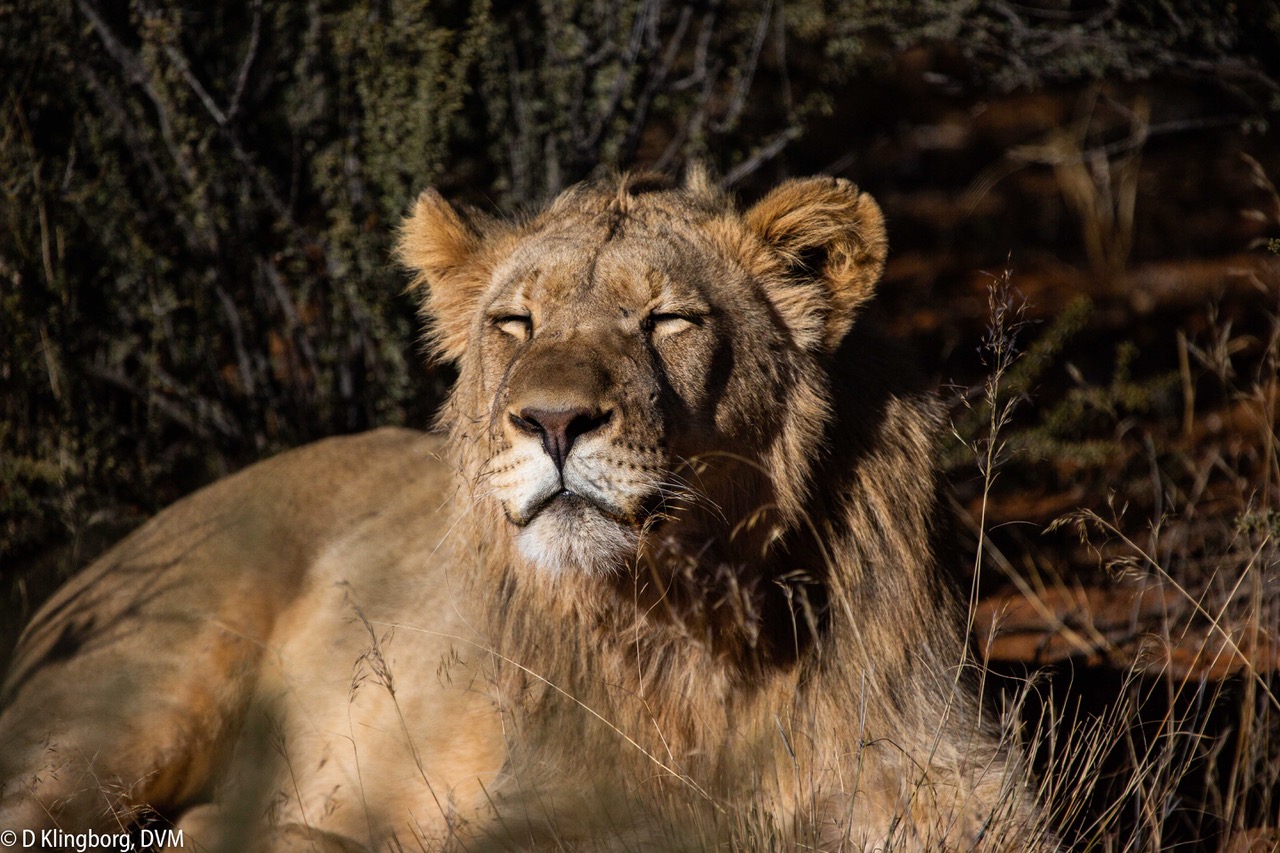
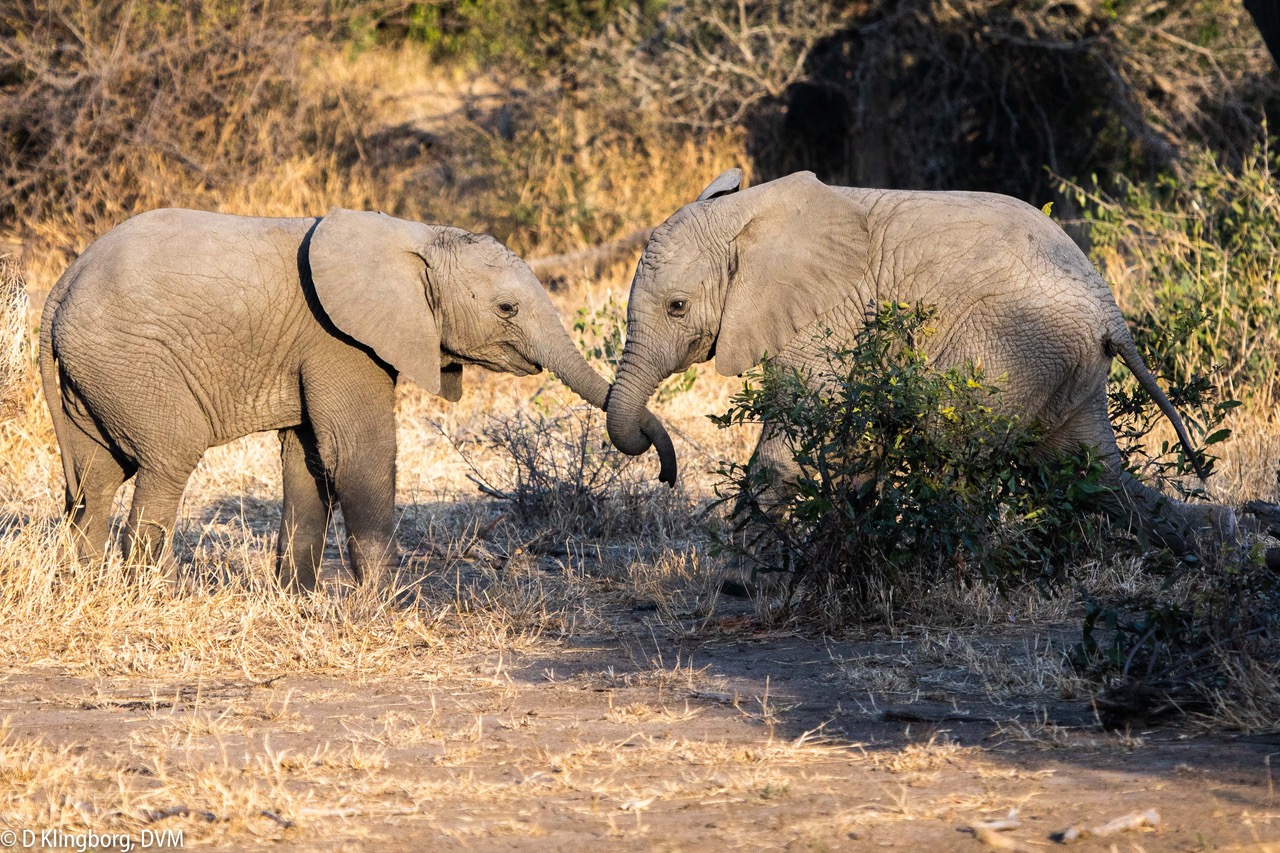
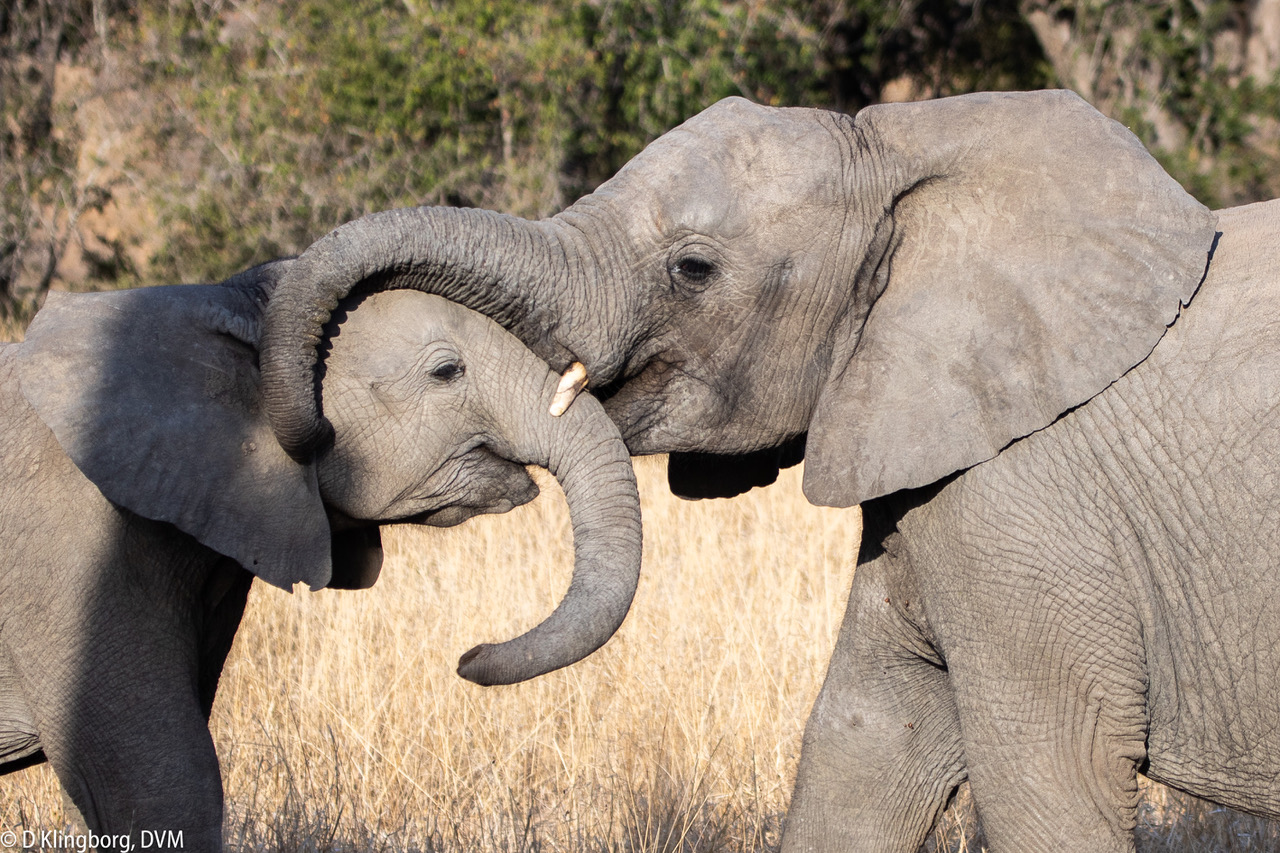
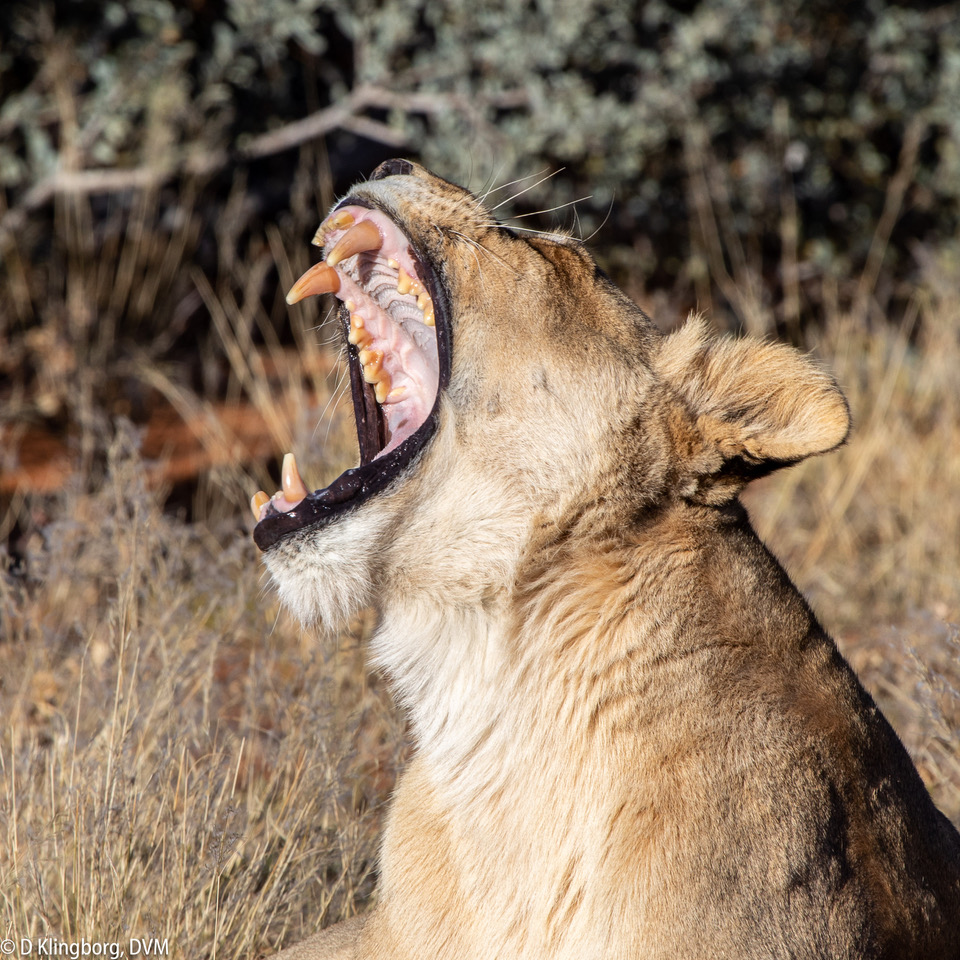

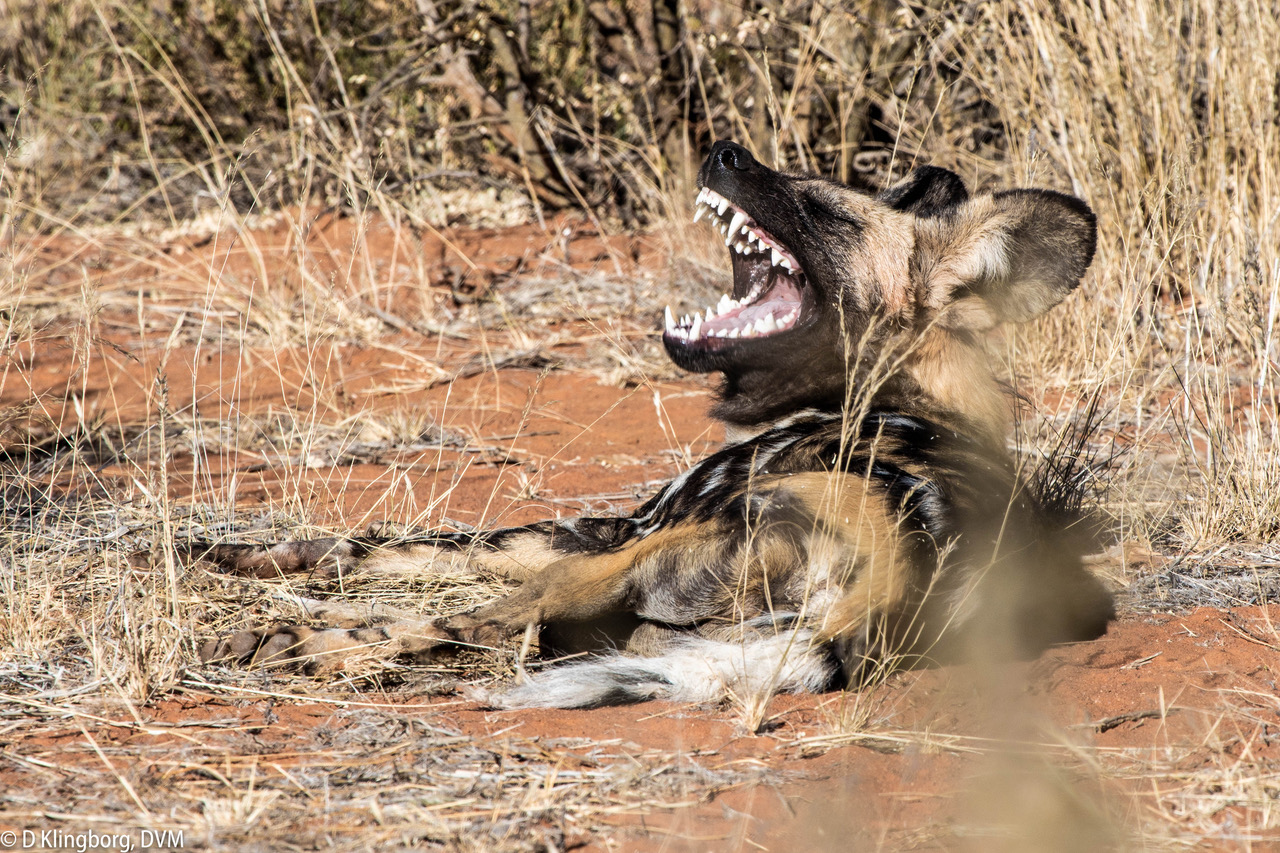
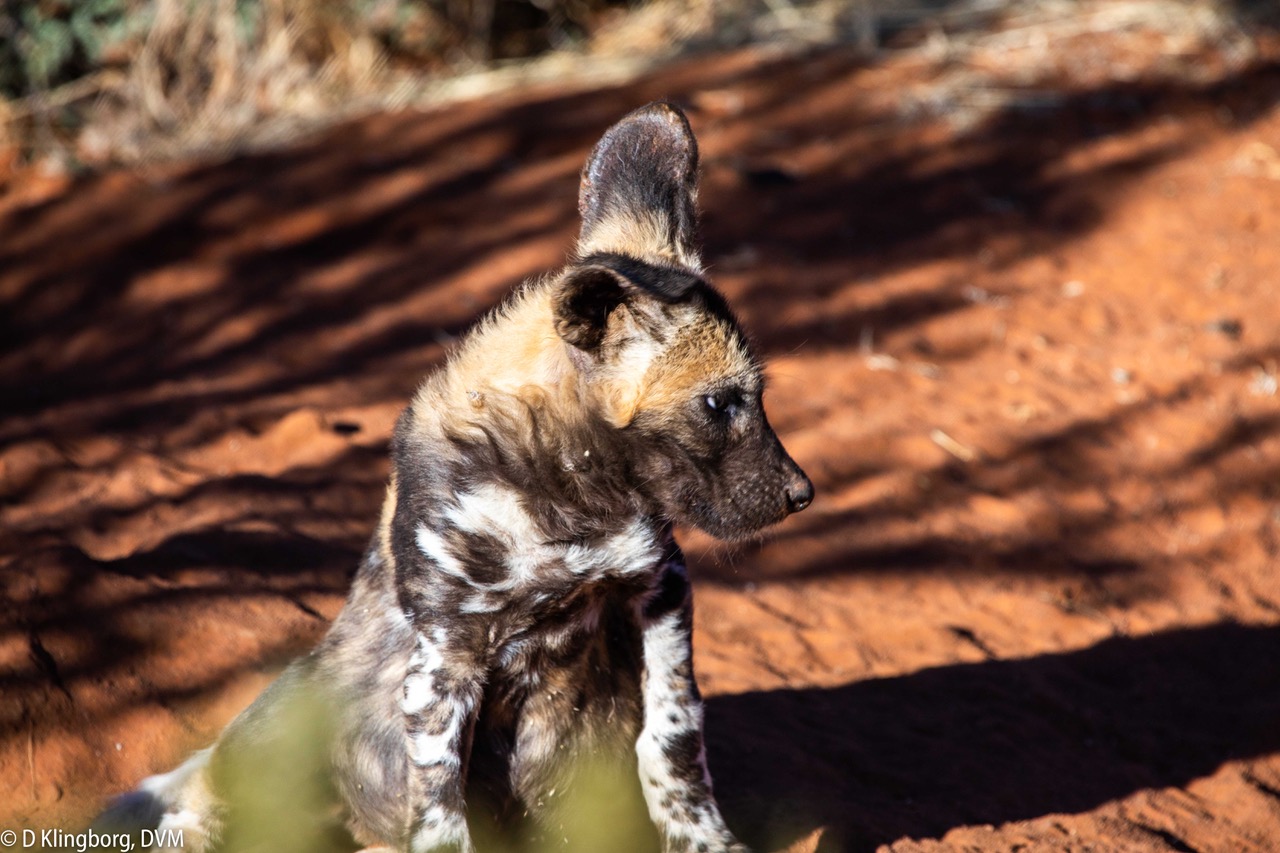
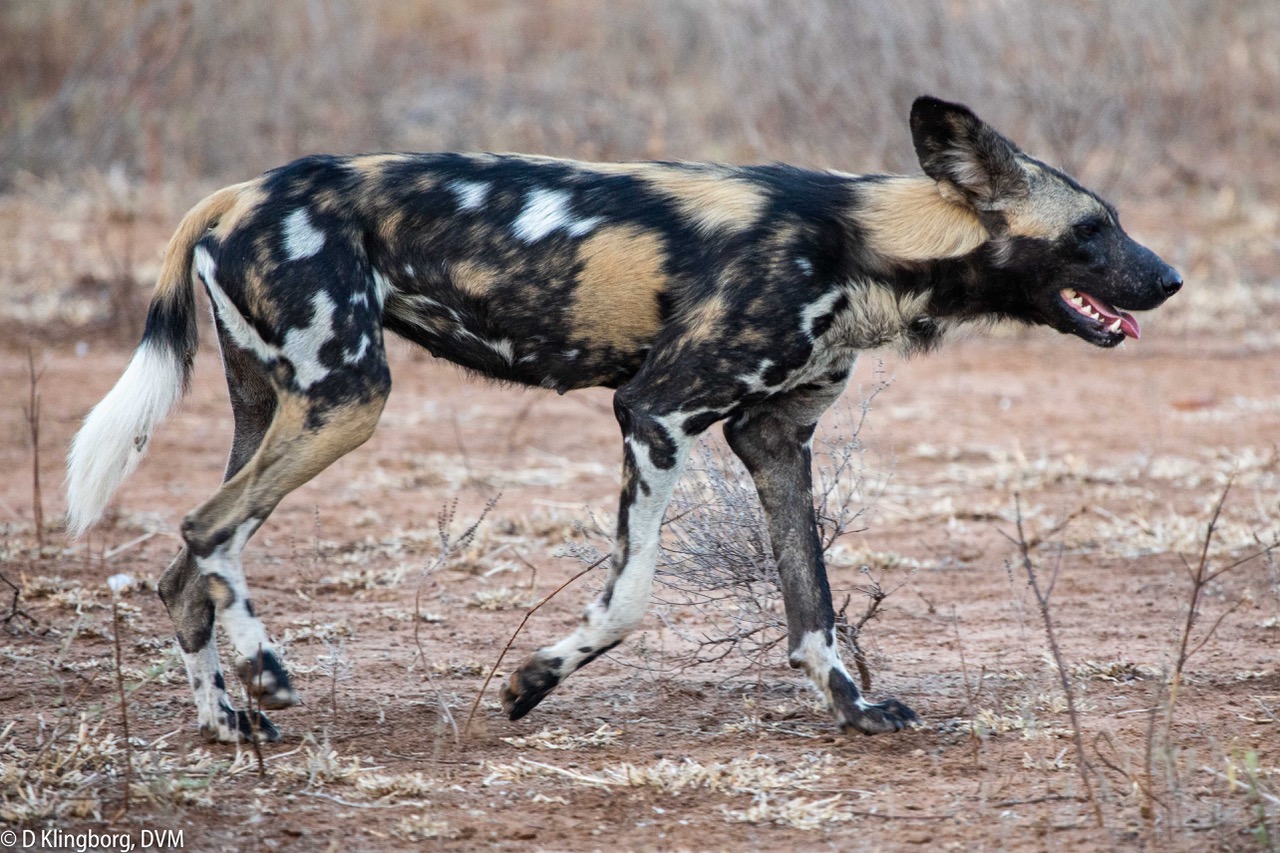
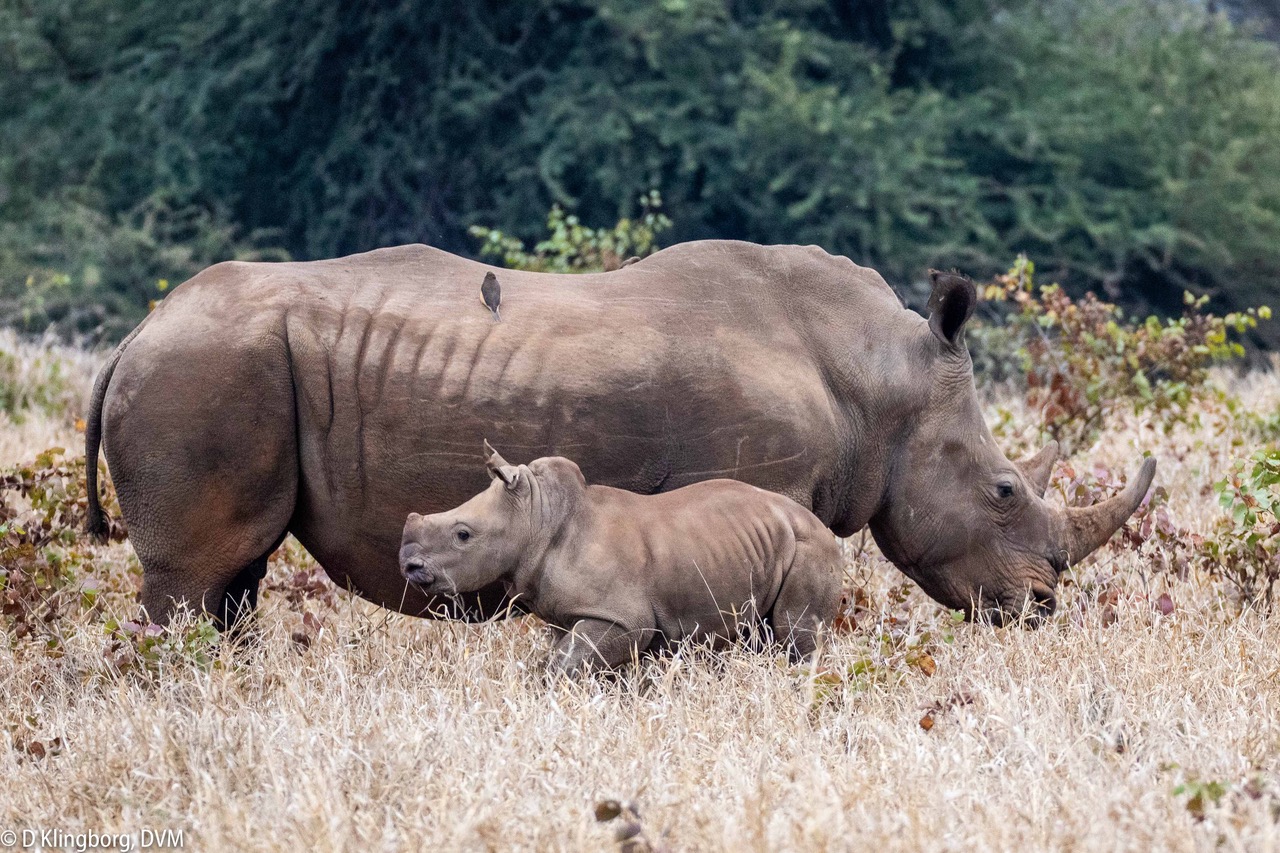

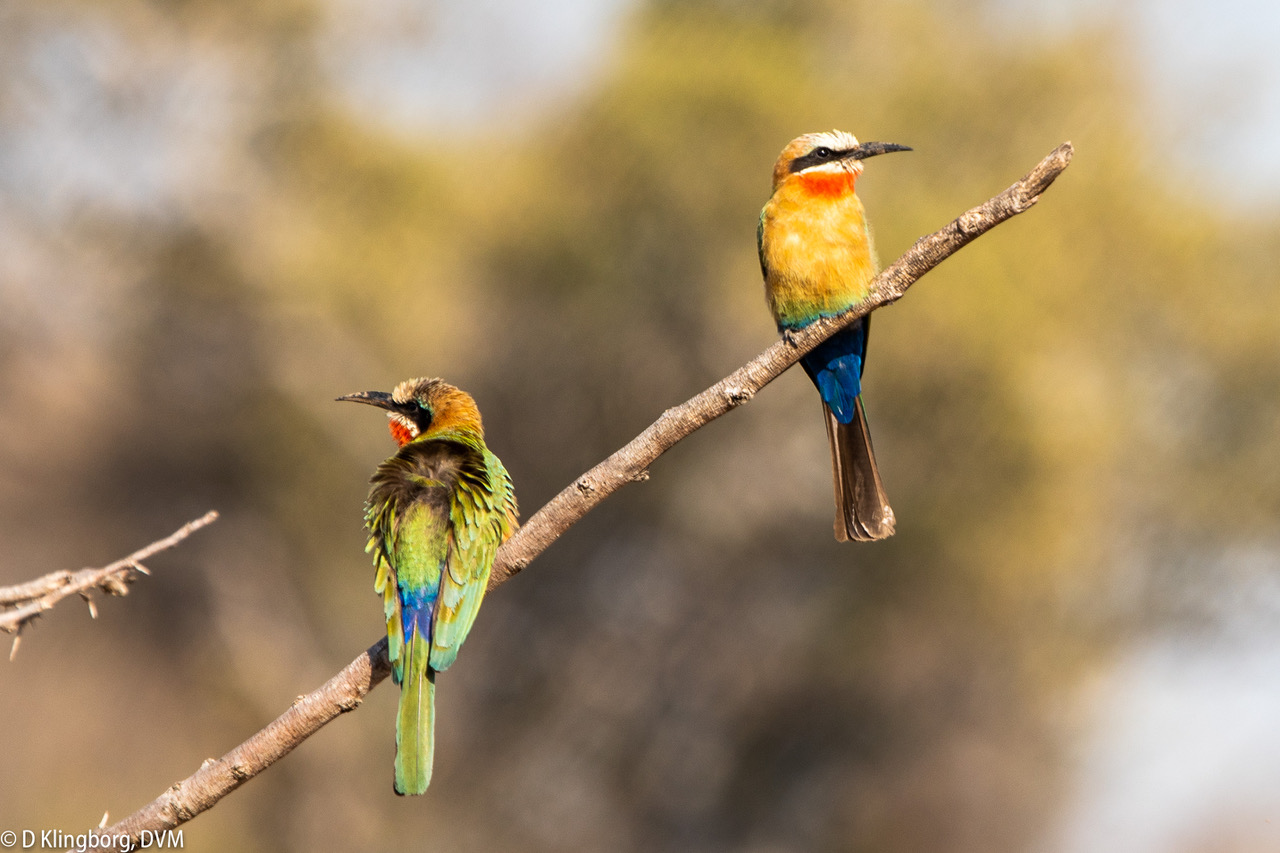
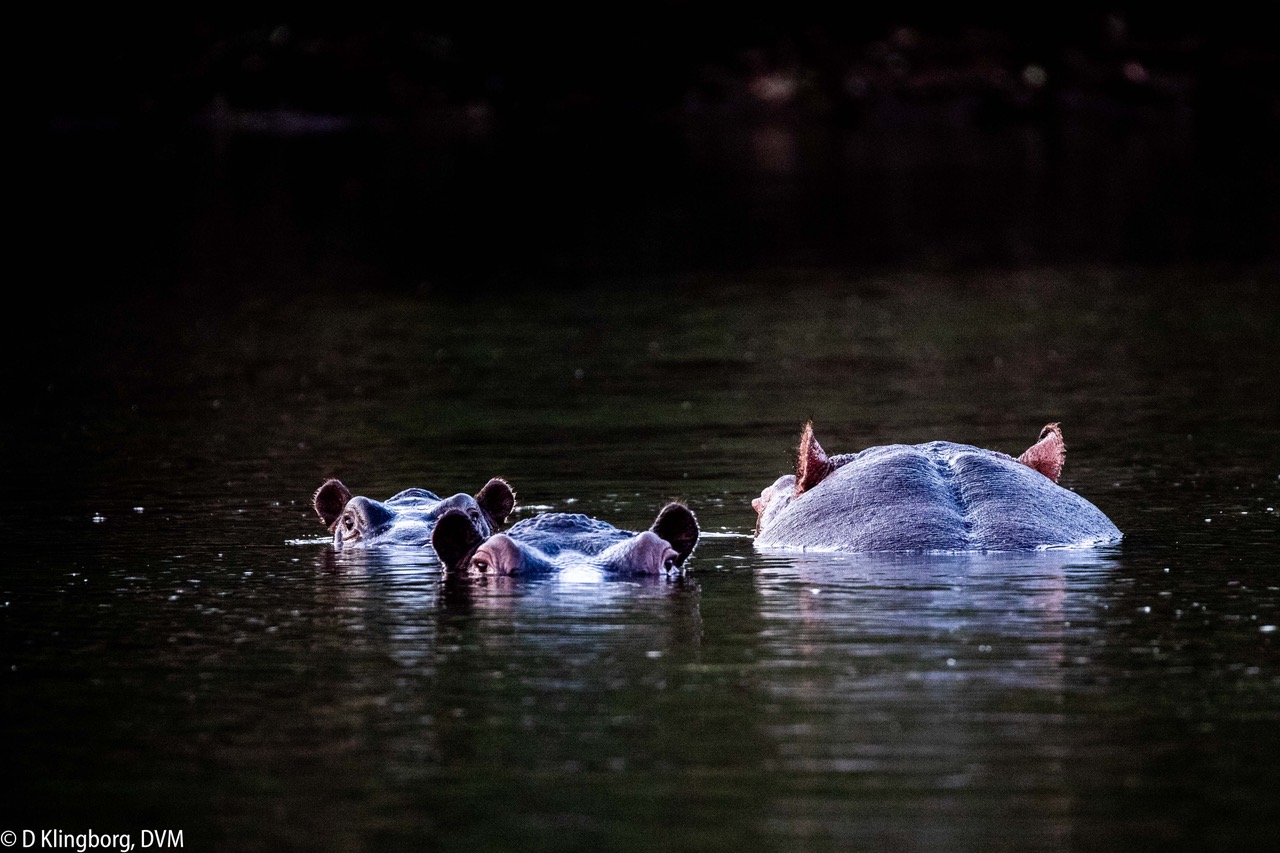
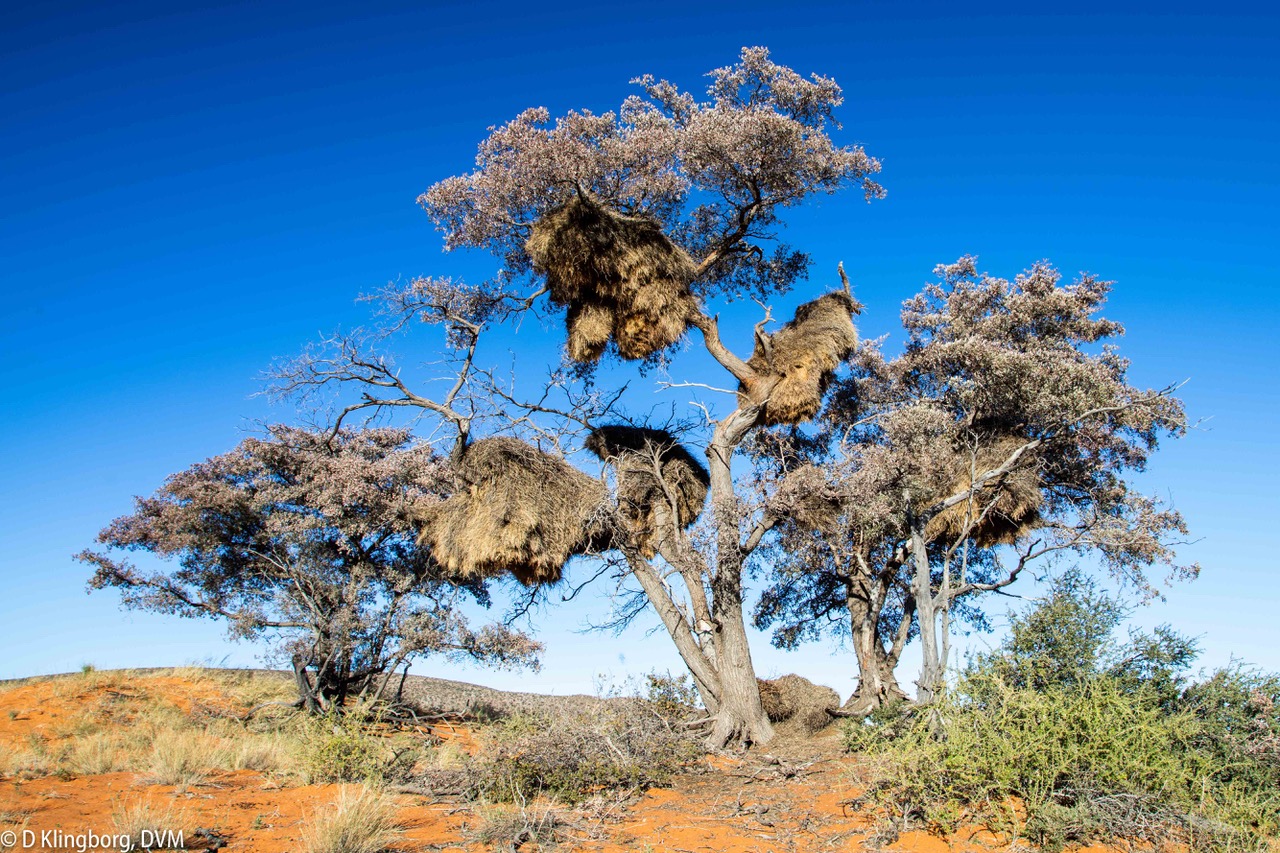
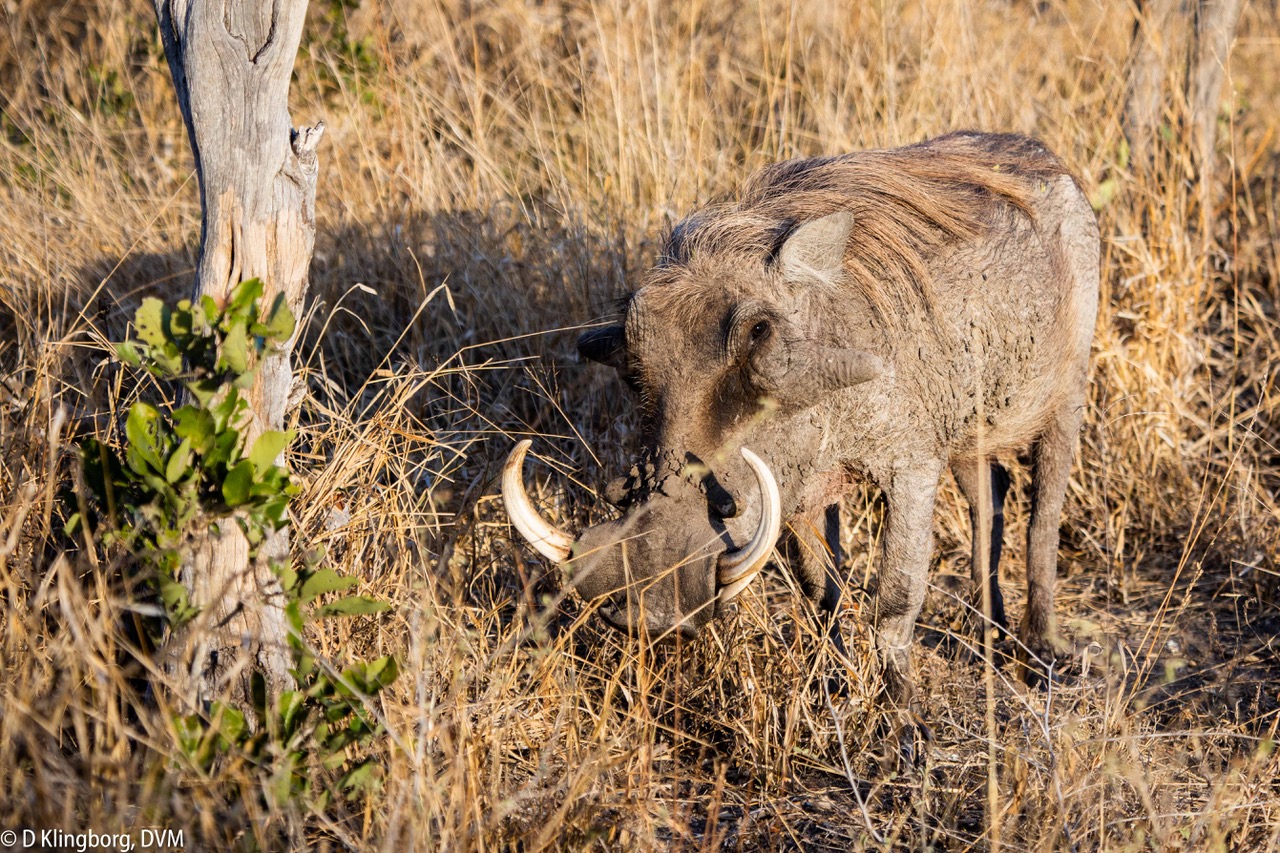
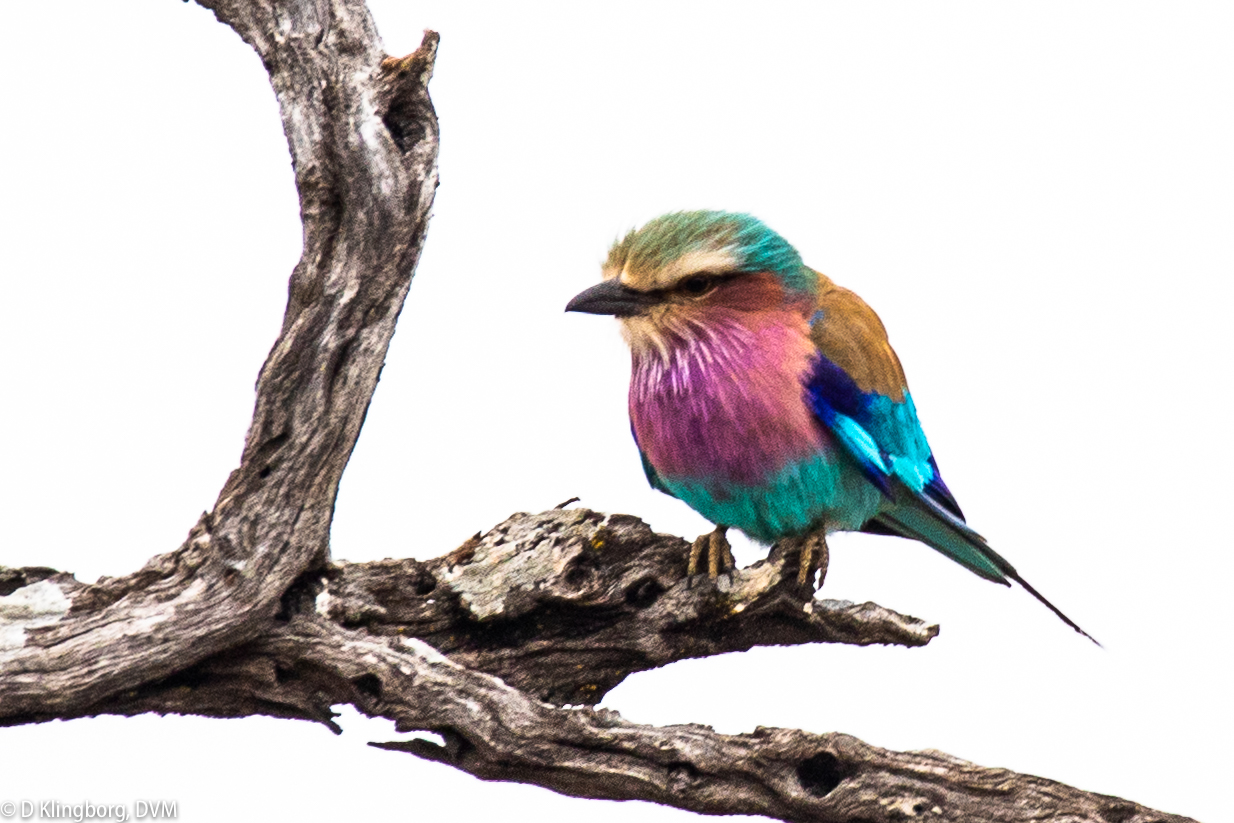
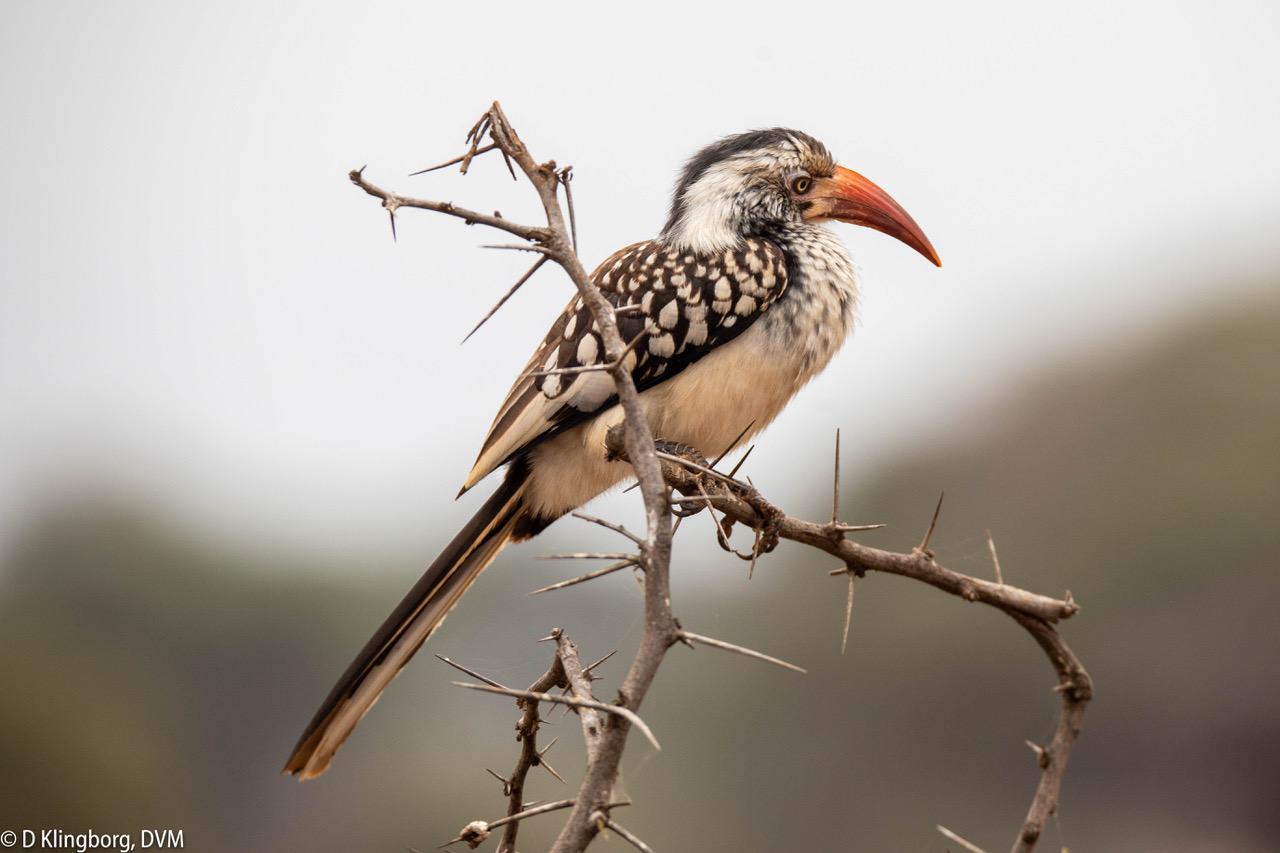
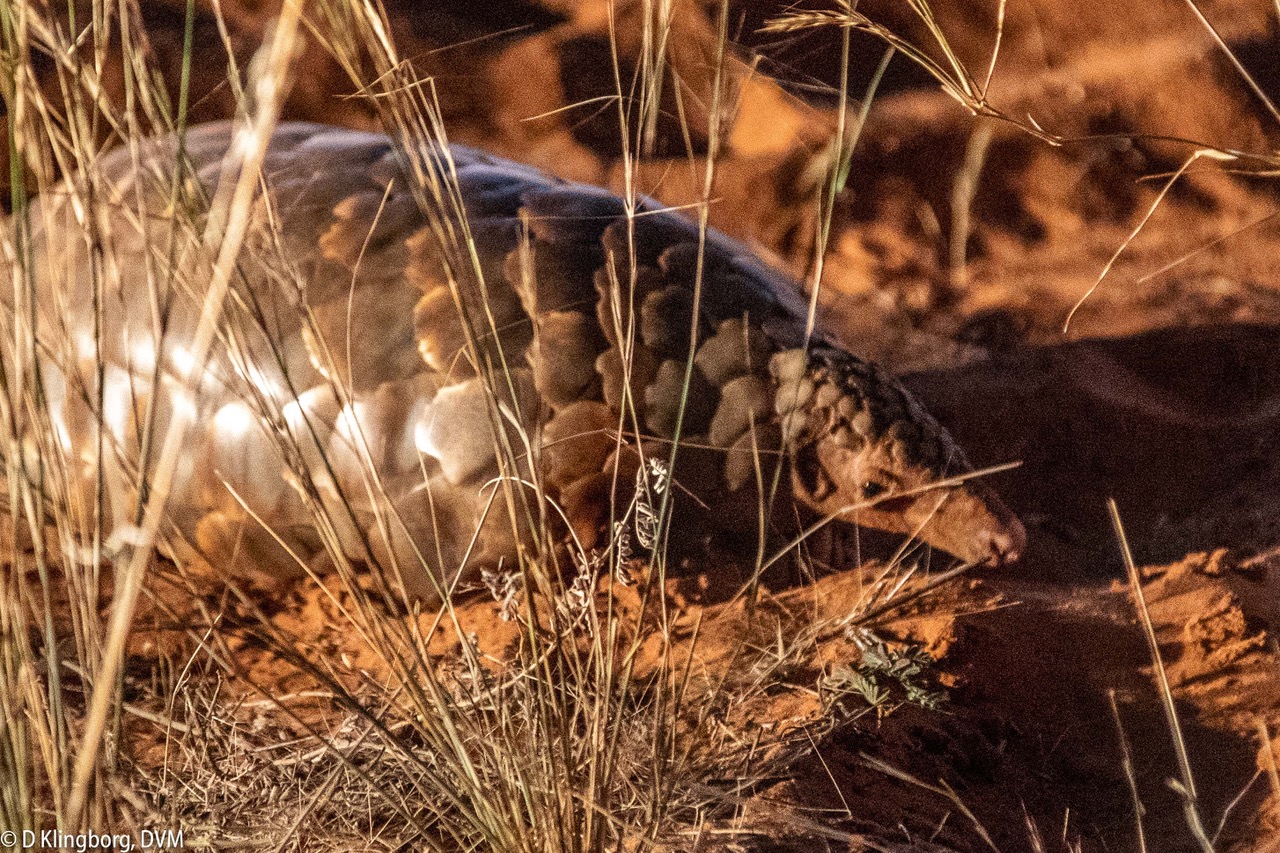
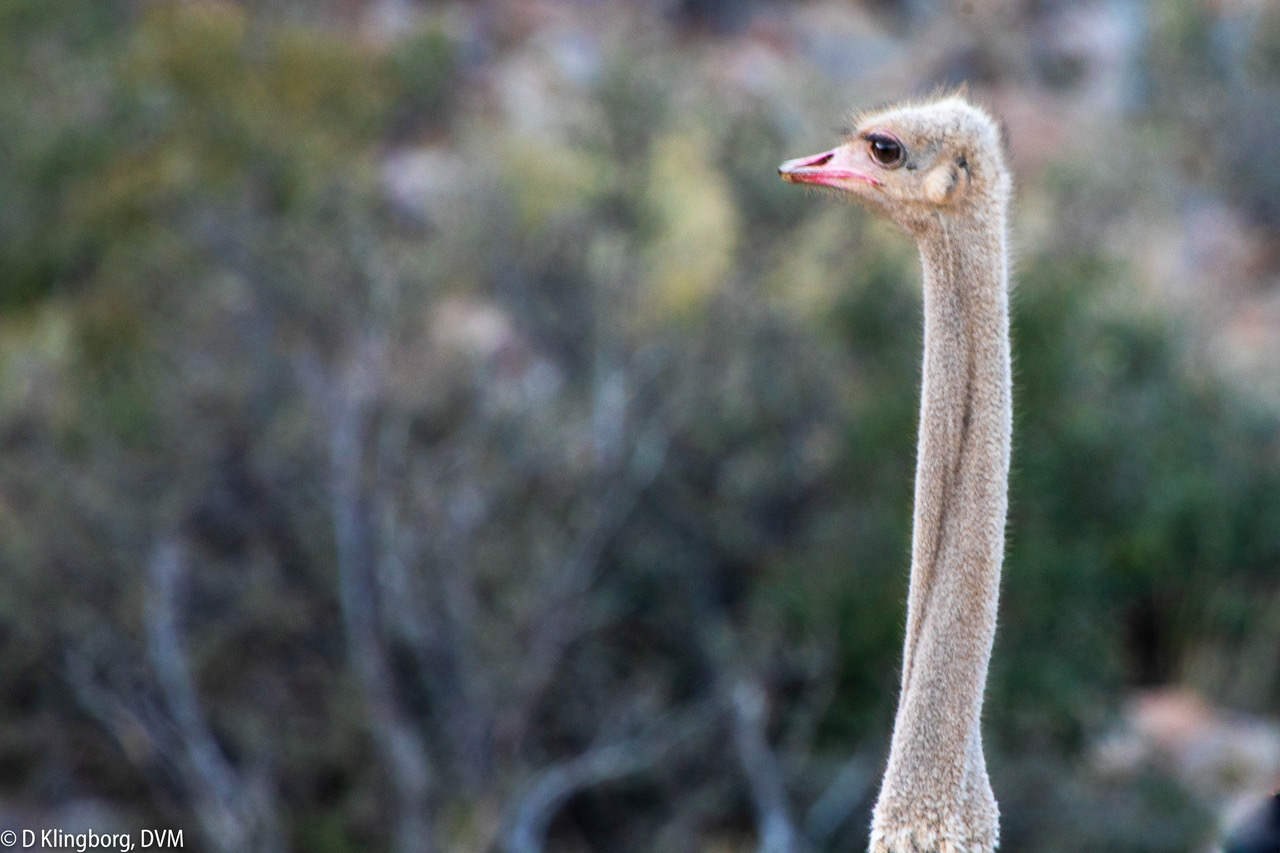
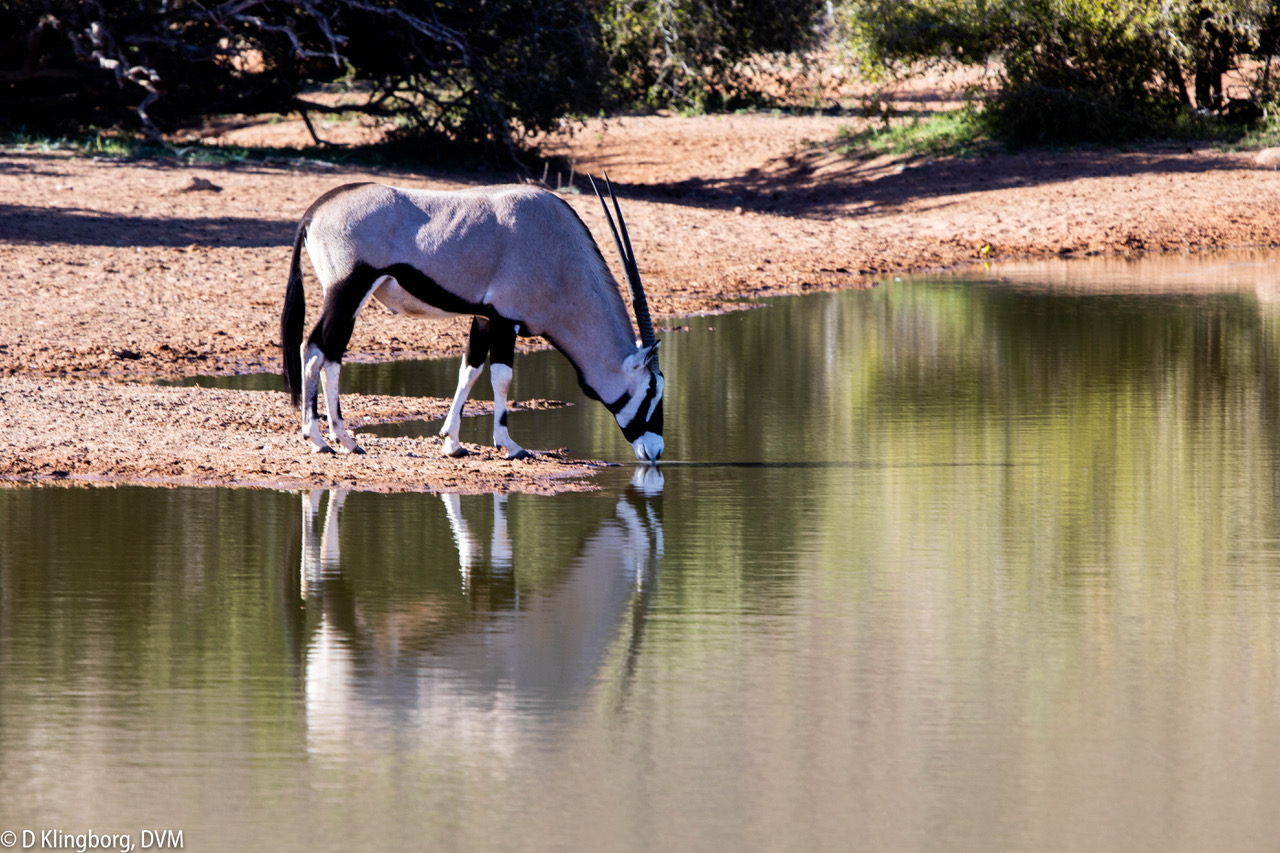
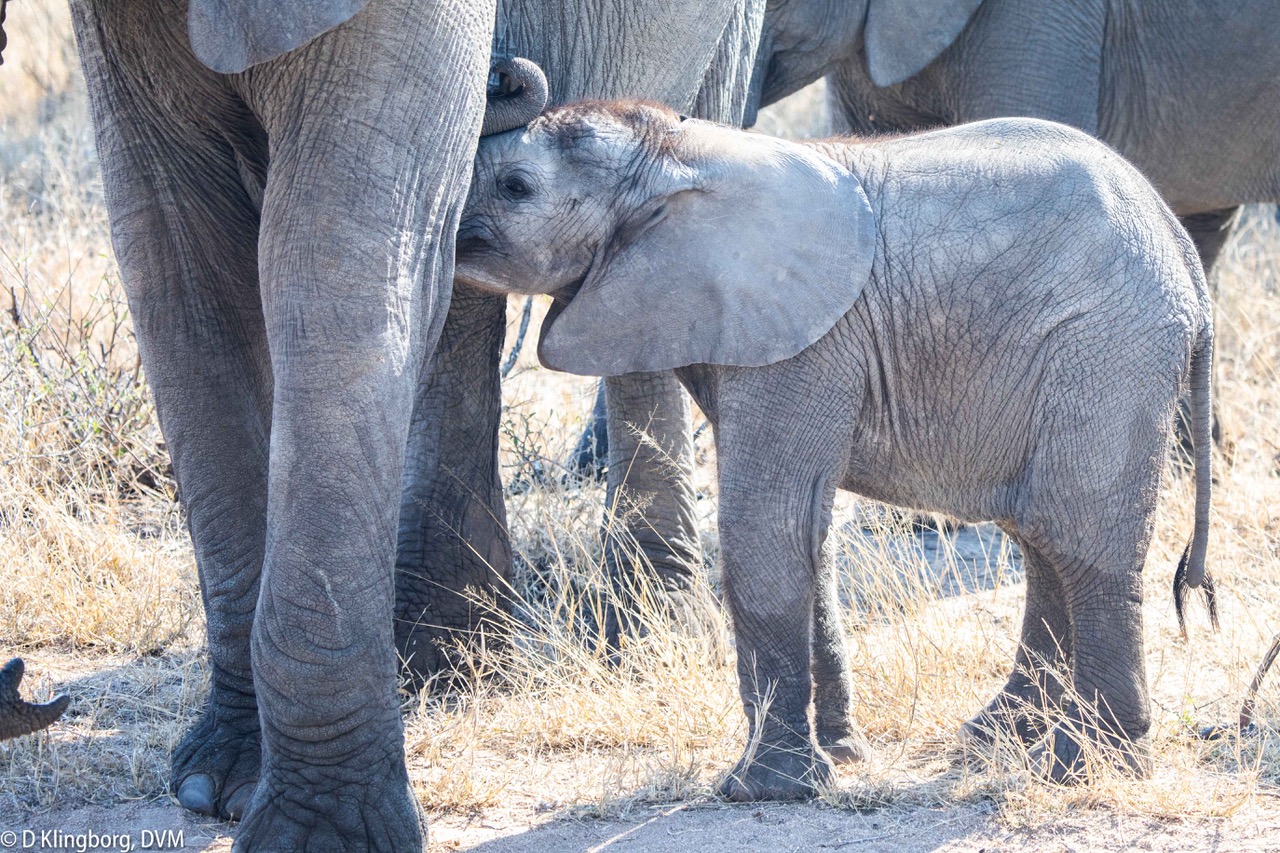

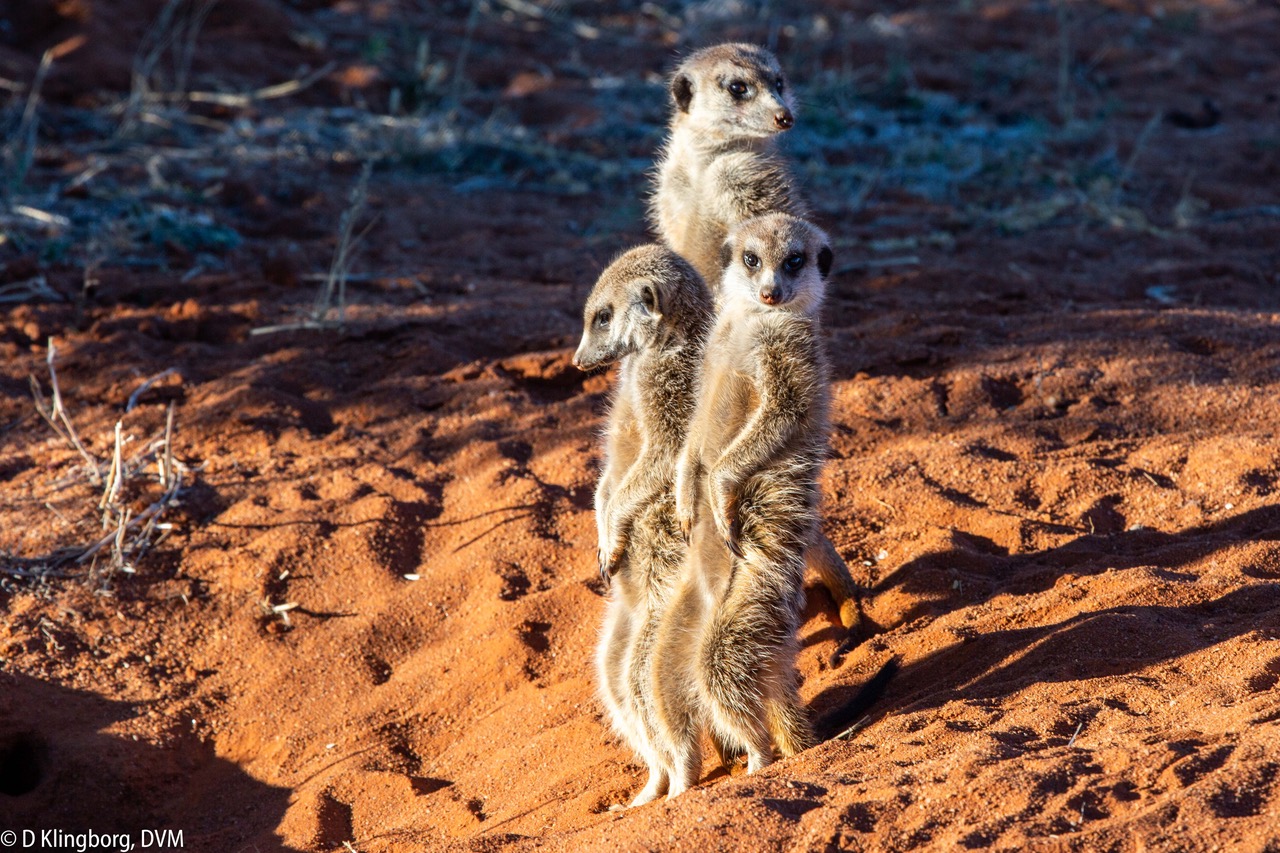
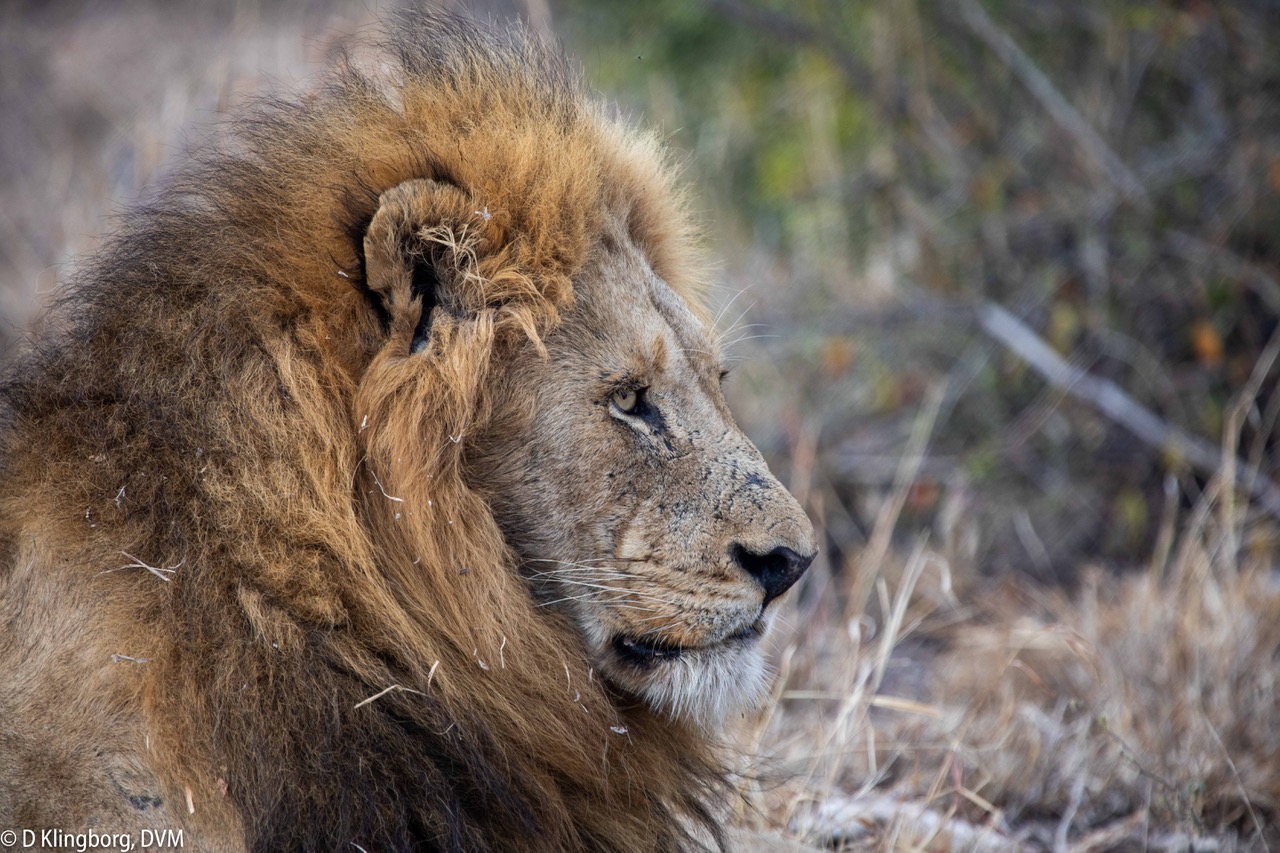
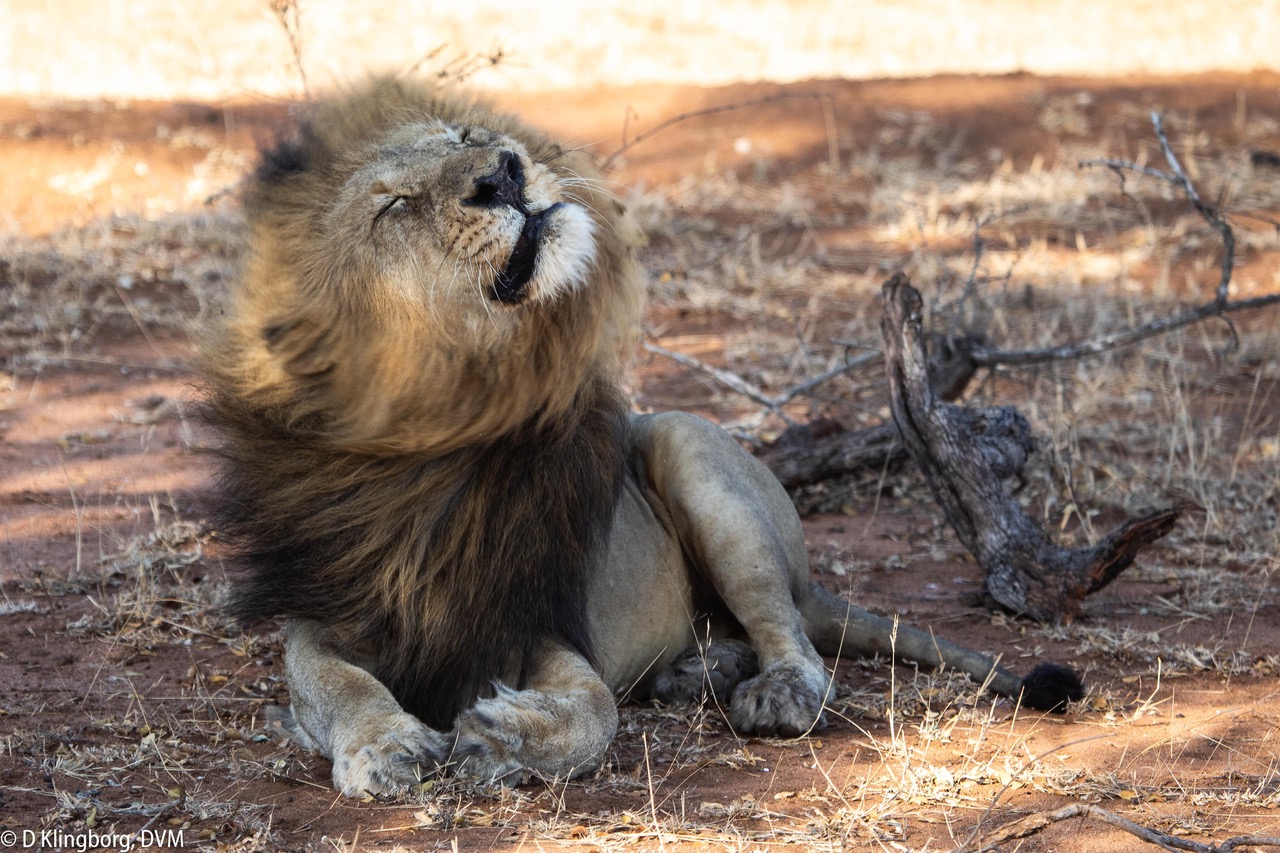
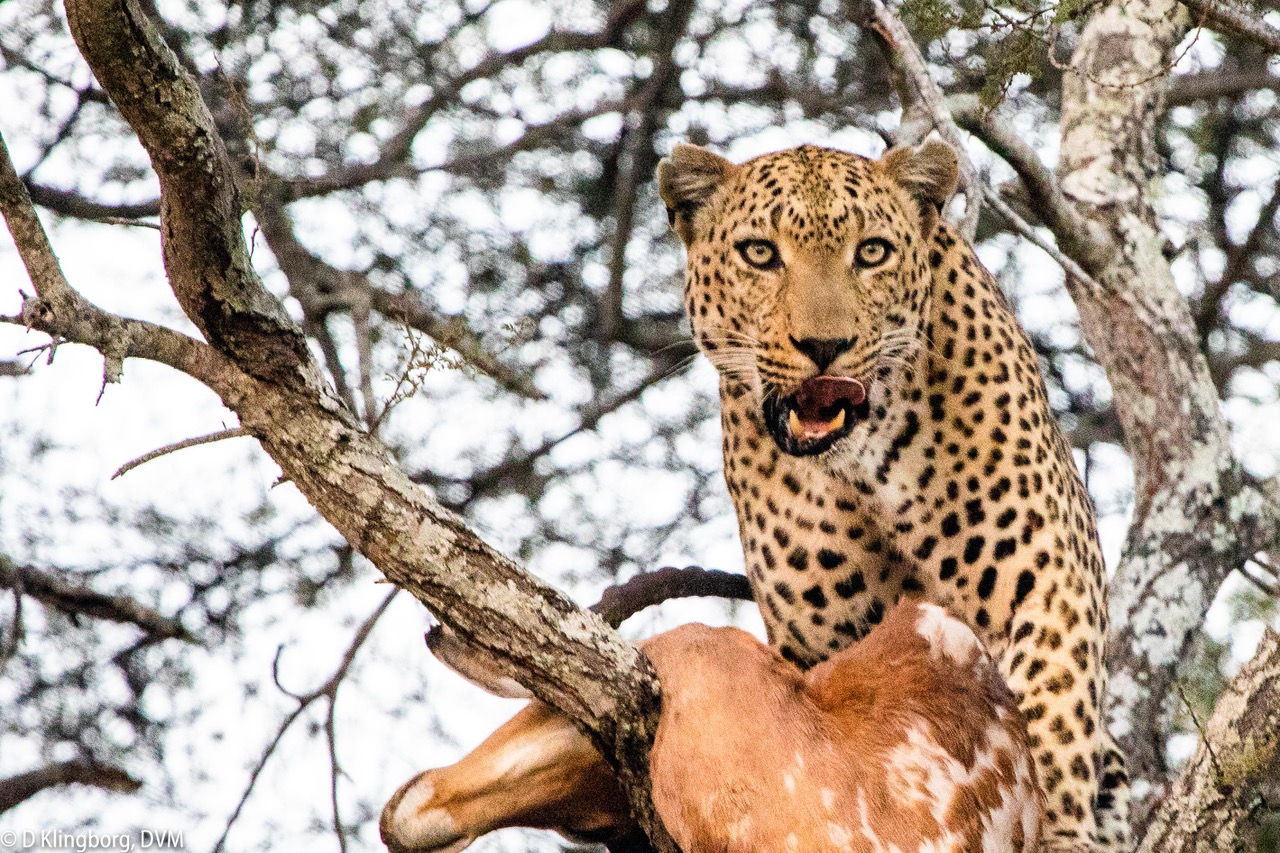

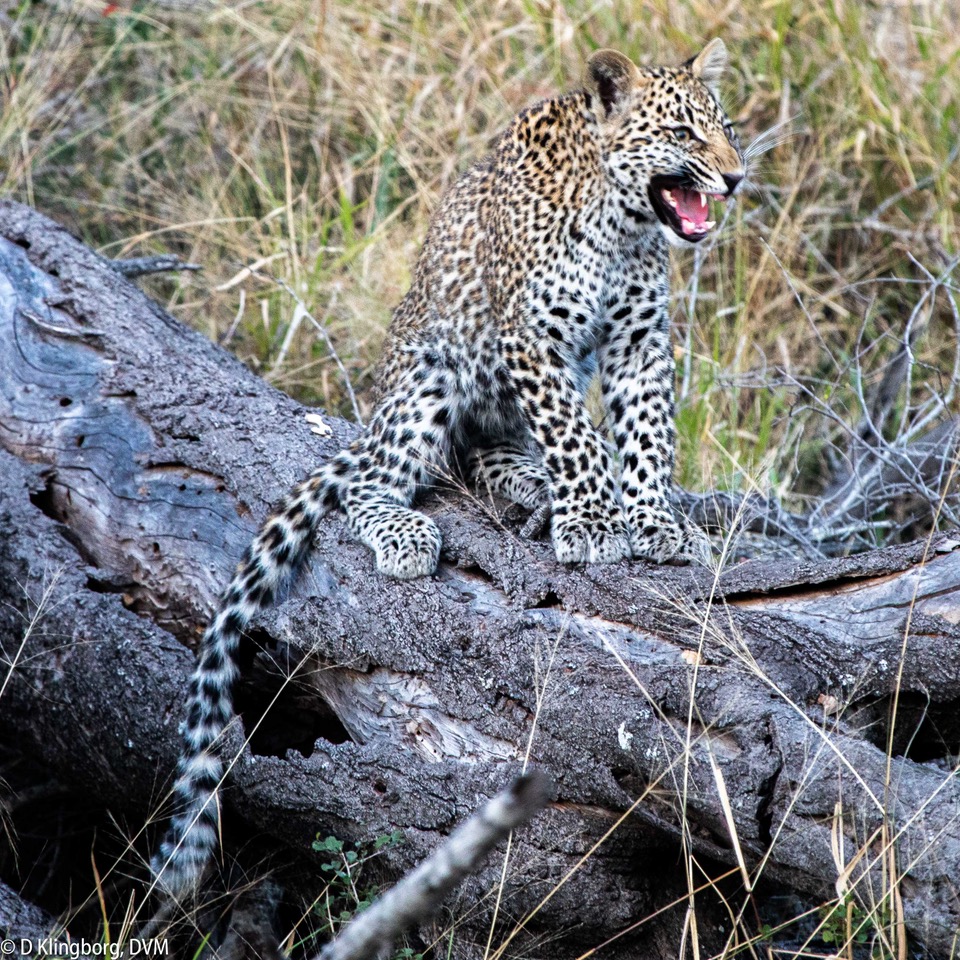
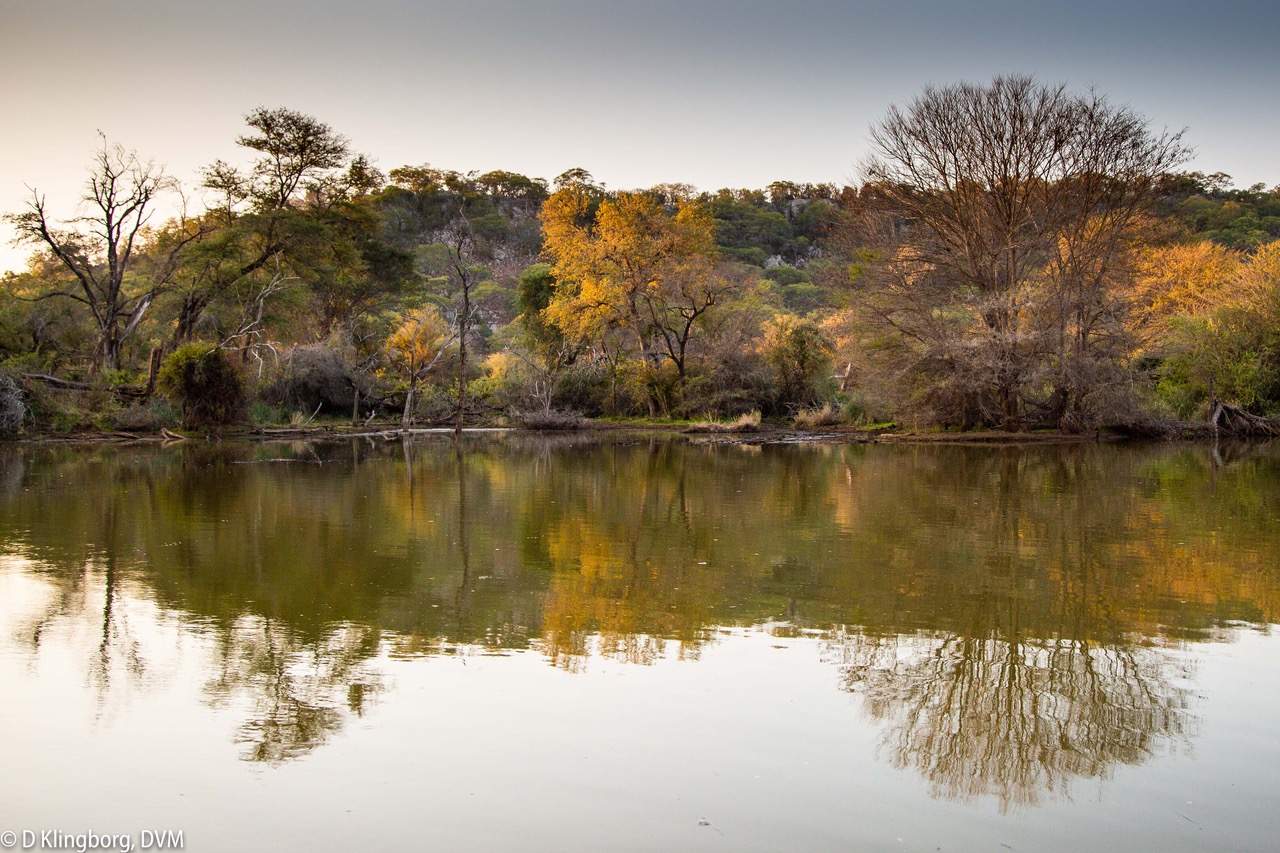

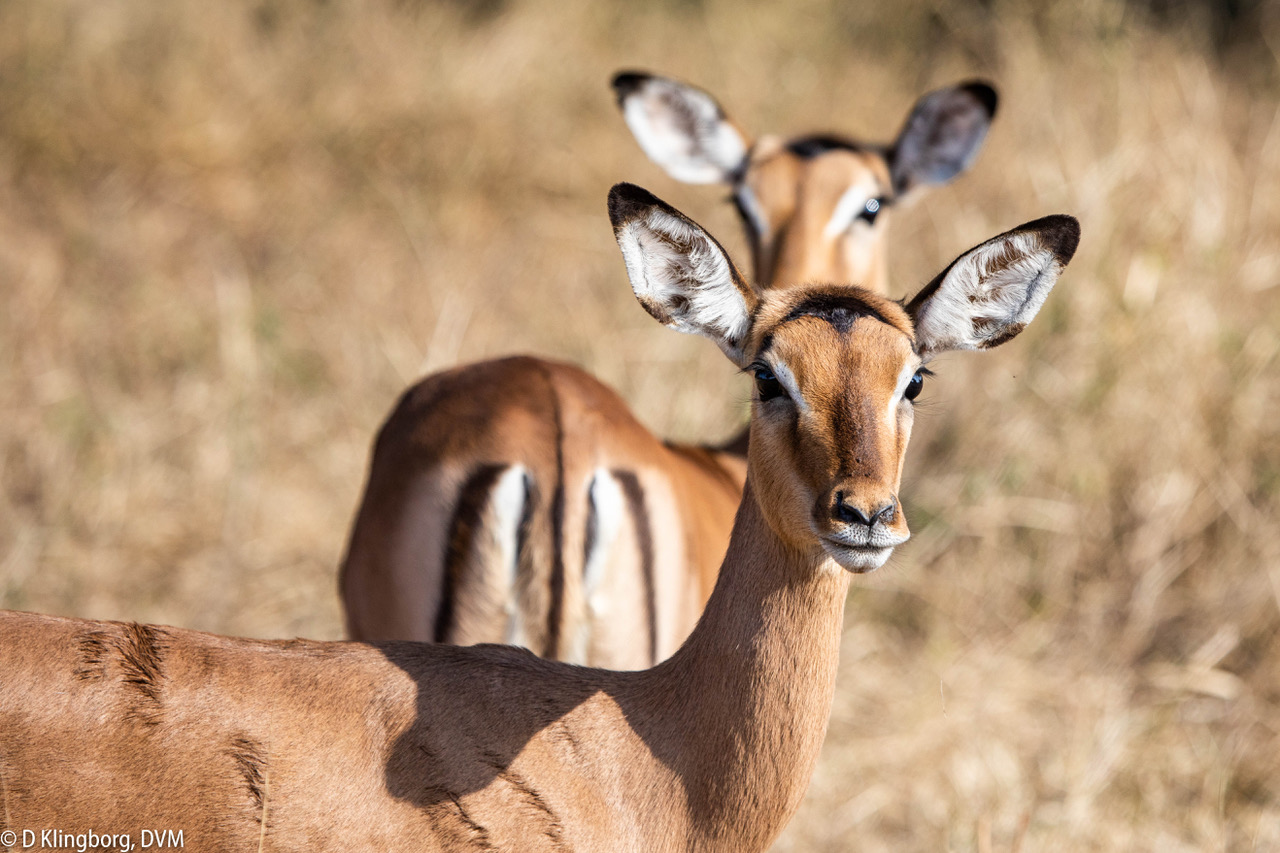
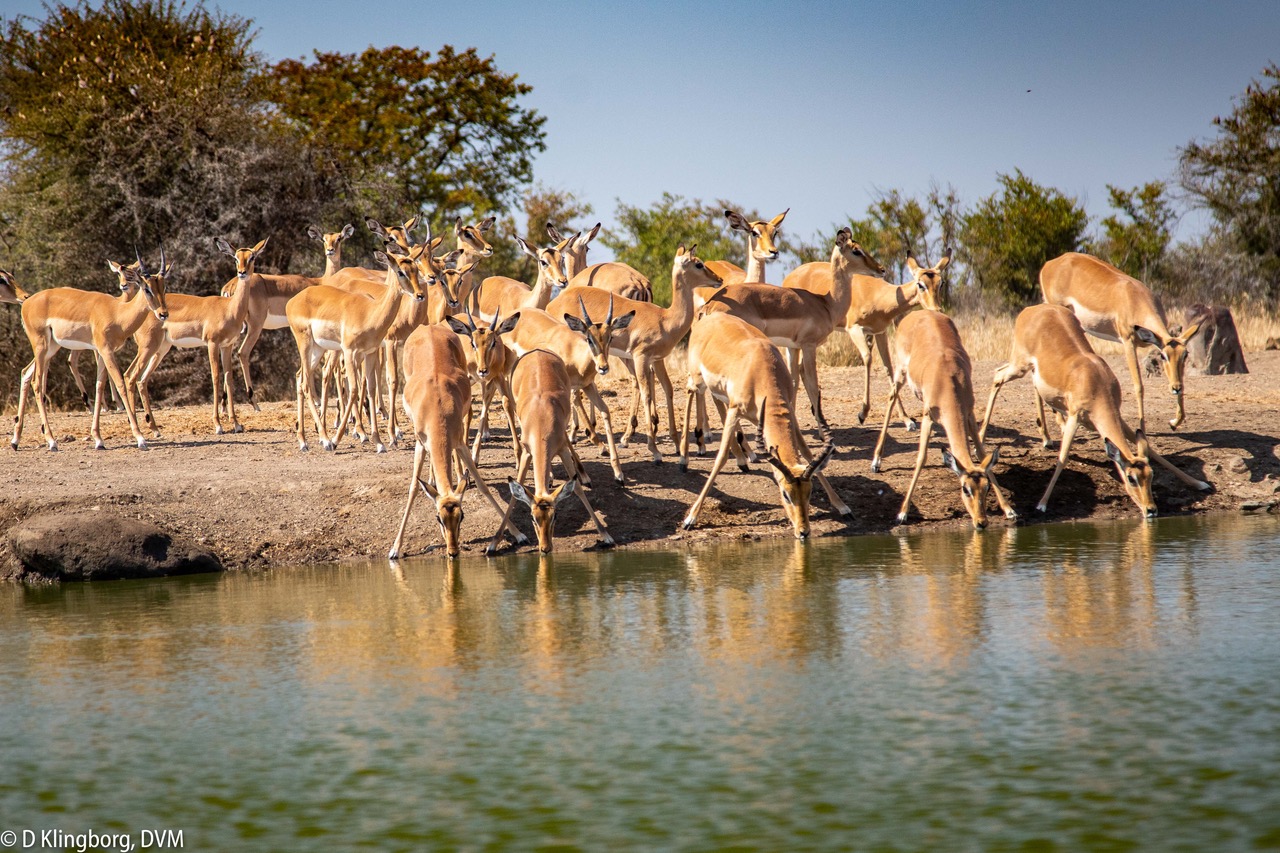
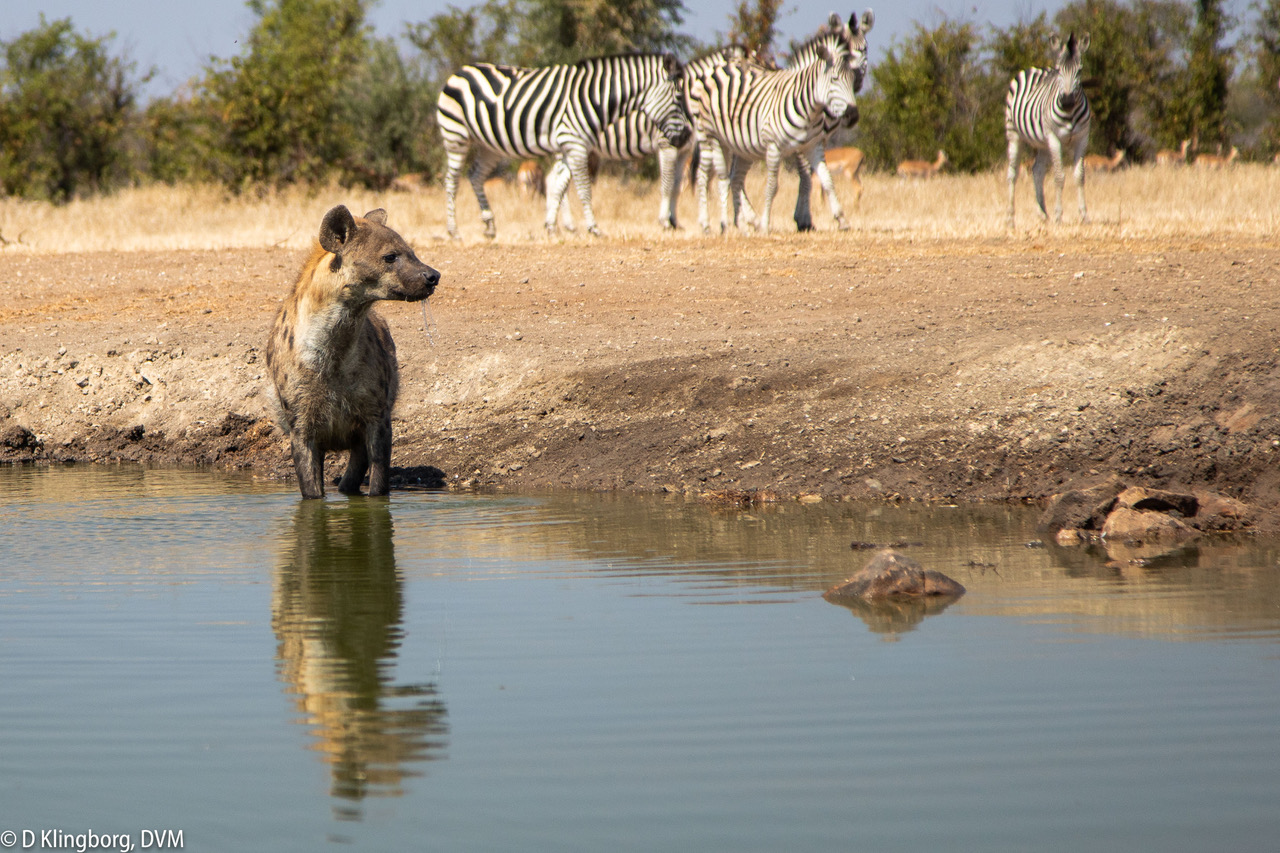

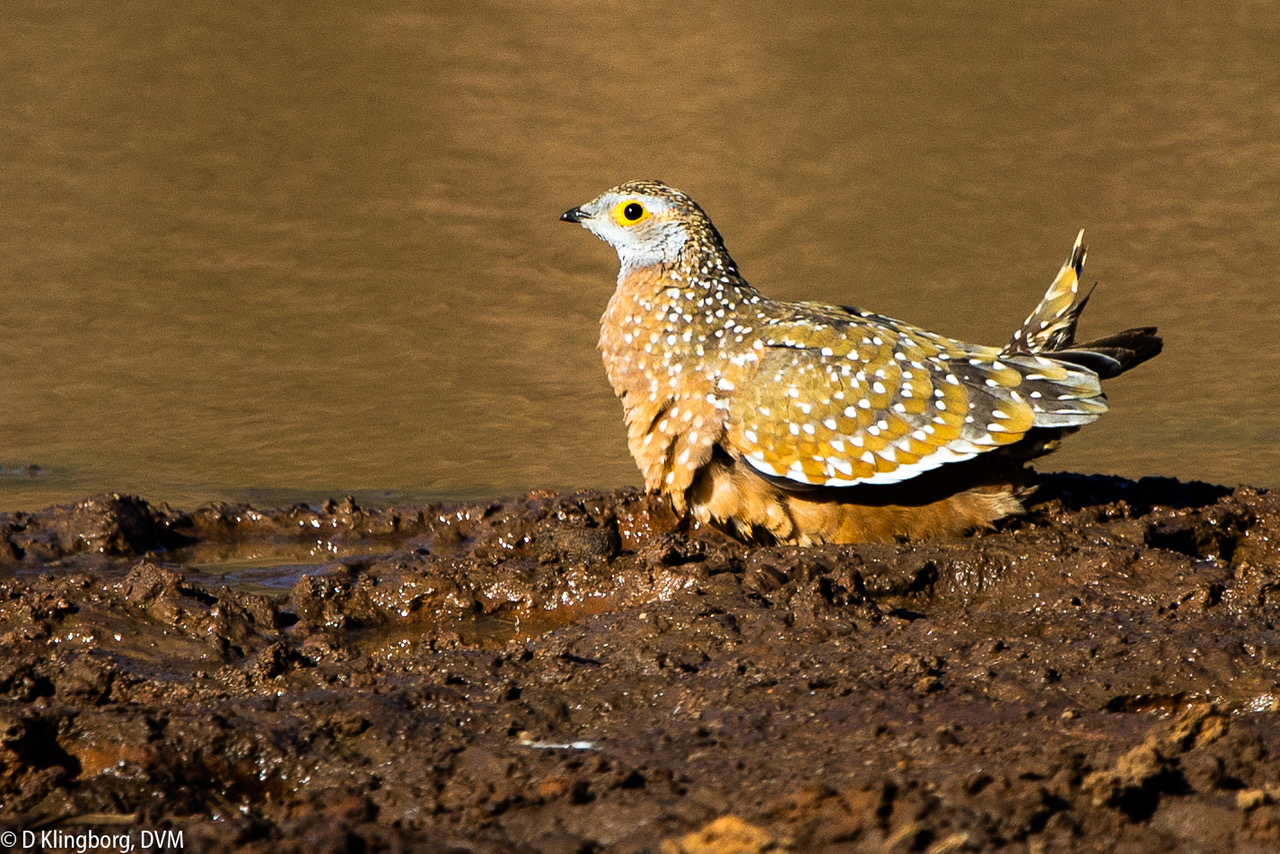
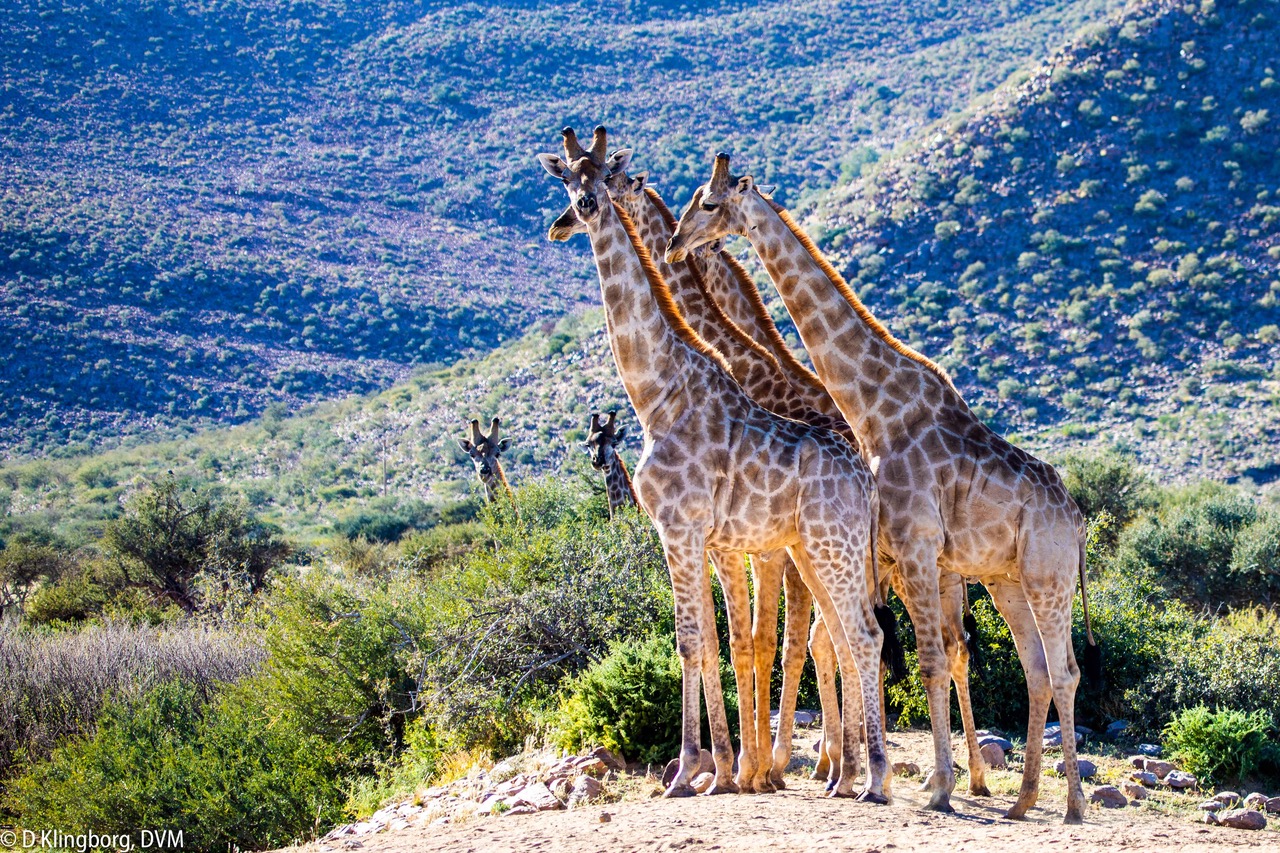
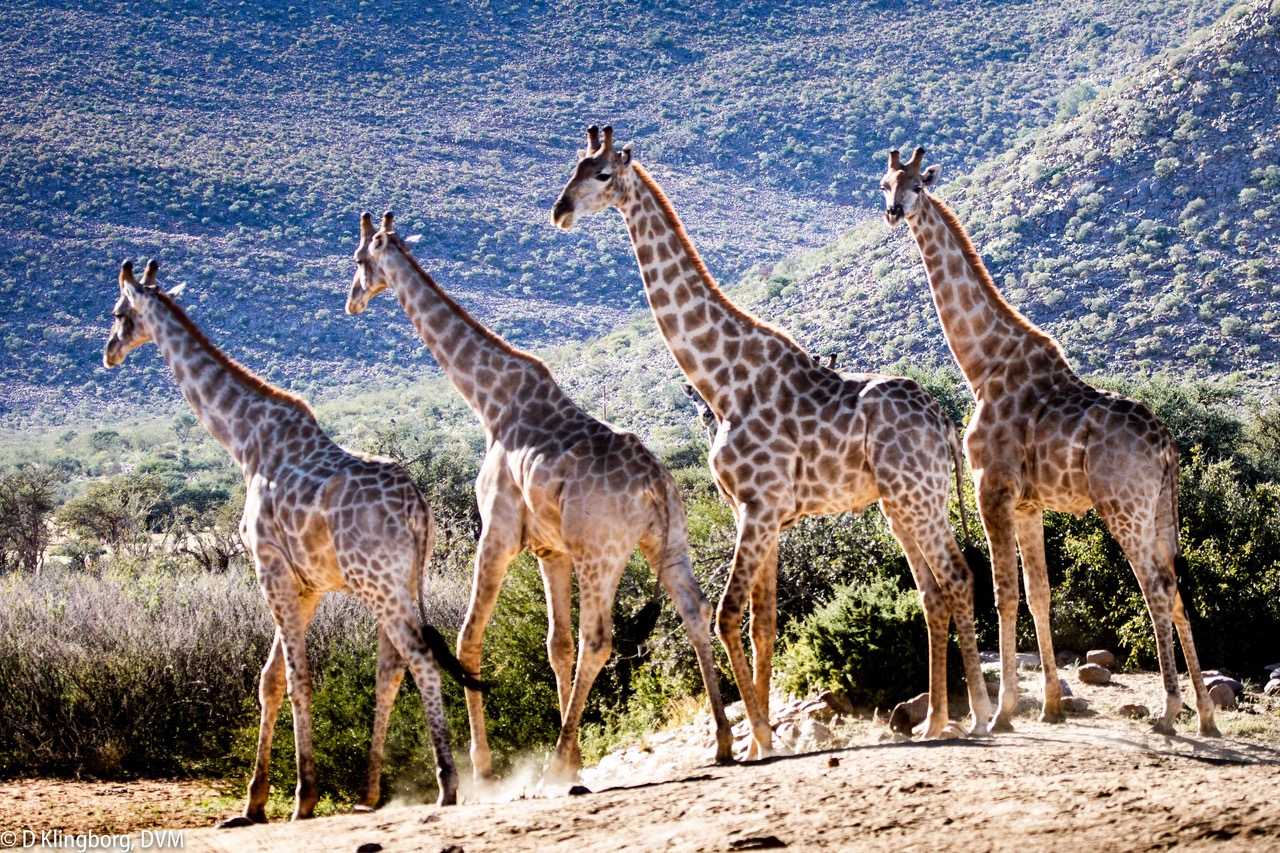
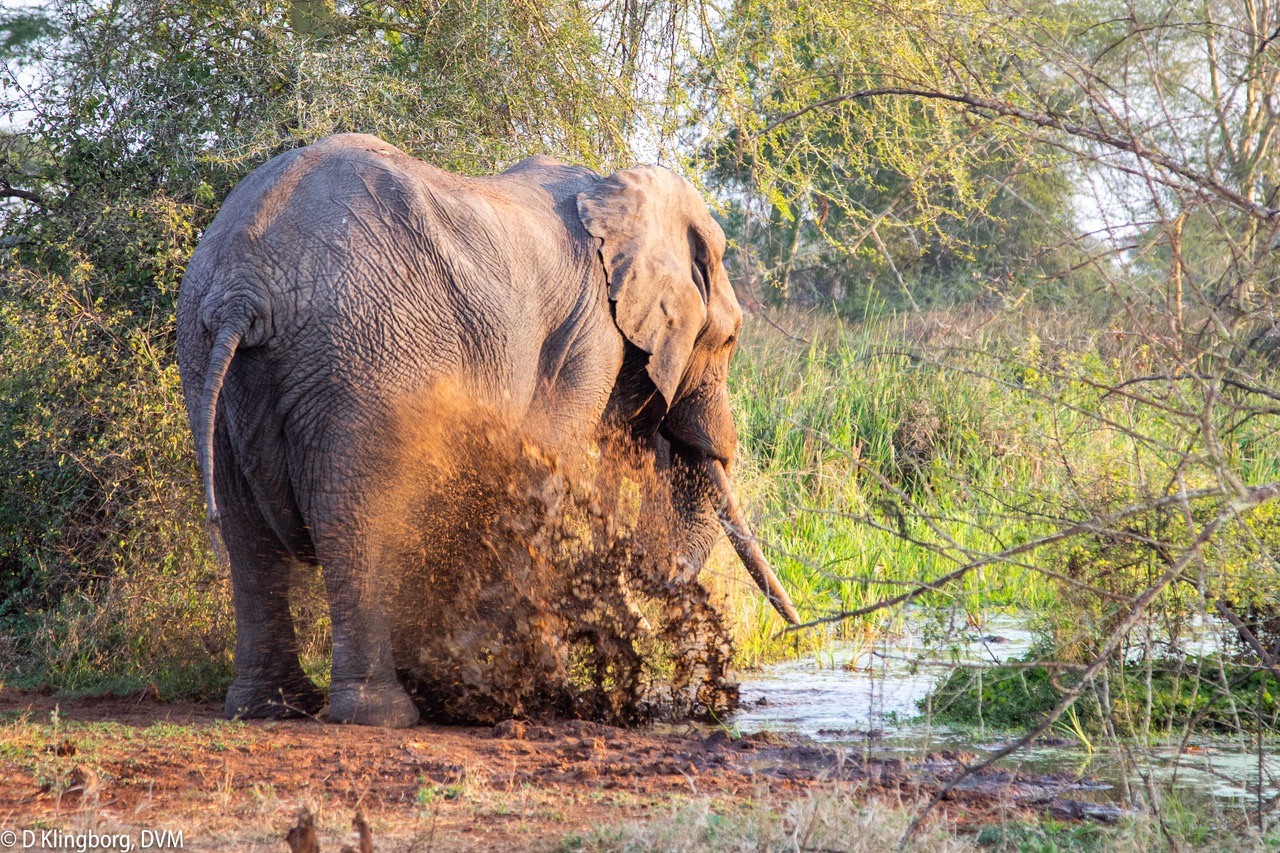
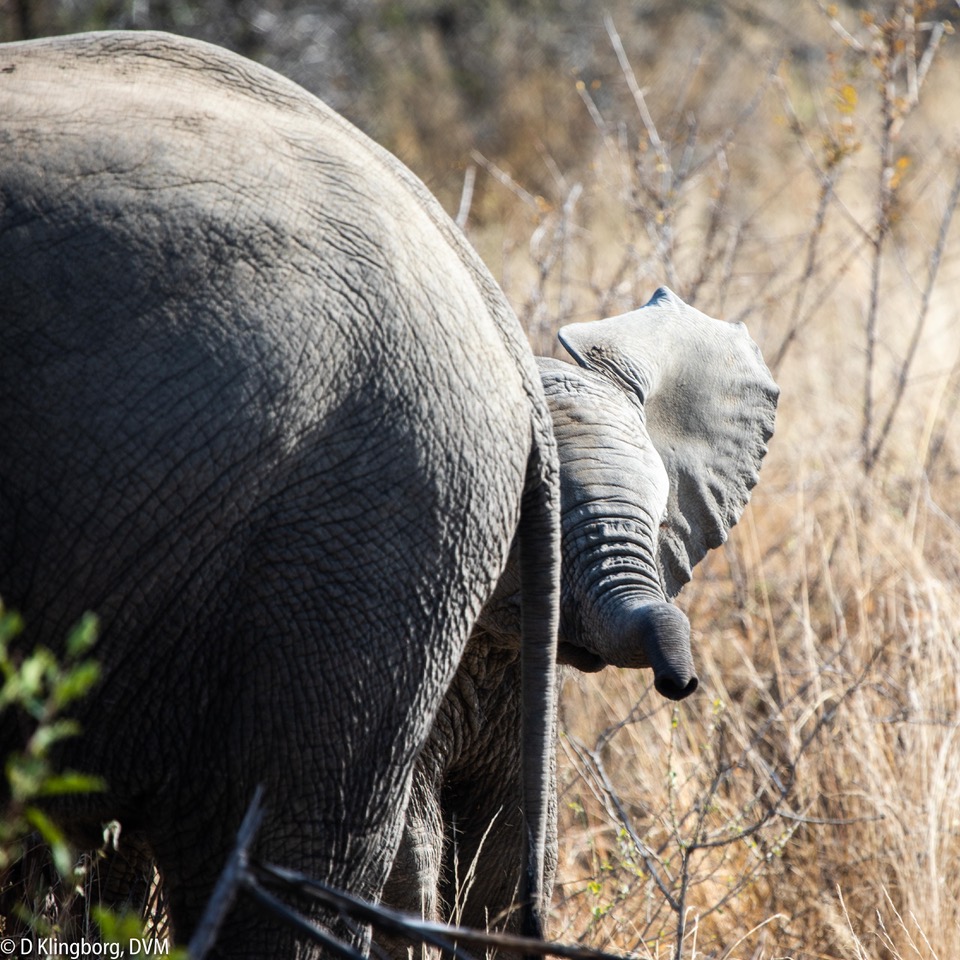
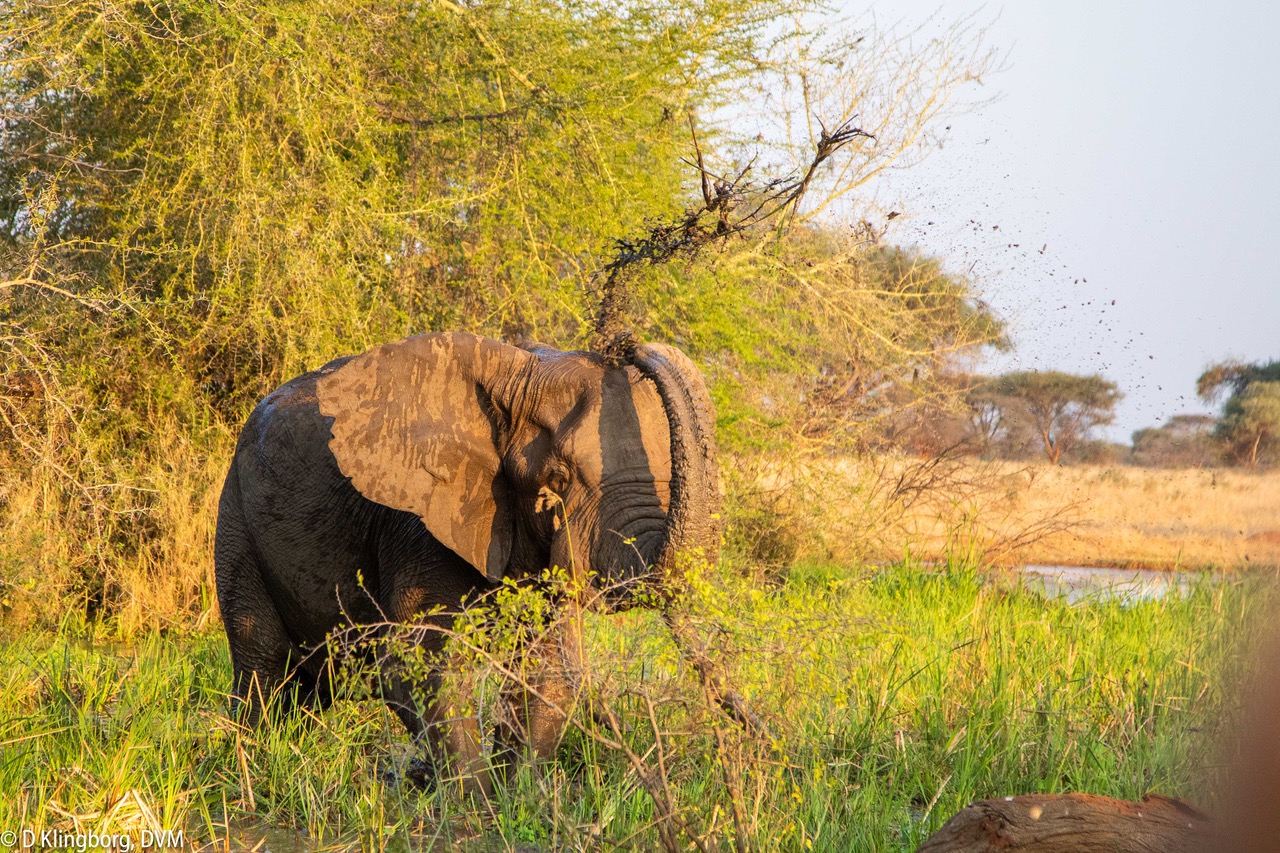
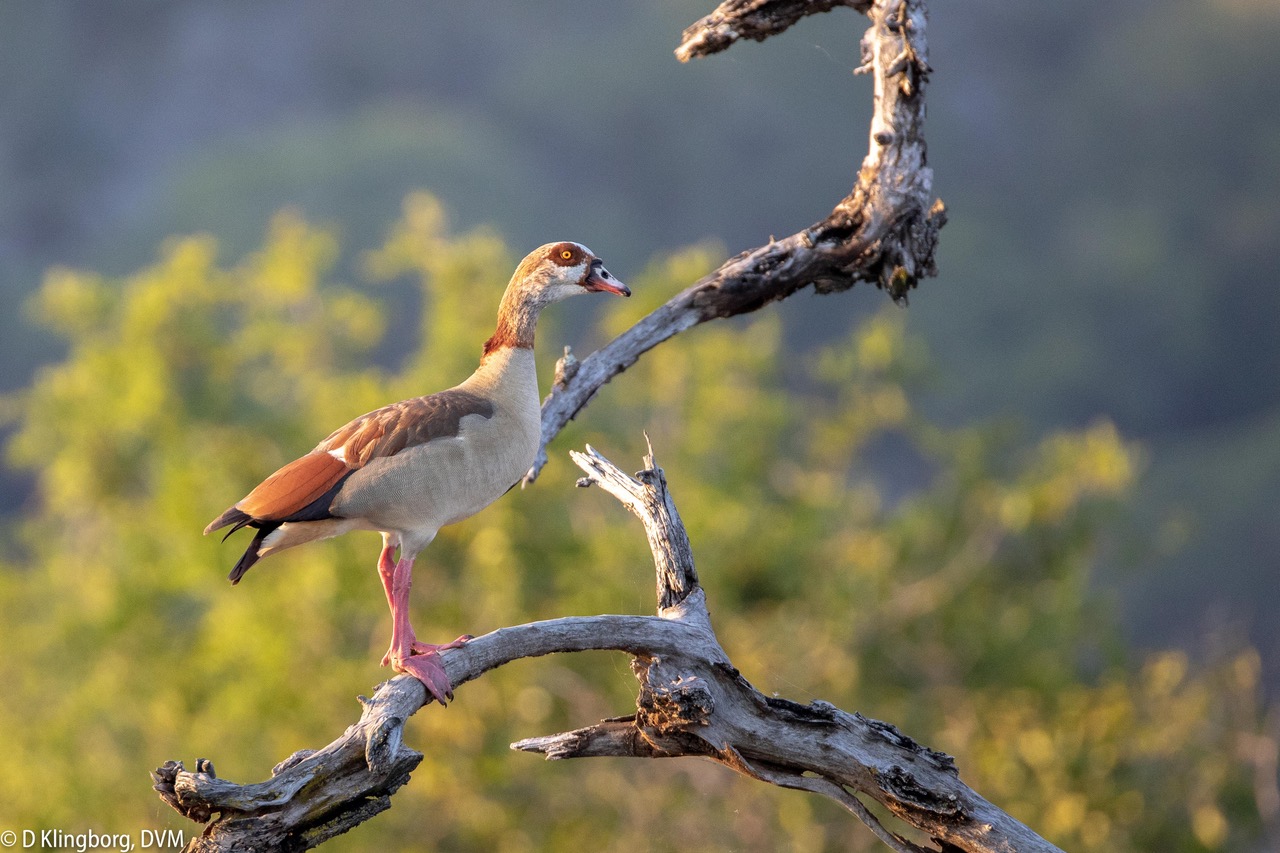
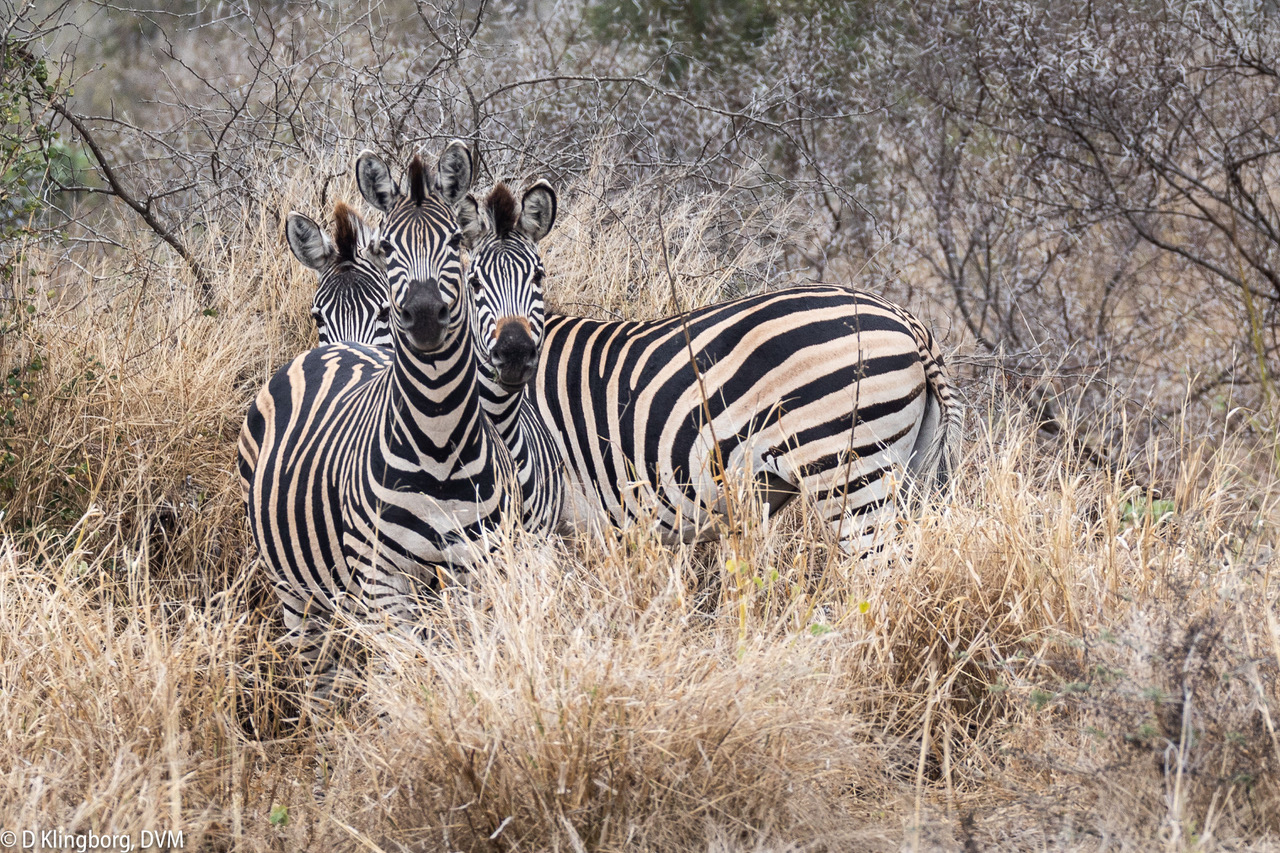

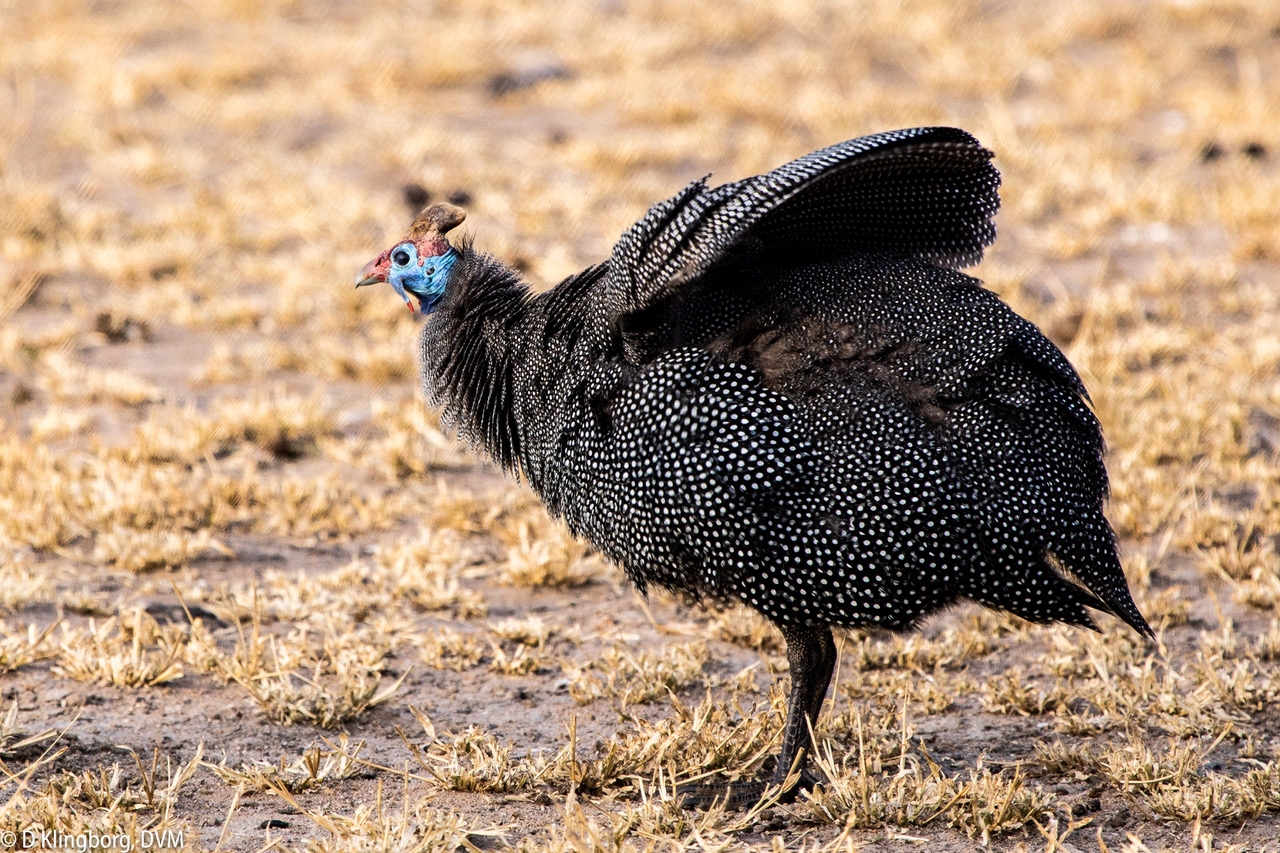
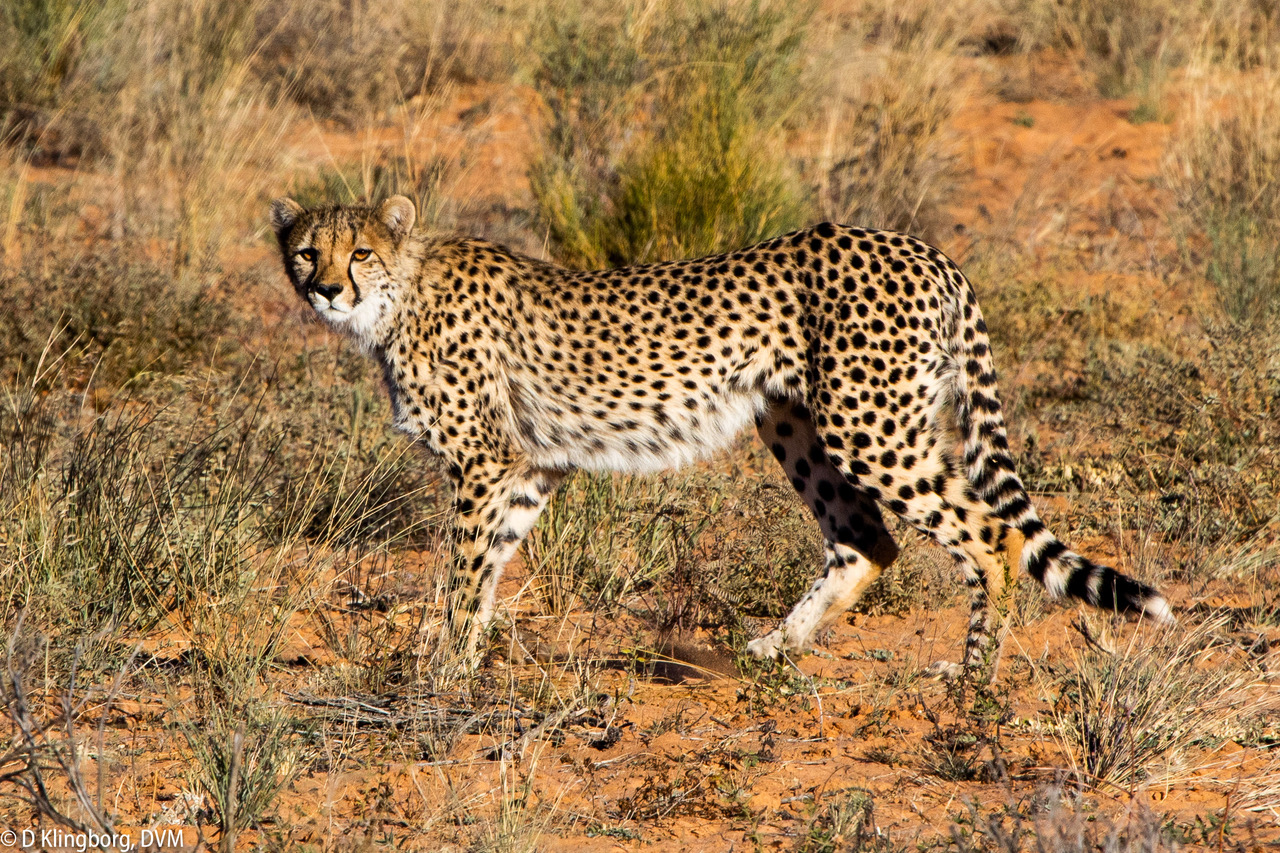

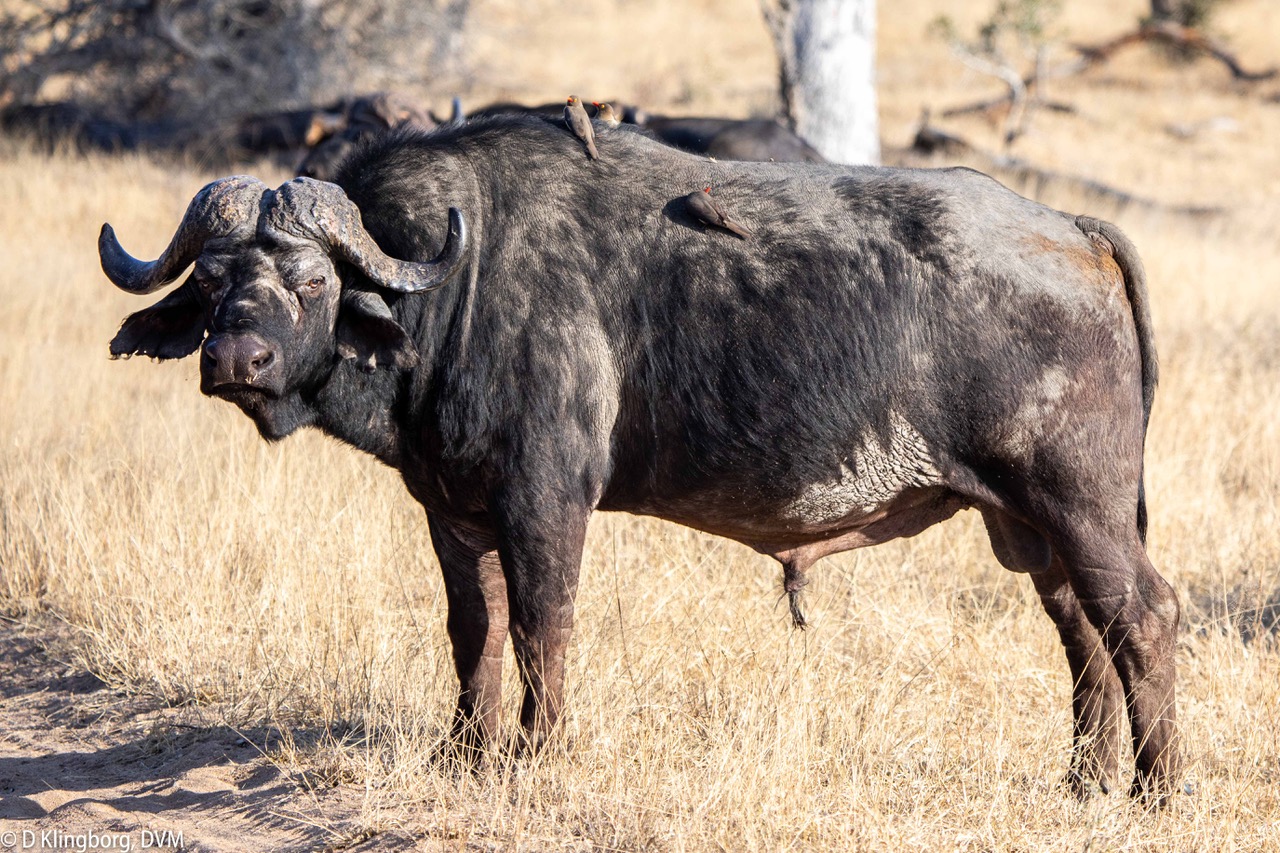
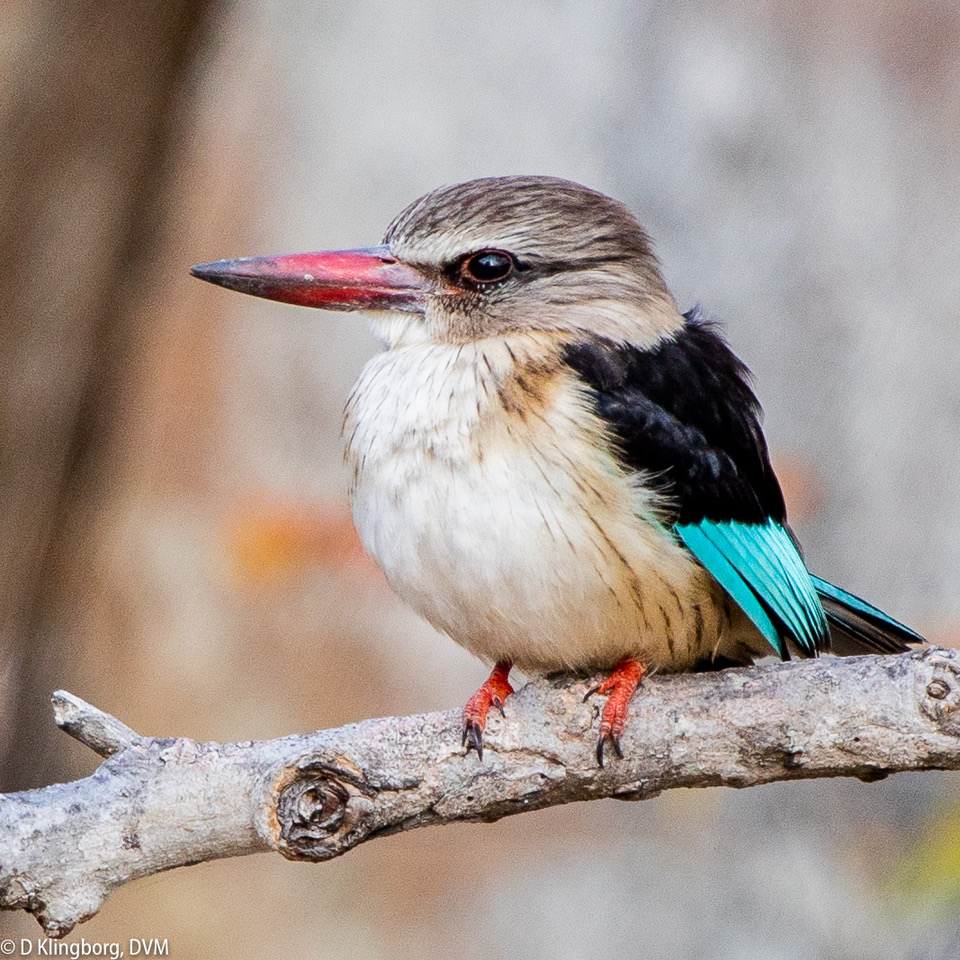

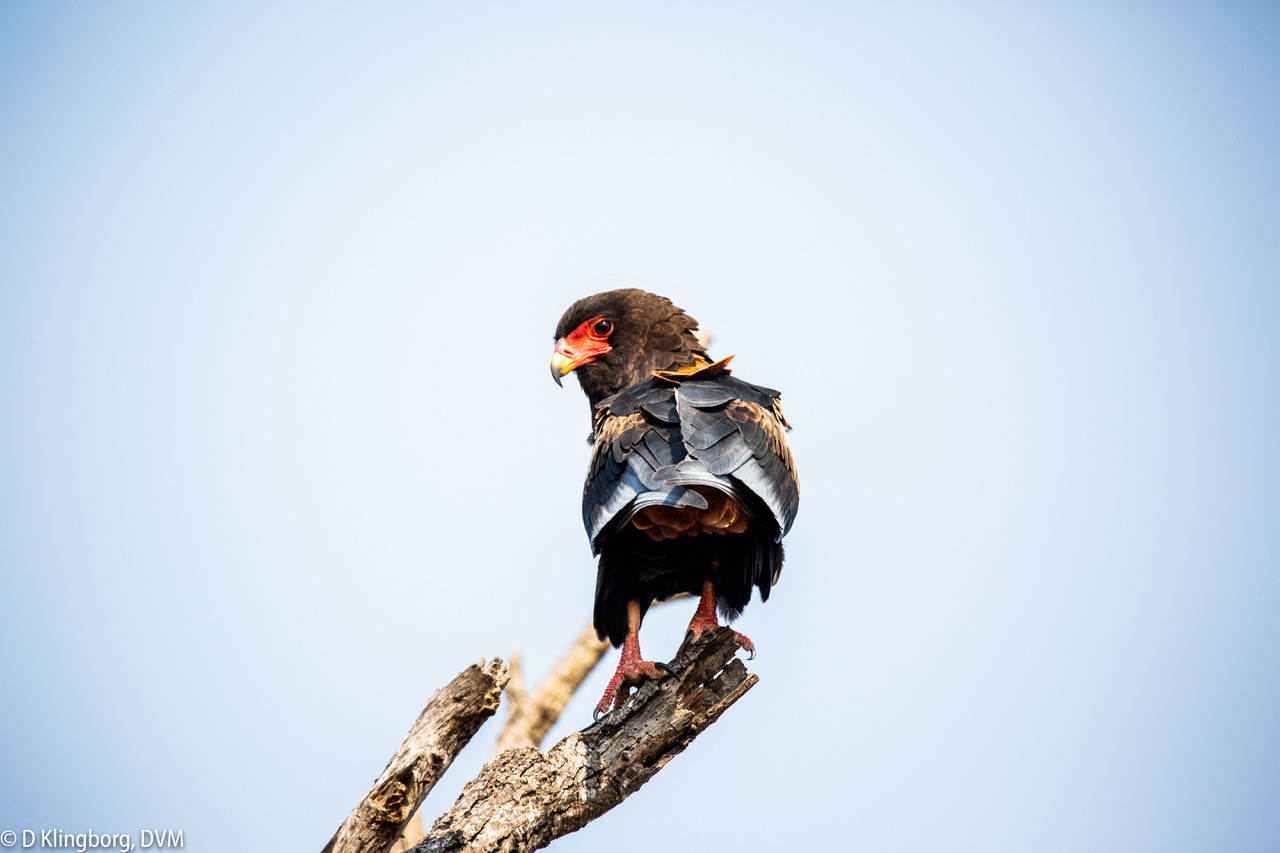
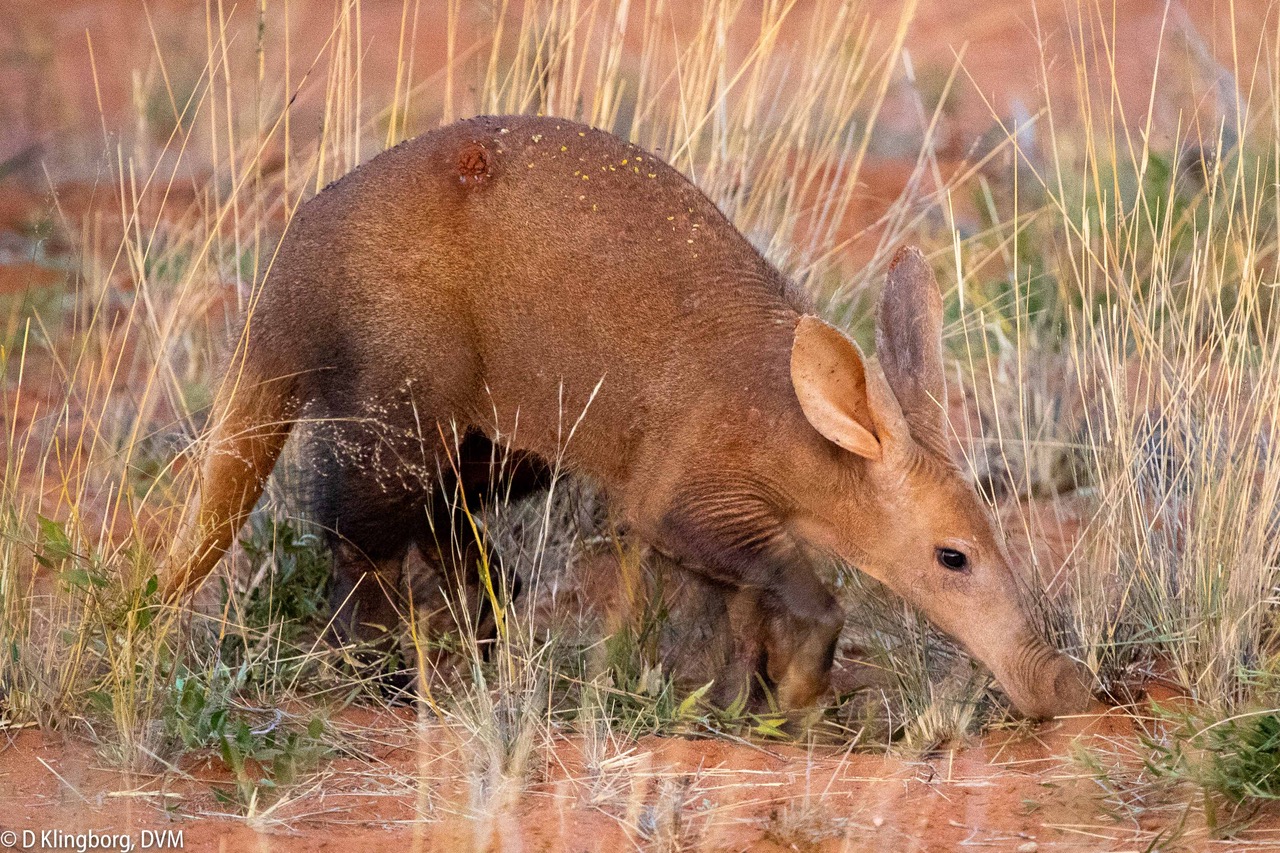
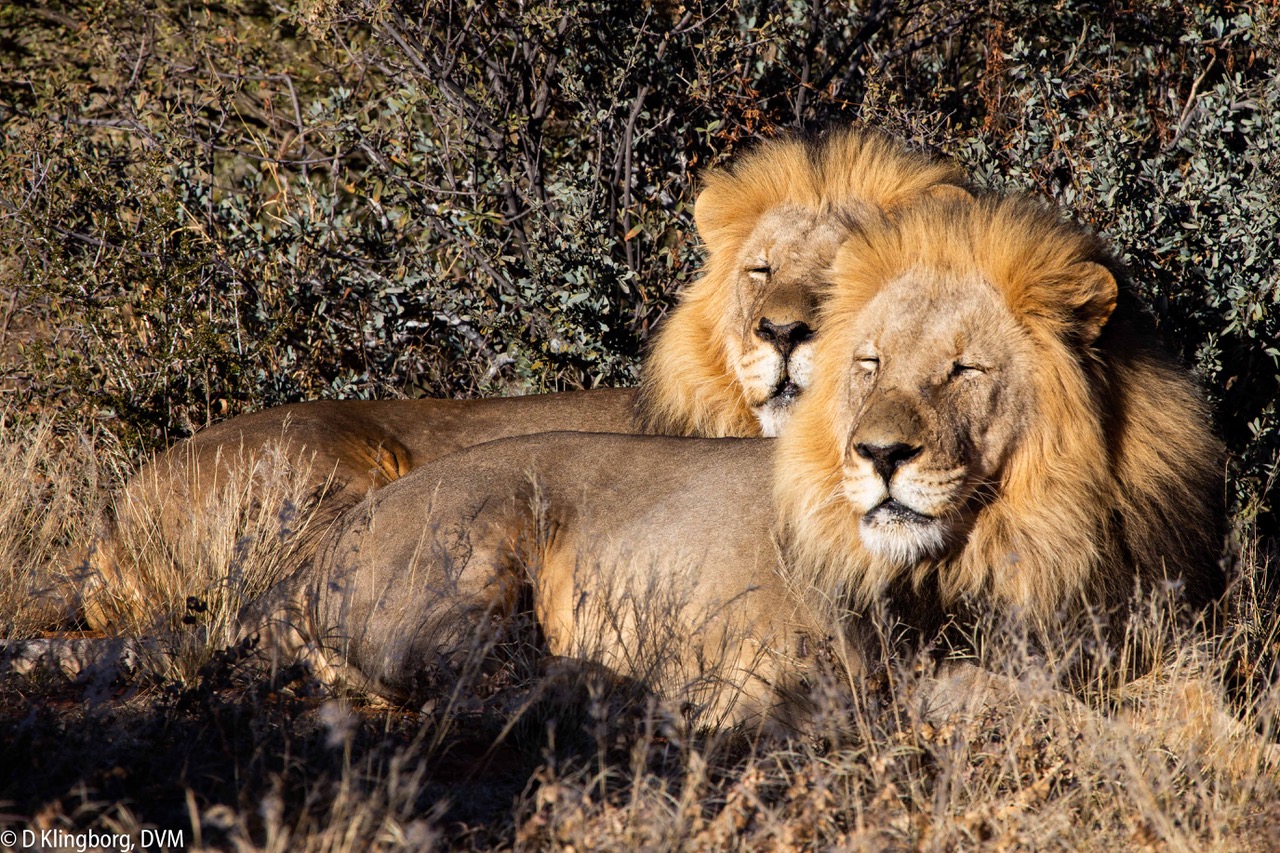
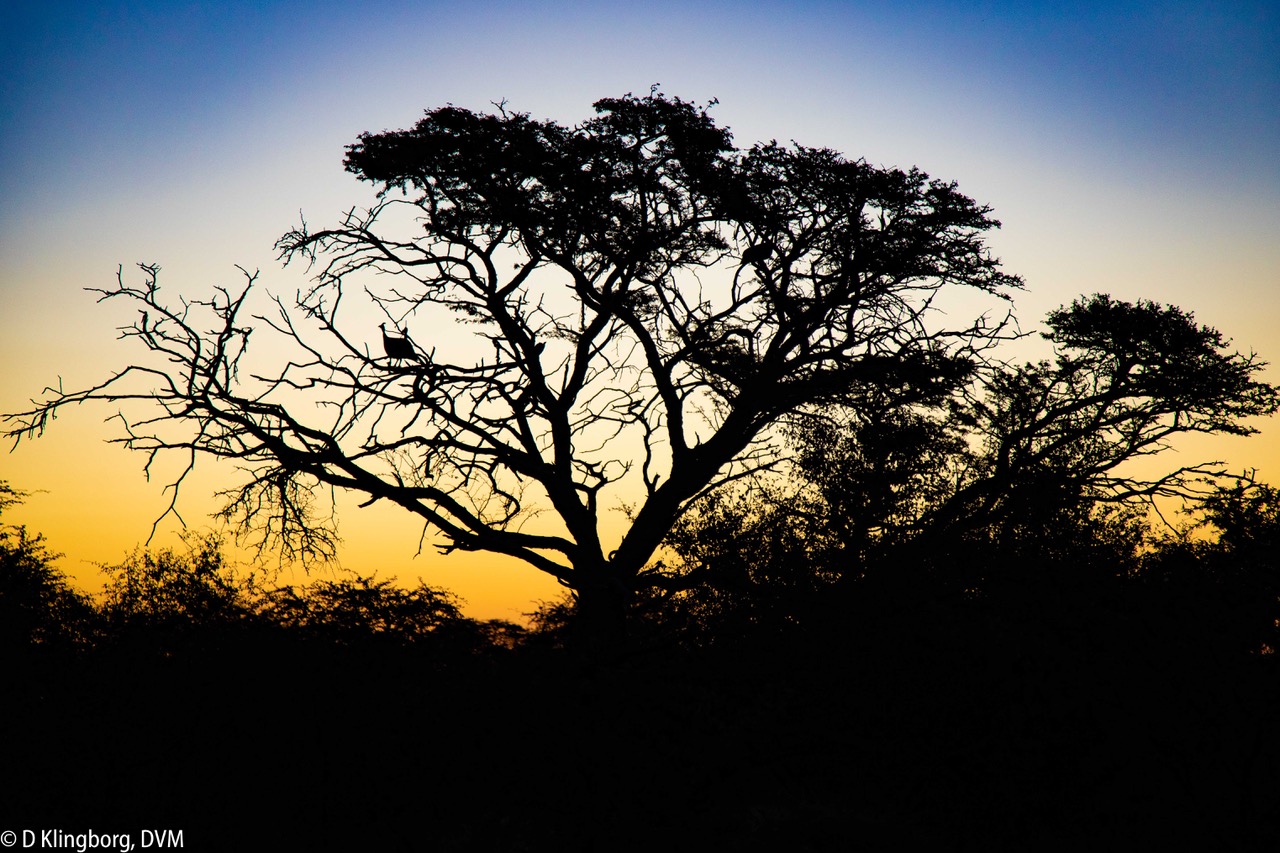
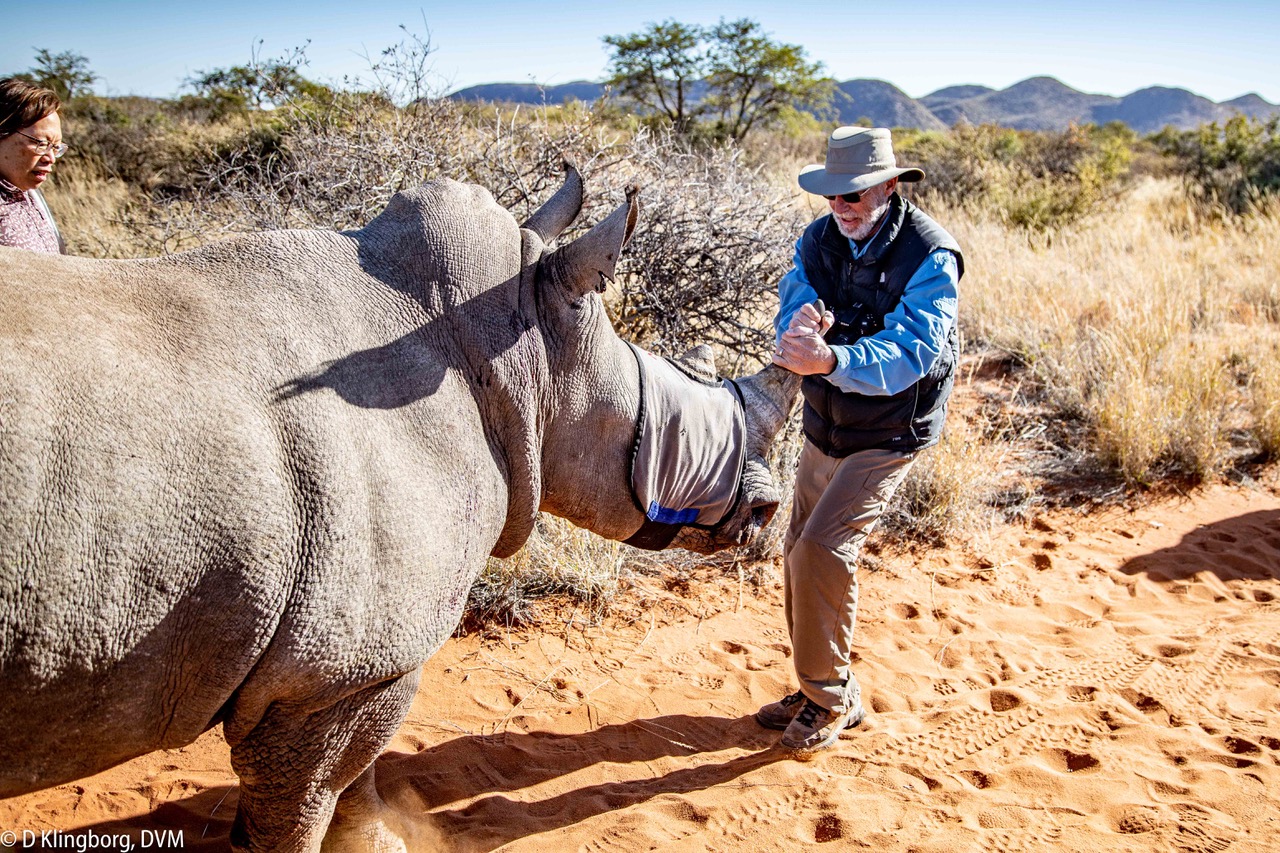
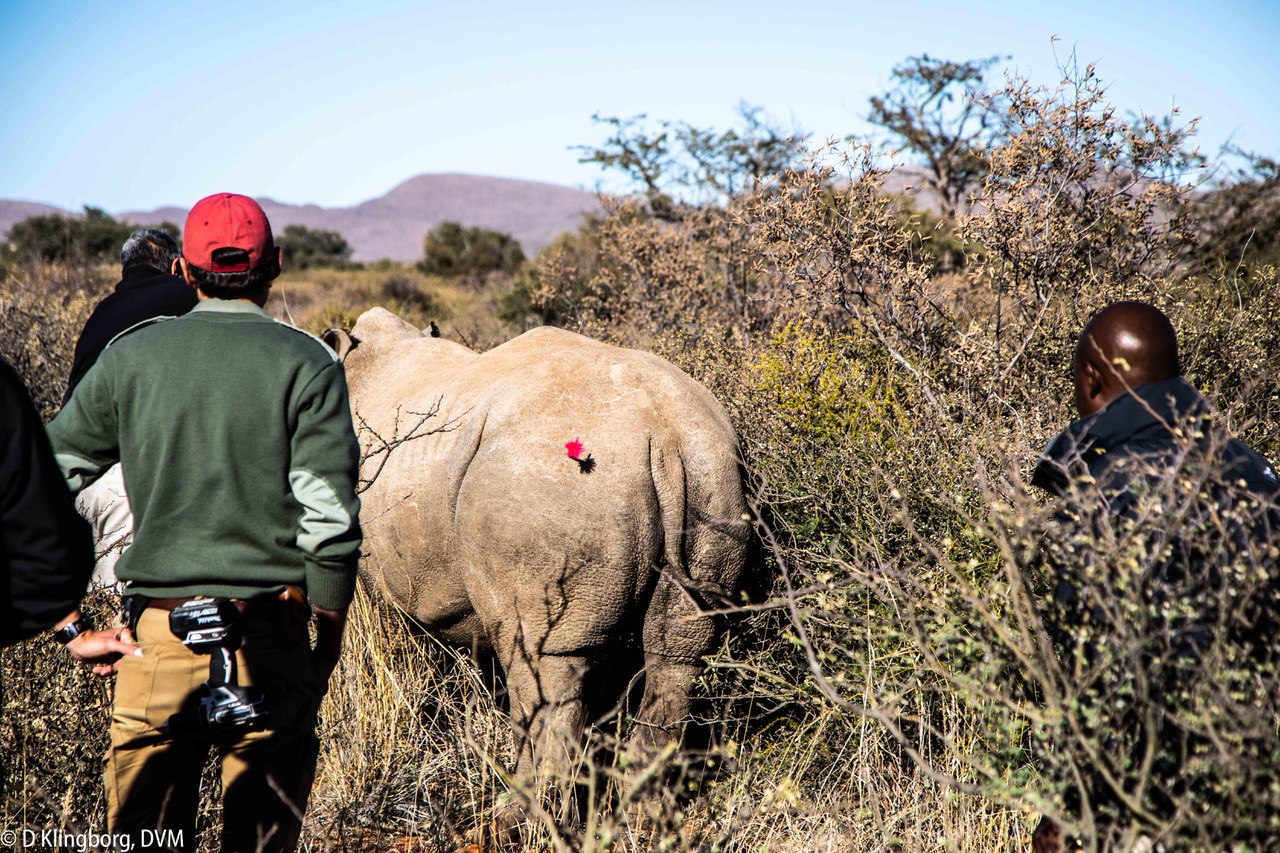


Here's the view out our window at Sabyinyo





The VETS Adventurers at the conclusion of our second Gorilla Trek!
For more information about the veterinary-related trips and continuing education that we offer, go to eduvets.com!






Kaua’I is the wettest of the Hawaiian Islands and is in the form of circle.
The Island can be divided into four areas using a clock face and time to define each area. The North shore goes from about eleven to one o’clock and is green, wet and beautiful. It starts around the town of Kilauea and the Kilauea Lighthouse National Wildlife Refuge. Lots of birds, maybe monk seals and if your timing is right you’ll see some whales. As you travel counterclockwise from one o’clock towards eleven o’clock on the Island you’ll find: gorgeous farm land and wildlife refuges, many growing taro; the elegant Princeville Resort area; then one or two one-lane bridges as you enter Hanalei bay and the quaint town of Hanalei; then many more one-lane bridges as you head to the end of the road at the “wet cave” and a beach campground. The road stops at the north end of the Na Pali Coast.

The second area, the East end, goes from about one o’clock to four o’clock and includes the towns of (from North toward South) Moloaa, Kapaa, Wailua and Hanamaulu. Opaekaa Falls, Wailua Falls and the very beautiful Wailua River are major landmarks in this area. The East End also hosts many public beaches with lifeguards and lots of surfers. Old coconut groves make this area unique on the Island, and an older shopping center currently undergoing renewal, called the Coconut Marketplace, sits in the middle of the coconut grove area between Wailua & Kapaa.
The South End effectively starts at about four o’clock at Lihue, the largest town on the Island and the location of the airport, and ends about eight o’clock around the town of Kekaha. From Lihue you’ll travel south through the towns of Puhi, Koloa, Poipu, Lawai, Kalaheo, Ele Ele (with Port Allen), Hanapepe and Waimea before reaching Kekaha. The best snorkeling and sailing on the Island is along this region. Lihue has a major shopping center with a Macy’s, food stores, as well as other mainland retailers.

As you go south from Lihue to our headquarters hotel you’ll take the turn to the left toward Koloa Town and Poipu soon after going through Puhi. Follow the signs to Poipu. In this area you’ll also find Spouting Horn (a blow hole thrusting sea water into the air associated with wave action) along with local craft kiosks and many examples of the animal mascot of the Island, the chicken (with many roosters strutting their stuff). The National Tropical Botanical Garden is also close to Spouting Horn. Traveling west from Poipu you’ll find the towns of Kalaheo, Ele Ele with Port Allen (the major sailing and fishing port), Hanapepe, Waimea and the access road to Waimea Canyon State Park (the Grand Canyon of the South Pacific).
The West end goes from about 8 o’clock to 11:30 with road travel only to about nine o’clock (at Polihale State Park and Barking Sands Beach). The Na Pali coast consumes the space between 9 and 11:30 and can only be seen is from a boat or the air. Waimea Canyon is inland, is equally spectacular and well worth the drive.
The world’s wettest spot is in the center of the Island, at Mt. Wai’ale’ale, with over 650 inches of rain per year.

Po’ipu hosts the Grand Hyatt Kaua’i, our headquarters hotel, and is about 30 minutes from Lihue (17 miles, the residents (and we) drive slow in Hawaii). The hotel has a great beach (Shipwreck Beach, is there a better name anywhere?), lovely grounds, adult-only and all age’s pools, a water slide (fun but not insane), a lazy river for floating, and a large salt-water lagoon with sand separated from the ocean for easy water sports. It offers several restaurants, a great bar, superb views from all the rooms, tennis, golf and a huge spa. I visited all the room styles offered and they are all spacious, well appointed and provide wonderful views (65% offer ocean views). All guest rooms have private lanais, are 600 + square feet and have superior bedding. Dining options in the hotel include the highly rated Tide Pools, Dondero’s Italian and a variety of more casual dinning options.
The Po’ipu area is evolving, with a new small shopping center hosting a variety of shops including about 10 eating establishments. The older Po’ipu Shopping Village is still there but Roy’s restaurant has moved to the new location under a new name and offers a new menu. The old Village still has a Starbucks, a Puka Dog and some other more casual restaurants plus a variety of shopping (as of our visit in March).

At the new location (The Shops at Kukui’ula), just a few minutes by car from the hotel and maybe a mile beyond the older shopping village, you’ll find restaurants including: Merriman’s Fish House; Tortilla Republic; The 1849 Eating House by Roy’s; Bubba Burgers; Josselin’s Tapas Bar & Grill; Merriman’s Gourmet Pizza and Burgers; Savage Shrimp; The Dolphin Restaurant, Fish Market & Lounge; Tortilla Republic Grill & Margarita Bar; and Lappert’s Ice Cream and Coffee. There is also a market with farm to table organic foods and many shops and galleries. This new shopping area hosts a Farmer’s Market on Wednesdays from 3:30 to 6:00 pm with live music and beer and wine and a local music night Fridays from 6:30 to 8:30 pm.
The Poipu Bay Golf Course is adjacent to the hotel and is one of the best on all the Islands.
During our site visit in early March we sat on our lanai and watched many humpback whales swim by, blowing frequently, breeching occasionally. They breed and calve here and spend much of the rest of the year in Alaskan waters. Depending on when winter hits Alaska we could see them during the meeting.


This amazing adventure involving the Na Pali coastline is a possible excursion options for your pleasure.
o A dinner sunset sail using a sail or motor boat

Cap’n Andy, our operator, has provided excursions for our meetings for many years and has been selected based on the quality of his people and equipment, safety, quality of food and overall value.
Bev and I think of the Na Pali Coast is one of the wonders of the world and something we enjoy revisiting time after time. You never know what kind of wave action, wind and sky you’ll get and we’ve been out and had a great time in all kinds of conditions.

More often than not we’ve seen spinner dolphins on our way out or back, and usually have had dolphin pods running along the boats. Obviously their presence is beyond our control; however our luck in the past has been exceptional. It’s especially wonderful to see them jump and spin. The prevailing opinion is this behavior helps rid them of external parasites, but as we look at them it just seems to be for plain fun.

The cave exploring in the raft is amazing. How much you get to do depends on the sea conditions but it’s a real thrill to move in and out of those areas as the sea rises and falls. Your captain will be very experienced and only attempt what is safe.
Be prepared, the ride out and back in the raft isn’t the most comfortable on your back. As you go over the waves it can be a bit pounding and you’re sitting on the sides of the raft more or less facing the center. I found I needed to put my outside leg over the side and sit facing more forward to keep my back relatively happy. If you have back issues I’d recommend the sunset sail (the easiest) or the snorkel (much easier than the raft). The bigger boats can’t get into the caves like the raft, so the experience is different, but anything you do on the Na Pali coast will be a one-of-a-kind adventure you won’t ever forget.
The snorkel areas depend a lot on weather and can be amazing or sometimes only just “wonderful”. Exploring the reef is quite an experience and don’t be surprised if you see critters you don’t often see while snorkeling elsewhere.

If conditions allow the raft will land you on a beach (where an ancient 800 year old Hawaiian village once stood) and allow you to eat on land and then snorkel the nearby reef.
In all cases the late afternoon/setting sun on the Na Pali hills should provide AMAZING photo opportunities. I put my camera in a plastic bag for much of the ride out and back, but when the light was right it was around my neck and getting a good workout.

No transfers from or to the hotel are provided for these tours, so you’ll need to leave early for check in. The location is Ele Ele and they’ll transfer you to Port Allen to get on the boat. This is at least 35 minute drive if you know where you’re going and add 15 minutes if you don’t. Cap’n Andy’s is located in the building below the McDonald’s in Ele Ele.
If we're very lucky you may find some whales while we’re there as well. We hope so!
Thar she blows.. .
Don Klingborg, DVM

A guided tour taking about four hours and covering 23 miles of back roads and trails through tunnels, forests and farm/range lands. Includes visits to a waterfall along with beautiful landscapes where parts of Hollywood productions including Jurassic Park, Pirates of the Caribbean, Seven Days and Seven Nights, among others, were filmed.
Wear a swimsuit and water-friendly shoes/sandals, and bring a towel. They’ll provide a freshly laundered shirt and riding shorts to absorb most of the dust and some of the mud. You’ll also receive a helmet, goggles and a great bandana that can serve as a mask over your nose and mouth. They have dressing rooms, toilets and lockers at the starting (and finishing) point.

Depending on weather you may experience splashing water, mud, dust, debris and other fun stuff. I experienced a “mini” exposure while doing a site visit recently and made it through unscathed wearing one of their shirts over my clothes and camera. If I were on the full trip I expect I would have come away considerably more dirty.
I don’t recommend taking expensive cameras on this trip – very bumpy and potentially very dusty, wet or muddy. Their motto is “Do Something Dirty” and they mean it (in the nicest way). Plenty of pretty things to photograph, but phone photo should meet your needs.

A deli lunch with a local snack and beverage will be provided and you’ll get some history, geography, geology and Hollywood information from the guides while on your journey. You’ll have time to frolic in a freshwater mountain pool at the base of Mount Kahili before returning to the starting point at the old sugar mill.

They provide a variety of ATV’s. The Mud Bunny is a single passenger vehicle (the driver) for those going solo. The Mud Bug is for a driver and passenger, and the Ohana Bug is for a driver and 3 passengers. There are two types of Mud Bugs available, the fancy and colorful model imported from China, and the plain utility models that are imported from Israel.
My experience was in the Israeli model and it was a blast. Noisy and a bit dusty, it handled the dirt roads and trails beautifully and was surprisingly comfortable. Be forewarned, however, this in not recommended for people with bad backs or those concerned about keeping clean and tidy. Should you be pregnant I strongly suggest a different excursion.

Transfers from and return to the hotel are included, and only about 10 minutes away so your time is spent playing rather than driving to and from the location.
Do Something Dirty!
Don Klingborg, DVM

During our "free day" of the conference, we decided to make the drive over to Waimea Canyon. It was a scenic drive on good roads. As we left the east side of Kauai and drove west toward the park, clouds seemed to loom overhead. We vowed not to be beaten by the weather, even though we had (unwisely) left our jackets back at the hotel.

Driving up to the Lookout Point, we could appreciate the altitude (over 3600 feet) and panoramic views. As the driver, I was thankful when we arrived at the parking lot, so that I could take in all of the scenery. There were nice restroom facilities there, too.
The rust colored peaks and valleys look like they were newly formed. From the high point of the Lookout, we felt like we were at 'bird level' as we watched our feathered friends fly and soar through the valley below.


We decided to hike further down the road, and were intrigued by some of the native plant life. These small trees (picture below) reminded me of something I'd seen in a Dr. Seuss's book.

On the way back, we stopped in a small town at the foot of the State Park and found an ice cream place. It was a great way to spend part of our day off!

The Anara Spa is located adjacent to the fitness center, and offers all the amenities in its 45,000 sq. ft.

The fitness center is spacious with lots of equipment scattered among a few connected rooms. Flat screen TV’s, the latest in cardio and strength-training equipment and available to hotel guests 24 hours a day. They offer treadmills, cross trainers, upright and recumbent bikes, free weights, strength machines, stability balls, stretching mats, resistance tubing, jump ropes and weighted bars.

In the spa ancient healing traditions combine with island botanical essences to inspire lokahi—balance and harmony of body and spirit. Massages, body treatments and facials are offered in elegantly appointed treatment rooms, each opening onto its own tropical garden. Unwind in the dry sauna, steam showers, or relaxation room. Swim in the lap pool, or soothe those gnarly muscles in the Jacuzzi. Water, tea, fruit and nuts are freely available. You may also order a light lunch from a menu.

Following your treatment, shower in the secluded outdoor lava showers then enjoy a full compliment of toiletries, including sunscreen, body lotion, and deodorant. There are blow driers and hairbrushes (each one sealed in plastic) as well as styling gel. With any purchase of a spa treatment, you have full use of the spa for that day.
I had a 50 minute massage followed by a 50 minute facial. The masseuse and the esthetician were both very professional and experienced. They graciously personalized their treatments to address my requests and the result was one contented wet noodle.
Bev Klingborg
“Holy Zip!!”
This is a great course for both the novice and the experienced “zipper”.

The equipment is excellent, the guides are well trained and they provide a very useful “ground school” at the starting point. I appreciated the attention to safety, the excellent launching and landing platforms and the unique options to match your experience with your preferences.
The “Flyin’ Kaua’iian” harness allows you to be hands and feet free, comfortably suspended and “Flyin” like Superman. Another option is the “Aerobatics” harness that allows you to “Fly” upside down, backwards, spinning, in a spread eagle and starfish, and maybe in some other positions? “Tandem” allows you to “Fly” with your kids (7 years and older) which is a great way to introduce them (or have them introduce you) to zipping. Some of these options require a $20 upgrade fee and you can decide at the ground school.

Novices will want to ask for the rigging with the handlebar pulleys, allowing them more control as they fly between platforms.
Offering fantastic views, the course includes eight lines and takes about 3.5 hours to complete. It runs through Hawaiian forests and hillsides with lovely views of the ocean, forest, rivers, mountains and the largest fresh water reservoir on the Island. It includes three of the longest lines on Kauai with “the whopper” being Waita – ½ mile in length.
A snack including a tasty tidbit from Anahola Granola, plus juice and water. Only 12 at a time to minimize waiting and maximize “Flyin’”.
Minimum age for kids is 7 years, and those from 7 to 17 must be accompanied by a parent/guardian. Weight limit is 270 lbs. max for solo zippers, 280 lb. combined weight for tandems. You will have a couple of walks up the hill, each about 400 feet in length, and one is at a 45 degree angle, so low to moderate physical strength is required. Those of you with heart conditions, bone/joint injuries or a bad back should seek out a different excursion. Similarly, those of you who are pregnant are not allowed to participate.

A shirt with sleeves is recommended (no tank tops). Knee length or longer pants, bring a jacket just in case and sturdy CLOSED TOE shoes are required. Sneakers and boots are great. Sandals and Crocks or other slip-ons are not allowed. You can bring a small backpack for personal items. One bottle of water is supplied. You’ll have great still and video photo opportunities, but be sure the camera is secured to your body as they are very difficult to find if they fall.
It’s only 10 minutes from the hotel and transfers are provide from the hotel and the return.
Whether you’re a novice or expert, I think this course has something for you to really enjoy.
Be your own version of a “Flyin’ Kaua’iian”!
Don Klingborg, DVM
One of the best things about mornings-only lectures at a VETS conference is getting to choose your own adventure every afternoon.

After a great time in the canopy thanks to our new friends at Kohala Zipline, we decided check out the town of Kapaau and the surrounding area.
Our first priority was to eat, and we were fortunate to find Gill’s Lanai. Word on the street was that if Gill’s had mahi mahi for the Fish & Chips then it couldn’t be missed.
Now Gill’s Lanai is appropriately named, it’s basically a one room restaurant where you walk inside to order and then dine on the “covered patio” (which, as you undoubtedly know, is the English phrase for lanai in Hawaiian.)

Gill’s Lanai is locatedon the right hand side of Highway 270 in the town of Kapaau. I
don’t want to jinx you, but “you can’t miss it.” As you can see, it’s centrally located.😉
I did have the Fish & Chips– and appreciated that the seasoned coating on the mahi was very light. This wasn’t one of those heavy beer-battered deep fried coatings that made you drink a gallon of water for the next eight days. Instead, Gill’s seasoning on the mahi complemented the moist, tender, flaky and succulent fish beautifully.
Others in the group enjoyed the Fish Tacos, the Lobster Tacos and even a Hot Dog. All meals were prepared fresh and were equally delicious (even the hot dog was great.) I also enjoyed a mango smoothie, which was incredibly refreshing on a warm Hawaiian day. There are no pictures of the food because: 1) I think that posting pictures of food can be annoying, 2) it’s food– it really can’t be appreciated until you taste it, and 3) we were hungry.
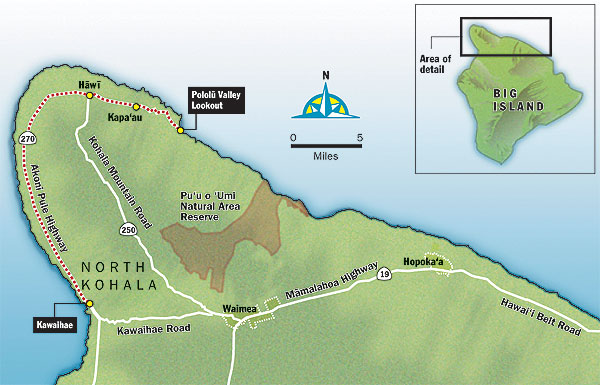
After lunch, we continued the journey to the Pololu Valley Lookout . . . just a few miles further down the road in North Kohala.
It was a scenic drive made more interesting by glimpses of the untamed Big Island coastline and the occasional home, barn or church.
At the end of the road, you’ll find a parking lot and the Pololu Valley Lookout. Turn to the right and you’ll see that the Pololu Valley looks as though it was carved out of the surrounding jagged rock by a giant plow.

Look to the left, and you’ll notice that the Pololu Valley leads straight toward the ocean. From this vantage point, there is a steep hike down to the water below, if you should wish to take it. I followed the instructions, and since this is the “Lookout” point, I chose to look out and not hikeout. Rumor has it that the black sand beach below is gorgeous, but swimming there is strongly discouraged.

Ah, another glorious afternoon in Hawaii. Now, it’s time to head back to the hotel and drink a Lava Flow!